Byzantine Empire
description: Roman Empire during Late Antiquity and the Middle Ages
199 results
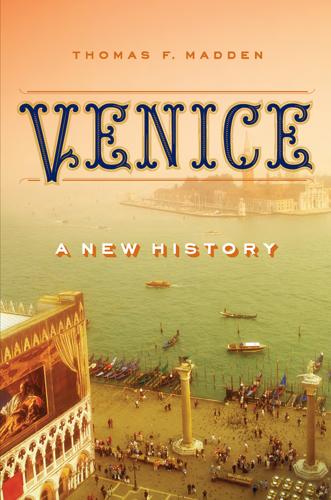
Venice: A New History
by
Thomas F. Madden
Published 24 Oct 2012
Venetians were not much affected by this struggle between church and state—at least not in the eleventh century—but a persistent weakened Byzantine Empire spelled economic trouble for them. Venice’s prosperity was built on a peaceful Adriatic and profitable trade in the East. The former was essential for the latter. The emboldened Norman leader in Italy, Robert Guiscard, threatened both. Like William the Conqueror, Robert longed for a grand conquest of a new kingdom, and his attention was naturally drawn to the wounded and weak Byzantine Empire. The seat of imperial power and the richest city in the Western world, Constantinople seemed like the burial goods of a dying world.
…
During the summer of 1147 a fleet of Normans sailed across the Adriatic and captured the Byzantine island of Corfu. From there they proceeded to plunder the Greek coast with little opposition. Once again the Normans were poised to invade the Byzantine Empire, and once again the emperor in Constantinople turned to Venice for help. There was never any question that the Venetians would oblige. Merchant families, like the Dandolos and the Polanis, had an enormous interest in a stable and peaceful Byzantine Empire. A Norman conquest of Greece or Constantinople would be economically and strategically cataclysmic for Venice. The son of John II, Emperor Manuel I Comnenus (1143–80), hastily sent off a chrysobull in October 1147 confirming all of Venice’s commercial privileges.
…
CHAPTER 11 DEATH OF A PARENT: THE FALL OF CONSTANTINOPLE AND THE RISE OF THE OTTOMAN TURKS The first Venetians were Roman citizens, refugees of the empire’s collapse in the West, and loyal subjects of its emperors, who still reigned in Constantinople. The Byzantine Empire was in every way the parent of Venice, and as the centuries passed, the child grew to independence, maturity, and strength. There were, of course, quarrels, but Byzantium and Venice were simply too closely related to forever go their separate ways. By 1400 the Byzantine Empire, then over a thousand years old, had grown withered, weak, and sick. The Republic of Venice, approaching the pinnacle of its own power and glory, was forced to grapple with the painful realities of the decline and death of its parent.
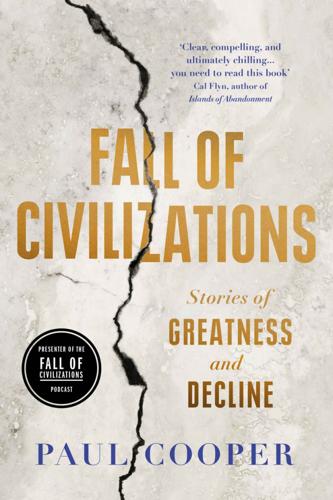
Fall of Civilizations: Stories of Greatness and Decline
by
Paul Cooper
Published 31 Mar 2024
The conquests of Justinian, though remarkable, were short-lived. The Byzantine Empire simply didn’t have the resources to maintain such a large empire for any length of time. The Gothic wars drained its wealth and distracted its military forces. Meanwhile, the 540s brought the first known outbreak of bubonic plague in west Eurasian history: the so-called ‘Plague of Justinian’. This pandemic would kill anywhere between 25–100 million people over the next two centuries. Justinian is even reported to have contracted the disease, although he was one of the approximately half of all people who recovered. The plague weakened the Byzantine Empire at a critical point and, in 568, the Germanic people called the Lombards invaded Northern Italy, defeated the small Byzantine army left there, and established their own kingdom.
…
In: Geographies of Encounter: The Making and Unmaking of Multi-Religious Spaces. Switzerland, Springer International Publishing, 2022, pp. 99–112. Raoult, Didier. Paleomicrobiology: Past Human Infections. Germany, Springer Berlin Heidelberg, 2008. Rautman, Marcus Louis. Daily Life in the Byzantine Empire. London, Bloomsbury Academic, 2006. Rodgers, Kelly. The Byzantine Empire: A Society That Shaped the World. United States, Teacher Created Materials, 2012. Sarris, Peter. Empires of Faith: The Fall of Rome to the Rise of Islam, 500–700. United Kingdom, Oxford University Press, 2012. Shepard, Jonathan. ‘Cross-purposes: Alexius Comnenus and the First Crusade.’
…
Tougher, Shaun, editor. The Emperor in the Byzantine World: Papers from the Forty-Seventh Spring Symposium of Byzantine Studies. United Kingdom, Taylor & Francis, 2019. Tsiamis, Costas, et al. ‘Epidemic waves of the Black Death in the Byzantine Empire (1347–1453 AD).’ Le Infezioni in Medicina, vol. 19, 3, 2011, pp. 194–201. Vescia, Monique. The Rise and Fall of the Byzantine Empire. United States, Rosen Publishing, 2016. Wace, Henry and Philip Schaff. Nicene and Post-Nicene Fathers of the Christian Church. New York, Charles Scribner’s Sons, 1912. Ward-Perkins, Bryan. ‘Old and New Rome Compared: The Rise of Constantinople.’
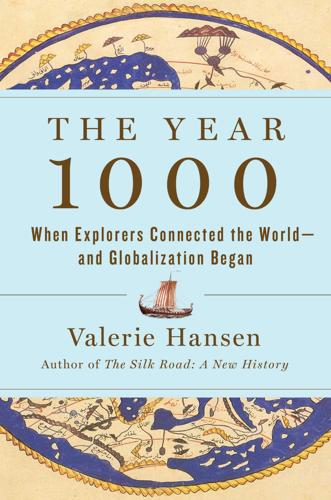
The Year 1000: When Explorers Connected the World―and Globalization Began
by
Valerie Hansen
Published 13 Apr 2020
As the war of words escalated between hard-liners on both sides, the pope excommunicated the Eastern patriarch, and the patriarch retaliated by excommunicating the papal envoy. Yet, for all the acrimony, contemporary observers didn’t see the breach of 1054 as permanent. The conflict between the two churches came just as the Byzantine empire was hemorrhaging territory. In 1071, the Seljuks defeated Byzantium in the Battle of Manzikert in eastern Turkey and went on to conquer much of the breadbasket of the Byzantine empire in Anatolia. Equally devastating, and in the same year, was the Norman victory at the city of Bari on the east coast of Italy, which led to the loss of all Byzantine territory in southern Italy. Even so, at this point, the Eastern church in Constantinople was still the focus of the Christian world.
…
Like many other monarchs, he chose a religion that offered him the greatest chance to consolidate power and form alliances with powerful neighbors. Prince Vladimir’s major source of information was the reports presented by envoys he dispatched to visit other rulers. Working as spies, they returned with news of his neighbors. Vladimir chose Christianity, specifically Eastern Orthodox Christianity as practiced in the Byzantine empire, from a very short list. He weighed the pros and cons of Judaism, Islam, Roman Christianity, and Byzantine Orthodoxy. He rejected Judaism because the Jews had lost Jerusalem. He crossed off Islam because it banned drinking. He rejected Roman Christianity without explaining why. He opted for Byzantine Orthodoxy because the magnificent Hagia Sophia cathedral in the Byzantine capital of Constantinople represented a technological marvel, just as impressive in its day as the latest skyscraper is today.
…
In 742, 60 percent of the population of 60 million lived in northern China, where they grew wheat and millet; by 980, 62 percent lived in southern China, where they cultivated rice, a much more productive crop than the northern grains. In contrast to China’s emperor, no single monarch ruled Europe in the year 1000. In Eastern Europe, the Byzantine empire was the most prosperous power, but its military strength was rapidly declining. Although the Byzantine army grew increasingly weaker, forcing the emperor to depend on mercenaries or foreign armies, Constantinople (modern Istanbul) was the most advanced city in Europe. When Western Europeans visited, they couldn’t believe the beauty of its promenades or the sophistication of its buildings, particularly the magnificent cathedral of Hagia Sophia.
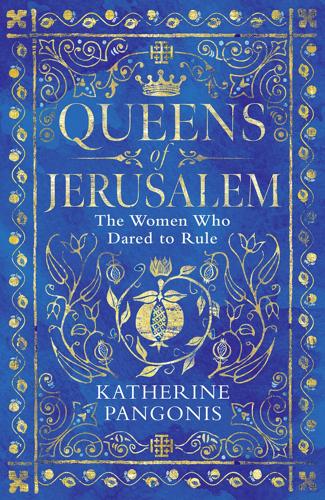
Queens of Jerusalem: The Women Who Dared to Rule
by
Katherine Pangonis
Published 17 Feb 2021
She was the first of her four sisters to marry, and at the time of her mother’s death in 1127 she was seventeen years old and living hundreds of miles north of Jerusalem, at her marital home in the city of Antioch. Antioch was the jewel of the Christian East. Once the capital of the Roman Orient, founded by a general in the army of Alexander the Great, in the medieval period the city and its territories formed an important frontier state between the Byzantine Empire, the Seljuk Turks and the Armenians of Cilicia. Despite the decline of the Byzantine Empire’s power in the wake of the Arab invasions, Antioch still remained a city of great importance. It had been won by Bohemond of Taranto after a gruelling siege during the First Crusade. It was the second crusader state to be created in Outremer, and Bohemond had installed himself as its first prince.
…
A few pieces of Constantine’s structure from six centuries earlier survived including parts of the rotunda and walls and, most importantly, the rock tomb of Christ was not destroyed. This thorough attack upon the most holy site in Christianity shocked Christians across Europe, and may have planted one of the earliest seeds of the crusades in the minds of the Byzantine Empire and the papacy. Nineteen years later, after the death of the Mad Caliph and following hard-wrung negotiations between the Byzantine Empire and the Fatimids, the extensive reconstruction of the church was permitted at the expense of Byzantium, in exchange for the reopening of a mosque in Constantinople. Even with this show of magnanimity, it was still not possible to construct, in such a hostile setting, anything like the great structures of the Hagia Sophia in Constantinople or the grandest European cathedrals, as might have been expected.
…
The most immediate ramifications of this brutal attack came in the form of Emperor Manuel exacting vengeance. He could not allow such a barbaric and public attack on his authority to go unpunished. In an unprecedented demonstration of the power of the Byzantine Empire, Manuel marched his armies across Anatolia and into Antiochene territory. This was the first time since the foundation of the states of Outremer that the Byzantine Empire had mobilised their troops on this scale and invaded Frankish territory. Manuel chased out the Armenian lords of Cilicia, and held court at the town of Mamistra. He summoned Reynald to attend him there, and the chastened prince obeyed.

The Map of Knowledge: How Classical Ideas Were Lost and Found: A History in Seven Cities
by
Violet Moller
Published 21 Feb 2019
They turned their isolation to an advantage by keeping out of politics on the mainland, while focusing on trade and diplomacy. Geographically, their growing city was perfectly placed between the two major political powers of the time: the Byzantine Empire to the east, and the Frankish kingdom to the west. In 814, the inhabitants of Venice made a treaty that articulated their unique position. They would be a province of the Byzantine Empire, but would, at the same time, pay tribute to the Franks. This could have given them the worst of both worlds, but, in fact, it put the Venetians in a privileged space between the two empires and, most importantly of all, it gave them trading rights and the freedom to use Italian ports.
…
Travellers banded together, joining the long caravans of camels that transported goods across the empire – the safest way to confront the dangers of crossing the deserts of Arabia, North Africa and Iran. Among them were scholars prepared to journey hundreds of miles, risking sandstorms, disease, floods, brigands and wild animals in their search for books, propelled by the fear that ideas could be lost for ever. They travelled east across Persia and north to Anatolia in the Byzantine Empire, where Greek was still the main language. Here, too, were ancient cities with old temples and monasteries full of books. In the 770s and early 780s, al-Mansur and Khalid ibn Barmak created the perfect conditions for science to flourish in Baghdad. Khalid’s erudite son, Yahya, was appointed as tutor to Harun al-Rashid (Mansur’s grandson) and – for the time being, at least – the destinies of the two families were bound together by love and mutual respect.
…
Harun was as famous for making love as he was for making war, but his appetite for learning was equally impressive. Once in power, he put the mighty weight of the caliphate behind the search for ancient books. Like his ancestors before him, he would send raiding parties into the southern fringes of the Byzantine Empire as many as three times a year.* During the chaos of these skirmishes, soldiers grabbed anything they could get their hands on, and books were high on the list of valuable booty.* In Baghdad, Harun founded the Bayt al-Hikmah – House of Wisdom – to house these books and the scholars who worked on them.

Insight Guides Pocket Turkey (Travel Guide eBook)
by
Insight Guides
Published 31 Jul 2019
Between 322 and 330, Constantine moved from Rome to his new capital, Constantinople, built around an old Greek fishing port, Byzantium. The empire split into independently ruled eastern and western halves a few decades after Constantine’s death in 337. The western portion, still ruled from Rome, but starved of resources, limped on until its demise in AD 476. Byzantines and Seljuks The eastern (Byzantine) empire by contrast flourished. Constantinople grew ever more splendid, with vast palaces and great churches, of which the finest was Hagia Sophia, built by Emperor Justinian, and still standing today. However the imperial frontiers were repeatedly tested, by the Slavs in the west, the Avars from Central Asia and the Sassanid Persians in the southeast.
…
Within decades, there was a new threat in the form of the Seljuks, who traced their origins to the Asian steppes. In 1071, at the Battle of Manzikert, they routed the Byzantine Army, capturing the emperor. From their capital in Konya, the Seljuks expanded their Sultanate of Rum at the expense of the Byzantine Empire. Ruins of the kervansarays (inns), bridges and roads they built across their holdings to accommodate increased trade along the Silk Route attest to their immense but short-lived power. They were toppled by the 13th-century Mongol invasions of Genghis Khan. Crusaders sack Constantinople akg images In both northeast Anatolia and southerly Cilicia, the Armenians took advantage of Byzantine weakness to carve out semi-independent states after the late 11th century.
…
AD 40 St Paul begins preaching Christianity. 325 Constantine convenes first ecumenical council at Nicaea. 330 Constantinople becomes capital of eastern Roman Empire. 1071 Seljuks enter Anatolia. 1204 Crusaders sack Constantinople. 1453 Mehmet II conquers Constantinople, ending Byzantine Empire. 1520–66 Reign of Süleyman the Magnificent. 1683–1792 Ottomans lose much of their European territory. 1912–13 Ottomans lose remaining European territories in Balkan Wars. 1914–18 Turks fight in World War I as one of the Central Powers. 1919–1922 War of Independence against Greece, Italy, France. 1923 Turkish Republic is established, with Atatürk as president. 1924–38 Atatürk imposes secularisation and modernisation. 1950 First free elections, won by Adnan Menderes. 1960 Menderes deposed by first military coup. 1974 Turkey invades northern Cyprus. 1983 Return to civilian rule under Turgut Özal. 1999 Earthquake kills tens of thousands in northwestern Turkey. 2002 Islamist AK Party forms majority government. 2005 Negotiations begin on Turkey joining the EU. 2014 AK leader Recep Tayyip Erdoğan elected President of Turkey. 2017 Erdoğan narrowly wins referendum to extend his powers. 2018 Erdoğan is re-elected president. 2019 AK claims overall victory in local elections but loses Ankara and Istanbul.

Strolling Through Istanbul
by
Sumner-Boyd, Hilary.; Freely, John
Published 8 Jan 2011
Shortly after the death of Heraclius, however, much of the eastern part of the Byzantine Empire was overrun by the Arabs, who on several occasions in the seventh and eighth centuries besieged Constantinople itself. But Byzan�tium held off the Arab advance and prevented them from Strolling Through Istanbul TEXT.indd 6 25/6/09 13:43:35 The View from the Bridge 7 gain�ing a foothold in eastern Europe, just as they were finally stopped at about the same time in the West by Charles Martel. In the ninth and tenth centuries the Byzantine Empire was invaded by the Bulgars, who gained control of large areas of the Balkans and twice laid siege to Constantinople.
…
The Latin Kings ruled in Constantinople from 1204 till 1261, at which time Michael Palaeologus succeeded in recapturing the city and restoring the Byzantine Empire. But the Empire was now only a fragment of what it had been in former days, comprising parts of Thrace, Macedonia and the Peloponnesus, with most of its former possessions in Asia Minor occupied by the Ottoman Turks, and much of its land in Europe lost to the rapacious Latins. Within the next century even these dominions were lost, as the Turks crossed over into Europe and advanced far into the Balkans. By the beginning of the fifteenth century the Byzantine Empire consisted of little more than Constantinople and its immediate suburbs, with the old city decaying within the great walls which had protected it for so long.
…
During the first century after the Conquest, Turkish armies swept victoriously through the Balkans and the Near East, while bucÂ� caneering Ottoman fleets dominated the Mediterranean. By the middle of the sixteenth century the Ottoman Empire stretched from Baghdad in the east to Algiers in the west, and from lower Egypt to the southern borders of Russia, rivalling in extent the Byzantine Empire in the days of Justinian. The Empire reached the peak of its power during the reign of Süleyman the MagnifiÂ�cent, who ruled from 1520 till 1566. Süleyman personally led his armies in a dozen victorious campaigns, failing only in his atÂ�tempts to take Vienna and Malta, which thereafter set the limit to Turkish expansion to the north and west in Europe.
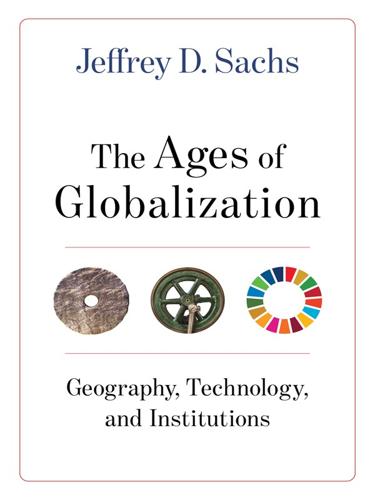
The Ages of Globalization
by
Jeffrey D. Sachs
Published 2 Jun 2020
While the governance of the Roman Empire would go through further cycles of unity and east-west division, Diocletian’s decision was never permanently reversed. The Western Roman Empire succumbed to conquest by Germanic tribes from the north, with the final fall of Rome in 476 CE. Meanwhile the Eastern Roman Empire lived on as the Byzantine Empire and still governed most of the Mediterranean basin from Constantinople. The extent of the Byzantine Empire in 555 CE is shown in figure 5.7. 5.7 The Byzantine Empire, 555 CE For centuries after, the temperate lands faced a constant menace from the horseback warriors arriving from the Eurasian steppes. The Huns made devastating raids from the Black Sea region into Eastern and Western Europe in the middle of the fifth century.
…
Islam, and a succession of vast Islamic empires, arose rapidly and at a massive scale. Once again, the geographic logic followed the east-west ecological gradient, this time spreading across the deserts of Arabia into the drylands of North Africa and Spain to the west and into the drylands of West and Central Asia to the east. The Byzantine Empire was quickly shorn of its holdings in North Africa and the Levant. Within one century, the Islamic realm extended from the Atlantic coast of Iberia across North Africa, the Arabian Peninsula, and the Levant into Persia and beyond to the Indus River. The Umayyad Dynasty was founded in 661 CE by the third caliph, with the capital in Damascus.
…
The invading Islamic army was defeated by the Franks in the Battle of Tours (732 CE) in today’s France, thereby limiting Islam’s conquest in Western Europe to the Iberian Peninsula. In the eastern Mediterranean, the Arab armies battled the Eastern Roman Empire (Byzantium) over several centuries. By and large, the Byzantine Empire was able to repulse the Arab invaders from Anatolia and the Balkans region but lost several islands in the eastern Mediterranean, including Crete, Malta, and Sicily (figure 5.8). Islam, however, extended far beyond the conquests by the Arabs. Arab merchants and seafarers brought Islam to Indian Ocean settlements as early as the late seventh century.

The Power of Geography: Ten Maps That Reveal the Future of Our World
by
Tim Marshall
Published 14 Oct 2021
He then crucifies everyone. What goes around comes around. In 53 BCE he took on the Parthians, lost, and because the Persians thought he was greedy, they poured molten gold down his throat. Some 500 years on, the Parthians were overthrown from within by the Sasanians. They continued to fight Rome, and then the Byzantine Empire, leaving them exhausted and open to the next challenge which arose from the west – the Arabs, and Islam. The seventh-century Sasanian defeat was the result of unprecedented political weakness being vanquished by an enemy with the light of God in their eyes. Persia lost its buffer zone in Mesopotamia, and then most of its heartland.
…
They all wanted to control the Aegean and eastern Mediterranean, and a weakened Greece suited these aims. In the fourth century CE the Roman Empire split, with the eastern half centred on the Greek-speaking city of Byzantium (renamed Constantinople, now Istanbul). The culture of the city and region was Hellenic and remained so for centuries. It was the capital of the Byzantine Empire for a millennium during which Greece was ‘ruled’ from the city, although actual control was of the coastal plains, major cities and most islands, while in the mountains tribes often held sway. Subsequent years saw a series of unfortunate events as parts of Greece were held by, among others, Franks, Serbs and Venetians, but the constant, until 1453, was Byzantium.
…
The country would spend the next 115 years trying to change this through the ‘Megali Idea’ – the Great Idea – the concept of uniting all Greeks within the borders of an expanded state exemplified in the slogan ‘Once more, as years and time go by, once more they shall be ours’. Its more radical proponents took the idea as reviving the Byzantine Empire and including the Black Sea, Constantinople and central Anatolia, territories central to the Ottoman Empire (and, later, Turkey). ‘Dream on,’ said the European powers, who decreed that Greece would be a monarchy of limited size, that its king would be a seventeen-year-old Bavarian, Otto of Wittelsbach, and its army would be made up of Bavarians.
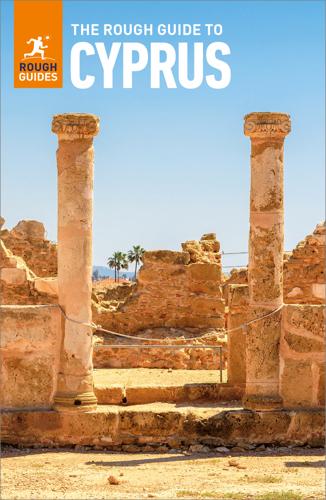
The Rough Guide to Cyprus
by
Rough Guides
Published 2 Feb 2025
c.323–31 BC The (Greek) Ptolemies of Egypt succeed in struggle between the heirs of Alexander the Great and rule Cyprus. 31 BC Roman rule in Cyprus begins, bringing relative peace and prosperity. 45 AD St Paul and St Barnabas begin the conversion of the island to Christianity. 330 Cyprus becomes part of the Byzantine Empire. 468 The Church of Cyprus is granted autonomous status. 647 First of numerous Arab raids on coastal cities. 649 Island invaded by Saracen army. 649–965 Conflict between the Christian Byzantine Empire and the forces of Islam. 965–1191 Second period of relative peace within the Byzantine Empire. 1191 Richard the Lionheart conquers Cyprus. 1192 Richard sells Cyprus first to the Knights Templar, then to his lieutenant Guy de Lusignan. 1192–1489 Lusignan rule – Cyprus becomes a Crusader state. 1489–1571 Venetian rule – Cyprus becomes a commercial trading base. 1522 The fall of Rhodes to the Ottoman Empire leads to the fortification of the island against possible Muslim attack. 1571 Siege of Famagusta completes the Ottoman conquest of the island. 1572 Building of the Büyük Han (Great Inn) in Nicosia by Mustafa Pasa. 1821 Rebellion is violently suppressed, with over five hundred prominent Greek Cypriots being publicly executed in Nicosia. 1878 Period of British rule begins. 1925 Cyprus becomes a Crown colony. 1942 British soldiers discover the Pafos mosaics. 1955–59 EOKA fights for union with Greece (enosis). 1957 Bitter Lemons by Lawrence Durrell is published. 1959 Independence granted and elections held. 1960 Archbishop Makarios III elected president. 1963–64 Intercommunal violence in Cyprus leads to intervention of UN troops. 1964 The Kokkina Incident almost leads to all-out war; Green Line across the capital established. 1974 Turkish invasion leads to conquest of northern Cyprus, de facto division of the island. 1983 The “Turkish Republic of North Cyprus” is established. 2003 First crossing point on the Green Line established. 2004 Republic of Cyprus joins the European Union. 2008 Cyprus adopts the euro while the north persists with the Turkish Lira. 2008 Demetris Christofias elected president of the Republic. 2012 In London, Pavlos Kontides wins Cyprus’s first ever Olympic medal – a silver in the Laser sailing event. 2013 The presidents of the Republic of Cyprus and North Cyprus begin peace talks. 2015 Negotiations halt and the talks break down. 2017 Discussions regarding possible reunification take place. 2020 Covid-19 pandemic strikes and decimates the Cyprus tourism industry and the islands economy. 2021 Talks about the reunification of the island fail. 2023 Nikos Christodoulides is elected as the Republic’s new president. 2024 Cyprus begins the process of joining the Schengen Zone.
…
It has five domes over a nave and two aisles, with an additional small dome over an odd little annexe attached below the belfry, used as a reliquary. Inside is a range of frescoes, some of which are “aniconic” (that is, using crosses and abstract patterns rather than representations of human figures), dating from the period when the iconoclasts held sway in the Byzantine Empire. Later representational wall paintings date from the twelfth to the fifteenth centuries. Ecclesiastical Museum of Pafos Archbishop’s Makarios Avenue, Square of Geroskipou • Charge • www.impaphou.org Once called the Byzantine Museum, this large collection of icons and religious paraphernalia moved to a new locationfrom Paphos to Geroskipou village, housed in an old elementary school building.
…
You can come across these little gems across the region, but especially on the north slopes of the range, sometimes in villages, sometimes in remote wooded areas. They are modest in construction, with steeply sloping wooden roofs (to shed snow during the winter) above stout rough stone walls. Inside, they are decorated with wonderful frescoes (and in some cases mosaics) which offer a glimpse of life and beliefs during the almost thousand years of the Byzantine Empire. Ten of these churches are collectively included on UNESCO’s World Heritage List (below are those churches that are most easily visited from locations covered in the Guide). Photography is not allowed inside the churches, but most sell guidebooks and/or postcards of the most notable paintings.

The the Rough Guide to Turkey
by
Rough Guides
Published 15 Oct 2023
Theodosius the Great (ruled 379–395), who officially proscribed paganism in 391, was the last sovereign of a united empire, which upon his death formally split into two realms: the western one Latin-speaking and Rome-based, the eastern part Greek-speaking and focused on Constantinople. The Byzantine Empire The western provinces, always financially dependent on the east, were plagued by barbarian invasions from the north. The wealthier, more densely populated eastern Byzantine Empire had abler rulers and more defensible frontiers, but was severely weakened by religious tensions. Constantinople’s writ was resented in the southeastern provinces of Egypt, Palestine, Syria and Armenia with their non-classical indigenous cultures; moreover, their churches embraced the Monophysite doctrine, which maintained that Christ had a single divine nature.
…
In 395, the division of the Roman Empire between the two sons of Theodosius I left what was now named Constantinople as capital of the eastern part of the empire. It rapidly developed its own distinctive character, dissociating itself from Rome and adopting the Greek language and Christianity. Long and successful government was interrupted briefly, in Justinian’s reign, by the Nika riots in 532. Half a century later, however, the dissolution of the Byzantine Empire had begun, as waves of Persians, Avars and Slavs attacked from the east and north. The empire was overrun by Arab invaders in the seventh and eighth centuries, and by Bulgars in the ninth and tenth. Only the city walls saved Constantinople, and even these could not keep out the Crusaders, who breached the sea walls in 1204 and sacked the city.
…
Downhill from Taksim, on the Bosphorus shore, lie Tophane, Beşiktaş and Ortaköy, inner-city districts with scenic waterside locations and a number of historic palaces and parks. Across the straits, in Asia, the main centres of Üsküdar, Haydarpaşa and Kadıköy form part of Istanbul’s commuter belt, but also have a few architectural attractions and decent shops, restaurants and clubs. The Ottoman conquest As the Byzantine Empire declined, the Ottoman Empire expanded. The Ottomans established first Bursa, then Edirne, as their capital, and Ottoman territory effectively surrounded the city long before it was taken. In 1453, Mehmed II – also known as Fatih Sultan Mehmed (Mehmed the Conqueror) – besieged the city, which fell after seven weeks.

The Dollar Meltdown: Surviving the Coming Currency Crisis With Gold, Oil, and Other Unconventional Investments
by
Charles Goyette
Published 29 Oct 2009
During the period that Europe was plunged into the Dark Ages and commerce could still depend on bartering cattle, the Near and Middle East were enjoying untold prosperity. Constantine, the founder of the Byzantine Empire and the first Christian head of the Roman Empire, introduced a coin of about one-sixth ounce of gold. This coin, the golden bezant, was minted for eight centuries without alteration except to improve its purity and uniformity. Several hundred thousand bezant were eventually minted as the coin became a recognized store of value and standard accounting unit for trade from China to the Atlantic Ocean. So popular and dependable was the bezant that it helped make the Byzantine Empire the commercial center of the world, with the consequent material blessings flowing to its citizens.
…
Needless to say, Rome was losing its dominance in the affairs of men. The barbarians were at the door. Attila the Hun demanded and got a ton of gold a year from Rome, a bribe to keep his hordes from sacking the city. While Rome declined, the Byzantine Empire ascended, employing the honest gold coinage described in chapter 4. But after eight hundred years, that coinage too was debased and the Byzantine Empire began to fall. As is usually the case, the emperor Alexius Comnenus began the debasement to pay for his extravagance and corruption. Meanwhile throughout the Middle Ages, European heads of state made the debasement and devaluation of coinage their special pastime.
…
So popular and dependable was the bezant that it helped make the Byzantine Empire the commercial center of the world, with the consequent material blessings flowing to its citizens. No civilization since has equaled the stability and honesty of the money the Byzantine Empire gave the world. But like all good things, it would not last forever, and eventually Byzan tium’s rulers began to debase the money, diluting its gold content by surreptitiously adding ever more base metals to the coinage. As the integrity of the coin declined, so did the empire. Today the shame brought on by the debasement of this once prestigious coinage lives on in our language when we describe a plot or scheme as being “byzantine,” referring to its deviousness and underhandedness.
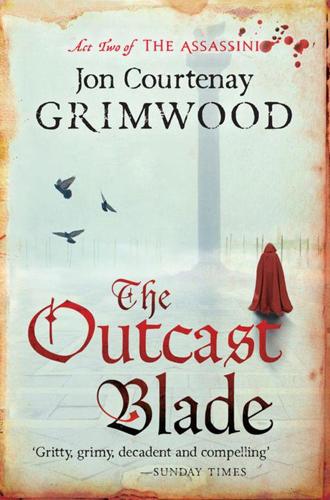
The Outcast Blade
by
Jon Courtenay Grimwood
Published 26 Mar 2012
Using a goose quill he inseminated Giulietta with Alonzo’s seed, leaving her with child A’rial, the Duchess Alexa’s stregoi (her pet witch) Atilo’s household Iacopo, Atilo’s servant and member of the Assassini Amelia, a Nubian slave and member of the Assassini Pietro, an ex-street child, Assassini apprentice and sister to Rosalyn (now dead and buried on Pauper Island) The customs office Lord Roderigo, Captain of the Dogana, Alonzo’s ally Temujin, his half-Mongol sergeant The Three Emperors Sigismund, Holy Roman Emperor, King of Germany, Hungary and Croatia. Wants to add Lombardy and Venice to that list John V Palaiologos, the Basilius, ruler of the Byzantine Empire (known as the Eastern Roman Empire), also wants Venice. He barely admits Sigismund is an emperor at all Tamburlaine, Khan of Khans, ruler of the Mongols and newly created emperor of China. The most powerful man in the world and a distant cousin to Duchess Alexa. He regards Europe as a minor irritation PART 1 “These violent delights have violent ends…” Romeo and Juliet, William Shakespeare Prologue Constantinople 1408 Incense filled the air inside Hagia Sophia, the largest and most famous cathedral in the world.
…
He regards Europe as a minor irritation PART 1 “These violent delights have violent ends…” Romeo and Juliet, William Shakespeare Prologue Constantinople 1408 Incense filled the air inside Hagia Sophia, the largest and most famous cathedral in the world. Beneath its huge dome, small boys scattered rose petals on thousand-year-old marble mosaics, which would need scrubbing before nightfall to remove the stain. Ahead of the shambling figure of John V Palaiologos – God’s ruler on Earth, Basilius of the Byzantine Empire – walked his cross bearer, carrying a huge crucifix with an icon of Christ in its centre. Had the crucifix been solid it would have been impossible to lift. But it was made from beaten silver, chased and fretted and hammered into shape over a light wooden frame. Under the icon was a piece of the True Cross.
…
“The emperor will make him a prince imperial. Recognise Giulietta’s baby as his own grandson. Our two countries will be bound close by the child.” Alexa’s clippedness emphasised her worry. If it annoyed Alonzo that Alexa’s spies knew this before his had time to report he swallowed his pride. They both knew Germany and the Byzantine Empire wanted Venice and her colonies. Milan, Genoa and Florence? Venice could fight those and win. When philosophers wrote about how rich the Italian republics were they meant Venice. The mainland city-states were mere shadows of Serenissima’s glory. The empires were something else. These needed to be treated with visible respect.

Pocket Rough Guide Istanbul
by
Rough Guides
Published 26 Nov 2023
c.667 BC The legendary foundation of Byzantium (Istanbul) by Greek colonists led by Byzas. 513 BC Darius, King of Persia, captures Byzantium. 334 BC Alexander the Great captures Byzantium. 195 AD Roman emperor Septimius Severus burns the city to the ground, then proceeds to rebuild it a few years later. 324 Emperor Constantine decides the city will be his new imperial capital, building starts. 330 Constantine calls the rebuilt city Nova Roma, but it’s soon known as Constantinople. 337 Constantine is baptized a Christian. 392 Paganism is banned by Emperor Theodosius and the Roman Empire becomes overtly Christian. 447 The city walls are rebuilt following a massive earthquake which destroyed much of the city. 532 The Nika riots cause vast damage to the city before 30,000 of the rioters are massacred in the Hippodrome. 537 A monumental new cathedral, the Haghia Sophia (Aya Sofya) is completed on the site of an earlier incarnation that was burned in the 532 riots. 674 The Arabs besiege Constantinople; the defenders use “Greek fire” against their enemy. 726 Emperor Leo III forbids icon veneration as idolatry, causing riots across the empire. 1054 Schism of the Orthodox and Catholic churches. 1071 The first Turks reach Anatolia and defeat Emperor Romanos IV Diogenes at Manzikert. 1097 The First Crusade passes through Constantinople. 1204 The Fourth Crusade captures Constantinople and irrevocably weakens the Byzantine Empire. 1261 Michael VIII Palaeologus recaptures the city for the Byzantines. 1326 The Osmanlı (Ottomans to the West), a Turkish tribal group, capture Bursa and further weaken the Byzantine Empire. 1453 The Ottomans capture Constantinople on May 29 after a two-month siege. The Byzantine Empire is extinguished. 1459 Construction of the Topkapı Palace, the heart of the Ottoman Empire, begins. 1481 Beyazıt II becomes Sultan. 1492 Beyazıt II sends an Ottoman fleet to Spain to save the Jews from persecution. 1514 Selim I “the Grim” wins a crucial victory over the Persians. 1517 Selim I captures Medina, takes the title of Caliph. 1529 The Ottomans reach the gates of Vienna led by Süleyman the Magnificent. 1558 The completion of the Süleymaniye Camii by Sinan. 1571 Don John of Austria defeats the Ottoman navy at Lepanto. 1616 The monumental Sultanahmet Camii is completed after eight years’ toil. 1729 Sultan Ahmet I establishes the Ottoman Empire’s first printing press. 1779 The Ottomans lose the Crimea to Russia. 1830 Greece fights off Ottoman control and becomes an independent state. 1839 Sultan Abdülmecid begins to reform the empire on European lines. 1853 Tsar Nicholas I of Russia declares the Ottoman Empire the ‘’sick man of Europe’’. 1854 Florence Nightingale arrives. 1856 Abdülmecit leaves Topkapı Palace and moves to European-style Dolmabahçe Palace. 1888 Visitors from Europe reach Istanbul on the new Orient Express. 1889 Foundation of The Committee for Union and Progress (CUP) or Young Turks as they are better known. 1909 Sultan Abdülhamit deposed by the CUP. 1914 Ottoman Turkey signs an alliance with Germany and enters World War I. 1918 Britain occupies Istanbul after the Allied victory in World War I. 1919 Mustafa Kemal lands at Samsun on the Black Sea, triggering the Turkish War of Independence. 1922 The Sultanate is abolished by Turkish nationalists led by Atatürk. 1923 The Republic of Turkey is officially founded, Ankara replaces Istanbul as capital. 1934 Haghia Sophia (Aya Sofya), a church then a mosque, becomes a museum. 1938 Atatürk dies at Dolmabahçe Palace. 1939 Turkey remains neutral for most of World War II, Istanbul a centre of intrigue. 1955 A weekend of rioting destroys many Greek minority-owned properties on İstiklal Caddesi and across the city. 1960 Turkey’s first military coup. 1971 Second military coup. 1977 Thirty-nine leftist demonstrators are shot by extremists at a May Day rally in Taksim Square known as “Bloody May Day” during the rise of the leftwing movement. 1980 Turkey’s third military coup. 1994 A pro-Islamic Refah Party wins Istanbul in the municipal elections, Tayyip Erdoğan becomes mayor. 2002 Pro-Islamic AKP sweep to power in general elections led by Tayyip Erdoğan. 2010 Istanbul is joint European Capital of Culture. 2011 The AKP wins the general elections for a record third time. 2013 Protests erupt in Gezi Park when the government puts forward proposals to replace a green area with a new shopping mall. 2014 Tayyip Erdoğan becomes Turkey’s first popularly elected president. 2015 The AKP win the general elections for the fourth time. 2016 A series of terrorist attacks in Istanbul cast a shadow over the country and there is an attempted coup. 2018 The new Istanbul Airport opens to passengers. 2019 Canal Istanbul construction begins. 2021 Turkey changes its official name to Türkiye. 2022 Terrorist bomb in Istanbul kills six. 2023 National elections see Recep Tayyip Erdoğan returned as president and his party, AKP, win the elections, their sixth victory in succession
…
Many of their wares are for sale and the whole enterprise is surprisingly low-key given that it is situated in the most heavily touristed part of the city. Haghia Sophia (Aya Sofya) MAP Sultanahmet Meydanı 1 1 Sultanahmet ayasofyamuzesi.gov.tr. Charge for audio guide. Representative of the Byzantine Empire at the peak of its power in the sixth century, the Haghia Sophia, or Church of the Holy Wisdom, still inspires awe today. Two previous churches of the same name had stood on the site before being razed, the latter in a riot in 532. Justinian, determined to bolster his temporal and spiritual authority, ordered a rebuild on a scale not realized before.
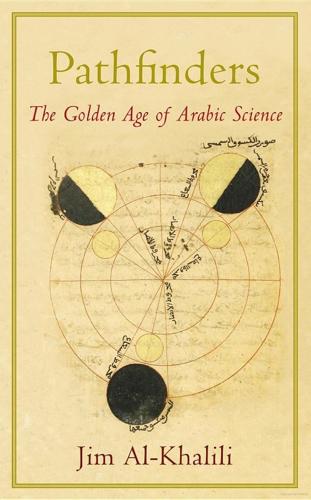
Pathfinders: The Golden Age of Arabic Science
by
Jim Al-Khalili
Published 28 Sep 2010
The death of Alexander signalled the division of his great empire among his generals: Egypt for Ptolemy, who ruled from Alexandria, and Asia for Seleucus, who built his new capital, Antioch, in north-west Syria, a city that would later play a vital role in the transfer of scientific knowledge from the Greeks to the Arabs. By the time of the arrival of Islam in the early seventh century CE, what we now call the Middle East was divided between the Persian and Byzantine empires. But with the spread of this new religion from Arabia, a powerful empire emerged, and with it a flourishing civilization and a glorious golden age. Given how far back it stretches in time, the history of the region – and even of Iraq itself – is too big a canvas for me to paint. Instead, what I hope to do in this book is take on the nonetheless ambitious task of sharing with you a remarkable story; one of an age in which great geniuses pushed the frontiers of knowledge forward to such an extent that their work shaped civilizations to this day.
…
There are many stories of al-Rashīd’s wealth, and his collection of gems was particularly legendary.1 He is said to have bought a famous pearl called al-Yatima (‘The Orphan Pearl’) for 70,000 gold dinars. Charlemagne is also believed to have given him what is thought to have been the world’s largest emerald. Al-Rashīd took a personal interest in many campaigns against the neighbouring Byzantine Empire, leading military expeditions against them throughout his reign. In 797 the defeated Empress Irene agreed to pay a large sum of money to al-Rashīd as the terms of her surrender. When her successor, Emperor Nicephorus I, withheld the payment, al-Rashīd declared war again, and Arab forces defeated the Byzantine emperor in a battle in Phrygia in Asia Minor (Turkey) in 805.
…
The Prophet Muhammad With the weakening of the Roman Empire at the beginning of the fifth century, Western Europe slipped rapidly into what is now known as the Dark Ages, from which it would not emerge for a thousand years. By the time of the fall of Rome itself, the centre of imperial power in Europe had long since moved eastwards to Constantinople, the capital of the Byzantine Empire. Its rule covered Anatolia, Greece, southern Italy, Sicily, Syria, Egypt and the North African coast, with an eastern border that ran roughly north–south between modern-day Iraq and Syria. The official language of the Byzantines was Greek, but they did not reach anywhere near the great intellectual heights of scholarship and learning achieved by the Greeks of Athens and Alexandria.
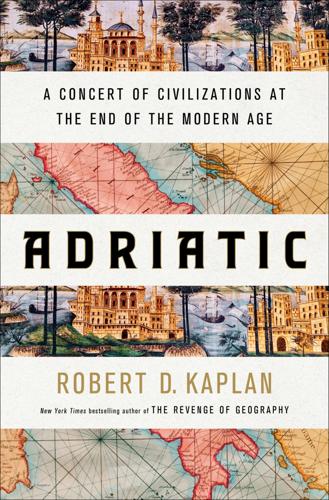
Adriatic: A Concert of Civilizations at the End of the Modern Age
by
Robert D. Kaplan
Published 11 Apr 2022
Finally, in A.D. 9, after another Illyrian revolt, a fed-up Emperor Tiberius abruptly concluded an armistice in Bohemia, and along with his nephew Germanicus he traveled south to crush this uprising. “From that year,” writes the historian Giuseppe Praga, “Dalmatia settled down submissively in the shadow of the Roman eagles.”[5] Following the downfall of Rome in the West in A.D. 476 and rule by the Ostrogoths, Justinian annexed Dalmatia to the Byzantine Empire in the early sixth century, so that Dalmatia was now governed from Constantinople. But Constantinople was far away and Dalmatia continued to be influenced by the Latin language and its close ties to Italian cities such as Ravenna. The Slavs arrived here en masse from points farther east in the seventh century.
…
The Ragusan patriciate itself was split between pro- and anti-Ottoman elements. (So much is known about early modern Dubrovnik! The University of Sydney academic Zdenko Zlatar actually lists the members of the Senate in 1611–1612, labeling them according to their various factions.)[37] Medieval Dubrovnik’s original and recurrent problem was that the Byzantine Empire proved a “somewhat unreliable protector,” explains British expert Robin Harris in Dubrovnik: A History. “Consequently, the Ragusans [early on] had to reach their own arrangements with their neighbors in order to preserve their security,” something that Byzantium accepted, “as long as its ultimate sovereignty was still recognized.”
…
For the Muslim Turks often treated Eastern Christians better than Western Christians (Catholics and Protestants) treated each other, so that Orthodoxy forms a part of the Ottoman inheritance in a similar way that Islam does; and Montenegro (along with Albania) forms a frontier of the Orthodox world, whose heartland remains in Greece and Russia. Indeed, Eastern Orthodox Christianity constitutes the world of the former Byzantine Empire (before the arrival of the Ottomans) and its Slavic shadow zones to the north. Though I encountered the artistic and spiritual remnants of Orthodoxy in the churches of Ravenna on the other side of the Adriatic near the beginning of my journey, it is in Kotor where I encounter it as an active religion.
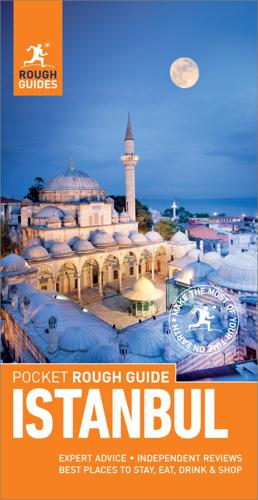
Pocket Rough Guide Istanbul (Travel Guide eBook)
by
Rough Guides
Published 24 May 2019
c.667 BC The legendary foundation of Byzantium (Istanbul) by Greek colonists led by Byzas. 513 BC Darius, King of Persia, captures Byzantium. 334 BC Alexander the Great captures Byzantium. 195 AD Roman emperor Septimius Severus burns the city down, rebuilds it a few years later. 324 AD Emperor Constantine decides the city will be his new imperial capital, building starts. 330 Constantine calls the rebuilt city Nova Roma, but it’s soon known as Constantinople. 337 Constantine is baptized a Christian. 392 Paganism is banned by Emperor Theodosius and the Roman Empire becomes overtly Christian. 447 The land walls are rebuilt following a massive earthquake. 532 The Nika riots cause vast damage to the city before 30,000 of the rioters are massacred in the Hippodrome. 537 A monumental new cathedral, the Haghia Sophia (Aya Sofya) is completed on the site of an earlier incarnation burned in the 532 riots. 674 The Arabs besiege Constantinople; the defenders use “Greek fire” against their enemy. 726 Emperor Leo III forbids icon veneration as idolatry, causing riots across the empire. 1054 Schism of the Orthodox and Catholic churches. 1071 The first Turks reach Anatolia and defeat Emperor Romanos IV Diogenes at Manzikert. 1097 The First Crusade passes through Constantinople. 1204 The Fourth Crusade captures Constantinople and irrevocably weakens the Byzantine Empire. 1261 Michael VIII Palaeologus recaptures the city for the Byzantines. 1326 The Osmanlı (Ottomans to the West), a Turkish tribal group, capture Bursa and further weaken the Byzantine Empire. 1453 The Ottomans capture Constantinople on May 29 after a two-month siege. The Byzantine Empire is extinguished. 1459 Construction of the Topkapı Palace, the heart of the Ottoman Empire, begins. 1481 Beyazıt II becomes Sultan. 1492 Beyazıt II sends an Ottoman fleet to Spain to save the Jews from persecution. 1514 Selim I “the Grim” wins a crucial victory over the Persians. 1517 Selim I captures Medina, takes the title of Caliph. 1529 The Ottomans reach the gates of Vienna led by Süleyman the Magnificent. 1558 The completion of the Süleymaniye Camii by Sinan. 1571 Don John of Austria defeats the Ottoman navy at Lepanto. 1616 The monumental Sultanahmet Camii is completed after eight years’ toil. 1729 Sultan Ahmet I establishes the Ottoman Empire’s first printing press. 1779 The Ottomans lose the Crimea to Russia. 1830 Greece fights off Ottoman control and becomes an independent state. 1839 Sultan Abdülmecid begins to reform the empire on European lines. 1853 Tsar Nicholas I of Russia declares the Ottoman Empire the ‘’sick man of Europe’’. 1854 Florence Nightingale arrives. 1856 Abdülmecit leaves Topkapı Palace and moves to European-style Dolmabahçe Palace. 1888 Visitors from Europe reach Istanbul on the new Orient Express. 1889 Foundation of The Committee for Union and Progress (CUP) or Young Turks as they are better known. 1909 Sultan Abdülhamit deposed by the CUP. 1914 Ottoman Turkey signs an alliance with Germany and enters World War I. 1918 Britain occupies Istanbul after the Allied victory in World War I. 1919 Mustafa Kemal lands at Samsun on the Black Sea, triggering the Turkish War of Independence. 1922 The Sultanate is abolished by Turkish nationalists led by Atatürk. 1923 The Republic of Turkey is officially founded, Ankara replaces Istanbul as capital. 1934 Haghia Sophia (Aya Sofya), a church then a mosque, becomes a museum. 1938 Atatürk dies at Dolmabahçe Palace. 1939 Turkey remains neutral for most of World War II, Istanbul a centre of intrigue. 1955 A weekend of rioting destroys many Greek minority-owned properties on İstiklal Caddesi and across the city. 1960 Turkey’s first military coup. 1971 Second military coup. 1977 Thirty-nine leftist demonstrators shot by extremists at a May Day rally in Taksim Square. 1980 Turkey’s third military coup. 1994 A pro-Islamic Refah Party wins Istanbul in municipal elections, Tayyip Erdoğan becomes mayor. 2002 Pro-Islamic AKP sweep to power in general elections led by Tayyip Erdoğan. 2010 Istanbul is joint European Capital of Culture. 2011 The AKP wins the general elections for a record third time. 2013 Protests erupt in Gezi Park when the government tries to replace a green area with a shopping mall. 2014 Tayyip Erdoğan becomes Turkey’s first popularly elected president. 2015 The AKP win the general elections for the fourth time. 2016 A series of terrorist attacks in Istanbul cast a shadow over the country. 2018 New Istanbul Airport opens. 2019 Beginning of the Canal Istanbul construction
…
Haghia Sophia interior Turkish Culture and Tourism Office Haghia Sophia (Aya Sofya) MAP Sultanahmet Meydanı 1 1 Sultanahmet 0212 522 1750, ayasofyamuzesi.gov.tr. Tues–Sun: mid-April–Oct 9am–7pm, last entry 6pm; Nov–mid-April 9am–5pm, last entry 4pm. ŧ60, audio-guide ŧ20. Representative of the Byzantine Empire at the peak of its power in the sixth century, the Haghia Sophia, or Church of the Holy Wisdom, still inspires awe today. Two previous churches of the same name had stood on the site before being razed, the latter in a riot in 532. Justinian, determined to bolster his temporal and spiritual authority, ordered a rebuild on a scale not realized before.
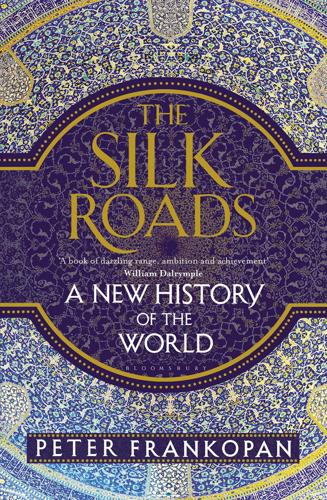
The Silk Roads: A New History of the World
by
Peter Frankopan
Published 26 Aug 2015
The upheaval, and the resulting decline of commercial opportunities, was one reason why the Viking Rus’ increasingly turned their attention to the Dnieper and Dniester rivers feeding into the Black Sea, rather than moving along the Volga and towards the Caspian. Their attention began to turn away from the Muslim world to the Byzantine Empire and to the great city of Constantinople, fabled in Norse folklore as ‘Mikli-garðr’ (or Miklegarth) – that is, ‘the great city’. The Byzantines were wary of the attentions of the Rus’, not least since a daring raid in 860 had taken the city’s inhabitants – and its defences – completely by surprise.
…
As western Europe’s horizons expanded, there was rising interest in visiting the land where Jesus Christ had lived, died and risen from the dead. Pilgrimage to Jerusalem became a source of understandable kudos.66 Exposure to the Holy City also underlined the paucity of the Christian heritage of western Europe – particularly when compared to the Byzantine Empire. Helena, the mother of the Emperor Constantine, had begun the process of bringing relics to Constantinople in the fourth century. By the eleventh century, the astonishing collections in the city were widely held to include relics such as the nails that had been used to crucify Jesus; the Crown of Thorns; the clothes over which lots had been cast; and parts of the True Cross, as well as hair of the Virgin Mary, the head of John the Baptist and much more besides.67 By contrast, there was little of note in the reliquaries of Europe: although kings, cities and church foundations were becoming richer, they had little physical connection with the story of Jesus Christ and his disciples.
…
In a famous battle still celebrated today as the moment of the birth of the state of Turkey, the imperial army was surrounded and crushed and the Emperor taken prisoner. The Seljuk ruler, Alp Arslan, made the Byzantine leader lie on the ground and placed his foot on his neck.80 In fact, the Seljuks and the regime in Baghdad were much less concerned with the Byzantine Empire than they were with the Fāimid caliphate in Shīa Egypt. The two forces quickly locked horns, wrestling over control of Jerusalem. While this was going on, relations were established with Constantinople that were not so much cordial as positively supportive, thanks to the overlap of mutual interests that both had in curtailing the bands roaming Asia Minor who were using the classic steppe strategy of raiding and seeking payments in return for peace.

The Great Sea: A Human History of the Mediterranean
by
David Abulafia
Published 4 May 2011
Remote control in the form of fleets sent out from the heartlands of Byzantium was impossible, and the best option was to establish Byzantine bases on the maritime frontier.25 The Byzantines managed to hold the waters north of Cyprus and Crete (which they lost for a time to the Arabs). This enabled them to maintain communications in the Aegean and a little way beyond, but the situation was more parlous on the fringes of the Byzantine Empire, notably in the Adriatic. Their difficulties in this zone began not with the Arabs, whose seizure of Bari came relatively late, so much as with the Franks, rulers by the end of the eighth century of large tracts of Italy including (in 751) the former Byzantine province, or Exarchate, whose capital lay at Ravenna.
…
Meanwhile, the Venetians sent messengers to Emperor Alexios, and in 1082 he issued a Golden Bull that showered them with gifts, while emphasizing that they were his duli, or subjects. The most precious and controversial of his presents was a grant of the right to trade free of taxation anywhere in the Byzantine Empire, excluding the Black Sea and Cyprus. The emperor wanted to preserve the special role of Constantinople as the link between the Mediterranean, from which it received spices and luxury goods, and the Black Sea, down which merchants brought furs, amber and other northern products. The Venetians were even granted bits and pieces of land by the Golden Horn, including a wharf and their own church (with its own bakery).33 The privilege of 1082 set a gold standard in the Mediterranean; and, whenever the Italian cities negotiated an alliance with a trading partner in need of naval assistance, they had a model to emulate.
…
St Mark’s was intended to recall a whole catalogue of eastern connections, for it also proclaimed with pride the link to Alexandria, the patriarchal seat of the saint whose bones it conserved.36 By the end of the eleventh century, then, Pisa and Genoa had taken up arms with increasing vigour to clear the western Mediterranean of Muslim pirates, and had carved out a dominion of their own in Sardinia; meanwhile, the Venetians had won what would become a unique position within the Byzantine Empire. Muslim domination of the Mediterranean could no longer be taken for granted, especially once the armies and navies of the First Crusade began to move. 4 ‘The Profit That God Shall Give’, 1100–1200 I In 1095, preaching at Clermont in central France, Pope Urban II set in motion a movement that would transform the political, religious and economic map of the Mediterranean and Europe.
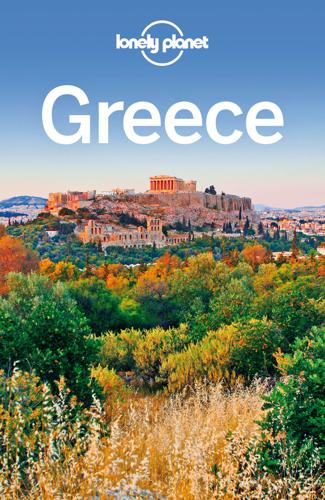
Greece Travel Guide
by
Lonely Planet
Visit the sanctuary of Ancient Olympia, and stand in the stadium that hosted the first Olympic Games. Stay overnight in the town and take in some of the excellent museums. Head south to the captivating, World Heritage–listed ruins of Mystras. This massive ancient fortress town was the last stronghold of the Byzantine Empire. Continue south to the rugged and remote Mani, to encounter villages filled with fascinating architecture and the remnants of the unique Maniot culture. This region is a haven for hikers with the dramatic Taÿgetos Mountains and tiny, isolated coves. It’s also home to one of mainland Europe’s most southerly points at Cape Tenaro, made famous in Homer’s ‘Iliad’.
…
After the subdivision of the Roman Empire into east and west, Athens remained an important cultural and intellectual centre until Emperor Justinian closed its schools of philosophy in AD 529. Athens declined and, between 1200 and 1450, was continually invaded – by the Franks, Catalans, Florentines and Venetians, all preoccupied with grabbing principalities from the crumbling Byzantine Empire. Ottoman Rule & Independence Athens was captured by the Turks in 1456, and nearly 400 years of Ottoman rule followed. The Acropolis became the home of the Turkish governor, the Parthenon was converted into a mosque and the Erechtheion became a harem. On 25 March 1821 the Greeks launched the War of Independence, declaring independence in 1822.
…
Note to cyclists: this route is even more dramatic (and easier on the muscles) if done in reverse order. Lakonia Λακωνία The region of Lakonia occupies almost identical boundaries to the powerful mountain-skirted kingdom ruled by King Menelaus in Mycenaean times. It is home to legends, including the city of Sparta and the spectacular ruins of Mystras, the Byzantine Empire’s last stronghold. Dominating the landscape are two massive mountain ranges, the Taÿgetos Mountains in the west and the Parnonas Mountains in the east. These taper away to create the central and eastern fingers of the Peloponnese. English speakers can thank the Lakonians for the word ‘laconic’.
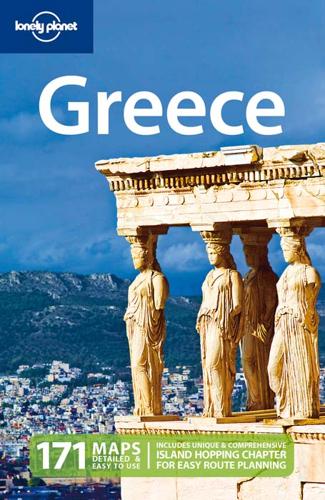
Greece
by
Korina Miller
Published 1 Mar 2010
But it is ironic that the demise of the Byzantine Empire was accelerated by fellow Christians from the west – the Frankish Crusaders. The stated mission of the Crusades was to liberate the Holy Land from the Muslims, but in reality they were driven as much by greed as by religious zeal. The first three Crusades passed by without affecting the area, but the leaders of the Fourth Crusade (in the early part of the 13th century) decided that Constantinople presented richer pickings than Jerusalem and struck a deal with Venice, who had helped prop up the Crusades. Constantinople was sacked in 1204 and much of the Byzantine Empire was partitioned into fiefdoms ruled by self-styled ‘Latin’ (mostly Frankish or western-Germanic) princes.
…
After the subdivision of the Roman Empire into east and west, Athens remained an important cultural and intellectual centre until Emperor Justinian closed its schools of philosophy in 529. The city declined into an outpost of the Byzantine Empire. Between 1200 and 1450, Athens was continually invaded – by the Franks, Catalans, Florentines and Venetians, all opportunists preoccupied with grabbing principalities from the crumbling Byzantine Empire. Ottoman Rule & Independence Athens was captured by the Turks in 1456, and nearly 400 years of Ottoman rule followed. The Acropolis became the home of the Turkish governor, the Parthenon was converted into a mosque and the Erechtheion was used as a harem.
…
Achaean civilisation – see Mycenaean civilisation acropolis – citadel; highest point of an ancient city agia (f), agios (m) – saint agora – commercial area of an ancient city; shopping precinct in modern Greece Archaic period – also known as the Middle Age (800-480 BC); period in which the city-states emerged from the ‘dark age’ and traded their way to wealth and power; the city-states were unified by a Greek alphabet and common cultural pursuits, engendering a sense of national identity arhon – leading citizen of a town, often a wealthy bourgeois merchant; chief magistrate arhontika – 17th- and 18th-century AD mansions, which belonged to arhons askitiria – mini-chapels or hermitages; places of solitary worship baglamas – small stringed instrument like a mini bouzouki basilica – early Christian church bouleuterion – council house bouzouki – long-necked, stringed lutelike instrument associated with rembetika music bouzoukia – any nightclub where the bouzouki is played and low-grade blues songs are sung Byzantine Empire – characterised by the merging of Hellenistic culture and Christianity and named after Byzantium, the city on the Bosphorus that became the capital of the Roman Empire; when the Roman Empire was formally divided in AD 395, Rome went into decline and the eastern capital, renamed Constantinople, flourished; the Byzantine Empire (324 BC-AD 1453) dissolved after the fall of Constantinople to the Turks in 1453 caïque – small, sturdy fishing boat often used to carry passengers Classical period – era in which the city-states reached the height of their wealth and power after the defeat of the Persians in the 5th century BC; the Classical period (480-323 BC) ended with the decline of the city-states as a result of the Peloponnesian Wars, and the expansionist aspirations of Philip II, King of Macedon (r 359-336 BC), and his son, Alexander the Great (r 336-323 BC) Corinthian – order of Greek architecture recognisable by columns with bell-shaped capitals that have sculpted, elaborate ornaments based on acanthus leaves; see also Doric and Ionic Cycladic civilisation – the civilisation (3000-1100 BC) that emerged following the settlement of Phoenician colonists on the Cycladic islands cyclops (s), cyclopes (pl) – mythical one-eyed giants dark age – period (1200-800 BC) in which Greece was under Dorian rule domatio (s), domatia (pl) – room, usually in a private home; cheap accommodation option Dorians – Hellenic warriors who invaded Greece around 1200 BC, demolishing the city-states and destroying the Mycenaean civilisation; heralded Greece’s ‘dark age’, when the artistic and cultural advancements of the Mycenaean and the Minoan civilisations were abandoned; the Dorians later developed into land-holding aristocrats which encouraged the resurgence of independent city-states led by wealthy aristocrats Doric – order of Greek architecture characterised by a column that has no base, a fluted shaft and a relatively plain capital, when compared with the flourishes evident on Ionic and Corinthian capitals Ellada or Ellas – see Hellas ELTA – Ellinika Tahydromia; the Greek post office organisation EOT – Ellinikos Organismos Tourismou; main tourist office (has offices in most major towns), known abroad as GNTO Filiki Eteria – Friendly Society; a group of Greeks in exile; formed during Ottoman rule to organise an uprising against the Turks filoxenia – hospitality frourio – fortress; sometimes also referred to as a kastro Geometric period – period (1200-800 BC) characterised by pottery decorated with geometric designs; sometimes referred to as Greece’s ‘dark age’ GNTO – Greek National Tourist Organisation; see also EOT Hellas – the Greek name for Greece; also known as Ellada or Ellas Hellenistic period – prosperous, influential period (323-146 BC) of Greek civilisation ushered in by Alexander the Great’s empire building and lasting until the Roman sacking of Corinth in 146 BC hora – main town (usually on an island) horio – village IC – intercity (sometimes express) train service Ionic – order of Greek architecture characterised by a column with truncated flutes and capitals with ornaments resembling scrolls; see also Doric and Corinthian kastro – walled-in town; also describes a fort or castle katholikon – principal church of a monastic complex kore – female statue of the Archaic period; see also kouros kouros – male statue of the Archaic period, characterised by a stiff body posture and enigmatic smile; see also kore KTEL – Koino Tamio Eispraxeon Leoforion; national bus cooperative; runs all long-distance bus services laïka – literally ‘popular (songs)’; mainstream songs that have either been around for years or are of recent origin; also referred to as urban folk music leoforos – avenue; commonly shortened to ‘leof’ limenarhio – port police meltemi – northeasterly wind that blows throughout much of Greece during the summer Middle Age – see Archaic period Minoan civilisation – Bronze Age (3000-1100 BC) culture of Crete named after the mythical King Minos, and characterised by pottery and metalwork of great beauty and artisanship moni – monastery or convent Mycenaean civilisation – the first great civilisation (1600-1100 BC) of the Greek mainland, characterised by powerful independent city-states ruled by kings; also known as the Achaean civilisation nisi – island odos – street OSE – Organismos Sidirodromon Ellados; Greek railways organisation OTE – Organismos Tilepikoinonion Ellados; Greece’s major telecommunications carrier Panagia – Mother of God or Virgin Mary; name frequently used for churches panigyri (s), panigyria (p) – festival; the most common festivals celebrate annual saints’ days Pantokrator – painting or mosaic of Christ in the centre of the dome of a Byzantine church periptero (s), periptera (pl) – street kiosk plateia – square rembetika – blues songs commonly associated with the underworld of the 1920s Sarakatsani – Greek-speaking nomadic shepherd community from northern Greece stele (s), stelae (pl) – upright stone (or pillar) decorated with inscriptions or figures stoa – long colonnaded building, usually in an agora; used as a meeting place and shelter in ancient Greece tholos – Mycenaean tomb shaped like a beehive Vlach – traditional, seminomadic shepherds from Northern Greece who speak a Latin-based dialect Return to beginning of chapter The Authors * * * KORINA MILLER KATE ARMSTRONG MICHAEL STAMATIOS CLARK CHRIS DELISO DES HANNIGAN VICTORIA KYRIAKOPOULOS CONTRIBUTING AUTHORS * * * KORINA MILLER Coordinating Author, Dodecanese, Island Hopping Korina first ventured to Greece as a backpacking teenager, sleeping on ferry decks and hiking in the mountains.
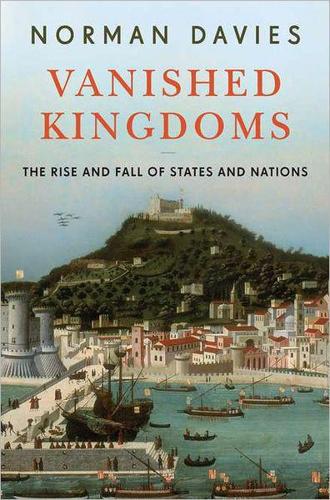
Vanished Kingdoms: The Rise and Fall of States and Nations
by
Norman Davies
Published 30 Sep 2009
Then, lacking all guidance, it disintegrated amid the general chaos.27 As Locke observed, the ‘inroad of foreign force’ supplies the most usual cause of state death. The Kingdom of Tolosa, the States of Burgundy, the Byzantine Empire, the Commonwealth of Poland-Lithuania, and Prussia (as an element of the Third Reich) were all destroyed by conquest. Yet conquerors do not always proceed to destroy their defeated adversaries; both the Byzantine and the Polish examples suggest that the health and strength of a conquered country plays a part, alongside the conqueror’s intentions, in the loser’s fate. By 1453, for example, the once-mighty Byzantine Empire had shrunk to the dimensions of a tiny city-state, before being picked off by the final siege.
…
Lane 113–14n Portugal 171, 215, 507, 521, 522 Poska, Jaan 706 Possevini 279 Potocki, Andreas 471 Potockis 275, 284, 455 Potsdam 710 Conference 387–8 Poznań 289 Praga, Battle of 289 Prague 625, 626 Rudolf II collection 481 Slav Congress 469 Premyslid dynasty 345 Preti, Mattia 221 Pritsak, Omelian 478 Pronkssödur (Bronze Soldier) 696 Prosper of Aquitania, St 20 Prosvita Society 471 Protestant Ascendancy 650, 660, 667, 679 Proudhon, Pierre-Joseph 730 Provence 105, 117, 123, 125, 174, 408 counts of 118–19 Kingdom of (le Royaume de Basse-Bourgogne) 109, 109–12 Provisional IRA (Provos) 668, 669, 672, 677 Prussia/Borussia and the Prussians 242, 248, 256, 282, 283, 284, 286, 336–92, 337, 349 13th century 338–44 14th century 345–6 15th century 346, 346–9, 349 16th century 349–55 17th century 355–66, 360 18th century 132, 288, 366–7, 368–70, 369; growth of the Kingdom of Prussia, 1701–95 369 19th century 373–7, 374, 521, 557 20th century 374, 377–88; abolition of Kingdom of Prussia 380; ‘Flight from the East’ 384–5; inter-war 382; Potsdam Conference 387–8; termination of Prussia 387–8, 734; World War I 377–80; World War II 382–6, 384 ‘Allied Scheme’ of 370–72 Battle of Waterloo 533 Berlin’s memory site of 389–93 and Brandenburg 355–6, 358; state of Brandenburg-Prussia 358–60, 360, 361–2, 363–6 and the Commonwealth of Poland-Lithuania 349, 353–4, 355, 362–6; Prussian homage 350–52 Duchy of Prussia 352–65, 353 early Prusai 336–7 East Prussia 348, 355, 373, 378, 381, 382, 383–8 Free State of Prussia (Weimar Prussia) 380–88 geography of 338 and Germany 340, 343–4, 345, 351–3, 364, 367–8, 373; and the Nazis 381–8 Hohenzollern Kingdom of 351–67, 369, 373–80, 374 Junkers 360, 381 language (Prusiskan, Old Prussian) 343–4 Peasants War 354 ‘Prussian coup’ 381 Prussian Estates 352, 354, 356, 362 Prussian League 348 ‘Prussian militarism’ 370 Royal Prussia 348–50, 349, 369 and Russia 368–9, 372, 374; Russo-Prussian treaties (1793) 288 Schmalkaldic League Wars 354 and the Soviet Union, World War II and aftermath 382–8 and the Teutonic Knights/Ordensstaat 339–44, 345–8, 346, 350–53 Prussian Blue 367 Prydain 43, 44 Przemyśl 453, 475 Pskov 278–9 Ptolemy 46, 47 Puigcerda 175 Puławy 307, 482–3, 485 Putin, Vladimir 329, 331, 335, 727–8 and Estonia 696–7 Putina, Lyudmila 329 Pyrenees 156–60, 157 Treaty of the 222 Quedlinburg Chronicle 246 Quinctianus of Civitas Rutenorum 23 Racławice, Battle of 289 Radek, Karl 478 Radet, Étienne 526, 528, 529, 535 Radović, Andrija 592, 597, 599, 601, 602, 607 Radziwiłł, Barbara, queen 264, 269–70 Radziwiłł, Jan I 264 Radziwiłł, Janusz 281 Radziwiłł, Karol Stanisław ‘Panie Kochanku’ 287 Radziwiłł, Michal Kazimierz ‘Rybeńko 287 Radziwiłł, Mikołaj ‘the Black’ 264 Radziwiłł, Mikołaj Krzysztof ‘Sierotka’ 264 Radziwiłł, Mikołaj ‘the Red’ 264, 266, 271–2 Radziwiłłs 263–4, 264, 275, 278, 284–5, 294 RAF (Royal Air Force) 383 Rainald/Renaud III 124, 128 Ramiro I of Aragon 163, 164–5 Ramiro II El Monaco 170 Ramolino, Maria-Letizia 500 Ramón Berenguer I El Vell 168–9, 174, 175 Ramón Berenguer IV El Sant 170, 177 Ravenna 24, 97 Raymond de Peñafort, St 181–2 Ražnatović, Željko 614–15 Reagan, Ronald 716 Real IRA 673 Reconquista against the Muslims 115, 164, 166–9, 173, 181, 183, 184 Red Army 89, 301, 302, 382–7, 446, 478, 479, 618, 631, 702, 705, 710, 712, 713, 714 Red Clydeside 40 Red Cross 421 Red Ruthenia 268, 346 Redemption of Christian Captives, Order for 181 Redl, Alfred 471–2 Refit Site One 40 Reged-ham (Rochdale) 56 Reges Gothorum 23 Řehoř, František 464 René d’Anjou 211, 212, 216–17 Renfrew, Barony of 79 Rennes 102 Rennes-le-Château 27 Renzi, Matteo 498 Republic of Ireland Act 664 Rere/Rear/Rey Cross, Stainmore 72 Restoration of Order in Ireland Act (1920) 653 Retinger, Joseph 478 Reval see Tallinn/Reval Revay, Julian 626, 633 Revolt of the Barretinas 222 Rhedae 27 Rheged 49, 53, 56–57, 59–60 Rheinfelden 121 Rhône valley 109, 110, 115, 118, 125, 179 Rhun, son of Urien 60 Rhun map Arthgal 69–70, 77 Rhydderch (Roderick) Hael 55, 57, 61 Ribagorza 159, 162, 163, 164, 221 RIC (Royal Irish Constabulary) 652–3 Riccarton Castle 79 Richard the Justiciar, count of Autun 106, 112 Richelieu, cardinal 407 Richildis, queen 106 Ricimer 96–7, 97 Rieti, Golden Bull of 340 Riga 248, 285, 338, 342 Treaty of 306 Rimsky-Korsakov, Alexander 294 Riothamus 23 Ripoll 175 abbey of 184 Risorgimento (Unification of Italy) 413, 416, 419, 437–8, 735 fall of Rome 429 Rob Roy MacGregor 83 Robert le Vieux 106 Robert of Naples 197 Robinson, Mary 672 Robinson, Peter 677 Rock, Kingdom of the see Alt Clud, Kingdom of the Rock Rodestvedt, Kelly 571 Rodez, counts of 175 Rodrigo Díaz de Vivar (El Cid) 167–9 Roger Deslaur/de Flor (Ruggier Desflors) 196 Rogneda 246 Rogvolod 246 Rogvolodichi 246 Rohatyn 442 Rokossowski, Konstantin 302, 384 Romagna 422, 423, 426, 505 Roman Catholic Church in Galicia 462 in Ireland 644–5, 659–61, 671–2 in Litva 253, 255, 266, 303 in Prussia 342–3 Second Vatican Council 671 Roman Empire 16, 23, 91–3, 321, 336 and the Byzantine Empire 313–17, 321; see also Byzantine Empire/Byzantines Holy see Holy Roman Empire Roman Aquitania 17, 18–20, 24 Roman Gaul 17 Roman, Pan 446 Romanovs 368–9, 570, 587 Rome Charlemagne in 104 fall, under Risorgimento 429 Festa della Repubblica 397–400 French driven out by Neapolitan troops 529 French occupation (1798) 506, 507 modern 398 sacking by Alaric the Visigoth 16 sacking by the Vandals 22 Roncevalles, Pass of 162 Roosevelt, Franklin D. 10 Rosenau Castle 542–3, 544, 545–6, 557, 558, 562, 567, 570 Rosselló 177–9, 200, 222 Roth, Joseph 478 Rothesay 38 Rousillon/Rosselló 153, 154–5, 157, 158, 162, 177–9, 185, 200, 222 Languedoc-Roussillon 153, 226 Rousseau, Jean-Jacques 729–30, 734–5 Roxalana/Hurrem 442–3 Royal Academy, London 320 Royal Air Force (RAF) 383 Royal and Parliamentary Titles Act (Ireland, 1927) 661 Royal Irish Constabulary (RIC) 652–3 Royal Navy 40, 41, 505, 506, 507, 663, 679, 705 Royal Ulster Constabulary (RUC) 654, 666, 667, 668, 669 RSFSR (Russian Soviet Federative Socialist Republic) 328, 702n, 703, 721 Ruaidre Ua Chobar 640 RUC see Royal Ulster Constabulary Rudolf I, emperor 132 Rudolf II 113–14 Rudolf III 114, 117, 118, 119 Rudolf of Auxerre 110–12 Ruffo, cardinal 508 Ruggier Desflors (Roger Deslaur/de Flor) 196 Ruggiero di Lauria 193 Runciman, Sir Steven 318 Rurik (Hroerekh) 243, 244 Rurikids 245–7 ‘Ruritania’ 623, 632–4 Rus′ 242, 243, 245, 246–8, 247, 249, 267 Kievan Rus′ 244, 245, 265 Ruthenia see Ruthenia/Ruthenians Rusalka Dnistrovaia 467 ruski 243, 261, 265, 270, 282, 303, 304, 450, 460–61 Ruskin, John 317 Russia/Russians Bolsheviks see Bolsheviks and Estonia see Estonia and France 505–6 and Galicia 471–2, 473, 474, 475 and Germany 377–80, 701–2, 703–4 Great Northern War 283 Kaliningrad 327–33, 335–6 and Litva 283–4, 290, 291–303, 300–301; partitioning of Poland-Lithuania 286, 287–9 and Montenegro 587–8, 597–8 nationalism 298 Ottoman war 287–8 provisional government under Kerensky 701, 704, 738 and Prussia 368–9, 372, 374, 382–8; Russo-Prussian treaties (1793) 288 Russian Civil War 698, 702, 705 Russian Federation 725, 727–8 Russian Socialist/Soviet Federative Soviet Republic (RSFSR, Soviet Russia) 328, 702, 703, 717, 721 Russo-American START Treaty 335 Russo-Japanese conflict 590 Russo-Polish war (1791–2) 288 Soviet Union see Soviet Union (CCCP) Tartu Treaty 705–6 and terminology 291 Tsarist Empire of ‘all the Russias’ 699–701, 703 and the Turks 288, 587–8 and the US 727 Western Russia in the nineteenth century 292 White Russia 291 World War I 377–80, 701–2, 703 YedRo (‘United Russia’) Party 335 Russian Orthodoxy 265, 295, 298, 463, 719 Russian Socialist/Soviet Federative Soviet Republic (RSFSR) 328, 702n, 703, 717, 721 Russophiles 288, 463, 625, 632 Rusticus of Narbonne, St 20 Rusyns 623–34 see also Ruthenia/Ruthenians Ruthenia/Ruthenians 248, 249, 251, 265, 266–7, 267, 275, 277, 298 Black Ruthenia 249, 289 Carpathian Ruthenia see Carpatho-Ukraine and Galicia 450, 451, 456, 458, 462, 463, 470, 471, 477; literary movement 467; modern Halich 448–9; Ruthenian Congress 470; Supreme Ruthenian Council 470 Orthodox Ruthenians 347 Red Ruthenia 252, 268, 346 Rusyns 623–34 White Ruthenia 249, 251, 254, 260, 265, 267, 284–5, 291, 295; see also Belarus Ruthenian Congress 470 Sabaudia see Savoy/Sabaudia Sacher-Masoch, Leopold von 467 Sachsen-Coburg-Kohary, Ferdinand 559 St Andrews Agreement 674 St Bartholomew’s Eve massacre 277 St Germain, Treaty of 625 St Gotthard pass 125 St Jean-de Maurienne 435 St John, Bayle 402, 416, 417–19, 434 St Maurice 112 St Petersburg/Leningrad/Petrograd 301, 335, 383, 699, 703, 704, 710 Siege of Leningrad 383, 712, 714 Saint-Quentin 407 ‘The Salmon and the Ring’ 56 Salses 158 Salvatico, Odoardo 515 Salza, Hermann von 339–40 Sambia/Sambians 338, 342, 343 Samogitia 248, 275 San Ildefonso, Treaty of 507, 522 San Juan de la Peña, monastery 184–5 San Martino 421 San Miniato 501 San Pedro de la Nava, Zamora 29 San Pedro de Siresa monastery 164 Sancho El Mayor of Navarre 155, 162–3 Sancho the Populator 171 Sanfedisti 508 Sanguszko 272 Santángel, Luis de 218 Santarosa, Santorre de 414 Sapieha, Lev 275 Sapiehas 455 Saracens 104, 117, 186–7 corsairs 110 Sardinia 197, 201–2, 206, 220, 501 Franco-Sardinian Treaty 423–5, 436 late 18th-century Kingdom of 410, 735 and Sabaudia 409–10, 411–12, 415–17, 421, 423–5, 428–9, 735; Treaty of Turin 423–5, 436 Sarmatism 284 Sarmatian Myth 350 Saturnin, St 20 Saunière, Bérenger 27–8 Sava, St 592 Savaric of Auxerre 104 Saville Inquiry 677 Savoy League (Ligue Savoisienne) 436 Savoy Manor 406 Savoy/Sabaudia 401–38 counts of 405 and England 406 and France 404–6, 407, 412, 414, 417, 435, 436; annexation 412, 425–7, 435, 436, 501; Napoleon III 419–22, 423, 425; Nice 409, 410, 412, 421, 423–5, 426; plebiscite 423–8, 435; Treaty of Turin 423–5, 436 and Italy 413–14, 421–3 nationalism 414–15 and Piedmont 403, 404, 406, 409, 410, 412, 414, 415, 416 and the plebiscite 423–8, 435 provinces 402; see also specific provinces and Sardinia 409–10, 411–12, 415–17, 421, 423–5, 428–9, 735; Treaty of Turin 423–5, 436 Savoy province 402, 412 shield of the House of Savoy 400 skiing industry 434–5 and Switzerland 409, 425–6 Turin Treaty 423–5, 436 wines 433 World War II 436 Saxe-Coburg and Gotha Albrecht, prince of see Albert, prince Duchy of 545, 557, 559–70; abolition of 570 Saxe-Coburg family 431, 543–73, 564 Saxe-Coburg soup 559 Saxony 368 House of (Wettins) 543, 550, 555–6 Saxon mini-states, c. 1900 544; Duchy of Saxe-Coburg and Gotha 545, 557, 559–70 Schlieffen, Alfred von 378, 379 Schlieffen Plan 378 Schloss Rosenau see Rosenau Castle Schmalkaldic League Wars 354 Schollenen Gorge 125 Schratt, Katharina 469 Schröder, Gerhard 329, 331 Schulz, Bruno 478 Schwarz, Chris 486 Schwerin, Otto von 362 Scone, abbey of 65 I Scorpioni (The Scorpions) 499 Scotch whiskey 40 Scotland 40–41, 66, 75–6, 81–3, 683–5 Scots 17, 37n, 42, 53, 62, 63, 70, 72, 81 Alban 74 Picto-Gaelic fusion 37n, 63, 65–6 Scotti (Hibernian pirates) 37 Scott, Sir Walter 82–3 Scottish Home Rule Bill 679 Scottish Labour Party 680 Scottish National Party (SNP) 679–80, 683 Scottish Presbyterians 641, 667 SDLP (Social Democratic Labour Party) 674, 681 Segura, Isabela 190–91 Selgovae 46, 47 Selim II 442 Senchus (Register) of Dalriada 63 Senlis, Treaty of 139 Serbia/Serbs 580–81, 581, 583, 587, 589–90, 594–5, 600–610, 614–16, 619, 733, 736–7 and Austria 597–9 ‘Greater Serbia’ 597, 598–9, 604 see also Montenegro/Tsernagora; Serbs, Croats and Slovenes, Kingdom of Serbia and Montenegro (country) 577 Serbian Orthodox Church 581, 592, 605, 614 Serbs, Croats and Slovenes, Kingdom of 597, 604–6, 608, 614 Sergianni (Giovanni) Caracciolo 211 Serra, Orso 423–4 Serristori, Averardo 515 Servanus, St 55 Seton-Watson, Hugh 8 Seton-Watson, R.
…
AD 1000 15 The imperial Kingdom of Arles from 1032 16 The modern linguistic region Arpitania 17 The disintegration of imperial Burgundy 18 The Duchy and County of Burgundy in the fourteenth century 19 The States of Burgundy, fourteenth–fifteenth centuries 20 The Imperial Circles of the Holy Roman Empire 21 Pyrenees 22 Marches of Charlemagne’s Empire, ninth century 23 The cradle of the Kingdom of Aragon, 1035–1137 24 The Iberian peninsula in 1137 25 The heartlands of the Crown of Aragon 26 Aragonese Empire 27 The two medieval Sicilies 28 The Kingdom of Mallorca 29 The union of Castile and Aragon, 1479 30 Belarus 31 The ‘Land of the Headwaters’ 32 The Principalities of Polatsk, c. twelfth century 33 The Grand Duchy of Lithuania under Mindaugus (mid-thirteenth century) 34 The Grand Duchy of Lithuania with the other Jagiellonian lands, c. 1500 35 The Polish-Lithuanian Commonwealth from 1572 36 The Grand Duchy of Lithuania, 1572–1795 37 The Partitions of Poland-Lithuania, 1772–1795 38 Western gubernias of the Russian Empire in the nineteenth century 39 Istanbul and the Bosporus 40 Contraction of the Byzantine Empire 41 Kaliningrad oblast 42 Borussia – land of the Moravia 43 The Teutonic State, 1410 44 Royal and Ducal Prussia after 1466 45 Brandenburg-Prussia in 1648 46 The growth of the Hohenzollern Kingdom, 1701–1795 47 The Kingdom of Prussia, 1807–1918 48 The Eastern frontline, 1944–1945 49 Rome 50 Savoy and Piedmont 51 The Kingdom of Sardinia, c. 1750 52 Italy, 1859–1861 53 Northern Italy, spring 1860 54 West Ukraine 55 The Kingdom of Galicia and Lodomeria, c. 1900 56 Galicia in Austria-Hungary, c. 1914 57 Florence 58 The Kingdom of Etruria, 1801–1807 59 Napoleonic Italy, 1810 60 Free State of Thüringia and Northern Bavaria 61 Saxon mini-states, c. 1900 62 Montenegro, 2011 63 The tribes of Montenegro, c. 1900 64 Montenegro and neighbours, 1911 65 Yugoslavia after 1945 66 Modern Zakarpattia (Carpatho-Ukraine) 67 Czechoslovak Republic, 1920–1938 68 The Republic of Carpatho-Ukraine, 1939 69 Ireland, 2011 70 Northern Ireland in the late twentieth century 71 Estonia 72 The Baltic States between the wars 73 Union of Soviet Socialist Republics, 1945–1991 74 Russia’s western ‘near abroad’ after 1991 Introduction All my life, I have been intrigued by the gap between appearances and reality.
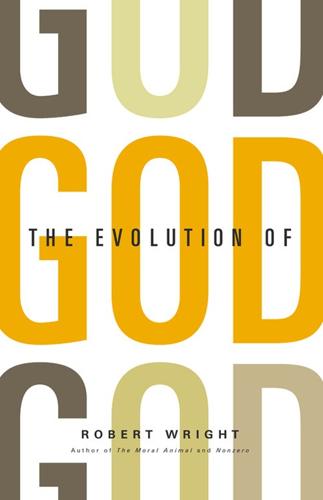
The Evolution of God
by
Robert Wright
Published 8 Jun 2009
That, after all, was half the point of being an empire. The Roman Empire had done it, and so had the two empires that Islam was now taking land from—the Persian Empire and the eastern heir of the Roman Empire, the Byzantine Empire. So subjects of the emerging Islamic Empire shouldn’t have found the taxes imposed on them disorienting. In fact, some Christians preferred the new Muslim overlords to the old Christian ones. The Byzantine Empire had fought heretical Christian sects, whereas to the Muslims, a Christian was a Christian; so long as they paid their taxes, heretics could worship as they wished. It was win-win: formerly suppressed Christians got their freedom for a price they considered a bargain, and Muslim rulers got peace within their empire and, to boot, a steady source of revenue.
…
Even aside from the Christian cousin-in-law, Muhammad had chances to learn about the Judeo-Christian God. There may have been pockets of Christians and Jews in the Meccan vicinity, and there was a sizable Christian community in Yemen, one of Mecca’s two main trade partners. And the other big trade partner, Syria, was part of the Byzantine Empire and hence heavily Christian. 20 Muhammad is said to have traveled to Syria as a boy with his uncle on trade trips. He would probably have carried an open attitude toward Syrian religion. Mecca was a polytheistic society that, in classic ancient fashion, was tolerant of the gods of trade partners.
…
According to one early Muslim source, a Christian had been allowed to paint an image of Jesus and the Virgin Mary on an inner wall of the Ka’ba 21 —the sort of formalized respect for the beliefs of trade partners that would have been unexceptional in an ancient polytheistic city. In this case the respect probably went beyond the formal. The Byzantine Empire was more cosmopolitan, more technologically advanced, than Arabian society, and the culture of a powerful neighbor often holds a special fascination to a less developed people. So long as that power isn’t viewed as an enemy, the fascination can be alluring. This leads to one way of looking at Muhammad—as a man who had the ingenuity to fill a wide-open spiritual niche.

The Origins of Political Order: From Prehuman Times to the French Revolution
by
Francis Fukuyama
Published 11 Apr 2011
Key too was the fact that the recruits were completely cut off from access to or communication with their families and tribes. As a result of their boyhood training, they acquired a new family, the family of the sultan and the Mamluk brotherhood.8 Eunuchs played a critical role in the functioning of the system as well. Unlike eunuchs in China or the Byzantine Empire, Muslim eunuchs were almost all foreigners who were born outside of Muslim lands. In the words of one observer, “No Muslim had ever given birth to him. Neither did he ever give birth to a Muslim.”9 Unlike the Mamluks, who were almost all Turkish or European, the eunuchs could be black Africans recruited from Nubia or other places to the south of the empire.
…
A ONE-GENERATION ARISTOCRACY The administrative system described by Machiavelli, whereby the Turkish monarch could appoint administrators to rule each province and remove them at will, had its origins in the fact that the Ottoman state was a relatively recent conquest dynasty that had not inherited ancient institutions but could start afresh in creating new ones. The Mongol conquests of the thirteenth century had pushed a series of Turcoman tribes out of Central Asia and the Middle East, and into a frontier region of western Anatolia where they were sandwiched between the Byzantine Empire to the west and the Seljuk sultanate (from 1243, a vassal state of the Mongol Ilkhanids) to the east. These frontier tribes organized themselves to wage gaza, or war, against the Byzantines. One of these gazi leaders, Osman, succeeded in defeating a Byzantine army at Baphaeon in 1302, thus establishing his fame and elevating him above all of the other frontier lords who then flocked to his banner.
…
The reasons for this had much to do with Russia’s physical geography and location, which has had a lasting impact on its political culture. SOURCES OF RUSSIAN ABSOLUTISM The Russian state originated in the area around Kiev (Ukraine) at the end of the first millennium, when it was a major trading depot connecting Northern Europe to the Byzantine Empire and Central Asia. But the continuity of that state was broken in the late 1230s, when Russia was invaded and occupied by the Mongols under Batu Khan and Subutai. Kiev was utterly devastated; the papal legate, Archbishop Carpini, wrote that when they passed through the city, “We found lying in the field countless heads and bones of dead people; for this city had been extremely large and very populous, whereas now it has been reduced to nothing: barely two hundred houses stand there, and those people are held in the harshest slavery.”3 Mongol occupation lasted for almost 250 years thereafter.
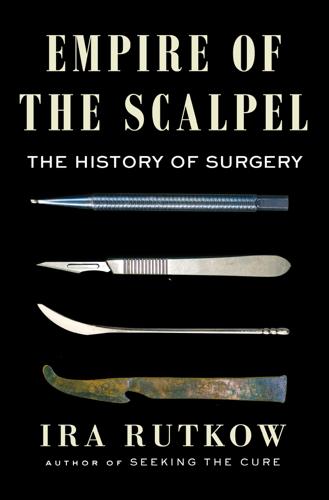
Empire of the Scalpel: The History of Surgery
by
Ira Rutkow
Published 8 Mar 2022
* * * Because Church authorities had little regard for Greco-Roman attitudes toward illness, the study of Hippocratic and Galenic texts waned. But, in the Byzantine Empire, the tradition of Hippocratic-Galenic medical practice continued. This kingdom, also known as the Eastern Roman Empire, was a carryover from the fallen Western Roman Empire, though situated in the Greek-speaking, eastern part of Europe and the Mediterranean. The political makeover was set in motion in AD 330, when Emperor Constantine the Great transferred the capital of what remained of the Western Roman Empire from Rome to Byzantium (later renamed Constantinople). The Byzantine Empire was distinguished by two key features: a focus on Greek rather than Latin culture, and the practice of a form of Orthodox Christianity (later termed “Greek Orthodox”).
…
The Byzantine Empire was distinguished by two key features: a focus on Greek rather than Latin culture, and the practice of a form of Orthodox Christianity (later termed “Greek Orthodox”). During its lengthy history, the borders of the Byzantine Empire underwent numerous shifts that proved important to the subsequent interplay between cultures. In the sixth century AD, under Justinian I, an aggressive military campaign resulted in the recapture of much of the territory of the Western Roman Empire, including North Africa and Italy. One hundred years later, a new enemy of the Byzantines, the Muslims, won a series of victories against them and established an Islamic caliphate that extended across the lands of Egypt, Palestine, and Syria.
…
No thought was given to singling out Paré’s remains, which are lost among the millions of human bones that rest in the catacombs of Paris. I. The Ottoman Empire was founded at the end of the thirteenth century in what is present-day Turkey. A century later, the Ottomans crossed into Europe and captured the Balkans, thus transforming their holdings into a transcontinental empire. In 1453, the Ottomans ended the Byzantine Empire with their conquest of Constantinople (the city would be renamed Istanbul). Over time, the empire became a multinational kingdom that included parts of central and southeast Europe, the Caucasus, western Asia, and North Africa and was at the center of relations between the Eastern and Western worlds for almost six centuries.

The Rough Guide to Cyprus (Travel Guide eBook)
by
Rough Guides
Published 30 Apr 2019
It has five domes over a nave and two aisles, with an additional small dome over an odd little annexe attached below the belfry, used as a reliquary. Inside is a range of frescoes, some of which are “aniconic” (that is, using crosses and abstract patterns rather than representations of human figures), dating from the period when the iconoclasts held sway in the Byzantine Empire. Later representational wall paintings date from the twelfth to the fifteenth centuries. Loukoumia – Cypriot delight Geroskipou is famous for its “loukoumia”, or what the rest of the world calls Turkish Delight. Indeed, it has Protected Geographical Indication, like champagne or Cornish pasties.
…
You can come across these little gems across the region, but especially on the north slopes of the range, sometimes in villages, sometimes in remote wooded areas. They are modest in construction, with steeply sloping wooden roofs (to shed snow during the winter) above stout rough stone walls. Inside, they are decorated with wonderful frescoes (and in some cases mosaics) which offer a glimpse of life and beliefs during the almost thousand years of the Byzantine Empire. Ten of these churches are collectively included on UNESCO’s World Heritage List (below are those churches that are most easily visited from locations covered in the Guide). Photography is not allowed inside the churches, but most sell guidebooks and/or postcards of the most notable paintings.
…
Soli soon flourished, though siding with the Ionians against the Persians led to it being sacked in 498 BC. Biblical scholars will also recall Soli as the site of St Mark’s baptism by St Auxibius, and it soon became an important Christian centre, particularly once the Edict of Milan (313 AD) had legalized the religion throughout the Byzantine empire. By the seventh century, however, the harbour was silting up, and a succession of Arab raids, especially the one in 653 AD, led to a gradual decline, such that by the ninth century AD Soli had been abandoned. The site Soli is vast, and only part of it has been excavated. Once you’ve parked and bought your ticket (get hold of a plan) you’ll see the ruins of the third-century AD Roman town down the hill to the right – the agora, a portico, the remains of a nymphaeum – and immediately ahead the remains of the great Byzantine basilica, protected by a roof, and with wooden walkways to allow visitor access.
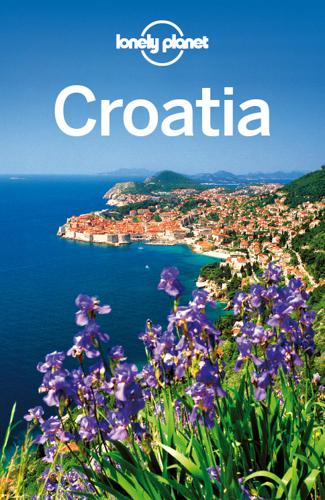
Croatia
by
Anja Mutic
and
Vesna Maric
Published 1 Apr 2013
On the east coast and off the beaten trail, Vrbnik is a cliff-top medieval village known for its ž lahtina wine. History The oldest-known inhabitants of Krk were the Illyrian Liburnian tribe, followed by the Romans who settled on the northern coast. Krk was later incorporated into the Byzantine Empire, then passed between Venice and the Croatian-Hungarian kings. In the 11th century Krk became the centre of the Glagolitic language. The oldest preserved example of the script was found in a former Benedictine abbey in Krk Town. Glagolitic was used here until the 19th century. In 1358 Venice granted rule over the island to the Dukes of Krk, later known as the Frankopans, who became one of the richest and most powerful families in Croatia.
…
After his death the great stone palace continued to be used as a retreat by Roman rulers. When the nearby colony of Salona (now Solin) was abandoned in the 7th century, many of the Romanised inhabitants fled to Split and barricaded themselves behind the high palace walls, where their descendants live to this day. First the Byzantine Empire and then Croatia controlled the area, but from the 12th to the 14th centuries medieval Split enjoyed a large measure of autonomy, which favoured its development. The western part of the old town around Narodni trg, which dates from this time, became the focus of municipal life, while the area within the palace walls remained the ecclesiastical centre.
…
It appears that Greek sailors came to the island for refuge against storms and to gather fresh water from the springs. At that time the island was populated by Illyrians, who erected hill forts and traded with the mainland. They were conquered by the Romans in 35 BC, who expanded the settlement around Polače by building a palace, baths and servants’ quarters. The island fell under the control of the Byzantine Empire in the 6th century and was later subjected to the 7th-century invasions of Slavs and Avars. After several centuries of regional rule from the mainland, Mljet was given to the Benedictine order in the 13th century, which constructed a monastery in the middle of Veliko Jezero. Dubrovnik formally annexed the island in 1410.

Discover Greece Travel Guide
by
Lonely Planet
The Romans were also the first to refer to the Hellenes as Greeks, derived from the word graikos – the name of a prehistoric tribe. The Byzantine Empire & the Crusades Roman rule began to crumble in AD 250 when the Goths invaded Greece, the first of a succession of invaders. In an attempt to save his empire, Roman Emperor Constantine I transferred the capital from Rome to Byzantium (present-day İstanbul) in AD 324. While Rome went into terminal decline, the Eastern capital began to grow in wealth and strength and Byzantine Greece managed to retain its stronghold over the region. The Frankish Crusaders brought about the demise of the Byzantine Empire in their mission to liberate the Holy Land from the Muslims.
…
Mystras IMAGE BROKER/LONELY PLANET IMAGES © Mystras Μυστράς The captivating ruins of churches, libraries, strongholds and palaces in the fortress town of Mystras (miss- trahss ) ( 27310 83377; adult/concession €5/3; 8am-7.30pm summer, 8.30am-3pm winter , a World Heritage–listed site, spill from a spur of the Taÿgetos Mountains 7km west of Sparta. The site is among the most important, historically speaking, in the Peloponnese. This is where the Byzantine Empire’s richly artistic and intellectual culture made its last stand before an invading Ottoman army, almost 1000 years after its foundation. At least half a day is needed to do justice to the ruins of Mystras. Wear sensible shoes and bring plenty of water. Mystras VIBE IMAGES/ALAMY © KASTRO & UPPER TOWN From opposite the upper entrance ticket office, a path (signposted ‘ kastro ’) leads up to the fortress.
…
RHODES ΡΟΔΟΣ The largest of the Dodecanese Islands, Rhodes ( ro- dos) is abundant in beaches, fertile wooded valleys, vivid culture and ancient history. Whether you seek the buzz of nightlife and beaches, diving in crystal-clear water or a culture-vulture journey through past civilizations, it’s all here. The atmospheric Old Town of Rhodes is a maze of cobbled streets spiriting you back to the days of the Byzantine Empire and beyond. Further south is the picture-perfect town of Lindos, a weave-world of sugarcube houses spilling down to a turquoise bay. Family friendly, Rhodes is the perfect base for day trips to neighbouring islands. The Colossus of Rhodes One of the Seven Wonders of the Ancient World, the bronze statue of Helios was apparently so vast that high-masted triremes (warships) were able to pass into the harbour through his legs.
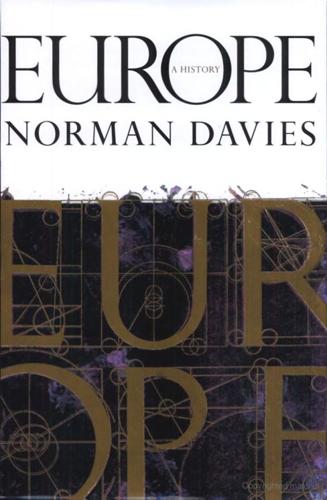
Europe: A History
by
Norman Davies
Published 1 Jan 1996
The earliest rock-cut monuments were constructed a millennium before.1 The procession of civilizations through Malta reads like a shorthand guide to European history.2 After the neolithic cave-dwellers, who built the megaliths, and the Bronze Age Beaker Folk, came the Carthaginians (from the seventh century BC) and then the Romans (from 218 BC). Gozo is often identified as ‘Calypso’s Isle’, where Odysseus was stranded. St Paul was shipwrecked in a bay named after him, north of Valletta, in AD 60. Allocated to the Eastern (Byzantine) Empire in 395, Malta was then ruled successively by Arabs (from 870), by Normans (from 1091), by the Knights Hospitallers (from 1530), by the French (from 1798), by the British (from 1802)—and from 1964, belatedly, by the Maltese themselves. Special prominence accrued to those districts where several of the desired commodities could be found in close proximity.
…
But, as shown by excavation of the royal tombs, it was subject to a high degree of hellenization before Philip of Macedon conquered Greece.1 [PAPYRUS] The Roman province of Macedonia stretched to the Adriatic [EGNATIA], and from the sixth century onwards was heavily settled by migrant Slavs. According to one theory, the Slavs mingled with the residue of the pre-Greek population to form a new, non-Greek Macedonian nation. The Byzantine empire was sometimes dubbed ‘Macedonia’ because of its Greek connections. But the former province of Macedonia, and much of the Peloponnese, was submerged in ‘Sclavonia’. In medieval times Macedonia was incorporated for a time into the Bulgarian empire, and remained permanently within the exarchate of the Bulgarian Orthodox Church.
…
Eagles recur throughout European heraldry, having been present at an earlier date in Islamic insignia.3 Both Serbia and Poland boast a white eagle, the Polish one crowned (and temporarily uncrowned by the Communist regime). Both Tyrol and Brandenburg-Prussia sported a red eagle, the Swedish province of Varmland a blue one. The Federal Republic of Germany took a single stylized black eagle from the city arms of Aachen. Under the dynasty of the Palaeologues, the Byzantine Empire took on the emblem of a black, double-headed spread eagle, symbol of the Roman succession in East and West. In due course this passed to the Tsars of Moscow, ‘the Third Rome’, to the Holy Roman Emperors in Germany, and to the Habsburgs of Austria. Ein Adler fängt kerne Mücken, runs the German proverb: ‘an eagle catches no midges’.

Vanished Kingdoms: The History of Half-Forgotten Europe
by
Norman Davies
Published 27 Sep 2011
Then, lacking all guidance, it disintegrated amid the general chaos.27 As Locke observed, the ‘inroad of foreign force’ supplies the most usual cause of state death. The Kingdom of Tolosa, the States of Burgundy, the Byzantine Empire, the Commonwealth of Poland-Lithuania, and Prussia (as an element of the Third Reich) were all destroyed by conquest. Yet conquerors do not always proceed to destroy their defeated adversaries; both the Byzantine and the Polish examples suggest that the health and strength of a conquered country plays a part, alongside the conqueror’s intentions, in the loser’s fate. By 1453, for example, the once-mighty Byzantine Empire had shrunk to the dimensions of a tiny city-state, before being picked off by the final siege.
…
AD 1000 15 The imperial Kingdom of Arles from 1032 16 The modern linguistic region Arpitania 17 The disintegration of imperial Burgundy 18 The Duchy and County of Burgundy in the fourteenth century 19 The States of Burgundy, fourteenth–fifteenth centuries 20 The Imperial Circles of the Holy Roman Empire 21 Pyrenees 22 Marches of Charlemagne’s Empire, ninth century 23 The cradle of the Kingdom of Aragon, 1035–1137 24 The Iberian peninsula in 1137 25 The heartlands of the Crown of Aragon 26 Aragonese Empire 27 The two medieval Sicilies 28 The Kingdom of Mallorca 29 The union of Castile and Aragon, 1479 30 Belarus 31 The ‘Land of the Headwaters’ 32 The Principalities of Polatsk, c. twelfth century 33 The Grand Duchy of Lithuania under Mindaugus (mid-thirteenth century) 34 The Grand Duchy of Lithuania with the other Jagiellonian lands, c. 1500 35 The Polish-Lithuanian Commonwealth from 1572 36 The Grand Duchy of Lithuania, 1572–1795 37 The Partitions of Poland-Lithuania, 1772–1795 38 Western gubernias of the Russian Empire in the nineteenth century 39 Istanbul and the Bosporus 40 Contraction of the Byzantine Empire 41 Kaliningrad oblast 42 Borussia – land of the Moravia 43 The Teutonic State, 1410 44 Royal and Ducal Prussia after 1466 45 Brandenburg-Prussia in 1648 46 The growth of the Hohenzollern Kingdom, 1701–1795 47 The Kingdom of Prussia, 1807–1918 48 The Eastern frontline, 1944–1945 49 Rome 50 Savoy and Piedmont 51 The Kingdom of Sardinia, c. 1750 52 Italy, 1859–1861 53 Northern Italy, spring 1860 54 West Ukraine 55 The Kingdom of Galicia and Lodomeria, c. 1900 56 Galicia in Austria-Hungary, c. 1914 57 Florence 58 The Kingdom of Etruria, 1801–1807 59 Napoleonic Italy, 1810 60 Free State of Thüringia and Northern Bavaria 61 Saxon mini-states, c. 1900 62 Montenegro, 2011 63 The tribes of Montenegro, c. 1900 64 Montenegro and neighbours, 1911 65 Yugoslavia after 1945 66 Modern Zakarpattia (Carpatho-Ukraine) 67 Czechoslovak Republic, 1920–1938 68 The Republic of Carpatho-Ukraine, 1939 69 Ireland, 2011 70 Northern Ireland in the late twentieth century 71 Estonia 72 The Baltic States between the wars 73 Union of Soviet Socialist Republics, 1945–1991 74 Russia’s western ‘near abroad’ after 1991 Introduction All my life, I have been intrigued by the gap between appearances and reality.
…
An ingenious solution was found by recognizing Juana’s Habsburg husband, Philip the Fair of Burgundy, as heir apparent to the Castilian throne. But in September 1506 he died as well. In an ironical twist of fate, a few months before Isabella’s death in November 1504, she and Ferdinand had been chosen to be joint emperors of the (defunct) Byzantine Empire. Yet the worst anxieties were misplaced. The torrent of premature deaths did not carry off everyone. Despite Juana’s mental illness, two of her sons, grandsons of Los Reyes Católicos, Carlos/Charles and Fernando/Ferdinand, grew to manhood. Both faced dazzling futures at the head of the Habsburg world.

Why the West Rules--For Now: The Patterns of History, and What They Reveal About the Future
by
Ian Morris
Published 11 Oct 2010
SMALLER WORLDS The Eastern and Western cores had each split in two. In China, the Eastern Jin dynasty ruled the southern part of the old empire, but saw themselves as rightful heirs to the whole realm. Similarly, in the West a Byzantine Empire (so called because its capital, Constantinople, stood on the site of the earlier Greek city Byzantium) ruled the eastern part of the old Roman Empire but claimed its entirety (Figure 6.8). The Eastern Jin and Byzantine Empires remained high-end states, with bureaucrats, taxes, and salaried armies. Each boasted great cities and learned scholars, and the farms of the Nile and Yangzi valleys were richer than ever.
…
Strategically, Justinian’s position was almost the opposite of Wendi’s when he united China. In China, all the northern “barbarian” kingdoms formed a single unit by 577, which Wendi used to overcome the rich but weak south. Justinian, by contrast, was trying to conquer a multitude of mostly poor but strong “barbarian” kingdoms from the rich Byzantine Empire. Reuniting the core in a single campaign, like Wendi’s in 589, was impossible. Justinian also had to deal with Persia. For a century a string of wars with the Huns, conflicts over taxes, and religious upheavals had kept Persia militarily quiet, but the prospect of the Roman Empire rising from the ashes demanded action.
…
The empires of the 630s were bankrupt, divided, and incapable of meeting this confusing new threat. In fact, most people in southwest Asia do not seem to have cared much whether Arab chiefs replaced Byzantine and Persian officials or not. For centuries both empires had persecuted many of their Christian subjects over doctrinal fine print. In the Byzantine Empire, for instance, since 451 the official position had been that Jesus had had two natures, one human and one divine, fused in a single body. Some Egyptian theorists retorted that Jesus had really had just one (purely divine) nature, and by the 630s so many people had died over this question that plenty of One-Nature* Christians in Syria and Egypt positively welcomed the Muslims.

Escape From Rome: The Failure of Empire and the Road to Prosperity
by
Walter Scheidel
Published 14 Oct 2019
Ottoman expansion in the early modern period likewise failed to improve on the Achaemenid population share of 2,000 years earlier, and later blips under Napoleon and Hitler remained both relatively modest and utterly ephemeral (figure 1.3).11 FIGURE 1.3 The proportion of the population residing in the area covered by the Roman empire at its peak that was claimed by the largest polity in that area, 450 BCE–2000 CE (in percent). KEY: Achaemenid empire: 450, 400, 350 BCE; Ptolemaic empire: 300, 250 BCE; Roman empire (Seleucid empire): 200 BCE; Roman empire: 150, 100, 50 BCE, 1, 50, 100, 150, 200, 250, 300, 350, 400 CE; Byzantine empire (Western Roman empire): 450; Byzantine empire: 500, 550, 600, 650; Umayyad empire: 700, 750; Frankish empire: 800, 850, 900, 950; Fatimid empire: 1000, 1050; Holy Roman Empire (France): 1100, 1150, 1200, 1250; France: 1300, 1350, 1400, 1450, 1500; Ottoman empire: 1550, 1600, 1650, 1700, 1750; France: 1800, 1812, 1815, 1850, 1900, 1933; Germany: 1943; United Kingdom: 1945, 1950; Egypt: 2000.
…
FIGURE 1.4 The proportion of the population of Europe claimed by the largest polity in that area, 250 BCE–2000 CE (in percent). KEY: Roman empire: 250, 200, 150, 100, 50 BCE, 1, 50, 100, 150, 200, 250, 300, 350, 400 CE; Western Roman empire: 450; Ostrogothic kingdom/Visigothic kingdom: 500; Byzantine empire (Frankish empire): 550; Frankish empire: 600, 650, 700, 750, 800, 850; Frankish empire: 900, 950; Holy Roman Empire: 1000, 1050, 1100, 1150, 1200, 1250; France: 1300, 1350, 1400, 1450, 1500; Spanish Habsburg empire: 1550, 1600; France: 1650, 1700, 1750, 1800, 1812; Russia: 1815, 1850, 1900, 1933; Germany: 1943; Russia: 1945, 1950, 2000.
…
After taking over the Hungarian plains, they conducted almost annual raids into Germany, France, and Italy, either as allies of parties in local conflicts or on their own, and scored major victories over all three parts of the Frankish domain between 899 and 910. At various points, the German kingdom, several of its princes, and the Byzantine empire acceded to tributary demands. In 942 the Magyars even briefly entered the Iberian peninsula. Only decisive defeat in 955 ended their incursions. Although Otto I’s victory boosted his standing and that of the German kingdom-empire, as we saw in chapter 5, it did not have any enduring effect on European polycentrism.
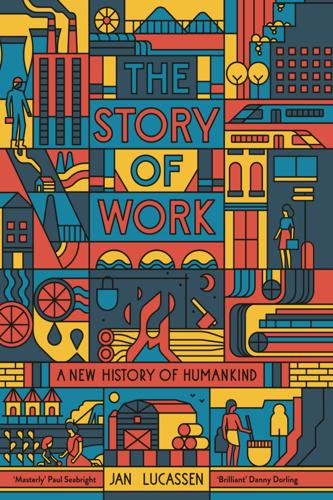
The Story of Work: A New History of Humankind
by
Jan Lucassen
Published 26 Jul 2021
The new religion did, however, plead for the proper treatment of slaves, and it rejected the enslavement of fellow believers – equals within the societas christiana. With a little licence, one could argue that the central identity of a citizen in classical antiquity was now giving way to that of fellow believers. This applied to both the Byzantine Empire and the Islamic states emerging from the seventh century – and that had particular implications for the existence of slavery. This was primarily because the public law of the Byzantine Empire outstripped private law. Byzantine jurists in the eleventh century stated it simply: ‘Compared to the emperor’s power, the authority of the pater familias is nothing’,113 with all the implications of this for his power over slaves.
…
This remained at the same level in the Middle East, but did, however, decline sharply on both its flanks, and we must therefore ask ourselves what this says about the organization of labour there, in contrast to the comparably much greater continuity of the market economies at the centre of the Middle East, as well as in China. Roman labour relations continued and modified by Byzantines, Sassanians and Arabs The Byzantine Empire was a continuation of the Roman Empire not only in name but also de facto.112 In turn, it had a major influence on its new neighbours and competitors, the Islamic empires in the south and the Slavic empires in the north. Of course, not everything remained the same during the thousand years of its existence.
…
A church marriage could only be concluded between free people. If a master wanted to marry a slave, then he had to let her go or buy her freedom. Their children were thus automatically free.114 In this same context, Jews and Muslims were prohibited from owning Christian female slaves. Yet, there were plenty of slaves in the Byzantine Empire, whether in rich households, in urban trades or in agriculture, although there are no numerical estimates such as those available for classical antiquity. The main source of new slaves was, of course, prisoners captured in the wars that the empire was constantly embroiled in, especially when these were non-(orthodox) Christians, such as the pagans of the Balkans, Muslims, Zoroastrians from the Sassanian Empire and, if it worked out that way, Latin Christians.

Double Entry: How the Merchants of Venice Shaped the Modern World - and How Their Invention Could Make or Break the Planet
by
Jane Gleeson-White
Published 14 May 2011
These incidental results appeared first in the city-republics of northern Italy: Pisa, Venice, Florence and Genoa, trading centres which used their wealth or strategic position to free themselves from their feudal chains, from the rule of local aristocrats and the Church. Pisa was the first to gain its freedom, granted independence from its local lord by the Pope in 1081. Venice was next. In 1082, the Byzantine emperor’s Golden Bull guaranteed Venetian merchants tax-free travel throughout the Byzantine empire west of Constantinople, in return for Venice’s assistance with his battles against the Normans. The emperor’s Golden Bull proved golden indeed: thirteen years after it was granted, the first Crusade reopened the eastern Mediterranean—and the merchants of Venice found themselves kings of a lucrative trade empire which spread to Greenland in the north and east to Peking.
…
For its forbidden trade with the infidel, Venice incurred the wrath of the Pope and was excommunicated several times during the fifteenth century. Pragmatism was the guiding principle of Venice and had brought it stupendous wealth and power. Its rise to commercial prominence began in the ninth century, founded on its favourable terms of trade with the Byzantine Empire; its monopoly of salt, a commodity then more desirable than gold for its ability to preserve food; and its rule of the waves. Venice’s relationship with the sea was so essential to its survival that it was celebrated annually in an elaborate wedding ceremony. For eight centuries from 997 the city of Venice, in the person of its ruler the Doge, married the Adriatic Sea; every year on Ascension Day the Doge sailed across the lagoon in full wedding regalia to the entrance to the Adriatic and tossed a diamond ring into its briny depths, vowing: ‘O sea, we wed thee in sign of our true and everlasting dominion.’
…
abacus 19, 38, 40, 154 abbaco mathematics 40–1, 42, 44, 48, 56 schools 41, 44, 45, 63 texts 63, 64 ABC Learning 208–12 accountability 15, 141 accountancy (profession) 136, 142, 145, 146, 150–5, 158–9, 193, 199–200 enhanced role 203, 205–6 in need of reform 217 accountants 149, 150 increased workload 144, 145 invention of writing 11–12, 13–14 professional organisations 150–3 accounting 125–6, 215–16 arbitrary 236 art or science 156–7, 158 with clay tokens 12–13 for the Earth 249 father of 27–8, 34 firms 217 ‘good’ 125–6 governmental 120 green 244 international 189, 207 in modern era 141 origins 132, 133 principles-based 211 significance 14 standards 206–14 use of numbers 218 see also accountancy; accounts Accounting Standards Committee (UK) 206 accounts books for 99–100, 117–18, 119, 166, 170 meaning of 11, 218 with public offices 107–9 setting up 97 accrual accounting see corporate accounting Addison, Joseph 125 Adelard of Bath 39 Adler, Rodney 213 Aho, James 172 Ahrens, Frank 220 AIG 5 Alberti, Leon Battista 32, 58–61, 69, 117, 126, 171 algebra 38, 40, 41, 58, 67, 76 derivation of word 39 al-Haytham, Ibn 64 al-Khwarizmi, Muhammad ibn Musa 38–9, 66 Amazon rainforest 224 America see United States American Civil War 145 Amman, Jost 119 Anghiari, Battle of 30, 34 Anglo Irish Bank 5 Antwerp 119, 120 Arabic mathematics 18–19, 38–9, 63 Arabic numerals 18–19 Archimedes 37, 66, 73, 75 Aristotle 96, 172 arithmetic 20, 36, 38, 40, 41, 81 commercial 36, 41 Arte di Cambio (Guild of Money Changers) 26 Arthur Andersen & Co. 199, 204, 207, 208, 212, 214–15, 216, 217 Asia 22, 188 asset valuation 146, 218–19 astrology 29–30, 36, 38, 42 Athens 15 auditing 149, 200–1, 204, 215, 216 audit expectations gap 210 Augustine 35 Australia 153 corporate scandals 207–14 environmental accounting 233–6 Australian Bureau of Statistics 230, 232, 236 Australian Securities and Investments Commission (ASIC) 209–10, 213 Bacon, Roger 40 Badoer, Jachomo 52–5 bahi-khata 22 balance sheets 5, 219 Balfour, Robert 151–2 Bank of Credit and Commerce International 207 Bank of England 124 banking 25–6, 50, 54 bank accounts 109 bank transfers 54 bankruptcy 145, 150 barter 55, 60 Belcher, John 153 Bell Resources 208 Bellini, Gentile 56–7 Belmont Report (1979) 173 Bentley, Thomas 137, 138 Bible 116 Big Macs –4 bills of exchange 25, 53–4 biodiversity 9, 247–8 bioethics 173 Blake, William 154 Blanc, Louis 162–3 Boethius 38, 43 Bond, Alan 208 Book of Addition and Subtraction According to the Hindu Calculation 39 bookkeeping in Antwerp 119 early Renaissance 96 in Florence 21–2 Marx’s view 164–5 moral dimension of 124–6, 172 and planet Earth 8–9 texts 117, 118–21 Venetian 6–7, 27, 55, 56, 58, 67, 78, 92, 100, 117, 146 Botticelli 65 Bragadino, Domenico 58 Braudel, Fernand 61 Britain see United Kingdom Brougham, Henry 150 Brown, Richard 144 Brunelleschi 44 Bubble Act 142 Buffett, Warren 198, 200 Burckhardt, Jacob 59 Burroughs, William S. 203–4 Burton PLC 205 Bush, George W. 214, 215 business 96, 132, 136, 172 changes to 248 setting up 93–4, 96 see also commerce Byzantine Empire 18, 51 currency 55 Caetani, Daniele 89 calculating machines 203–4 California, electricity cuts Canada 153, 188 capital 101, 103, 143, 147, 231 international 253–4 regulation 144–5 see also human capital; natural capital capital accounts 112, 163, 166 capitalism 8, 29 derivation 162–3, 171 and double entry 159–60, 161–75 mercantile 170 modern era 183, 221, 224, 249 Sombart’s definition 162, 164 Capitalism, Socialism and Democracy (Schumpeter) 169–70 Capitulare de Villis 16 carbon sequestration 240 Cardan, Girolamo 76 Carnegie, Andrew 156 Carruthers, Bruce G. 172–3 cash 101, 103, 122 cash-flow statements 5, 219 Cathedral of Santa Maria del Fiore 44, 59 Certified Public Accountants 157 Charlemagne 16–17, 38 Charles V 23 Chartered Accountants 152, 157 cheques 24–5 chess 87–8 Chiapello, Eve 163, 164, 171 Christian Church 38, 40, 51, 54, 59, 62, 68, 85 Christoffels, Jan Ympyn 119, 120, 121 Christofle, Charles 125 Churchill, Winston 183 Cicero 15, 126, 172 Clarke, Anthony 32–3 Clarke, Frank L. 203 clay tablets 13 clay token accounting 12–13, 14 climate change 232, 245 clocks 23 Code of Hammurabi 14 coinage 15 Columbus, Christopher 18 commerce 140, 167, 168, 173 13th century Florence 21 and art Italy, Dark Ages 6 medieval Europe 26, 42, 67, 96 recording transactions 14, 105–7, 108 and religion 24, 96 see also business Companies Act 1862 144 Companies Act 1900 149 Companies Act 1929 202 Constantinople 29, 34, 50, 52–3, 54, 61 consumption 179, 248 Cooper, William 145 Copernicus 167 copyright 63, 78 corporate accounting 193, 216 scandals 194–203, 206, 207–14, 215, 225 corporations 123, 144–9, 155, 199–200, 206 in need of reform 221–5 transparency cost accounting 138–9, 149, 156 cost-benefit analysis 250–1 costs fixed/variable 138 measuring 218–19 counting 19 credit see debit and credit entries Cremonensis, Jacobus 66 Crosby, Alfred W.
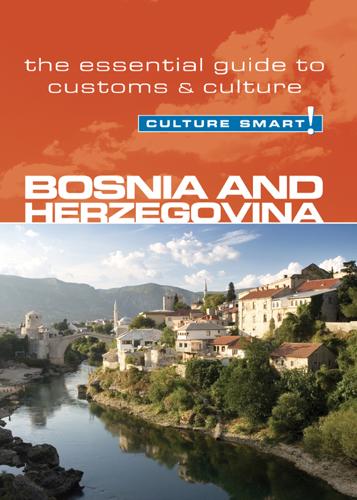
Bosnia & Herzegovina--Culture Smart
by
Elizabeth Hammond
Published 11 Jan 2011
Roman soldiers were encouraged to settle in the region and Roman culture permeated the Balkans, heralding the introduction of the Latin alphabet and Christianity. However, traditional beliefs persisted in the more isolated areas. On the division of the Roman Empire into two in 395 CE, Bosnia stayed in the west, along with modern-day Croatia and Slovenia, while Serbia to the east became part of the Byzantine Empire. The Slavic Settlement The Western Roman Empire dissolved in the fifth century, and various groups attacked the region over the next few centuries, including the Goths, the Asiatic Huns, the Iranian Alans, the Turkish Avars, and, most importantly, the Slavs. The Slavs became the dominant group sometime after the sixth century, and established agricultural colonies throughout the entire Balkan region.
…
The Slavs became the dominant group sometime after the sixth century, and established agricultural colonies throughout the entire Balkan region. They integrated into Bosnian culture over the next several centuries, creating a uniquely diverse ethnic group with pagan, Roman, Hellenistic, Celtic, and Slavic elements. The influence of the Slavs and the fall of the Roman Empire in the west brought Bosnia into the orbit of the Byzantine Empire. Now there was pressure from both the Latin West and the Orthodox East to turn Bosnia into a Christian land, and Orthodox and Catholic forces continued to vie for influence into the Middle Ages. The Slavs in Bosnia resisted adopting either, preferring a specific form of Christianity developed by Slavic missionaries in the ninth century.
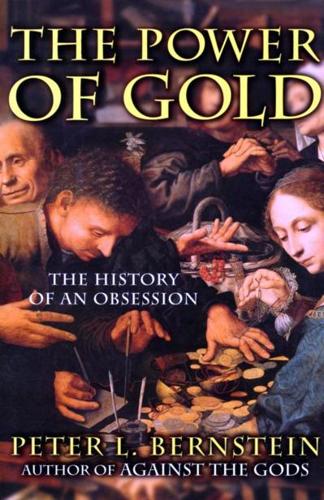
The Power of Gold: The History of an Obsession
by
Peter L. Bernstein
Published 1 Jan 2000
In Europe, brand-new kingdoms whose leaders had never heard of Croesus or Crassus launched their gold coinage as soon as they could; the jeweler's art flourished as well, even under the most primitive political conditions; and the traditional marriage between golden ornamentation and religion-though bumpy, like many marriages-never quite came to a state of divorce. We look first at Constantinople, in part because its history is less familiar than Europe's. More important, gold was a dominant factor in the Byzantine Empire long before it became such a preoccupation in the West. The Byzantine emperors ruled from Constantinople for over one thousand years. By and large, they were a decadent, corrupt, conspiratorial, cruel bunch of people. The grisly story of Irene was typical. In 780, Irene became guardian of her ten-year-old son, Constantine VI, but the degree of power that guardianship provided her was both insufficient and too transitory for her taste.
…
Upon the arrival of his mutilated troops, the tsar promptly died of a heart attack from the shock.' The Byzantine emperors may have debased their regimes morally and politically, but the integrity, purity, fame, and acceptability of Constantine's golden bezant was an overriding preoccupation with all of them. The entire history of the Byzantine Empire is marked by its obsessive focus on gold, not only as money but also as an advertisement of unrivaled opulence. Gold served as the key instrument that the emperors used along with cruelty and repression to bind together their sprawling, disparate territorial domains. The golden bezant financed the empire's imports, its armies, and its alliances with other nations.
…
In more recent times, however, when England opted out of the European Monetary Union in 1992 and left the pound free to depreciate in value, exports improved immediately and economic growth jumped ahead while England's former and more correct partners on the Continent languished in economic stagnation. Lopez hypothesizes that the deeper reasons for the contrasts he cites may have developed from significant differences in national structure. "England and the Byzantine empire were centralized monarchies with powerful landed aristocracies," he writes, "whereas merchants and other businessmen were at the helm in the Italian communes, and bankers and ... businessmen were influential in the ... Caliphate when inflation began." Kings associate the purity of their coinage with their own dignity, he declares; surely this was the case with the emperors reigning in Constantinople.

More: The 10,000-Year Rise of the World Economy
by
Philip Coggan
Published 6 Feb 2020
No Roman coins have yet been found in China, but Byzantine coins, dating from the sixth century, have been discovered, along with Sasanian coins from the third to the seventh centuries.6 Chinese coins from the eighth and ninth centuries have been found on the east African coast.7 One of the key conduits of trade in this period was the Sogdian empire, an Iranian civilisation that lived in what is now Uzbekistan and Tajikistan. The Sogdians created the great trading centre of Samarkand, and dealt in goods like musk, silk, silverware and slaves with the Byzantine empire, the Indians and the Chinese. Their activities seemed to reach their height in the fifth and sixth centuries CE.8 The Sogdians were early traders on what has become known as the “Silk Road”, although the term was not coined until 1877 by Baron Ferdinand von Richthofen. The terminology makes the route seem a lot more substantial than it was in real life.
…
The rise of Islam In a period of population movements, one shift outranks all the others. The Prophet Mohammed and his followers left Mecca for an oasis called Yathrib (now Medina) in 622CE. In one of the most successful campaigns in history, by 644CE the group had conquered the whole of Arabia, part of the Sasanian empire, and the Syrian and Egyptian provinces of the Byzantine empire. In the late seventh century, the Arabs extended their control across much of North Africa, and in the eighth century, they conquered much of Spain and the Indus valley (in northern Pakistan). In 751, an Islamic army defeated the Chinese at the battle of Talas, somewhere near the border of modern Kazakhstan and Kyrgyzstan.
…
Trade between regions enhanced general prosperity. Italian cities The Italian root of words like commendia shows where the “commercial revolution” developed. A group of Italian cities led the way – Venice, Genoa, Amalfi and Bologna. Venice benefited from its ability to trade with both the Byzantine empire of Constantinople and the Islamic caliphate in Egypt. The city gave naval aid to Byzantium in 1080 and was rewarded with a special charter called the Golden Bull, which gave the city trading privileges and exemptions from tolls.9 Venice also seized control of Constantinople in 1204 under the Fourth Crusade, and its Latin empire lasted until 1261.
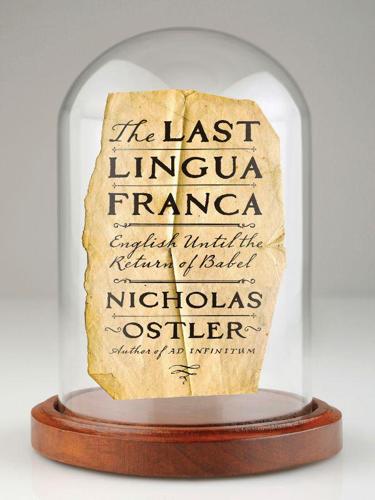
The Last Lingua Franca: English Until the Return of Babel
by
Nicholas Ostler
Published 23 Nov 2010
Thus the western Mediterranean from Portugal to Italy, traditionally the playground of French foreign policy, had been accessible in French, while the eastern shores and islands, through the commercial influence of the Venetians and Genoese, had been approached in Italian (or its creolized version, Lingua Franca itself ). Inland, the age-old presence of the Orthodox faith and Greek merchants, which went back to the Byzantine Empire, had kept Greek as a widespread language of the Balkans.* In the north and east of Europe, including Scandinavia, the Baltic, and much of central Europe, it was German that had been current, its familiarity derived from various sources. These included the Hanseatic League, based in L -beck, which had dominated Baltic and North Sea trade from the thirteenth century for over three hundred years; the Teutonic Knights in much the same period of the Baltic states, bringing German monks to convert the people, and settlers to control territory; and of course the Holy Roman and later Austrian empires, German-speaking powers that had controlled the interior since the beginning of the second millennium.
…
Khorasan became theirs alone, and the Ghaznavids were compelled henceforth to look south, for new conquests in India. The Seljuqs went on to destroy Buyid control of the east of the Caliphate, taking Baghdad in 1055 (and receiving the caliph’s blessing as his liberators), and in 1071, for good measure, defeating the Byzantine Empire at Manzikert, so opening up Anatolia to Turkic colonization over the next few centuries. In 1089, they defeated the Qarakhanids too, but did not dispossess them, holding them rather as their vassals (muqta ) for the next fifty years. It might have been expected that these different ruling dynasties, Ghaznavid, Qarakhanid, and Seljuq, would have brought a new lingua-franca to the Middle East in the eleventh century.
…
Likewise (as we have seen, page 81) in Kho-rasan, the actual conversion of accounts from Pahlav to Arabic only took place in 742, under the famed governor Nasr bin Sayyar. North Africa in the seventh century had undergone at least two disorienting changes under the late Roman Empire. The Vandals (speaking a close relative of Gothic, and using it to worship according to the Arian sect of Christianity) had ruled from 439 to 533; then the Byzantine Empire had reasserted “Roman” rule from 533 to 696. (Part of the settlement after the Byzantine victory by Belisarius was that all Vandals should be deported from the country; so one language not to survive the war would have been Vandal.) The linguistic situation in North Africa would have been complicated during this era, since the victorious forces would have followed the Greek Orthodox rite, and in 620 the emperor Heraclius actually changed the official language of his empire from Latin to Greek (yielding to that stubborn language that had never lost its hold— as vernacular and as lingua-franca—on the east).
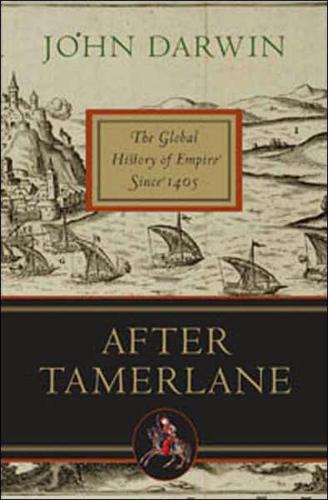
After Tamerlane: The Global History of Empire Since 1405
by
John Darwin
Published 5 Feb 2008
After 600, the imperial heartland in Western Eurasia was itself convulsed by the rise of Islam and the amazing speed with which Muslim armies overran much of the Near East (including Iran), Egypt, North Africa and most of Spain. The Byzantine Empire, Rome’s legatee, shrank to the point where its survival was doubtful. For a time it seemed as if the whole of Mediterranean Europe would be annexed as part of the Islamic world. Charlemagne’s attempt to build a neo-Roman regime in the West had fallen apart by 843. It was the astonishing recovery of the Byzantine Empire in the ninth century, and the gradual consolidation of a feudal order in Western Europe in the eleventh, that marked the beginnings of Europe’s emergence as a viable, separate world civilization.
…
In fact it was shaped by the impact of immigrant peoples in the European East (like Magyars and Bulgars), cultural imports (like Near Eastern monasticism), and the commercial stimulus of the Islamic Near East with its insatiable appetite for furs and other northern commodities.28 But at the height of Islamic expansion before AD 1000 it had been the Byzantine Empire (‘Romania’) with its great fortified capital that had played the most important part in preserving a Christian Europe and defining its scope. Byzantine sea power helped to fend off the Muslim invasion of Italy (Sicily had fallen in the early 800s) that might otherwise have driven the medieval West beyond the Alps.
…
Byzantine models of centralized, autocratic government, and of military and naval organization, inspired the post-Roman states in the European West.29 The rise of Venice to become the great emporium for the West’s trade with the East was closely connected with the Byzantine recovery; culturally, Venice was really an outpost of the great metropolis at Constantinople – as its architecture revealed. By 1400, of course, the Byzantine Empire had crumbled almost to nothing: the fall of Constantinople to the Ottomans in 1453 was the dramatic finale to a long collapse. The balance of power within Europe had long since shifted to the Latin West. But Byzantine influence endured. Liberating the empire’s former (Christian) subjects from Ottoman rule became a European mania.

The Atlas of Disease
by
Sandra Hempel
Published 15 Sep 2018
Regardless, many experts, including Loeffler, accept that the infection was well-known in ancient Egypt, Syria and Palestine. Some of the more recent accounts in the West of a disease that appears to be diphtheria date from sixth-century France, from Rome in 856 and 1004, and from parts of the Byzantine empire in 1039. Loeffler also refers to what he believed was an outbreak in England in 1389, which he said killed many children. As with scarlet fever – with which it was often confused – diphtheria favours the young. The Strangler The first recorded major epidemic seems to have been in France in 1562–98 during the religious wars between the Catholics and the Huguenots.
…
More recent theories suggest it originated in sub-Saharan African, possibly Kenya, Uganda, and/or Zaire, before either moving into Egypt or taking a different route to the Byzantine capital. Other experts believe the source was from the region spanning what is now Russia and China, now generally agreed to be the source for the Black Death some eight hundred years later. Typically, when winter arrived in Constantinople, plague petered out, only to erupt again across the Byzantine Empire the following spring. The epidemics then continued sporadically until the eighth century. The disease is caused by the bacterium Yersinia pestis, which is usually spread from rodents to humans by the bite of an infected flea, but it can also be spread by either inhaling droplets when a victim coughs or sneezes or by direct contact with infected tissue.
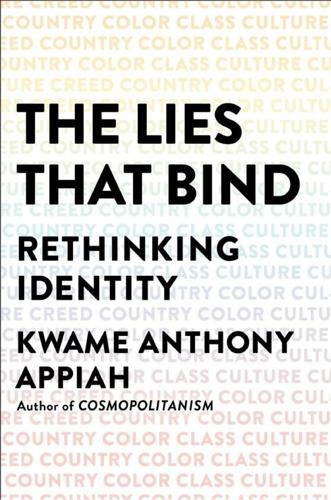
The Lies That Bind: Rethinking Identity
by
Kwame Anthony Appiah
Published 27 Aug 2018
Christendom was divided among even more rulers, although in Europe the great majority of them respected to some degree the authority of the popes in Rome. Each of the two religions covered vast areas—the Umayyad empire at its height extended for over 4.3 million square miles and comprised nearly 30 percent of the world’s population; Charlemagne’s Holy Roman Empire covered some 460,000 square miles in Western Europe, and the Byzantine Empire (the eastern heir to the Roman Empire) was only a little smaller at the time of Charlemagne’s death, in 814. At the end of the eleventh century, the First Crusade opened up another military front between European Christians and the Muslim world. In 1095, at Clermont in France, Pope Urban II, at the urging of Alexios I Komnenos, emperor of Byzantium, declared that anyone who, “for the sake of devotion, but not for money or honor,” set out to liberate Jerusalem from Muslim control would no longer need to do any other penance for their sins.
…
J., 182 Baghdad, Iraq, 196 Balkans, the, 195, 201 “Ballad of Walter White, The” (Hughes), 130 Baltic States, 77, 79 Bangladesh, 58 Bannockburn, Scotland, 102 Baruch, Book of, 50 Basho, Matsuo, 208 Bayreuth, Germany, 126 Beethoven, Ludwig van, 82 Belgium, xi, 84 Bengal, 78, 137 Berlin, Germany, 77, 125 Berlin, Isaiah, 165 Bethnal Green (London, England), 153, 154, 168, 175 Betjeman, Sir John, 61 Bevin, Ernest, 174 Bible, 43, 50–52, 54, 57, 112 Bieber, Justin, 205 Blyden, Edward W., 122, 123 Bodrum, Turkey, 192 Bohemia, 72 Bonwire, Ghana, 101, 208 Book of Snobs (Thackeray), 23 Boston, Massachusetts, 152, 168 Bourdieu, Pierre, 21, 23, 24 Brandenburg, Germany, 108 Brazil, 72 Bristol, England, 139, 174 British Empire, 87, 93, 139 British India, 78 Brittany, 5, 77 Brontë, Charlotte, 144, 158 Brown, Michael, 132 Bruck, Karl Ludwig von, 83 Buddha, 60, 208 Bulgaria, 77, 195 Burney, Fanny, 155, 157 Burns, Robert, 82–84, 86, 87, 103, 104, 205 Burr, Aaron, 150 Burton, Isabel, 83 Byron, George Gordon (Lord), 82 Byzantine Empire, 194 Byzantium, 193, 194, 197 Cadmus (king of Thebes), 175 Caledonia, 82, 103 Cambodia, 127 Camus, Albert, 182 Canada, 45, 87 Canterbury Tales (Chaucer), 145 Cape Town, South Africa, xi Caribbean, 123, 132, 150 Carthage, 110 Catalonia, 90, 103 Caucasus, 79 Cavafy, C. P., 213, 215, 216, 218 Cecilia (Burney), 157 Central Asia, 79, 120, 193, 194 Central Europe, 77 Cervantes, Miguel de, 115 Charlemagne (Holy Roman Emperor), 193, 194, 197 Charles I (king of England), 145 Chaucer, Geoffrey, 145, 199 Childhood and Society (Erikson), 3 China, 18, 88, 90, 92, 93, 95, 96, 123, 126, 128, 129, 174 Chinatown, Singapore, 96 Chomsky, Noam, 38 Chrétien de Troyes, 187, 195, 205, 211 Christy, Henry, 189 Churchill, Winston, 126, 160 Cicero, 210 Cirencester, England, 7 Citizen of the World, The (Goldsmith), 204 Clement I (Roman pope), 52 Clermont, France, 194 Cleveland, Grover, 137 Cligès (Chrétien de Troyes), 187 Cobb, Jonathan, 168 Cobden, Richard, 83 Cockfosters (London, England), 139 Collier, John Payne, 155, 156 Colonsay, Scotland, 87 “Commentator, The” (ibn Rushd), 198 Condition of the Working Class in England, The (Engels), 158 Constantine (Roman emperor), 65 Constantine VII (ruler of Byzantium), 197 Constantinople, Byzantine Empire, 197 Córdoba, Caliphate of, 197, 199 Corinth, 54, 61 Corinthians, First Book of, 48, 52, 54–55 Cornwall, England, 77 Corsica, 5 coscienza di Zeno, La (Svevo), 84 Cotswold Hills, England, xi Crazy Rich Asians (Kwan), 162 Crenshaw, Kimberlé, 19 Crimea, 89 Crimean Peninsula, 89 Cripps, Alfred (Lord Parmoor), 7 Cripps, Joseph, 7 Cripps, Stafford, 160, 161, 175 Cromwell, Oliver, 75, 182, 183 Cuba, 140, 189 Culture and Anarchy (Arnold), 189, 190 Czechoslovakia, 77 Dahomey, Kingdom of, 26 Dalton, Hugh, 175 Danelaw, 76 Dante, 207 Darwin, Charles, xv, 118 Davis, Miles, 206 “Dead, The” (Joyce), 84 De anima, (Aristotle), 198 De jure maurorum (On the Law of the Moors; Amo), 109 De materia medica (Dioscorides), 197 De rerum natura (Lucretius), 44 Decline of the West, The (Spengler), 201 Delhi, India, 16 Delano, William Adams, 138 Democracy in America (Tocqueville), 151 Denkyira, West Africa, 123 Descartes, René, 109, 116, 122 Deuteronomy, Book of, 52 Devon, England, 137 Devonshire, Duchess of (Deborah Vivien Cavendish), 163 Devonshire, Duke of (William George Spencer Cavendish), 155, 156 Didache, 52 Dimensions of a New Identity (Erikson), 4 Diop, Cheikh Anta, 203 Dioscorides, Pedanius, 197 Doctor Thorne (Trollope), 144 Donald, David Herbert, 151 Don Quixote (Cervantes), 115 Dorset, England, 7 Doveri dell’uomo (Mazzini), 69 Downton Abbey (TV program), 149 Dream Hoarders (Reeves), 173 Dublin, Ireland, 139, 215 Du Bois, W.
…
P., 213, 215, 216, 218 Cecilia (Burney), 157 Central Asia, 79, 120, 193, 194 Central Europe, 77 Cervantes, Miguel de, 115 Charlemagne (Holy Roman Emperor), 193, 194, 197 Charles I (king of England), 145 Chaucer, Geoffrey, 145, 199 Childhood and Society (Erikson), 3 China, 18, 88, 90, 92, 93, 95, 96, 123, 126, 128, 129, 174 Chinatown, Singapore, 96 Chomsky, Noam, 38 Chrétien de Troyes, 187, 195, 205, 211 Christy, Henry, 189 Churchill, Winston, 126, 160 Cicero, 210 Cirencester, England, 7 Citizen of the World, The (Goldsmith), 204 Clement I (Roman pope), 52 Clermont, France, 194 Cleveland, Grover, 137 Cligès (Chrétien de Troyes), 187 Cobb, Jonathan, 168 Cobden, Richard, 83 Cockfosters (London, England), 139 Collier, John Payne, 155, 156 Colonsay, Scotland, 87 “Commentator, The” (ibn Rushd), 198 Condition of the Working Class in England, The (Engels), 158 Constantine (Roman emperor), 65 Constantine VII (ruler of Byzantium), 197 Constantinople, Byzantine Empire, 197 Córdoba, Caliphate of, 197, 199 Corinth, 54, 61 Corinthians, First Book of, 48, 52, 54–55 Cornwall, England, 77 Corsica, 5 coscienza di Zeno, La (Svevo), 84 Cotswold Hills, England, xi Crazy Rich Asians (Kwan), 162 Crenshaw, Kimberlé, 19 Crimea, 89 Crimean Peninsula, 89 Cripps, Alfred (Lord Parmoor), 7 Cripps, Joseph, 7 Cripps, Stafford, 160, 161, 175 Cromwell, Oliver, 75, 182, 183 Cuba, 140, 189 Culture and Anarchy (Arnold), 189, 190 Czechoslovakia, 77 Dahomey, Kingdom of, 26 Dalton, Hugh, 175 Danelaw, 76 Dante, 207 Darwin, Charles, xv, 118 Davis, Miles, 206 “Dead, The” (Joyce), 84 De anima, (Aristotle), 198 De jure maurorum (On the Law of the Moors; Amo), 109 De materia medica (Dioscorides), 197 De rerum natura (Lucretius), 44 Decline of the West, The (Spengler), 201 Delhi, India, 16 Delano, William Adams, 138 Democracy in America (Tocqueville), 151 Denkyira, West Africa, 123 Descartes, René, 109, 116, 122 Deuteronomy, Book of, 52 Devon, England, 137 Devonshire, Duchess of (Deborah Vivien Cavendish), 163 Devonshire, Duke of (William George Spencer Cavendish), 155, 156 Didache, 52 Dimensions of a New Identity (Erikson), 4 Diop, Cheikh Anta, 203 Dioscorides, Pedanius, 197 Doctor Thorne (Trollope), 144 Donald, David Herbert, 151 Don Quixote (Cervantes), 115 Dorset, England, 7 Doveri dell’uomo (Mazzini), 69 Downton Abbey (TV program), 149 Dream Hoarders (Reeves), 173 Dublin, Ireland, 139, 215 Du Bois, W.
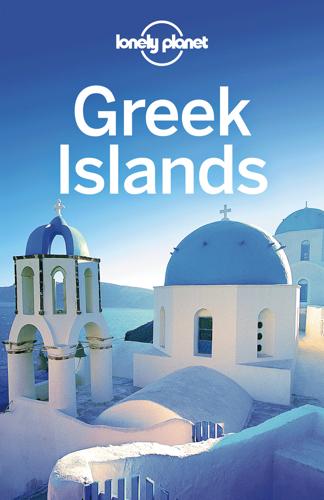
Lonely Planet Greek Islands
by
Lonely Planet
,
Alexis Averbuck
,
Michael S Clark
,
Des Hannigan
,
Victoria Kyriakopoulos
and
Korina Miller
Published 31 Mar 2012
In the ensuing centuries, Byzantine Greece faced continued pressure from Venetians, Franks, Normans, Slavs, Persians and Arabs; the Persians captured Rhodes in 620, but were replaced by the Saracens (Arabs) in 653. The Arabs also captured Crete in 824. Other islands in the Aegean remained under Byzantine control. The Byzantine Empire began to fracture when the renegade Frankish leaders of the Fourth Crusade decided that Constantinople presented richer pickings than Jerusalem. Constantinople was sacked in 1204 and much of the Byzantine Empire was partitioned into fiefdoms ruled by self-styled ‘Latin’ (mostly Frankish or western-Germanic) princes. The Venetians, meanwhile, had also secured a foothold in Greece. Over the next few centuries they took over key mainland ports, the Cyclades, and Crete in 1210, and became the most powerful traders in the Mediterranean.
…
After the subdivision of the Roman Empire into east and west, Athens remained an important cultural and intellectual centre until Emperor Justinian closed its schools of philosophy in AD 529. The city declined, and between 1200 and 1450, Athens was continually invaded: by the Franks, Catalans, Florentines and Venetians, all preoccupied with grabbing principalities from the crumbling Byzantine Empire. OTTOMAN RULE & INDEPENDENCE Athens was captured by the Turks in 1456, and nearly 400 years of Ottoman rule followed. The Acropolis became the home of the Turkish governor, the Parthenon was converted into a mosque and the Erechtheion a harem. On 25 March 1821 the Greeks launched the War of Independence (declaring independence in 1822).
…
By the 5th century BC, Crete was divided into city-states but did not benefit from the cultural glories of mainland Greece; in fact, it was bypassed by Persian invaders and the Macedonian conqueror Alexander the Great. By 67 BC Crete had become the Roman province of Cyrenaica, with Gortyna its capital. After the Roman empire’s division in AD 395, Crete fell under the jurisdiction of Greek-speaking Constantinople – the emerging Byzantine Empire. Things went more or less fine until AD 824, when Arabs appropriated the island. In AD 961, Byzantine general and ill-fated emperor Nikiforas Fokas (AD 912–69) won Crete back with 50,000 soldiers taking the island following a nine-month siege of Iraklio (then called El Khandak by the Arabs).
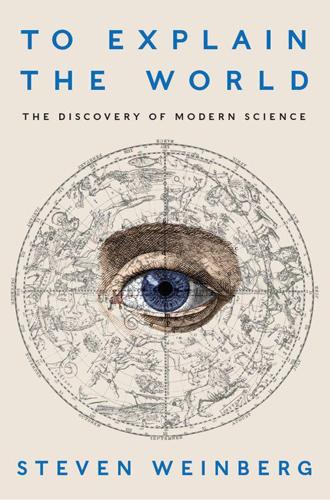
To Explain the World: The Discovery of Modern Science
by
Steven Weinberg
Published 17 Feb 2015
We will see in medieval Islam and Christendom a continuation of the ancient debates over the role in science of philosophy, of mathematics, and of religion. 9 The Arabs After the collapse in the fifth century of the western Roman Empire, the Greek-speaking eastern half continued as the Byzantine Empire, and even increased in extent. The Byzantine Empire achieved a climactic military success during the reign of the emperor Heraclius, whose army in AD 627 in the battle of Nineveh destroyed the army of the Persian Empire, the ancient enemy of Rome. But within a decade the Byzantines had to confront a more formidable adversary.
…
John Cornwell (Oxford University Press, London, 2004), 23–38; in Hungarian, Akadeemia 176, No. 8: 1734–49 (2005); S. Weinberg, Lake Views—This World and the Universe (Harvard University Press, Cambridge, Mass., 2009). 19. This is not from the Almagest but from the Greek Anthology, verses compiled in the Byzantine Empire around AD 900. This translation is from Thomas L. Heath, Greek Astronomy (Dover, Mineola, N.Y., 1991), p. lvii. PART III: THE MIDDLE AGES 9. The Arabs 1. This letter is quoted by Eutychius, then patriarch of Alexandria. The translation here is from E. M. Forster, Pharos and Pharillon (Knopf, New York, 1962), pp. 21–22.
…
See also equant black holes, 267 blood, circulation of, 118 Boethius of Dacia, 124–25, 128 Bohr, Niels, 261 Bokhara, sultan of, 111 Bologna, University of, 127, 147 Boltzmann, Ludwig, 259–60, 267 Bonaventure, Saint, 129 Book of the Fixed Stars (al-Sufi), 108 Born, Max, 261–62 bosons, 263, 264 Boyle, Robert, 194, 199–200, 202, 213, 217, 265 Boyle’s law, 200 Bradwardine, Thomas, 138 Brahe, Tycho. See Tycho Brahe Broglie, Louis de, 248, 261 Brownian motion, 260 Bruno, Giordano, 157, 181, 188 Bullialdus, Ismael, 226 Buridan, Jean, 71, 132–35, 137, 161, 212 Burning Sphere, The (al-Haitam), 110 Butterfield, Herbert, 145 Byzantine Empire, 103–4, 116 Caesar, Julius, 31, 50, 60 calculus, 15, 195, 223–26, 231–32, 236, 315, 327 differential, 223–25 integral, 39, 223–25 limits in, 236 calendars Antikythera Mechanism for, 71n Arabs and, 109, 116, 118 Greeks and, 56, 58–61 Gregorian, 61, 158 Julian, 61 Khayyam and, 109 Moon vs.

Open: The Story of Human Progress
by
Johan Norberg
Published 14 Sep 2020
And thus it is that, notwithstanding the intrusion of many a delusion and caprice, the spirit of Enlightenment gradually arises as a great Good which the human race must derive even from the selfish purposes of aggrandisement on the part of its rulers, if they understand what is for their own advantage.47 An important factor was the role of the church as a unified force separate from the government, unlike the Christian Orthodox Church in Russia and the Byzantine Empire. The papacy always worked hard to stop any ruler from attaining power over them, for example by appointing bishops. It secured support from cities in Italy and Germany to limit the strength of the Holy Roman Emperor, and so both exploited and deepened Europe’s political fragmentation. Then the Reformation created even more division and undermined authority generally.
…
It seems like they derived pleasure from the misfortune of the outgroup.19 A Dutch study of football violence showed that hooligan tribes were a mix of different ethnicities and of both poor, workingclass and higher-income men, so there were no ‘real’ loyalties lurking in the background. These men risked their lives and health for team colours.20 That has a long history. In the Roman and Byzantine empires, aggressive factions supported chariot-racing teams. In Constantinople, the fans of the different racing teams the ‘Blues’ and the ‘Greens’ turned into something between hooligans and political parties, and often came to blows. In 532, one mass riot threatened the rule of Emperor Justinian, who supported the Blues, resulting in large parts of the city being destroyed, and perhaps thirty thousand people killed, mostly Greens.
…
INDEX Abbasid Caliphate (750–1258), 6, 136–7, 138, 169, 353 abortion, 113 absolutist monarchies, 154, 155, 170, 182, 185 Academy Awards, 82 Accenture, 375 accountants, 41 Acemoglu, Daron, 185, 187, 200 Achaemenid Empire (550–330 BC), 86–7, 88, 249 Acton, Lord, see Dalberg-Acton, John Adams, Douglas, 295 Adobe, 310 Advanced Research Projects Agency (ARPA), 306 Aeschylus, 132 affirmative action, 244 Afghanistan, 70, 345 Age of Discovery, 177 agriculture, 39–40, 42, 74, 171, 263 Akbar I, Mughal Emperor, 98 Akkadian Empire (c. 2334–2154 BC), 42 Alaska, 76 Albania, 54 Albertus Magnus, Saint, 145 d’Alembert, Jean-Baptiste le Rond, 154 Alexander III ‘the Great’, Basileus of Macedon, 87–9 Alexandria, Egypt, 134 algae, 332 algebra, 137 Alibaba, 311 Allport, Gordon, 244–5 Almohad Caliphate (1121–1269), 137–8 alpha males, 227–8, 229 Alphaville, 245 altruism, 216 Amalric, Arnaud, 94 Amazon, 275, 311 America First, 19, 272 American Civil War (1861–5), 109 American Declaration of Independence (1776), 103, 201, 202 American Revolutionary War (1775–83), 102–3, 200–201 American Society of Human Genetics, 76–7 Americanization, 19 Amherst, William, 1st Earl Amherst, 176–7 amphorae, 48 Amsterdam, Holland, 150, 152, 153 An Lushan Rebellion (755–63), 352 anaesthesia, 279, 296 anagrams, 83 Anatolia, 42, 74 Anaximander, 127 Anaximenes, 127 al-Andalus (711–1492), 97, 137–9, 140 Andromeda, 88 Anglo–French Treaty (1860), 53–4 Anhui, China, 315 anti-Semitism, 11, 94–7, 109, 220, 233, 251, 254, 255 anti-Semitism, 254–5, 356 Antonine Plague (165–80), 77 Antoninus Pius, Roman Emperor, 91 Apama, 88 Appiah, Kwame Anthony, 5 Apple, 82, 195, 304, 311, 319 Apuleius, 89 Arab Spring (2011), 10, 342 Arabic numerals, 70, 137, 156 Arabic, 136, 137, 140 archaeology, 21–2, 31, 32, 38, 43, 50, 51 Archer Daniels Midland, 329 Aristides, Aelius, 48 Aristophanes, 129, 131, 132 Aristotle, 130–31, 132, 137, 141–6, 161 Armenians, 136, 220 ARPAnet, 306 Art Nouveau, 198 art, 198 Artaxerxes III, Persian Emperor, 87 Ashkenazi Jews, 99 Ashoka, Mauryan Emperor, 53 Assyria (2500–609 BC), 248–9 Assyrian Empire (2500–609 BC), 41, 43, 86 astronomy, 80, 145–6, 150 Atari, 304 Athens, 47, 53, 89, 90, 131, 134 Atlas Copco, 65 Augustine of Hippo, 133, 139 Australia, 50–53, 76, 262 Australopithecus afarensis, 24–5 Austria, 1, 150, 151, 190 Austria-Hungary (1867–1918), 179, 254 Battle of Vienna (1683), 237, 238 Habsburg monarchy (1282–1918), 151, 179, 190, 237 migration crisis (2015–), 342 Mongol invasion (1241), 95 Nazi period (1938–45), 105 Ötzi, 1–2, 8–9, 73, 74 Thirty Years War (1618–48), 150 Authoritarian Dynamic, The (Stenner), 343 authoritarianism, 4, 14, 220, 343–61, 363, 379 democracy and, 357 economics and, 346–51 exposure to difference and, 242 innovation and, 318 insecurity and, 338, 342, 378 media and, 346–9 nostalgia and 351–4 predisposition, 220, 343–6 populism and, 325, 350–51 scapegoats and, 355–6 science and, 161–3 automatic looms, 179 automation, 63, 312–13 Averroes, 137–8, 143, 144, 145 Aztec Empire (1428–1521), 55 Bab-el-Mandeb Strait, 75 baby-boom generation (1946–64), 294, 340 Babylon, 39, 86–7 Babylonia (1895–539 BC), 39, 42, 43, 86–7, 128, 131, 249, 267 Bacon, Francis, 147, 156, 165–6, 201 bad news, 322 Baghdad, 70, 136, 353 Bahrain, 42 Bailey, Ron, 11 Bailyn, Bernard, 201 balance of trade, 59–60 Banda Islands, 100 Bangladesh, 270 Bannon, Steve, 14, 108 Barcelona, Catalonia, 320 Basel, Switzerland, 152 Battle of Vienna (1683), 237, 238 Bayezid II, Ottoman Sultan, 98 Bayle, Pierre, 158 Beginning of Infinity, The (Deutsch), 332 Behavioural Immune System, 222 Beirut, Lebanon, 236 benefit–cost ratio, 60, 61, 62 Berges, Aida, 80 Bering land bridge, 76 Berkeley, see University of California, Berkeley Berlin Wall, fall of (1989), 10, 340, 341, 363, 364 Berners-Lee, Timothy, 307–8 Bernstein, William, 42 Berossus, 267 Better Angels of Our Nature, The (Pinker), 243 Beveridge, William, 59 Béziers, France, 94 Bezos, Jeffrey, 274, 275–6, 277 Bi Sheng, 171 Bible, 46, 72, 248–50, 296 bicycles, 297 de Biencourt, Charles, 189 Big Five personality traits, 7 Black Death (1346–53), 77, 139, 208, 356, 352, 356 Blade Runner, 334 Bletchley Park, Buckinghamshire, 124–6 Blue Ghosts, 236 Bohr, Niels, 105 Bolt, Beranek and Newman (BBN), 307 bonobos, 226–7 Book of Jonah, 248–50 Borjas, George, 116 Boston, Massachusetts, 122, 223 Boudreaux, Donald, 62, 270 Boulton, Matthew, 194 Bowles, Samuel, 216 Boym, Svetlana, 288 Brandt, Willy, 364 Brewer, Marilynn, 247 Brexit (2016–), 9, 14, 118, 238, 240–41, 349, 354, 379 Brezhnev, Leonid, 315 Britain, 169, 181–99 Acts of Union (1707), 101, 194 Afghanistan War (2001–14), 345 Amherst Mission (1816), 176–7 anti-Semitism in, 254 arts, 198 Bletchley Park, 124–6 Brexit (2016–), 9, 14, 118, 238, 240–41, 349, 354, 379 Cheddar Man, 74 Cobden–Chevalier Treaty (1860), 53–4 coffee houses, 166 colonies, 84, 191, 194, 200 Corn Laws repeal (1846), 53, 191 creative destruction in, 179 crime in, 119, 120 Dutch War (1672–4), 101 English Civil War (1642–1651), 148, 183, 184, 201 Glorious Revolution (1688), 101, 185–8, 190, 193 hair powder tax (1795), 72 immigration in, 113, 115, 118, 119, 120, 193–4 Industrial Revolution, 188–99, 202 innovation in, 53, 189–90 Internet, development of, 307–8 Iraq War (2003–11), 345 Levellers, 183–4, 186 literacy in, 188, 198 literature, 188–9 London Bridge stabbings (2019), 120 London 7/7 bombings (2005), 341 Macartney Mission (1793), 176 Magna Carta (1215), 5 monopolies, 182 MPs’ expenses scandal (2009), 345 Muslim community, 113 Navigation Acts, 192 nostalgia in, 294 open society, 169, 181–2, 195–9 patent system, 189–90, 203, 314 Peasants’ Revolt (1381), 208 political tribalism in, 238, 240–41 poverty in, 256 railways in, 297 Royal Society, 156, 157, 158, 196, 296 ruin follies, 286–7 slavery, abolition of (1807), 182, 205 smuggling in, 192 Statute of Labourers (1351), 208 United States, migration to, 104 West Africa Squadron, 205 Whig Party, 185, 201 World War II (1939–45), 124–6 British Broadcasting Corporation (BBC), 135 Bronze Age (c. 3300–600 BC) Late Bronze-Age Collapse (1200–1150 BC), 44, 49, 54 migration to Europe, 74–5 Phoenician civilization, 43–6, 49, 70 Sumerian civilization, 42–3 Brotherton, Rob, 322 Brown, Donald, 219, 283 Bruges, Flanders, 208 Bruno, Giordano, 150 Bryn Mawr College, 201 Buddhism, 96, 149, 352 Bulgaria, 73, 342 Bureau of Labor Statistics, US, 65 Burke, Edmund, 152, 292 Bush, George Walker, 328 ByteDance, 318 Byzantine Empire (395–1453), 94, 134, 135, 155, 224 California Gold Rush (1848–1855), 104 Calvin, John, 149 Calvinism, 6, 99, 153, 356 Canada, 235, 258 Caplan, Bryan, 258 Caracalla, Roman Emperor, 91 Carbon Engineering, 332 Cardwell, Donald, 10 Cardwell’s Law, 10 Carlson, Tucker, 82, 302 Carlyle, Thomas, 206 Carthage (814–146 BC), 45 Caspian Sea, 75 Cathars, 94, 142 Catherine II, Empress of Russia, 154 Catholicism, 208 in Britain, 101, 185–6, 191 Crusades, 94, 138 in Dutch Republic, 99 exiles and, 153 in France, 154 Jews, persecution of, 97–8, 100, 106, 140, 233 Inquisition, 94, 97, 98, 100, 143, 150 in Italy, 6, 169 Muslims, persecution of, 97, 106, 233 Papacy, 102, 142, 143, 152, 155, 178, 237 in Rwanda, 230–31 in United States, 102, 104, 108, 254 values and, 114 Cato’s Letters (Trenchard and Gordon), 201 Celts, 89, 289 Central Intelligence Agency (CIA), 313 Ceres, 89 Cerf, Vinton, 307 CERN (Conseil européen pour la recherche nucléaire), 306, 307 chariot racing, 224 Charles I, King of England, Scotland and Ireland, 148, 179, 183 Chávez, Hugo, 354 Chechen War, Second (1999–2009), 354 Cheddar Man, 74 cheongsam dresses, 73 Chesterton, Gilbert Keith, 286, 300 Chicago principles, 164–5 Chicago, Illinois, 202 child mortality, 168–9 Child, Josiah, 184 children, 26 chimpanzees, 24, 25, 32, 36, 226–7, 228 China, 4, 5, 6, 13, 84, 270, 314–18 Amherst Mission (1816), 176–7 An Lushan Rebellion (755–63), 352 Antonine Plague (165–80), 77 authoritarianism, 4, 162–3, 175, 318, 325, 343 budget deficits, 60 cheongsam dresses, 73 Confucianism, 129, 149, 169, 176 COVID-19 pandemic (2019–20), 4, 11–12, 162–3 Cultural Revolution (1966–76), 355 dictatorships, support for, 367 dynamism in, 315–18 ethnic groups in, 84 Great Wall, 178 industrialization 169, 172–3, 207 intellectual property in, 58 kimonos, 73 literacy in, 148 Macartney Mission (1793), 176 Ming dynasty (1368–1644), 54, 148, 175, 177–8, 179, 215 national stereotypes, 235, 236 overcapacity in, 317 paper, invention of, 136 private farming initiative (1978), 315–16 productivity in, 317 poverty in, 273, 316 Qing dynasty (1644–1912), 148, 149, 151, 153, 175–7, 179, 353 Reform and Opening-up (1979–), 4, 53, 56, 315–16 SARS outbreak (2002), 162 science in, 4, 13, 70, 153, 156, 162–3, 169–73, 269 Silk Road, 171, 174, 352 Song dynasty (960–1279), 53, 169–75 state capitalism in, 316–17 Tang dynasty (618–907), 84, 170, 177, 352 Taoism, 129, 149 trade barriers, 59 United States, migration to, 104, 109, 254 United States, trade with, 19, 57, 58–9, 62–3, 64 WTO accession (2001), 63 Yuan Empire (1271–1368), 174–5 Zheng He’s voyages (1405–33), 177–8 Chinese Exclusion Act (1882), 254 Christensen, Clayton, 305 Christianity, 46, 70, 96, 129 Bible, 46, 72, 248–50, 296 in Britain, 101 Calvinism, 6, 99, 149, 153, 356 Cathars, 94, 142 clash of civilizations narrative, 237 Crusades, 94, 138 Catholicism, see Catholicism Dominican order, 356 in Dutch Republic, 99 economic hardship and, 359 fundamentalism, 133–5, 149 Great Awakening (1730–55), 102 Great Vanishing, 134–5 Inquisition, 97, 98, 100 Jews, persecution of, 95, 96, 97 Lutheranism, 99, 356 in Mongol Empire, 96 Old Testament, 46, 72 orthodox backlash, 149–50 Orthodox Church, 155 Papacy, 102, 142, 143, 152, 155, 178, 233 Protestantism, 99, 104, 148, 149, 153, 169, 178 Puritanism, 99, 102 Rastafari and, 72 Reformation, 148, 155 in Roman Empire, 90, 93–4 science and, 133–5, 141–6, 149–50 Thirty Years War (1618–48), 97 tribalism and, 230–31, 246 zero-sum relationships and, 248–50 Chua, Amy, 84 Cicero, 141 Cilician, Gates, 42 cities, 40, 79, 140 division of labour in, 40 immigration and, 114, 250 innovation and, 40, 53, 79, 140, 145, 172, 287 liberalism and, 339 Mesopotamia, 37–43 open-mindedness and, 35 productivity and, 40, 98 tradition and, 287, 291 turtle theory and, 121–2 civic nationalism, 377–8 civil society, 6, 199, 253, 358, 363 clash of civilizations narrative, 237, 362–3, 365–6 ‘Clash of Civilizations?’
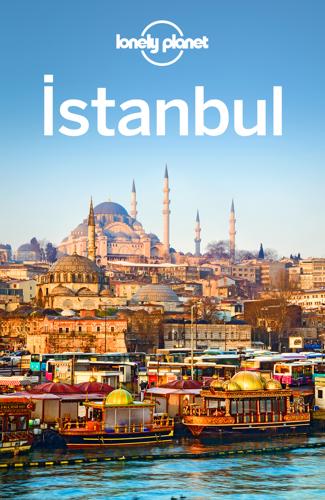
Istanbul Travel Guide
by
Lonely Planet
AD 79 Byzantium is officially incorporated into the Roman Empire ruled by the soldier-emperor Vespasian; it retains its status as a free state but pays high taxes to the empire. 330 Constantine the Great declares Byzantium the capital of the Roman Empire; the city soon becomes known as Constantinople. 380 Theodosius I declares Christianity the imperial religion; a year later, he summons an ecumenical council to Constantinople to define church orthodoxy. 524 Justinian, the most famous of the Byzantine emperors, marries a courtesan called Theodora, the daughter of a bear-keeper at the Hippodrome. 527 Justinian takes the throne and makes Theodora joint ruler; his introduction of heavy taxes leads to the Nika riots of 532 and half of the city is destroyed. 565 Justinian dies; his lasting memorial is the church of Hagia Sophia (Aya Sofya), which was to be the centre of Eastern Orthodox Christianity for many centuries. 620 Heraclius I (r 610–41) changes the official language of the eastern empire from Latin to Greek, inaugurating what we now refer to as 'The Byzantine Empire'. 717 Leo III, a Syrian, becomes emperor after deposing Theodosius III; he introduces edicts against the worship of images, ushering in the age of iconoclasm. 1204 Enrico Dandolo, Doge of Venice, leads the crusaders of the Fourth Crusade in a defeat of Constantinople; they sack the city and steal many of its treasures. 1261 Constantinople is recaptured by Michael VIII Palaeologus, a Byzantine aristocrat in exile who had risen to become co-emperor of Nicaea; the Byzantine Empire is restored. 1432 Mehmet II, son of the Ottoman sultan Murad II, is born in Edirne; he succeeds his father as sultan twice – once in 1444 and then permanently in 1451. 1453 Mehmet's army takes İstanbul and he assumes power in the city becoming known as Fatih, 'The Conqueror'; he dies in 1481 and is succeeded by his son Beyazıt II. 1520 Beyazıt's grandson Süleyman, who would come to be known as 'The Magnificent', ascends to the throne and soon builds a reputation for his military conquests. 1556 Süleyman dies while on a military campaign in Hungary; his son Selim II assumes the throne and becomes known as 'The Sot' for obvious reasons. 1729 A huge fire sweeps through the city, destroying 400 houses and 140 mosques and causing 1000 deaths. 1839 Mahmut II implements the Tanzimat reforms, which integrate non-Muslims and non-Turks into Ottoman society through civil liberties and regulations. 1853–56 The Ottoman empire fights in the Crimean War against Russia; Florence Nightingale arrives at the Selimiye Army Barracks near Üsküdar to nurse the wounded. 1914 The government allies itself with the Central Powers and joins WWI; the Bosphorus and Dardenelles are closed to shipping, leading to the Allies' decision to attack Gallipoli. 1915 Many prominent members of the city's 164,000-strong Armenian population have their property confiscated and are deported from the city. 1922 The Turkish Grand National Assembly abolishes the Ottoman sultanate; the last sultan, Mehmet VI, leaves the country on a British warship. 1923 The Grand National Assembly relocates the nation's capital from İstanbul to Ankara; shortly afterward, it proclaims the Turkish Republic. 1925 The Republican government bans Dervish orders; many of the city's historic tekkes (Dervish lodges) are demolished. 1942 A wealth tax is introduced on affluent citizens.
…
In 1204 soldiers of the Fourth Crusade led by Enrico Dandolo, Doge of Venice, attacked and ransacked the city. They then ruled it with an ally, Count Baldwin of Flanders, until 1261, when soldiers under Michael VIII Palaeologus, a Byzantine aristocrat in exile who had risen to become co-emperor of Nicaea, successfully recaptured it. The Byzantine Empire was restored. The Empress Theodora makes a great subject in Stella Duffy's rollicking biographical novel Theodora: Actress. Empress. Whore. (2010) and the palace intrigues orchestrated by Süleyman the Magnificent's consort Roxelana make for great television drama in the enormously popular prime-time Turkish show Muhteşem Yüzyıl (The Magnificent Century).
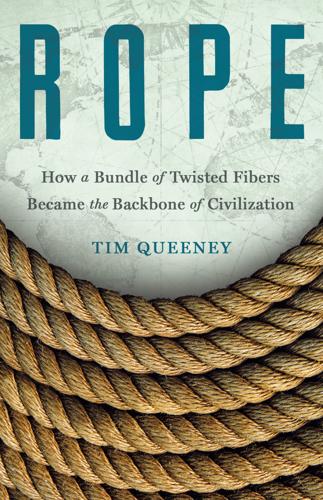
Rope: How a Bundle of Twisted Fibers Became the Backbone of Civilization
by
Tim Queeney
Published 11 Aug 2025
In the sixteenth century a German historian named Hieronymus Wolf was compiling a history of the eastern Roman Empire and wanted a catchier name for eastern Rome. So Wolf fell back on the moniker Byzantium, the name of the preexisting Greek city on the site of Constantinople. He titled his 1557 historical work Corpus Historiae Byzantinae. Wolf was thus the first to call the eastern Roman empire the Byzantine Empire, and the name stuck. As for the name Constantinople, the Ottoman Constitution of 1876 stated that the capital of the Ottoman state is Istanbul. The U.S. State Department finally gave in and began using the name in 1930.13 The Black Sea proved important to Greek city states like Athens, which needed to import grain from Sicily, Egypt, and the fertile soil of Ukraine along the sea’s northern coast.
…
DARK MAGIC KNOTS Then there is the sinister side of twisted rope, the so-called magical knot. In Europe, folk belief held that the winds could be controlled with knotted cords. These “wind knots” appear in Homer’s Odyssey in the form of a knotted silver cord that holds shut the bag of winds that Aeolus, the god of the winds, gives to Ulysses. And in the 300s CE in the Byzantine Empire, “a man by the name of Sopater was put to death in Constantinople ‘on the charge of binding the winds by magic.’”8 A Norse story speaks of the blacksmith Volundr storing wind knots. “A long rope of bast hung there, with knots in it at regular intervals. In each and every knot a storm wind was bound.
…
Beccaria, Cesare Bell, George Bellinck, Juan Berry, James Bethea, Rainey Bible Billington, John binding of prisoners Bird, Kai Blackburn, Howard Blake, Thomas Blondeau, Jean-Louis Bloody Code (Walliss) boats. See ships and boats Bonner, John Booth Theatre Boston, MA Boston Massacre bow and arrow bridges Brooklyn Bridge rope Brown, Jeff Brown, John Brunel, Isambard Kingdom Buddhism Buenos Aires Buffalo Bill Building in England Down to 1540 (Salzman) Byzantine Empire Byzantium cable cars Cabot, John Caecus, Appius Claudius Caligula Canterbury Cathedral Carothers, Wallace Casson, Lionel Cast Away Castle Guédelon Cathedral Builders, The (Gimpel) cathedrals cat-o’-nine-tails Caulkins, Jackie cavers Chardonnet, Hilaire de Chicago Tribune China Great Wall of naval expeditions of Chrysler, Walter P.
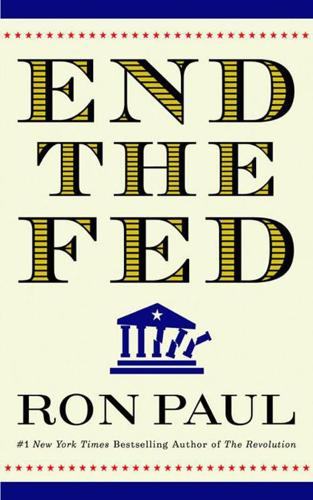
End the Fed
by
Ron Paul
Published 5 Feb 2011
Before modern-day central banks, the government, a king, or a tyrant with monopolistic powers over the monetary system could choose to debase the currency for some ulterior motive, many times to pay for war and expand an empire. The irony is that once the power over money is used to build the state, in time the very process of monetary debasement frequently destroys the empire with an economic crisis of its own making. From the time of Constantine I, for six centuries, the Byzantine Empire thrived in international trade and commerce with a gold standard. Not only did Byzantium believe in honest money, it endorsed free trade and rejected the principles of mercantilism. The gold coin, the byzant, was used all over the Mediterranean and known throughout the world. For 600 years, the byzant maintained its value, keeping price inflation in check while the economy thrived.
…
For 600 years, the byzant maintained its value, keeping price inflation in check while the economy thrived. In 1071, Nicephorous III Botaniates reduced the amount of gold in what was then the world’s most used coin. Fighting a war with the Turks was the excuse for the devaluation. Byzantium lost the battle against the Turks, and lost its currency. Financial chaos erupted and brought an end to the Byzantine Empire. Historians claimed the end of Byzantium resulted from “a financial tragedy.” Although the worldwide elites of our day are very powerful and rich and control the central banks, they, too, will face limitations, just as Byzantium did nearly a thousand years ago. The banking elite may be laying plans for even more control through globalization of trade and financial controls in a worldwide central bank managing a new fiat currency, but the laws of economics will prove cumbersome for them to overcome.

Civilization: The West and the Rest
by
Niall Ferguson
Published 28 Feb 2011
As Fernand Braudel put it: ‘Civilization is in fact the longest story of all … A civilization … can persist through a series of economies or societies.’11 If, in the year 1411, you had been able to circumnavigate the globe, you would probably have been most impressed by the quality of life in Oriental civilizations. The Forbidden City was under construction in Ming Beijing, while work had begun on reopening and improving the Grand Canal; in the Near East, the Ottomans were closing in on Constantinople, which they would finally capture in 1453. The Byzantine Empire was breathing its last. The death of the warlord Timur (Tamerlane) in 1405 had removed the recurrent threat of murderous invading hordes from Central Asia – the antithesis of civilization. For the Yongle Emperor in China and the Ottoman Sultan Murad II, the future was bright. By contrast, Western Europe in 1411 would have struck you as a miserable backwater, recuperating from the ravages of the Black Death – which had reduced population by as much as half as it swept eastwards between 1347 and 1351 – and still plagued by bad sanitation and seemingly incessant war.
…
To answer those questions, we must travel back more than three centuries, to the last time an Islamic empire seriously menaced the security of the West. The year was 1683 and once again – just as had happened in 1529 – an Ottoman army was at the gates of Vienna. At its head was Kara Mustafa Köprülü, Grand Vizier to Sultan Mehmed IV. An Anatolian dynasty established in the ruins of the Byzantine Empire, the Ottomans had been the standard bearers of Islam since their conquest of Constantinople in 1453. Their empire did not have the great eastward sweep of the Abbasid caliphate,* but it had succeeded in spreading Islam into hitherto Christian territory – not only the old Byzantine realms on either side of the Black Sea Straits, but also Bulgaria, Serbia and Hungary.
…
A., The Birth of the Modern World, 1780–1914 (Blackwell, 2004) Bockstette, Valerie, Areendam Chanda and Louis Putterman, ‘States and Markets: The Advantage of an Early Start’, Journal of Economic Growth (2002), 347–69 Bozeman, Adda B., Politics and Culture in International History: From the Ancient Near East to the Opening of the Modern Age (New York, 1994 [1960]) Braudel, Fernand, A History of Civilizations, trans. Richard Mayne (New York, 1993) Brownworth, Lars, Lost to the West: The Forgotten Byzantine Empire that Rescued Western Civilization (New York, 2009) Cahill, Thomas, How the Irish Saved Civilization (New York, 1995) Chandler, T., Four Thousand Years of Urban Growth: A Historical Census (Lewiston/Queenstown, 1987) Chaudhary, Latika, Aldo Musacchio, Steven Nafziger and Se Yan, ‘Big BRICs, Weak Foundations: The Beginning of Public Elementary Education in Brazil, Russia, India, and China, 1880–1930’, draft working paper (2010) Clark, Gregory, A Farewell to Alms: A Brief Economic History of the World (Princeton, 2007) Clark, Kenneth, Civilisation: A Personal View (London, 2005 [1969]) Coulborn, Rushton, The Origin of Civilized Societies (Princeton, 1959) Darwin, John, After Tamerlane: The Rise and Fall of Global Empires (London, 2007) Dawson, Christopher, The Making of Europe: An Introduction to the History of European Unity (London, 1932) Diamond, Jared, Guns, Germs and Steel: A Short History of Everybody for the Last 13,000 Years (London, 1998) ———, ‘How to Get Rich: A Talk’, Edge, 56, June 7, 1999 Eisenstadt, S.
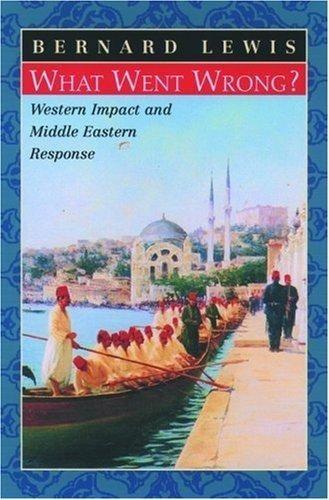
What Went Wrong? Western Impact and Middle Eastern Response
by
Bernard Lewis
Published 1 Jan 2001
Christendom had a certain special importance, in that it constituted the only serious rival to Islam as a world faith and a world power. But in the Muslim view, the faith was superseded by the final Islamic 3 WHAT WENT WRONG? revelation, and the power was being steadily overcome by the greater, divinely guided power of Islam. For most medieval Muslims, Christendom meant, primarily, the Byzantine Empire, which gradually became smaller and weaker until its final disappearance with the Turkish conquest of Constantinople in 1453. The remoter lands of Europe were seen in much the same light as the remoter lands of Africa—as an outer darkness of barbarism and unbelief from which there was nothing to learn and little even to be imported, except slaves and raw materials.
…
See Bonneval Bonaparte, Napoleon, 31, 33, 55, 89, 130; books on, 141 Bonneval, Comte de, ClaudeAlexandre, 28 books, 118, 141, 144. See also literature; printing press Brahe, Tycho, 80 Britain, 19, 33 British Mandate for Palestine, 154 Bucharest, Treaty of (1812), 33 Büchner, Friedrich Karl Christian Ludwig, 78 Buddha, 97 173 INDEX Busbecq, Ogier Ghiselin de, 9, 117–118, 120 Byzantine Empire, 4, 18 C Caesar as God, 97 calendar, 121, 125–126 caliphs, 101, 114 Campbell, 31 capital investment, 47 Carlowitz, Treaty of (1699), 17, 18–19, 23, 29 cartographers, 119–120 Caspian Sea, 8 Chardin, Jean, 118 charity, 110–111 Charles V, Holy Roman emperor, 9 China, 3, 6 choice, cultural, 76 church, 98, 99 citizenship, 90 civilization, 6–7, 36–37 civil rights, 112 civil society, 96, 111–116, 157; defined, 109–110 civil war.

The Passenger: Greece
by
The Passenger
Published 11 Aug 2020
Then, in 1919, almost a century after Greek independence from the Turks, who had dominated Hellenic territory since 1453, the Greeks tried to take back what they had never stopped regarding as theirs. The Megali Idea, the Great Idea, proposed a restoration of the territorial integrity of the Byzantine Empire and reconquering the Polis – as it is still called by Greeks – the city of Constantine, better known to us as Istanbul. The capital would have been moved from Athens to Constantinople, and many Turkish lands would have returned to Greek control. The great powers that Greece had sided with during the First World War did not offer the promised support, however.
…
THE GRECO-TURKISH WAR In 1919 a Greek expeditionary force landed in Anatolia, claiming a need to protect the local Greek population from the Muslim Turks. In the Sèvres Treaty of 1920 Athens obtained Thrace and the Gallipoli peninsula along with Smyrna and its hinterland, bringing it closer to achieving the project known as the Megali Idea (the Great Idea), in other words the reacquisition of all the territories that had belonged to the Byzantine Empire and were still inhabited by the Greek diaspora. Mustafa Kemal, known as Atatürk, the ‘father of the Turks’, led the resistance movement that sought to reconquer the lost territories, and a violent conflict ensued. Although the Greek army achieved numerous victories in the initial phase, it capitulated in the face of Turkey’s ‘great offensive’ of 1922 and was forced to beat a retreat.
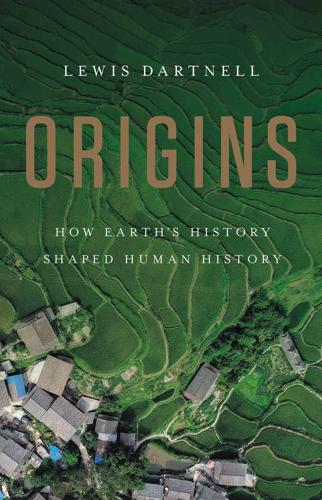
Origins: How Earth's History Shaped Human History
by
Lewis Dartnell
Published 13 May 2019
Here they established themselves by adopting a European style of warfare relying on fortifications, and formed slave armies of captured Christian boys who were forced to convert to Islam, the famous Janissaries.57 By the end of the thirteenth century the Ottomans had become a major threat to the states of Christendom, and in 1453 they captured Constantinople and brought to an end the Byzantine Empire.58 Nomadic horsemen riding out of the steppes were the cause of two of the most defining moments of world history: the fall of the Western Roman Empire, and the conquest of Asia by the Mongols. DECLINE AND FALL OF THE ROMAN EMPIRE We saw earlier how by the first century AD the Roman Empire had expanded around the rim of the Mediterranean, stopping at the natural borders defined by the deserts of North Africa and the mountain ranges and large rivers in Europe.
…
The ports of Venice and Genoa remained the major mercantile centres of the West and grew in wealth and power through the later medieval period and Renaissance. By destroying the old Muslim core of Eurasia but sparing Europe, the Mongols had tipped the power balance in the region and Europe was given the opportunity to pull ahead and begin to develop faster than the Islamic world.94 Still, when Constantinople fell to the Ottomans in 1453, the Byzantine Empire had been little more than a rump state for more than a century, with Muslim rulers dominating the whole eastern Mediterranean and blocking the trade routes from the East into Europe.95 It was for this reason that European mariners began to look west for new maritime routes to the riches of China and India in the Age of Exploration, as we’ll see in the next chapter.
…
Index Abbasids 212 Aberdeen: granite 148, 151 Abu Dhabi: Sheikh Zayed Mosque 136 Abu Simbel, Egypt: Great Temple of Rameses II 132 Achaemenid Empire 202 Acheulean tools 17, 22 acid rain 142, 280 Aden 107 Aden, Gulf of 11 adobe bricks 131, 155 Aegean/Aegean Sea 99, 100, 117, 162 Aegospotami, Battle of (405 BC) 118 Afar region/triangle 11, 18 Afghanistan 183, 190, 194 Africa 11, 15, 21, 56, 98, 104, 105, 106, 139, 160, 218n, 219, 220, 267, 285 animals 88, 89 hominin migration from 22, 23, 45–6, 47, 52, 63 plants 67, 87 see East, North, South and West Africa African-Americans 125–6 Agassiz, Lake 60, 61–2 agriculture/farming 25, 26, 28, 52, 59, 61, 62, 63–5, 70–71, 87–8, 90, 130, 203, 205, 255, 256–7, 258, 280, 281, 285 and climate change 280 and oil 274 and population growth 70 tools and ploughs 76, 77, 165–6, 215n, 255, 268, 285, 286 see also cereal crops; fruit; legumes aircraft engines 175, 176 Akkadians 131 Akrotiri, Thera 163 Akshardham, Delhi 136 Alabama 125, 126 cotton plantations 125, 253–4 Alans 207 Alaska 48–9, 52, 195 Alborán microcontinent 218n Alborz Mountains 29–30 Alcáçovas, Treaty of (1479) 229, 230 Alexander the Great 101, 117n, 202 Alexandria 101, 187 Library 227 algae 138, 171, 261 Algeria 100 alpacas 76, 88, 89 Alps, the 32, 56, 58, 116, 135, 140, 154, 159, 163, 285 Altai Mountains 47, 196, 202 aluminium 174–5, 177, 182 aluminium silicates 266 Amazon 7, 63, 189 rainforest 223n, 275, 285 America(s) 55, 194n animals 88–9 discovery of 231, 237 human migration into 48–52 see also North America; South America; United States American Civil War 124, 126, 254 American War of Revolution (1775–83) 122 ammonites 138 Amnissos, Crete 162 amphibians 79, 262 Amsterdam: banking 97 Anatolia 131, 157, 165, 204, 205 Andes Mountains 32, 54, 66, 67, 74 angiosperms 40, 78, 79–82, 90, 141n Angkor Wat, Cambodia 129 animals, wild 13, 33–4, 49, 72, 83, 88–9, 66n domestication of 52, 59, 74–8, 88–90, 199 megafauna 53n see also mammals Antarctica 39, 40, 42, 43, 44, 53, 86, 104, 267, 277 antelopes 12, 83 ‘Anthropocene’ Age 3 antimony 175 APP mammals 82, 84, 85, 86 Appalachian Mountains 55, 124, 125, 267, 270 Aqaba, Gulf of 110n Arabia/Arabian Peninsula 11, 27, 28, 47, 53, 75, 104, 107, 108–9, 110, 115, 188, 191 camels 89 deserts 29, 190, 192, 215, 285 stone tools 52n Aragon, Spain 218 Aral Sea 105, 196 architecture 129–30, 131 American 134–5, 136 and n ancient Egyptian 132–3 British 134, 151–3, 154–5 Minoan 161, 162 Roman 136n, 162n Arctic, the 36, 38, 39, 40, 43, 64, 85 Arctic Ocean 60 Ardipithecus ramidus 13–15, 18 Argentina: pampas 196 artiodactyls 82–3, 84, 86, 144 Asia, South East 10, 75, 91, 119, 239 islands 111–15, 112–13 asphalt 273, 274 Assyrian Empire 27, 131, 202 asteroids 94, 143n, 168, 178n, 179 astronomy 194, 252n Athens 116, 117–18 Atlantic Ocean 43, 61, 62, 95, 96, 99, 104, 106, 122, 139, 218, 219–20, 222, 226, 227, 229–30, 231, 237, 238, 267 and Mediterranean 105, 106, 118 Atlantic Trade Triangle 246, 249, 250–51, 252–4 Atlas Mountains 105, 163, 267 Attila the Hun 207 aurochs 74 Australia 10, 42, 48, 52n, 54, 121, 252 and n, 267, 285 domesticable animals 88 rare earth metals 181 grasses 87 Australopithecus 14–15, 16 A. afarensis 14, 18 Avars 203 avocados 66n Awash river valley 13, 14, 18 Azores, the 218, 219, 220, 221, 222, 229, 230, 231 Aztec culture 28 Bab-el-Mandeb strait 47, 107, 108, 110, 119, 121 Babylon 71, 273 Babylonians 131 Bacan Islands 114 Baghdad 110, 190, 212 Bahamas, the 230 Bahrain 120 Baikonur Cosmodrome, Kazakhstan 197n Balaclava, Battle of (1854) 129 Banda Islands 111, 112–13, 114, 115 Banded Iron Formations (BIFs) 169–70, 173, 177, 179 Bank of England, London 134 banks and banking 97, 134 Barbarossa, Operation 215 Barbegal, France: waterwheels 257 barley 61, 65, 67, 117 basalt eruptions/flood basalt 141, 142, 143, 144, 145 basalt(ic) rocks 11, 141, 143, 145, 146, 160 Batavia (Jakarta), Indonesia 252 batteries, rechargeable 176, 180 bay (herb) 115n beans 66, 81 Beatles, the: ‘Lucy in the Sky with Diamonds’ 14n Bedouins 129 belemnites 138 Belgium 96, 269, 284 Belize 28 Bering land bridge/Strait 48, 49, 51, 52, 54, 89, 191 Bessemer Process 166–7 BIFs see Banded Iron Formations Big Bang 167 Biological Old Regime 258 bipedalism 14–15, 16 birds 33, 80, 219n, 263 bison 49, 214n bitumen 273 ‘Black Death’ (accumulation of shale) 279 Black Death (plague) 211–12 Black Sea 105, 106, 117, 118, 120, 185, 190, 196, 207, 278n ‘black smokers’ 159, 160, 163 blast furnaces 165, 211, 257, 259 Bojador, Cape 223–4, 225 bone china 149 Borneo 112 Bosphorus 196, 117, 118, 120 Boston, Massachusetts 56 Brahmaputra River 91 brassicas 81, 82 Brazil 181, 244n, 247n coffee plantations 252, 253, 254 Brazil Current 238, 239, 253 bricks 131, 139, 149, 152, 174, 255 adobe 131, 155 firebricks 131–2 Britain/England 56–9, 97 architecture 134, 152–3, 154–5 ceramics 149–50 coalfields/mines 259–60, 266, 269, 270–72, 271 corsairs 249 electricity 271n exploration 229, 231 geology 150–53, 151 Labour Party 270, 271, 271–2 maritime trade 107n, 245 railways 260 Roman coal mines 259 Royal Navy 58, 118, 119 steam engines 259–60 see also Industrial Revolution; London British Museum, London 134, 148 bromine 175 bronze/bronze artefacts 1578, 161, 165, 174 Bronze Age 99, 137, 156, 158, 160–61, 164, 174, 200n Brouwer, Captain Henrik 250–51 Brouwer Route 119n, 246, 250, 250–52 bubonic plague 211–12 Buckingham Palace, London 134 Buffalo, New York 55 Bukhara, Uzbekistan 190, 212 Bulgars 203, 204 Burgundians 207 Burma 92 Bush, President George W. 124 Bushveld Complex, South Africa 179–80 butane 276 Byblos 101n Byzantine Empire 205, 213 Cabot, John 231 cacti 80 calcium carbonate 41, 129, 133, 139, 140 Calicut, India 240 California 52n, 248 Cambodia 92 Cambrian Period 152, 153 camels 19, 49, 75, 76, 77, 83, 88, 89, 107, 187, 191–2, 193, 197 Bactrian camels 89, 191 dromedaries 89, 191 Canada 49, 60, 63, 89, 163, 179, 195, 267, 277 fur trade 195 canals 71, 74, 150 and n, 152, 187 Canary Current 237 Canary Islands 218–19, 220, 222, 223, 225, 227, 228, 229, 230 Cape Cod, Massachusetts 56 Cape of Good Hope 121, 225–6, 231, 250 Cape Town 252 Cape Verde Islands 218, 219, 220, 229, 239, 253n capitalism 96–7, 154, 270 caravans, merchant 81, 107, 110, 187, 188, 192–3, 194, 201, 211, 218 caravels 246 carbon 1, 85n, 157, 165, 166, 167, 175, 261, 263, 273, 275–6, 278, 279, 280, 281 carbon dioxide 10, 38, 40, 42, 44, 65, 84, 85 and n, 139, 142, 143, 144–5, 170, 171, 172, 261, 265, 275, 279–80, 281 and n, 287 Carboniferous Period 6, 78–9, 134, 151, 261–8 Caribbean, the 28, 52, 61, 230, 231, 237 sugar plantations 252, 253, 254 Carnegie, Andrew 270 Carolinas, the 124, 125 cotton plantations 253–4 Carpathian Mountains 163, 185, 196, 204 Carrara marble 135 cars/automobiles 174, 273 Carthage 100–1, 105n, 208 cartwheel hubs 130 Caspian Sea 105, 120, 196, 201, 207 cassava 131 Castile, Spain 217, 218 catalysts, chemical 178, 180 catalytic converters 178 cathedrals 127, 129, 134 Catholicism 185n cattle/cows 67, 74, 75, 76, 77, 82n, 83, 84n, 86–7, 88, 172n, 198, 198, 201 Caucasus 185, 196, 204, 207, 209, 215 cedars/cedarwood 73, 70, 101n, 131 cellulose 263, 264 cement 139, 140–41 ‘pozzolanic’ 162n Cenozoic cooling 9–10, 39–40, 81 Cenozoic era 42, 44, 90, 141n Central Steppe see Kazakh Steppe ceramics/pottery 131–2, 255 porcelain 112, 115, 149–50 cereal crops 65, 67–9, 70, 78, 80, 86–7, 90, 125, 287; see also grain(s) Cerne Abbas Giant, Dorset 137 Cerro Rico see Potosí Ceuta, Morocco 217–18 Ceylon see Sri Lanka chalk 132, 136–8, 139–40, 152 Channel Tunnel 137 charcoal 157, 161, 164, 166, 173n, 255, 269 chariots, war 76, 116n, 200n chert 17n, 156, 170 Chicago 55, 56, 135 chickens 74 Chile 54 chimpanzees 7, 14, 16, 46 China 28n, 182, 183–5, 186, 187, 190, 195, 206, 213, 214 agriculture 63, 65–6, 67, 77, 184 blast furnaces 165, 257 bronze 157 bubonic plague 211 canals 187 coal 258–9, 264 collar harnesses 77 compasses 169 exports 112, 115, 249 first humans 48, 52n, 53 ginkgo 79 Great Wall 203–4, 208 Homo erectus 23, 47 Mongols (Yuan dynasty) 209, 210, 212, 214 and oil 121 population 92, 186, 211, 284 porcelain 112, 115, 149 rare earth metals 177, 181 salt production 273 silk 112, 115, 187–8, 193n and South American silver 249 and steppe nomads 202–3 tea 112 and Tibet 91–3 waterwheels 165, 257 and Xiongnu 202, 206 china, bone 149 see also porcelain chokepoints, naval 98, 115, 118–19, 121, 217n, 273 Christianity 185n, 217 cinnamon 113, 114, 193, 241 civilisations, early 25–30, 26–7, 70–74, 90, 98–9, 132 Clarke, Arthur C. 94 clathrate ice 85–6 clay 130, 131–2, 152, 266 soils 154–5, 166 Cleopatra VII, of Egypt 101, 147 ‘Cleopatra’s Needles’ 147 Cleveland, Ohio 55 climate changes 2–3, 9–10, 11–12, 18–19, 21–5, 61, 63, 64, 70–71, 72, 84–5, 86, 143–4, 279–81; see also ice ages Clinton, Hillary 122 cloves 114, 115n, 241, 247 clubmosses 262 clunch 152 coal 78, 149, 258–60, 279 formation of 261–8, 267, 274, 280 politics of 269, 270, 270–72, 271 cobalt 159, 175 coccolithophores 138, 139, 140, 144 coccoliths 274, 275 cockroaches 262 cocoa 66n coconuts 81 Cocos Plate 28 cod 95, 97 coffee plantations, Brazilian 252, 253 coins 168n, 182 Coleridge, Samuel Taylor Kublai Khan 210 The Rime of the Ancient Mariner 97n, 234 Cologne Cathedral 127 Colombia: platinum 178n Colosseum, Rome 133 Columbian Exchange 113n Columbus, Christopher 52, 227–31, 236, 239, 241 comets 94, 143n, 178n compasses, navigation 118n, 169 concrete 56, 139, 140–41, 272 reinforced 130n, 167 Congo 7, 11 conifers 79, 130, 141, 195 Constantinople (Istanbul) 185n, 193n, 205, 207, 211, 213 cooking food 15, 17, 69, 131, 132 cooling, global see Cenozoic cooling; ice ages copper/copper ore 157, 158, 159, 160–62, 163–4, 174, 175, 179, 182, 201n smelting 131, 156, 157, 161 coppicing 256 coral/coral reefs 193, 252n, 280 Cordilleran ice sheet 49 coriander 115n Corinth 117 Coriolis effect 233, 235, 237 Cornwall Eden Project 150n granite 267n kaolin 149, 150n tin mines 158, 267n Corsica 208 Cotswolds, the 152 cotton 82, 112, 125, 126, 193, 252, 253–4, 255, 259, 263, 269 courgettes 66n cows see cattle Cretaceous Period 40, 42, 80, 123, 124, 137, 138, 139, 141n, 143n, 144, 145, 152, 178n, 274, 276–9, 278 Crete 99, 161–3 Crimean Peninsula 129 crocodiles 72, 85 crops 255 domestication of 52, 63–4, 65–9, 68–9 rotation 255 see also cereal crops; grain(s) Cuba 230 Cumans 203 Cumberland: coalfields 272 cumin 115n current sailing see sailing and navigation cyanobacteria 171, 173 Cyclades, the 99 Cyprus 99, 160 copper mining 158, 160–62, 163 Troodos Mountains 160, 163 Da Gama, Vasco 239–41, 244 Danube River/Valley 185 and n, 196, 204, 206, 207, 208 Dardanelles, the 117, 118, 120 ‘Dark Ages’ 219 Dartmoor 147, 151 dates (fruit) 81 Dead Sea 106, 110n Deccan Traps 143n deer 83 Delhi: Akshardham 136 Denisovan hominins 16, 23, 47, 50–51, 51, 53 deserts 1, 12, 29, 61, 72, 73, 80, 81, 89, 100, 107, 148n, 184, 189, 190–92, 195, 215–16, 232, 285 see also specific deserts Detroit, Michigan 55 Dias, Bartolomeu 225–7, 229, 239 diatoms 140, 171, 274 dinoflagellates 85, 274 dinosaurs 40, 80, 82, 141, 143n Diomede Islands 48 Djibouti 11, 18 DNA, hominins’ 45–7 Dogger Bank/Doggerland 95, 96, 97 dogs 74 doldrums, the 224, 234–5, 239 donkeys 76, 83, 88, 89, 192 Dover, Strait of 57, 59 dragonflies, giant 262–3, 265 Drake, Sir Francis 55, 249 Dublin: Leinster House 136n Durham: coalfields 272 Dutch East India Company 250 dysprosium 175 Dzungaria, China 197, 214 Dzungarian Gate, China–Kazakhstan border 189, 196–7, 203, 204 Eanes, Gil 223–4 Earth 282–3, 284, 286–7 circumference 227, 228 creation 94, 168 first circumnavigation 232, 248 magnetic field 169 orbit round the Sun 19, 21, 22, 24, 35, 36–9, 37 tilt 19, 35, 36–9, 37, 38, 44–5; see also Milankovitch cycles see also climate changes; tectonic plates earthenware pots 131, 149 earthquakes 8, 25, 28, 29, 30 East Africa 7–8, 10, 11, 12, 15, 16 climate 12, 18–25, 44 tectonic processes 10–13, 18–21, 24, 25, 30, 189 East African Rift 2n, 10–13, 17n, 18, 20, 20–25, 44, 108, 189, 287 East China Sea 114, 187 East India Company 222n East Indies 111 Eastern Desert 107, 133 Eastern Orthodox Church 185n Eastern Steppe 197 eccentricity cycle 19, 21, 22, 36, 37, 39 Ecuador: platinum 178n Edinburgh 151 Egypt/ancient Egypt 26, 28n, 64, 72–3, 100, 101, 107, 110, 119, 157, 184 buildings 132–3 pharaohs 72, 101, 127, 129, 147 pyramids 127–8, 129, 133, 138 sculpture 133, 147–8 electricity 156, 174, 271n, 272, 281, 282–3, 284, 286 electronic devices 157, 168, 175, 176, 178, 180, 181–2 elephants 33, 72, 256n Elgon, Mount 12 elm 130 Empire State Building, New York 134 Energy Return on Investment (EROI) index 274 English Channel 56, 57, 58–9, 134, 137 Eocene Epoch 129 equator, the 189, 232, 233, 234, 235, 238 equids 88–9, 197–8 Eratosthenes 227 Eridu 71 Eritrea 11 EROI index see Energy Return on Investment Erzgebirge Mountains: tin mines 158 ethane 276 Ethiopia 10, 11, 13, 14, 18, 28n, 72 Etna, Mount 117 Etruscans 27, 28 Euphrates, River 27, 65, 90, 107 Eurasia 9, 26, 27, 28, 39, 42, 47, 56, 77, 106, 143, 183, 194 climate 2, 48, 196–7 fauna and flora 49, 53n, 79, 87–90 warfare 76 Exeter Cathedral 134 Exploration, Age of 96, 216, 217, 246 extinctions, mass 40, 82, 85, 141, 142–3 and n, 144, 145, 178n factories (coastal forts) 253 farming see agriculture feldspar 148 Ferdinand II, of Aragon 227 ferns 78, 79, 262 Ferrel cells 235–6, 248 Fertile Crescent 63, 65, 66, 67, 158, 269 fertilisers, artificial 120, 178–9 feudalism 212 Finland 195, 286 fir trees 79, 130, 141 fire 15, 17, 69, 131–2, 173–4 firebricks 131–2 fish/fishing 95–6, 97, 275, 280 flax 82 flint 17n, 137, 139–40, 156, 164 Florida 237 flour 63, 68–9, 257 flowers see plants and flowers foraminifera/forams 85, 128–9, 133, 138, 139, 140, 144, 275 forests see rainforests; trees/forests fossils 13–14, 18, 40, 52n, 137–8, 141, 150n, 160 France 56, 57, 58, 185, 207, 208, 267, 269, 284 corsairs 249 fur trappers 195 maritime trade 245 waterwheels 257 wine regions 137 frankincense 192, 193 Franks 207, 208 frogs 85 fruit/fruit trees 78, 81 fungi 263, 264 fur trade 195 Galilee, Lake 110n gallium 176, 180 Ganges Basin 268 Ganges River 26, 66, 267 Gansu Corridor 184–5, 188, 203, 204 gas, natural 274, 276, 279, 280 Gaul 185, 207 Gazelles 61, 72, 275 genetic diversity 45–7 Genghis Khan 205, 209 Genoa/Genoese 99, 211, 212, 217, 227, 229 geological map, first 150 and n Germanic tribes 185n, 206–7, 208, 269 Germany 58, 59, 127, 185n, 208, 273, 284 Giant’s Causeway, Northern Ireland 143 Gibraltar 217n Strait of 99, 101, 106, 118, 158, 217 and n, 220 ginger 112–13, 114, 241 ginkgo 79 giraffes 83 Giza, Egypt: pyramids 127–8, 129, 133, 138 glaciation/glaciers 31, 32, 40, 54–7, 58, 60, 91, 146, 171–2, 184, 264–5 glass/glass-making/glassware 115, 132, 140, 193, 255 glazing pottery 131 globalisation 246 global warming 31, 38, 86, 281n; see also climate changes; greenhouse gases gneiss 133 Goa, India 245 goats 67, 74, 75, 77, 83, 88, 117 Gobi Desert 184, 185, 189, 191, 197 GOE see Great Oxidation Event gold 159, 168 and n, 174, 175, 178, 182, 192, 193, 218 Gona, Ethiopia 18 Gondwana 139, 264, 265, 267 gourds 66n grain(s) 63, 65, 65, 67–8, 73, 74, 116–18, 120, 166, 200, 205, 208, 257; see also cereal crops Grampian Mountains 148 Granada, Spain 218 and n granite 127–8, 132, 133, 145–8, 158, 267n grasses 67, 77, 80–81, 87–8, 90 grasslands 15, 77; see also savannah; steppes Great Hungarian Plain 196, 205 Great Indian Desert 29 Great Oxidation Event (GOE) 171–2, 173, 280n Great Pyramid, Giza 127–8, 129, 138 Great Sandy Desert, Australia 190 Great Wall of China 203–4, 208 Greece/ancient Greeks 27, 28, 73, 99, 100, 107, 110–11, 115–18, 135 armies 116n, 118 city-states 73, 116–17 Huns 207 greenhouse effect 10, 40, 42, 84–5, 142, 171 greenhouse gases 38, 40, 42, 44, 279–80 see also carbon dioxide; methane Greenland 32, 40, 96, 143 Grenville Mountains 153 Guatemala 28 guilds, medieval 212 Guinea, Gulf of 224, 239, 253 guinea fowl 74 guinea pigs: and scurvy 241n Gulf Stream 43, 61, 237, 238, 286 Gunflint Iron Formation 170n gunpowder 194, 200n, 211, 213 gymnosperms 79, 141 gyres, ocean 237, 238n, 247 Hadley cells 232–3, 235–6, 285 haematite 170 Haifa, Israel 101 Han dynasty (China) 93, 183, 184, 186, 187 and n, 190–91, 203–4 Harappan civilization 26–7, 64 Hawaii 107n, 222n helium 167, 180n Hellespont, the 117, 118, 120 hemp 82 Henry VII, of England 231 Herat, Afghanistan 190, 194 herbicides 120, 274 herbs 115n Herculaneum 162 Herodotus 73 hickory 130 hides/leather 75, 77, 88, 140, 193, 255 structures 130 Himalayas, the 9, 10, 11, 26, 32, 42, 48, 159, 184, 191, 195, 203, 242, 243, 268, 285 Hindu Kush 190, 203 hippopotamuses 33, 83n Hispaniola 230 Hitler, Adolf 215 Holland see Netherlands Holocene Epoch 32, 40, 42, 64–5 Homer: Iliad 200n hominins 7–8, 12–16, 22, 23, 30, 44, 53 bipedalism 14–15, 16 brains and intelligence 15, 16, 17, 19–20, 22, 24, 25 DNA 45–7 as hunters 15, 17 migration from Africa 22, 23, 45–6, 47, 52, 63 and see below Homo erectus 15–18, 22, 23, 47 Homo habilis 15, 16 Homo heidelbergensis 16 Homo neanderthalensis see Neanderthals Homo sapiens/humans 7, 8, 16, 22, 23, 25, 47, 49–54, 84 Hormuz, Strait of 107, 119, 120–21 ‘horse latitudes’ 235 horses 49, 75, 76, 77, 83, 86–7, 88, 89–90, 192, 197–200, 201–2, 205, 213, 214 Hudson Bay, Canada 49 Humboldt Current 247, 249 Hungary 185n, 202, 209 Huns 203, 204, 205, 206, 207, 208 hunter-gatherers 15, 61, 62, 63, 70, 74, 75, 80, 197 hydrogen 167, 175 hydrogen chloride 142 hydrogen sulphide 280 Iberian Peninsula 104, 105, 185, 208, 217 see also Portugal; Spain ice ages 19, 23, 24, 31–5, 34–5, 38–9, 44–5, 48–52, 53-60, 61, 64, 95, 172, 265 Little Ice Age 195n, 211 ichthyosaurs 133 igneous rocks 132, 179 incense 115, 192 India 9, 26, 27, 28n, 42, 48, 91, 92, 104, 110–11, 114, 188, 191, 202, 203, 213, 228, 244, 245, 267, 285 cotton 112, 193, 259, 269 eruption of Deccan Traps 143n exports 193 Mogul Empire 210n, 249 monsoons/monsoon winds 1, 10, 110, 242–4 population 284 rare earth metals 177 spices 112–13, 115, 218 Indian Ocean 10, 11, 29, 107, 108, 110, 111, 119, 187, 191, 226, 227, 229, 237, 238, 239–40, 243, 244, 245, 248, 252 Indiana limestone 134–5 indigo 193 indium 175, 176, 180, 181, 182 Indonesia 47, 48, 54, 121, 285 volcanic activity 111 Indonesian Seaway 10, 11 Indus River/Valley 26, 91, 107, 190, 268 civilisations 26–7, 66, 73, 90, 157 Industrial Revolution 5, 31, 78, 97, 125, 130n, 150, 152, 167, 254, 259–60, 266, 268, 269, 279, 286 insects 80, 262–3, 265 internal combustion engine 78, 273 Intertropical Convergence Zone (ITCZ) 234–5, 243 Iran 29–30, 48, 110, 120, 121, 190; see also Persia Iraq 48, 71, 120 iridium 177–8 iron 1, 92, 130n, 163, 164–5, 167, 168–9, 170, 174, 177, 178, 280n and Banded Iron Formations 169–70, 173, 177 cast 165 production 164–5, 183, 257, 259, 260, 266, 269, 270 tools and weapons 128, 165–6, 173, 174, 285 wrought 164–5, 166 see also steel Iron Age 156, 165, 167, 174 irrigation 65, 71, 73, 90, 92, 116, 200 Isabella, of Castile 226n, 227, 229, 230 Isfahan, Iran 190 Islam/Islamic culture/Muslims 110, 205, 212, 213, 217–18 and diet 83n Israel 52n, 101n, 163, 285 Istanbul see Constantinople Italy 105n, 133, 207, 208, 285 see also Rome ITCZ see Intertropical Convergence Zone jade 183 Jakarta, Indonesia 252 Janissaries 205 Japan/Japanese 121, 122n, 222n, 228, 245, 248 exports 112 landfill mining 182 Java 111, 114, 119n, 251, 252 Jefferson, President Thomas 136n, 147 Joao II, of Portugal 226, 229 Jordan valley 110n Judaism: and diet 83n Jupiter 36, 180n Jurassic Coast, England 137–8 Jurassic Period 133, 134, 274, 279 Kalahari Desert 190 Kalmuks 203 kaolin 148–9, 150n Karakorum, Mongolia 209, 211 Kazakh Steppe 196, 197n, 201 Kellingley, Yorkshire: coalmine 271 Kenya 10, 239 Kenya, Mount 12 kerosene 273 Khitans 202 Khufu, Pharaoh 127 Khwarezmids 212 Khyber Pass 190, 203, 204 Kilimajaro, Mount 12 Kirghiz, the 202 Kish 71 Knossos palace, Crete 161 Korea/South Korea 121, 184 Krakatoa, eruption of (1883) 111 Kublai Khan 210 Kunlun Mountains, China 191 Kuwait 120 Laetoli, Tanzania 14 lakes 20, 20, 21, 57, 72 ‘amplifier’ 20, 21, 22, 24, 44 meltwater 60 Lancashire: coalfields 272 landfill mining 182 ‘lanthanide’ elements 176 lanthanum 176–7 lapis lazuli 183 larches 79 Laurasia 139, 267 Laurentia 153 Laurentide ice sheet 49, 55–6 lava, volcanic 12–13, 24, 132, 141–2, 143, 144 lead 131, 159, 163, 168, 174 leather see hides Lebanon 101n, 131, 163, 285 Le Clerc, ‘Peg Leg’ 249 legumes 81 Lesser Antilles 230 Levant, the 23, 60, 61, 65, 73, 74 Lewis (Meriwether) and Clark (William) 55 Libya 100, 277 lignin 264 limestone 85n, 132, 144, 153, 257, 266 hot-spring 133 Indiana 134–5 nummulitic 127, 128–9, 132–3 oolitic 133–4 Tethyean 135–6 travertine 133 linen 193, 255, 263 lions 33–4 lithium 167, 180, 182 llamas 74, 76, 88, 89 loess soils 56, 65, 184 and n Lombards 207 London 135, 137, 152, 154–5, 272 Bank of England 134 British Museum 134, 148 Buckingham Palace 134 Cleopatra’s Needle 147 Great Fire (1666) 134 Marble Arch 135 One Canada Square 154–5 St Paul’s Cathedral 134 The Shard 154–5 Tower of London 134 Underground/Tube 155 Los Angeles 248 Getty Center 133 Lucy (hominin) 14, 18 lycopsids 262 Macau, China 245 mace 114, 115n Mackenzie River 60 Madeira 218, 220, 222, 229, 253n Magellan, Ferdinand 54, 247–8 Magellan Strait 54–5 magma 11, 20, 28, 111, 132, 142, 143, 145, 146, 148n, 158, 1 59, 179 Magna Carta 58 magnetic field, Earth’s 169 magnetite 170 magnets 175, 176, 180n Magyars 203, 204 Maison Carrée, Nîmes, France 136n maize 66, 67 Makian Island 114 Malabar Coast, India 114, 240 Malacca, Malaysia 114–15, 245 Strait of 114, 115, 119, 121, 249 Malay Peninsula 114–15, 245 Mali 10, 193 Malindi, Kenya 239 Mallorca 221 mammals 5, 7, 12, 40, 53n, 61, 75, 86–7, 88, 90, 141n, 144 APP 82–4 mammoths 31, 49, 66n Manchuria 197, 202 Mani Peninsula, Greece 135 Manila Cathedral 136 Manila Galleon Route 246, 248–9, 250, 250–51 Mao Zedong 91 map-making 194 marble 132, 135–6 Marble Arch, London 135 marine snow 275 marjoram 115n Marmara, Sea of 117 mastodons 66n mathematics 194 Mayan civilisation 28, 64 meat 17, 75, 77, 83n, 84, 90, 198, 199, 255 medicines 82, 114, 175, 178, 194 Mediterranean region/Sea 28, 98–106, 112, 116, 118, 135, 158, 160, 163, 185, 187, 246 Megara, Greece 117 Mekong River 91 Melanesia 47 Merv, Turkmenistan 190, 212 Mesoamerica 28, 63, 66, 67, 129 Mesopotamia 26, 27, 28, 65, 67, 70–71, 71, 72, 200, 202 bronze 157–8 civilisations 130–31, 132 Mesozoic Era 42, 141 metals/metalworking 74, 130 and n, 131, 156–7, 255 casting 157 smelting 131, 132, 156 see also specific metals metamorphic rocks 132 methane 40–41, 84, 85n, 171–2, 172n, 276, 280n methane clathrate 85–6 Mexican War of Independence (1810–21) 248 Mexico 28, 66, 74, 248 Gulf of 279 Michelangelo Buonnaroti: David 135 microchips 17n, 148n, 175–6 Mid-Atlantic Ridge 9, 160, 221 Middle East 47, 65, 81, 104, 119, 120, 197, 202, 209, 211, 215n` Middle Passage 253n Milankovitch cycles 19, 37, 37–9, 44, 60, 70, 281n Military Revolution 213 milk 75–6, 88, 90, 199, 255 millet 65, 57, 184 millstones 63, 68 Ming dynasty (China) 204, 212 Minoan civilisation 27–8, 99, 161–3 Linear A script 163n Mississippi River 55, 123, 124, 125 Missouri River 55 mitochondria 45 Mitochondrial Eve 45–6 mobile phones see smartphones Mogadishu, Somalia 240 Mogul Empire 210n, 249 Mojave Desert 191 Moluccas, the 112–13, 113, 114, 115, 247 and n Mongol Empire 202, 203, 204, 205, 206, 209–13, 214 Mongolia 47, 197, 209 monsoons 72, 114, 189–90, 192, 238–9, 285 winds 110, 192, 240–44, 243, 251 moraines 54, 55–6, 95 Morocco 217–18, 223, 267 mortar 132, 139, 140–41 Moscow 195 Moti Island 114 mountain ranges 8, 9, 26, 28, 91, 98, 99, 104–5, 139, 144, 146–7, 159–60, 267–8, 285; see also volcanoes and specific ranges Mousterian tools 17, 22 Mozambique 11, 239 mules 76, 77 Mumbai, India 107n Muslims see Islam Mycenaeans 163 myrrh 192 Nagasaki, Japan 245 Napoleon Bonaparte 58, 59, 222n Native Americans 47 Natufians 61, 62 Neanderthals 16, 17, 23–4, 47, 50–51, 51, 53, 164 Neoclassicism: in architecture 136n Neolithic era 63–5, 158, 198 Nepal 92 Netherlands 58, 96–7, 114n, 119 and n, 284 corsairs 249 and Japan 122n maritime trade 245, 250–52 windmills 257 Newfoundland 96, 231 New Guinea 10, 48, 63 agriculture 66, 67 New York 55, 56, 114n, 153–4 Chrysler Building 153 Cleopatra’s Needle 147 Empire State Building 134, 153 Rockefeller Center 153 skyscrapers 154, 155 United Nations building 134, 145 Yankee Stadium 134 New Zealand 32, 237 nickel 167, 168, 175, 179 Nile, River/Nile Valley 23, 65, 72–3, 90, 100, 101, 106, 127, 132, 133, 184, 185, 187, 285 Delta 102, 107 Nineveh 71 Nippur 71 nitrogen 170, 178–9 noble metals see platinum group metals nomadic tribes 200, 201–3, 204–5, 206, 286 see also pastoral nomads Noranda (mine), Canada 163 Norfolk: cottages 152 Norilsk, Russia: mines 179 Norse fishermen and seafarers 95, 96 North Africa 89, 110, 128, 129, 138, 206, 208, 211, 215 agriculture 63, 65 camel caravans 192–3 climate 72, 101 coastline 99, 100–2, 105, 185, 217n North America 32, 33, 39, 43, 44, 48, 49, 51, 60, 63, 64, 103–4, 139, 143 animals 53n, 197, 214n grasses 87 prairies 79, 196, 214n, 284 see also Canada; United States North Atlantic Garbage Patch 238n North Atlantic Gyre 238n North Atlantic Igneous Province 143 North Downs 137 North Pole 37, 38, 39, 40, 43, 44, 224 North Sea 57, 95, 96, 279, 286 Northumberland: coalfields 272 Norway 54, 286 nuclear fission/fusion 167–8, 169, 182n, 281 Nummulites/nummulitic limestone 128–9, 132–3 nutmeg 114, 114n, 115n, 241, 247 oats 67 Obama, President Barack 124 obsidian 17n, 140, 156 Oceania 47 oceans 5, 10, 41, 43, 85, 86, 94–5, 97–8 acidic 280 anoxic 142, 173, 278, 278–9 Banded Iron Formations 170, 171, 179 black smokers (hydrothermal vents) 159, 160 chokepoints 98, 115, 118–19, 121, 217n, 273 crust 8–9, 94, 104, 139, 142, 145–6, 159, 160, 163, 221 currents and current sailing 5, 41, 219–20, 222, 223–4, 226, 227, 230–31, 232, 244n, 246 doldrums 224, 234–5, 239 falling/lower levels 32, 34, 44, 45, 48, 49, 50, 53–4, 56–7, 89, 95, 125, 138–9 gyres 237, 238n, 247 and iron 173 and plankton 85, 144–5, 274–6 rising/higher levels 31, 33, 38, 40, 52, 54, 57, 60, 96, 97, 124–5, 129, 138, 221, 268, 277, 280 salt content 105–6 thermohaline circulation 61–2, 278 see also specific oceans and seas ochre 164 Ogodei Khan 209 Ohio River 55 oil 120–21, 262–3, 273–9, 280, 286, 287 ‘oil window’ 276 Oldowan tools 16–17, 18, 22 olive oil 257 Oman 131 onagers 89 One Thousand and One Nights 110 ooliths 133–4 oolitic limestone 134 ophiolites 160, 163, 201n opium 115 oregano 115n Organic Energy Economy 258 orogeny 267n Orpheus and Eurydice 135 osmium 177 ostriches 72 Ostrogoths 207, 208 Ottoman Turks 205, 213 oxen 75, 77, 200 Oxford University 134 oxygen 167, 170–74, 175, 265, 275, 278, 280 ozone layer 142 172 and n Pacific Ocean 10, 43, 111, 122, 191, 222n, 237, 247, 248 Pacific Trash Vortex 238n Pakistan 92, 284 Palaeocene–Eocene Thermal Maximum (PETM) 40, 84–6, 129, 143, 145, 279–80, 287 Palaeogene Period 42, 178n Palaeozoic Era 42, 141 Palestine 185 Palin, Sarah 48n palladium 175, 177, 179, 182n Pamir Mountains 189, 191 Panama Canal 55, 120 Panama Isthmus 43, 44, 49, 88, 89, 249 Pangea 87, 103, 104, 138, 139, 141, 143, 144, 201n, 262, 267, 267, 268, 276 Panthalassa 103n Pantheon, Rome 135, 162n paper/paper-making 79, 194, 263 Paris Arc de Triomphe du Carrousel 200n Cleopatra’s Needle 147 Parks, Rosa 126 pastoral nomads 77, 200, 201, 203, 213, 214, 286 horse-riding 201–2, 208, 213–14, 215 Patagonian Desert 190 Patagonian Ice Sheet 54 Patzinaks 203 ‘Pax Mongolica’ 210–11 Pearl Harbor 222n peat 261–2, 263, 265, 266, 268 Peloponnesian War (431–405 BC) 117–18, 120 Pentagon, Virginia 134 pepper/peppercorns 112–13, 114, 115n, 193, 241 peppers 81, 113n perissodactyls 82–3, 84, 86, 144 permafrost 33, 86, 91 Permian Period 42, 103, 138, 141, 142, 143, 179, 264 Persia 27, 117n, 187, 188–9, 202, 207 exports 131, 193 kerosene 273 mythology 200n Wall 207–8 windmills 257 Persian Gulf 70, 104, 107, 108, 110, 119 oil 120, 121, 279, 286 Peru 67, 278n, 286 pesticides 120, 274 PETM see Palaeocene–Eocene Thermal Maximum petroleum 178, 273 PGMs see platinum group metals pharaohs 72, 101, 127, 129, 147 pharmaceuticals 120, 178, 274 Pharos, island of 101 Philippines, the 248, 249 philosophies, spread of 194 Phoenicia/Phoenicians 99, 100, 101n, 107, 158, 163, 219, 237 photosynthesis 142, 171, 258, 261, 265, 274–5 phytoplankton 274–5 pig iron 165, 166, 177 pigs 74, 83, 88 pine trees 79, 130, 161 Pittsburgh, Pennsylvania 270 plague 211–12 plankton 85, 138, 140, 144, 145, 274–6, 278, 287 plants and flowers 78 angiosperms domestication of 52, 59, 62, 64, 65–7, 68, 81, 87, 214n gymnosperms see also cereal crops; crops; photosynthesis plastics 120, 150n, 175, 178, 238n, 274 plate tectonics see tectonics platinum 177, 178–9, 182 platinum group metals (PGMs) 168, 176, 177–8, 179–80, 182n pliosaurs 133 ploughs 76, 77, 165–6, 215n, 255, 268, 285, 286 Polar cells 235 Polaris 37, 224 Polo, Marco 258–9 Pompeii 162 Pontic–Caspian Steppe 196, 214 population growth 2, 22–3, 70, 72, 87, 117, 166, 255, 256, 257 porcelain 112, 115, 149–50, 249 Portland stone 134 ports 98, 100, 101, 105n, 115, 119, 194, 212 Portugal/Portuguese 193, 217–18, 219–20, 222, 229, 245, 247n sailors 119, 193, 223–7, 231, 234, 239–41, 244–5, 247–8 slavery/slave trade 218, 222, 253n Portuguese Route 249–50, 250–51 potatoes 66, 81, 82, 131 Potosí silver mines, Bolivia 248–9 pottery see ceramics precession 19, 21, 23, 36–7, 37, 44 primates 82, 84, 86, 144 printing 194 Pripet Marshes 204 promethium 176 propane 276 Protestantism 185n Ptolemy (geographer) 111, 226 pumpkins 66n pyramids 127–8, 129, 133, 138 Pyrenees Mountains 267 Qatar 120 Qin dynasty (China) 184, 203 Qing dynasty (China) 91, 195, 214 quartz 148 and n quartzite 17n Quaternary Period 31, 32, 34–5, 40, 42 quicklime 139 radiolarians 140, 275 railways 55, 56, 100, 150n, 152, 167, 260 rain-shadow effect 11, 190, 195, 214n rainfall 10, 11, 21, 64, 142, 189, 280 rainforests 7, 80, 190, 223n, 232, 275, 285 rare earth metals (REMs) 168, 176–7, 180, 181–2 Ravenscroft, George 140 Reconquista, the 217, 219 Red Sea 11, 104, 107, 108–10, 121, 133, 187, 192, 193 redwoods 79 Reformation, Protestant 185n religions 194 see also Christianity; Islam; Judaism REMs see rare earth metals reptiles 79, 82, 133 Rhine, River 57, 185, 206, 207, 208 rhinoceroses 33, 83 rhodium 177, 182n rice 65–6, 67, 69, 91 Rio Tinto mine, Spain 163 rivers 2, 41, 61, 70, 72, 90, 91–3, 92, 116, 144 see also specific rivers roads 2, 56, 74, 93, 100, 187, 273, 274 Roaring Forties 43, 237, 250, 251, 252 and n rock types 132; see also basalt(ic) rocks; shale rocks Rocky Mountains 55 Rodinia 153 Roman Empire/Romans 27, 28, 73, 99, 100–1, 110–11, 162, 183, 185–7, 190–91, 206–8, 210–11, 218 architecture 136n, 162n coalmines 259 metalworking 259 population 186 underfloor heating systems 259 waterwheel 257 Rome 185, 207, 208 Colosseum 133 Pantheon 135, 162n Trajan’s Column 135 root plants 81–2 rosemary 115n Rove Formation 170n Rub’ al-Khali Desert 191 rubber, synthetic 178 rubies 241 ruminants 83; see also cattle/cows Run, island of 114n Rushmore, Mount 147 Russia/Soviet Union 48–9, 195, 197n, 209, 213, 214 Hitler’s invasion 215 trade 120 wheatfields 214, 215n see also Siberia ruthenium 177, 182n Rwanda 28n rye 61, 52, 67 sabre-toothed tigers 31, 49 saffron 115n Sahara Desert 66, 72, 89, 189, 192–3, 217–18, 220, 223n Sahel, the 63, 66, 74 Sahul 48 sailing and navigation 118n, 169 current sailing (volta do mar) 219–20, 223–4, 226, 227, 230–31, 232, 244n in doldrums 224, 234–5, 239 see also oceans; ships; trade routes, maritime St Christopher, Gulf of 226 Saint Helena 221n St Lawrence River 55 St Paul’s Cathedral, London 134 Salisbury Plain 137 salt 105, 193, 273 Salween River 91 Samarkand, Uzbekistan 190, 194, 212 Sanchi Stupa, India 129 sand 148n sandstone 132, 151–2, 276 Nubian 132, 133 Santa Marta, Gulf of 225 Santa Vitória, Brazil 225 Santorini (Thera) 162–3 Sao Tomé 225 Sardinia 99, 208 Sargasso Sea 238n Saturn 181n Saudi Arabia 120–21 savannah 7–8, 12, 14, 24, 66, 189 Scandinavia 32, 57, 58, 95, 195 scandium 176 schist 153, 154 Scotland 54, 57, 58, 148, 150 screens, TV and smartphone 176, 181 scurvy 240 and n, 241 Scythians 202 seas see oceans seaweed 171, 238n sedimentary rocks 132 Sefidabeh, Iran 29 Serengeti Desert 33 Shah Jahan 249 shale rock 125, 170, 266, 276, 279 sheep 74, 75, 76, 77, 83, 86–7, 88, 117, 198, 199, 201, 209 ships/shipping 78, 95, 96, 98, 101n, 107–8, 117–21, 167, 193, 219, 228, 246 galleons 237, 246, 248–9 galleys 219 hammocks 230n masts 130 scurvy 240 and n, 241 slave ships 253–4 steamships 107n, 122n, 260 warships 119, 122n see also sailing and navigation Siberia 32, 47, 48, 52, 142, 185, 195, 201n, 267, 279, 286 Siberian Traps 141–2, 143, 179 Sicily 105n, 208 siderophile metals 168, 178 Sierra Nevada Mountains 218n silica/silicon/silicon dioxide 17n, 140, 146, 148n, 167, 168, 175, 178n silk 112, 115, 187 and n, 193n, 249, 255 Silk Road 110, 182, 186, 187–91, 193–4, 197, 203–4, 211, 215, 285 silver 159, 163, 168, 174, 175, 177, 182, 193, 248–9 Sinai/Sinai Peninsula 23, 47, 131 Sinai Desert 110, 192 sisal 82 skyscrapers 153, 154, 155, 167 slate 132, 152–3 slavery/slave trade 116n, 125–6, 205, 218, 222, 253–4, 269 sloths, ground 49 smartphones 168, 175, 176, 181–2 Smith, William 150n Snowball Earth 172 solar energy 67, 171, 255, 257–8, 281 solar wind 169 Somatic Energy Regime 258 Sonoran Desert 191 sorghum 66, 67 South Africa 11 Cape of Good Hope 121, 225–6, 231, 250 platinum group metals 179–80 rare earth metals 177 veld 196 South America 42, 43, 48, 49–50, 54, 89, 104, 139, 237, 267 slave trade 254 South China Sea 115 South Downs 137 Southern Cross 225 South Pole 42, 43, 44, 103, 265 Soviet Union see Russia soya beans 65 Spain/the Spanish 58, 59, 90, 118, 218 and n, 226n, 227, 229, 231, 247n, 267 explorers and navigators 119, 218n, 219, 231, 237, 245, 247, 248–9 galleons 246, 249 mines 163 Reconquista 217, 218 saffron 115n Visigoths 208 Sparta 117–18 Spice Islands 96, 240, 245, 247, 251 spice trade 112–15, 193, 211, 218, 241, 245, 249, 252 spiders 262 spore-forming plants 78–9 spruce trees 79 squash plants 66, 81, 214n Sri Lanka (Ceylon) 113, 221, 245n Staffordshire: coalfields 272 star fossils 138 stars 37, 118n, 148n, 167–8, 169, 224, 227, 240, 252n, 281 steam engines 78, 97, 149, 233, 254, 259–60, 273 steam-powered machinery 148 steamships 107n, 122n, 260 steel 130n, 166–7, 174, 255, 272 step pyramids, Mesoamerican 128 steppes 33, 61, 62, 77, 79, 89, 196–203, 198–9, 204, 208 nomads 200, 204–5, 206, 208, 213–14 stirrups 194 stock market, first 97 Stoke-on-Trent: potteries 149 Stonehenge, England 137 Strabo 111, 228 ‘subtropical highs’ 232, 233 Sudbury Basin, Canada 179 Suez, Gulf of 110n Suez Canal 107n, 120, 121 Suffolk: cottages 152 sugar plantations 222, 252, 253 Sugarloaf Mountain, Rio de Janeiro 147 sulphides 157, 159, 280 sulphur 1, 167, 259 sulphur dioxide 142 Sumatra 111, 112, 114, 115, 119n, 252 Sumerians 71, 131 Sun, the/sunlight 36, 41, 43, 44, 171, 232, 258, 281 Earth’s orbit round 19, 21, 22, 24, 35, 36–9, 37 proto- 9, 168 solar wind 169 ultraviolet radiation 142, 170, 172 and n see also solar energy Sunda Strait 119n, 252 Sundaland 48 sunflowers 214n supernovae 167 swamp forests 262–3, 265–6, 268, 274 Sweden 286 Syria 163, 285 Tabriz, Iran 30 taiga 79, 195, 196 Taj Mahal, Agra, India 249 Taklamakan Desert 185, 189–90, 191 Tambora, eruption of (1815) 111, 141n tantalum 175 Tanzania 10, 11, 14 tapirs 83 Tarim Basin, China 185, 189, 204 taro 66 Tasmania 48, 97 Taurus Mountains 74, 163 Teays River 55 tectonic plates 8–10, 11, 12–13, 18, 24, 25, 41, 43, 56, 88, 98–9, 102–3, 106, 111, 135, 145–6, 148n, 159, 160, 161–2, 190–91, 218n, 262, 266, 268 and convergent plate boundary 9 and early civilisations 25–30, 70 Tehran, Iran 29–30 Ternate Island 114 Tethyean limestone 135 Tethys Ocean/Sea 102–3, 103, 104, 104–5, 105, 129, 135, 136, 138, 160, 163, 218n, 267, 274, 276–7, 279, 285 textiles 259, 269; see also cotton; wool Thames, River/Thames Valley 57, 154 Thar Desert 191 thatch-roofed buildings 152 Thebes, Egypt: Luxor Temple 132 Thera (Santorini) 162–3 thermohaline circulation 61–2, 278 Thirty Years War (1618–48) 58 thrust faults 28–30 thyme 115n Tian Shan Mountains 191, 196 Tibet/Tibetan Plateau 10, 28n, 91–3, 92, 184, 185, 191, 242, 243, 285 Ticino, River 140 Tidore Island 114 Tigris, River 27, 65, 90, 107 timber 73, 79, 130, 255–6 timber-framed houses 152 Timbuktu, Mali 193 tin 158, 164, 175, 267n tipis 130 Tivoli, Italy: mineral springs 133 Toba, eruption of 111 tobacco 252, 254 toilets, Minoan 161 tomatoes 66, 81 tools 15, 16–17, 22, 24, 137, 140, 156 Acheulean 17, 22 agricultural 76, 165–6, see also ploughs bronze 157–8, 161, 164, 165 iron 165 Oldowan 16–17, 18, 22 steel 166–7 Tordesillas line 247n Toscanelli, Paolo dal Pozzo 228 Towers of Paine, Chile 147 trade routes 29, 30, 58, 76, 89, 110, 158, 185, 194, 203, 215 maritime 106–11, 108–9, 110, 112, 114–15, 118, 119–21, 194, 216, 218, 232, 247–54 see also Silk Road trade winds 73, 219, 220, 230, 233–4, 235, 237, 238, 243–4, 246, 247, 253 Trafalgar, Battle of (1805) 58, 118 travertine 133 trees/forests 12, 15, 33, 40, 44, 61, 78, 79, 80, 81, 85, 161, 189, 255, 258, 263–4 and coal formation 261–5 coppicing 256, 258, 259 swamp 262–3, 265, 266 see also rainforests; timber Triassic Period 141, 143 Troodos Mountains, Cyprus 160, 163 Trump, President Donald 122, 124 tsunamis 25, 163 tundra 31, 33, 53, 79, 195 tungsten 168 Tunisia 100, 105 Turkey 65, 70, 88 see also Ottoman Turks turkeys 74 Turkmenistan 190, 212 Uffington White Horse, Oxfordshire 137 Uighurs 202 Ukraine 120, 202 Umayyad Caliphate 217 ungulates 12, 82–4, 86–7, 90, 196, 200, 287 see also camels; cattle; hippopotamuses; horses; pigs; rhinoceroses; zebras etc United Arab Emirates 120 United Nations building, New York 134, 145 United States 55–6, 121, 122, 124–5, 262, 267 architecture 134–5, 136 ‘Black Belt’ 125–6 coal industry 279–70 cotton plantations 125, 252, 253–4 elections (2008, 2012, 2016) 122, 123, 124 forests 195 and Hawaii 107n, 222n Indiana limestone 134–5 and Japan 122n, 222n population 284 rare earth metals 181 slavery 125–6, 253–4 see also Alaska; North America Ur 71 Ural Mountains 163, 196, 200–1 and n, 267 uranium 168, 181n, 182n Uruk 71 Uzbekistan 190, 194, 212 Vandals 207, 208 Variscan Orogeny 267 Vega 37 vegetables 66 and n, 69, 78, 81–2, 131 Venezuela 231, 279 Venice 99, 115, 140, 211, 212, 217, 229 Vienna 209 Vietnam 92 Virginia Pentagon 134 State Capitol 136n tobacco plantations 254 University Library 136n Visigoths 207, 208 volcanoes/volcanic activity 8, 9, 12–13, 24, 25, 28, 43, 85–6, 98, 107, 111, 133, 141–2, 162 and n, 172, 173, 221n, 222, 277 Krakatoa 111 Mount Elgon 12 Mount Etna 117 Mount Kenya 12 Mount Kilimanjaro 12 Popocatepetl 28 Potosí (Cerro Rico) 177, 248n Tambora 111, 141n Thera 162–3 Vesuvius 162 wagons 76, 77, 200 Wales coal 266, 272 slate 152–3 warfare 57–8, 76, 98, 101, 116n, 117–18, 119, 122, 124, 126, 184, 200n, 217, 222n, 229, 245, 247n, 248, 254 nomadic tribes 201–3, 204–6, 213 see also gunpowder; weapons Washington, DC Capitol Building 136n Hoover Building 136n National Cathedral 134 Peace Monument 136 Treasury Building 136n White House 136n water buffalo 77 Waterloo, Battle of (1815) 222n waterwheels 68, 130, 165, 257, 259 wattle and daub 152 Weald–Artois anticline 56, 154 weapons 17, 137, 140, 156, 200n bronze 116n, 157–8, 164, 165 iron 165, 166 steel 166, 174 West Africa 66, 75, 242 coastline 193, 218, 223, 224, 253 Western Ghats, India 114 Western Steppe 196, 201 whales 83n, 95, 275 wheat 61, 65, 67, 87–8, 117, 184, 214, 215n, 286 White Cliffs of Dover 57, 137, 138, 145 White House, the 136n Wight, Isle of 137, 221 wigwams 130 wildebeest 33 windmills 68, 96, 130, 257 winds 5, 32, 56, 61, 99, 197, 216, 220, 223n, 232–3 and Coriolis effect 233, 235, 237 easterly trade winds 73, 219, 220, 230, 233–4, 235, 237, 238, 243–4, 246, 247, 253 monsoon 110, 192, 240–44, 243, 251 polar easterly 235, 238 solar 169 southwesterly/westerly 220, 226, 230, 236, 237, 238, 239, 244 wool 76, 77, 88, 90, 115, 201, 255, 259 Wren, Sir Christopher: St Paul’s Cathedral 134 writing/script Minoan 163n Phoenician 101n Sumerian 131 Xiongnu, the 202, 206; see also Huns Y-chromosome Adam 46 yams 66, 82 Yangtze River 28n, 65–6, 91, 184, 187 Yankee Stadium, New York 134 Yellow River/Valley 28n, 63, 65, 73, 90, 91, 184, 187 yew trees 79 Yorkshire 134, 152, 271, 272 Yosemite National Park, USA 147 Younger Dryas Event 61, 62, 64 yttrium 175, 176 Yuan dynasty (China) 91, 210, 212 yurts 130 Zagros Mountains 27, 71, 74, 104, 110 zebras 12, 83, 89 ziggurats 131 zinc 159, 163, 174 zooplankton 275

The WEIRDest People in the World: How the West Became Psychologically Peculiar and Particularly Prosperous
by
Joseph Henrich
Published 7 Sep 2020
However, 85–90 percent of modern Christians trace their cultural descent through the Roman Catholic Church, back to the Western Church in Rome, and not through the many other branches of Christianity such as the Orthodox or Oriental Churches. This outcome was far from clear when the Western half of the Roman Empire broke up. The Eastern Orthodox Church, as the state religion of the Byzantine Empire, was backed by powerful Roman state institutions and military might. The Nestorian Church, based in cosmopolitan Persia, had established missions in India by 300 CE and in China by 635, many centuries before the Roman Catholic Church would arrive in these places.8 Why did the Western Church so dominate in the long run, not only exterminating or commandeering all of Europe’s traditional gods and rituals but also outpacing other versions of Christianity?
…
The course favored by societal evolution, when slammed by war shocks, depends on the details of group identity, the existing institutions (clans, chiefdoms, or autonomous cities), the most valued norms (e.g., clan loyalty or impersonal fairness), and specifically how people perceive “who” is on which side of the conflict.13 Europeans Made War, and War Made Them WEIRDer After the collapse of the Carolingian Empire in the ninth century, Europe fragmented into hundreds of independent polities, ranging from the remnants of the old empire and the papal territories to independent cities and feudal lands controlled by warlords who fancied themselves nobles. The average size of these political units was small, something like modern El Salvador. There may not have been any entity that qualified as a “state,” except for the Byzantine Empire. This fragmentation energized fierce intergroup competition. As polities do, they started fighting over territory, resources, and honor. At the same time, Viking raiders began sporadically sweeping in from the north to rape and pillage, while powerful Muslim armies pressed northward in Spain, Italy, and Turkey.
…
The wars analyzed thus far only involved battles and sieges within Europe. There was, however, another series of wars involving Europeans during this period outside of Europe—the Crusades. The First Crusade began in 1096, when Pope Urban II called on his Latin Christians to aid their fellow (Orthodox) Christians in the Byzantine Empire and free the Holy Land from the Muslim “onslaught.” Inspired by faith and fervor, many lords and knights began raising funds to assemble armies and buy weapons. Soon the nobility and their supporting casts became heavily engaged in these holy wars, which drew in participants from across the social strata.
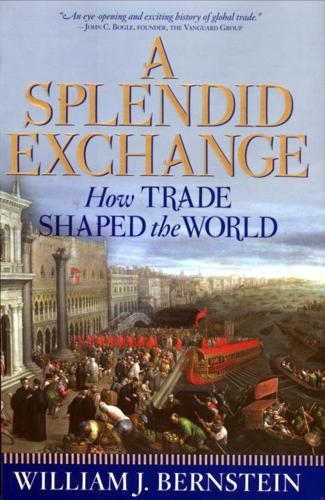
A Splendid Exchange: How Trade Shaped the World
by
William J. Bernstein
Published 5 May 2009
The sea was deep and bottomless, and there was no place where they could drop anchor.4 As early as the seventh century, the Chinese had seen enough Middle Eastern merchants to distinguish among the Muslims flooding into their ports: the "Po-ssi," or Persians, with their long Gulf-based tradition of seafaring, were far more numerous than the more landlocked "Ta-shih," or Arabs. The Chinese also clearly differentiated the world of Islam from a more mysterious land farther to the west called "Fu-lin"-the Byzantine Empire-known for its wondrous gemstones and glass.5 By 758, there were enough Muslims in Canton that they were able to sack the city, burn it, and make off to sea with their booty.6 The Muslims, especially the Persians, knew China much better than the Chinese knew them. While the existence of pre-Islamic Persian trade with China is controversial, it is certain that not long after the Muslim armies defeated the Persian Sassanids at the battle of Ctesiphon (just south of modem Baghdad) in 636, Arab and Persian vessels voyaged directly to Chinese ports.
…
The "Po-ssi" established trade diasporas all along the Chinese coast -large populations of Muslim merchants who handled an increasing volume of imports and exports. Jews accompanied them or followed in their footsteps. Nearly simultaneously, Nestorian Christians, expelled for their heresies from the Byzantine Empire but tolerated in the Muslim world as "people of the book," began to arrive from the West via the overland route. It is easy to see how a splinter Christian movement, repelled by the savage intolerance of the Catholic Church and attracted by the relative tolerance of Islam, spread ever eastward.
…
Between roughly 1200 and 1500, Italian merchants became the world's most prosperous slave traders, buying humans on the eastern shores of the Black Sea and selling them in Egypt and the Levant. The cargo passed through the twin choke points at the Dardanelles (the ancient Hellespont) and the Bosphorus, guarded by the once mighty Byzantine Empire, which inevitably found itself in the gun sights of the two great Italian trading powers: Venice and Genoa. Long-distance trade in the medieval period thus revolved around three stories: the spice trade, the slave trade, and the age-old struggle for mastery of the Bosphorus and Dardanelles.
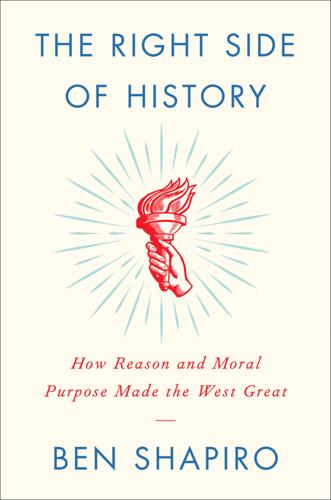
The Right Side of History
by
Ben Shapiro
Published 11 Feb 2019
The astonishing rise of a tiny Jewish sect to the religious leadership of the most powerful empire on earth was complete. But the Roman Empire was already tottering on its last legs. In 476, the last emperor of Rome, Romulus Augustus, abdicated at point of sword. (The Eastern Empire, based in Constantinople, remained, transforming into the Byzantine Empire and lasting all the way until the fifteenth century.) The collapse of the Roman Empire in the West fragmented the continent in terms of political control. The Catholic Church moved quickly to fill the gap, centralizing both temporal and spiritual power. From the fall of Rome through the twelfth century, Christianity would spread from its base in the Italian peninsula to the British Isles, France, Germany, and eventually the Nordic countries as well.
…
Abel, 32 abolitionism, 94, 179, 180 abortion, 167 Abraham, 24, 29, 35, 55, 212–13 Achilles, 42 Adam, 32, 45 Adams, John, 14, 88, 92 Adorno, Theodor, 189–90 Akkad, 31 Alexievich, Svetlana, 153 Al-Farabi, 67 allegory of the cave, 42, 58 alt-right, xvi, 184, 202–3, 208 Alzheimer’s, 9 American Astronomical Society, 204 American dream, 187–88 American Enlightenment, 121–23, 127 American exceptionalism, 131 Amos, 180 Anaxagoras, 46 Anti-Defamation League, xxiii Antigone, 42 Antiochus IV, 57 anti-Semitism, xxiii, 146–48 Apsu, 23 Aquinas, Thomas, 67–71, 74–75, 90, 170, 212 Arab world, 65–66 Aristotle, 5–7, 14, 42–45, 48, 50–53, 55, 66–67, 69–71, 76–77, 80, 82–83, 87–88, 90, 102, 106–7, 162, 188, 216 Aryanism, 146 astronomy, 68–69 atheism, 10, 100, 104–5, 114–15, 123, 133, 140, 180 Augustine, Saint, 59–61, 63–64, 69–71, 88 Augustus Caesar, emperor of Rome, 31 Austria, 130, 149 autocracy, 152 Babbitt (Lewis), 187–88 Babeuf, Gracchus, 134 Babylonians, 28 Bach, Johann S., 216 Bacon, Francis, 77–79, 107, 111, 165, 170 Bacon, Kevin, 16 Bacon, Roger, 69 Baumeister, Roy, 207 Beauvoir, Simone de, 198 Becket, Thomas, 63 Beethoven, Ludwig van, 216 Benedict, Saint, 64 Bentham, Jeremy, 110 Bible, 5, 7, 9–10, 20, 24, 27–31, 34, 36–37, 47, 65, 81, 87–89, 101, 103, 106, 123, 133, 160, 180–82, 212, 216 Bill for Establishing Religious Freedom in Virginia, 91 Bismarck, Otto von, 145–46 Black Lives Matter, xix Black Panther Party, 198 Black Power (Carmichael and Hamilton), 198 blacks, xiv, xvi–xvii, 93–94, 187, 189, 198–201, 203, 206 Blackstone, 123 Bloom, Allan, 50 Boethius, 64 Boniface VIII, Pope, 74 Boreing, Jeremy, xx Bouie, Jamelle, 203 Branden, Nathaniel, 195 Brandt, Karl, 156 Breitbart News, xxii Britain, 121, 127 Brookhiser, Richard, 11 Brothers Karamazov, The (Dostoyevsky), 116 Browder, Sue Ellin, 168 Brubaker, William Rogers, 129 Buck v. Bell, 155–56 Buddhism, 29 bureaucracy, 139–44, 153, 156 Burke, Edmund, 127–28 Byzantine Empire, 63 Cain, 32 Calvin, John, 75, 82, 100 Candide (Voltaire), 107 capacity, death of, 111–15. See also communal or collective capacity; individual capacity capitalism, xviii, xxiii, 135–36, 154, 188–91, 197, 209–10 Carmichael, Stokely, 198 categorical imperative, 109–10, 118 Catholic Church, 61, 63, 65–66, 71, 74–76, 79–83, 100–101, 123, 125–26, 180 Chamberlain, Houston Stewart, 147 Chase, Stuart, 151 checks and balances, 50, 53, 85, 87 Chesterton, G.
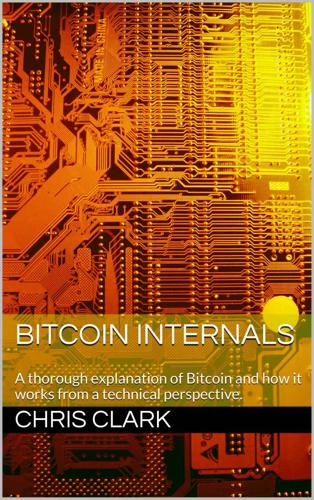
Bitcoin Internals: A Technical Guide to Bitcoin
by
Chris Clark
Published 16 Jun 2013
So the peer-to-peer network has to have a method to agree on an ordering of transactions even though some peers might be trying to sabotage the system. This problem of coordinating a group of peers with possible saboteurs is known as the Byzantine Generals’ Problem. The name comes from a 1980 paper[20] that described a situation in which the generals of the Byzantine Empire’s Army had to agree on whether to launch their attack on the enemy. The generals could communicate by messenger, but any of the generals could be a traitor trying to sabotage the attack. If a treasonous general or group of generals could confuse enough honest generals about the outcome of the decision, the army would be fragmented and meet with defeat.
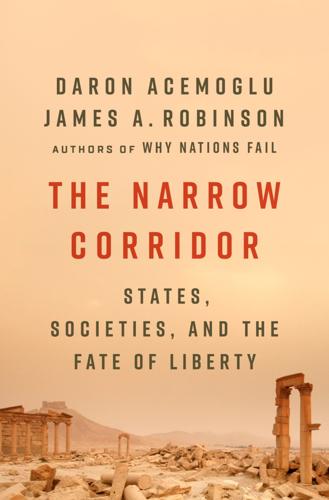
The Narrow Corridor: States, Societies, and the Fate of Liberty
by
Daron Acemoglu
and
James A. Robinson
Published 23 Sep 2019
The communal system of government created laws and economic institutions that allowed trade and economic activity to take off after the slump that followed the collapse of the Western Roman Empire in the late fifth century. Italy was well placed to benefit from this flourishing. In the east and the south were the Byzantine Empire and the new Muslim states, which we encountered in Chapter 4, supplying Eastern spices and many luxury goods. In the north were England and Flanders. England produced the highest-quality wool, Flanders the most sought-after textiles. The stage was set for a huge system of exchange: wool and cloth for luxuries and spices.
…
Its early history shows that there is nothing straightforward about moving into the corridor; it’s certainly not the natural outcome of the deliberations of stateless societies or a direct consequence of the cultures and customs of Germanic tribes, thing or no thing. It’s not enough to have only one blade of the scissors. The Dollar of the Middle Ages: The Byzantine Leviathan Though the Western Roman Empire did fall in the fifth century, the Eastern Roman or Byzantine Empire survived and occasionally thrived for another ten centuries. By the fifth century, Byzantium was already embodying almost all of the Roman institutions, so one of the blades of the European scissors was faithfully represented in this powerful empire. Indeed, our account of late Roman bureaucracy, composed by John Lydus, comes from Byzantium.
…
American Economic Review 105, no. 6: 1780–1816. Angell, Alan (1991). “Chile Since 1958.” In The Cambridge History of Latin America, edited by Leslie Bethell, vol. 8, Latin America Since 1930: Spanish South America, 311–82. New York: Cambridge University Press. Angold, Michael (1997). The Byzantine Empire 1025–1204: A Political History. 2nd edition. New York: Longman. Ansolabehere, Stephen, and James M. Snyder Jr. (2008). The End of Inequality: One Person, One Vote and the Transformation of American Politics. New York: W. W. Norton. Appiah, Anthony (2007) “A Slow Emancipation.” New York Times Magazine. https://www.nytimes.com/2007/03/18/magazine/18WWLNlede.t.html.
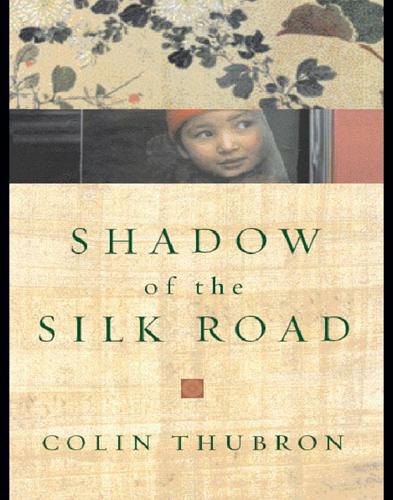
Shadow of the Silk Road
by
Colin Thubron
Published 1 Jan 2006
So Antioch, the sink of decadence, became the fount from which the Roman empire would be converted, and the evangelists of Utah were right, perhaps, to locate their roots here. Its Hellenised Christianity–a potent blend of fervour and learning–would be inherited in time by Constantinople and the long-lived Byzantine empire. In Antioch itself Constantine built one of the great churches of Christendom, the ‘Golden House’ where St John Chrysostom preached, likening the progress of the soul to the transformation of the silkworm. True to its nature, Antioch became a hotbed of schism, and from here Nestorianism took its long journey east to triumph among the Mongols and the Tang dynasty Chinese.
…
They defeat the Huns and extend their empire to the Oxus 637–642 Arab conquest of Persia: advent of Islam The West 3110–2258 BC Old Kingdom Egypt 479–431 BC The golden age of Gree 323–64 BC Seleucids rule Syria 300 BC Antioch founded 64 BC The Romans conquer Syria 27 BC–AD 14 Reign of Augustus Caesar, first emperor of Rome AD 313–337 Reign of Constantine the Great 330 Constantinople becomes capital. Dawn of the Byzantine empire 410 Rome falls to the Goths 431 Nestorianism divides the Eastern Church 527–565 Reign of Justinian in Byzantium 552 Silkworms carried to Constantinople 632 Death of Muhammad 637 Arabs capture Jerusalem 658 Murder of Ali, 4th caliph of Islam. Origins of the Sunni-Shia divide China c. 800 Woodblock printing invented 845 Nestorianism suppressed by the Tang 9th c Kyrgyz migrate into north-west 960–1279 Sung Dynasties 11th c Islam advances into north-west.
…
The Shah flees 1980–88 Iran–Iraq war 1989 Death of Ayatollah Khomeini The West 680 Battle of Kerbela 800 Charlemagne crowned Holy Roman Emperor 1099 First Crusade captures Jerusalem 1260 Mamelukes turn back the Mongols 1453 Ottoman Turks capture Constantinople 1498 Portuguese pioneer the seaway round Africa 1914–18 First World War 1917 The Russian Revolution 1939–45 Second World War 1984–97 Kurdish rebellions in Turkey 2001 World Trade Center attack 2003 US-led invasion of Iraq Searchable Terms Abbasid Caliphate Abdullah (Kurdish driver) Abdurahman, King Afghanistan journey in Afrasiab Africa, seaway round Aga Khan Ahmadjan Ahuramazda (god) Aimaq (nomads) Ain Jalut, battle of Akayev, President of Kyrgyzstan Akbar Khan al- for names beginning al- see under following element of name Alamut Alamut river Alaric Alexander the Great Alexandria Ali (statistician) Ali, Caliph Alik (ex-policeman) Aloban (Nestorian priest) Altun mountains Amanullah, King America see United States of America Amin, Hafezullah Amirali (artist and poet) Amithaba (Buddha of Infinite Light) Amu Darya/Oxus river Anatolia Ancestors, claimed see also Manas Andijan Andkvoi Annar (Kyrgyz) Ansari Antioch Antiochus IV, King Antoninus Pius, emperor Apak Hoja mausoleum, Kashgar Apollo Arabian Incense Road Arabs Aral Sea Arhun (watchman) Armenia Armenians Aryans Asmu, Imam: tomb Assassins Assyria Assyrian church At-Bashy Athens Ata, Mohammed Attar Augustus Caesar, emperor Aurelian, emperor Azerbaijan Iranian Azeris Babur, emperor Babylon Bacon, Francis Bactria Bactrians Badakshan Baghdad Baisanghur, prince Balkh Barnabas, St Basra ‘Beauty of Kroran, The’ Behesht-e Zahra Beijing see also Tiananmen Square Bethlehem Bibi Khanum mosque Samarkand Bihzad bin Laden, Osama Birecik Bishkek Black Jade river, Khotan Black Mountains Bodh Gaya Bolsheviks Bombyx mori (silk moth) Book of Changes Book of Odes Book of Rites Borders Brazil British, the Buddhism in China Bukhara Byron, Robert Byzantine empire Caesar, Julius Canada Carrhae, battle of (53 BC) Caspian Sea Caucasus, the Central Asia time line see also names of countrie Chaldean Church Changan (Xian) palace ruins see also Xian chariots Charklik (Ruoqiang) Charlemagne, emperor Chatyr lake Chechens Chechnya Cherchen (Qiemo) salt plateau of Chiang Kai-shek Chilamachin China journey in time line Chinese (outside China) Chingiz (builder) Chinon Christianity in Antioch in China in modern Iran and Mongols Chrysostom, St John Chychkan river Cicero Cizre Cleopatra Cologne cathedral Columbus, Christopher Communism compass, the magnetic Confucianism Confucius Conrad of Montferrat Constantine the Great, emperor Constantinople Crassus, triumvir Crete crossbows Crusades Cultural Revolution Cyrus, King of Persia Czechoslovakia Da Qin Dalai Lama Damascus Damghan Daniar (Kyrgyz) Daniel (builder) Daphne, groves of (near Antioch) Dasht-e-Laili Demavend, Mount Deng Xiaoping Deobandi schools, Pakistan Dharamsala Dokuz Khatun Dolkon (Uighur) Dost Mohammed, King Dostum, Abdul Rashid Dowlatabad drugs Dubs, Homer Dudayev, General Dunhuang East Turkestan Islamic Movement Edward I, King of England Egypt Eighth Imam (Shia) Elburz mountains Eleanor of Castile, queen Elnura (Kyrgyz) England English language Euclid Euphrates Europe Fatima (daughter of Mohammed) Feng (Hui) Fergana Fergana valley Firdausi Shahnama tomb First Pass under Heaven, The Fitzgerald, Edward Flanders Fraser, James (British traveller) Friendship Bridge Friday Mosque, Herat Gang of Four Gansu corridor Gate of Sorrows, Jiayuguan Gawhar Shad, queen mausoleum of Gawhad Shah mosque and college, Herat Gawhar Shad mosque, Meshed Gazargah Gazur Khan Gelia (artist’s wife) Genghis Khan Germans Germany al-Ghazali Ghorid dynasty Gobi desert Goes, Bento de Golden Horde ‘Golden House’, Antioch Golmud Goths Great Game Great Leap Forward Great Wall Greece Gromov, General Guanyin (goddess) Guarong (Song Guorong) Gul (Uighur) Gulag Gulja Guma Gumbaz mosque, Namangan gunpowder Gutenberg Gwelin Hafizullah (Afghan) Hairatan Hakkari Hamed Han Hangzhou Hari river Haroun al-Rashid Hasan-i-Sabah Hazara Hazrat Ali shrine, Mazar-e- Sharif Heavenly mountains see Tian Shan mountains Hekmatyar, Gulbuddin Helena, St Herat Herodotus Hindu Kush Hinduism Homs Hongming (film-maker) Horses Hu Ji (historian) Huang Huangling Huatuguo Hui Hulagu, emperor Hunan Huns 70 134 Husain Baiqara, sultan Hussein (Iranian acquaintance) Hussein (son of Caliph Ali) Hussein, Saddam Ibn BattutaId Kah mosque, Kashgar Ilkhanid dynasty India Indians Innocent IV, Pope Inventions, Chinese see also crossbows, stirrups Iran journey in time line see also Iran-Iraq war Iran-Iraq war Iranian Azerbaijan Iraq see also Iran-Iraq war Isfahan, Qadi of Islam/Muslims in China see also Mevlevi sect; Naqshbandi sect; Shia; Sunni Ismail, 281, 282 Ismailis see also Assassins Israelis Italy see also Romans; Rome jade Jade Gate Jade Road Jafar (trainee doctor) Japan Jaxartes (Syr Darya) river Jelaleddin Rumi Jerusalem Crusader king of Patriarch of Jesuit missionaries Jesus Christ Jews Jiahuang (painter) Jiayuguan Jielu Jiuquan Jumgal valley Justinian, emperor Juvenal Kabul Kalan minaret, Bukhara Kanikay Karakoram Karakoram mountains Karakoram Highway Karimov, President of Uzbekistan Karzai, President of Afghanistan Kashgar Kazakhs Kazakhstan Kekemeren river Kenkol ravine Kerbela, battle of (AD 680) Keriya Khameini, Supreme Leader, Iran Khan, Ismail Khan family, Bukhara Khatami, President of Iran Khoja Parsa shrine, Balkh Khomeini, Ayatollah tomb of Khorasan Khotan Kitbogha Kizilkum desert Kiziltepe Kochkor mazar near Kochoi, tomb of Kokand Koran Korea Koreans Kublai Khan, emperor Kuchi Kun Lun mountains Kunduz Kurds Kushans Kyanizyak-khatun, princess Kyrgyz Kyrgyzstan journey in Labrang Living Buddha of Lady of the Silk Worms (Lei-tzu) Lanchou University Lanzhou Lao-tzu Lattimore, Owen Lei-tzu see Lady of the Silk Worms Lenin (village) Lenin, V.I.

How to Run the World: Charting a Course to the Next Renaissance
by
Parag Khanna
Published 11 Jan 2011
Instead we are in for a fractured, fragmented, ungovernable, multi-polar or non-polar world. All these adjectives hint at our emerging reality: a new Middle Ages. It was a millennium ago—in the pre-Atlantic era—that the world was genuinely Western and Eastern at the same time. In the West, Europe was nominally ruled by the Holy Roman Empire while the vast and multiethnic Byzantine Empire centered in Constantinople faced perpetual tension with its neighbors. Yet Europe’s darkest period was the era of Chinese and Indian glory. The Song, Yuan, and post-Mongol Ming dynasties represented the zenith of Chinese culture and exploration, and India under the Mughal Empire dominated southern and central Asia while its trade links flourished with East Africa.
…
Remember: Empires have soft borders, not hard ones. The more powers that rise, the more open the world becomes. What does this mean for an America that no longer controls globalization? Rather than the usual comparisons to ancient Rome or nineteenth-century Prussia, a medieval analogy to the Byzantine Empire is more apt. Byzantium staved off decline throughout the entire Middle Ages until the fifteenth century, extending its influence through espionage, bribery, and alliances. Even when Constantinople wasn’t able to impose its will on the chaotic medieval world, it remained relevant as a powerful military, economic, and cultural force.
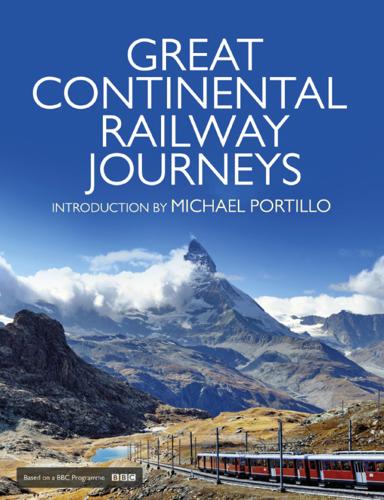
Great Continental Railway Journeys
by
Michael Portillo
Published 21 Oct 2015
MIND THE GAPS BY THE SUMMER OF 1889 NEW RAILWAY TRACKS had filled in the gaps and passengers from Paris could reach Constantinople 68 hours later without leaving their lap of luxury. The train crossed seven international frontiers and operated in more than eight different railway systems. In 1891, it became officially branded the Orient Express, named not for the Far East but for the former Byzantine empire. Here was an exotic destination rarely visited by Europeans before the train service got underway. CIWL even built a hotel in Constantinople, the Pera Palace, to receive passengers in a comparable style. However, the train did alter its course, either to suit new routes as they became available or to surmount political hurdles that arose with increasing regularity.
…
INDEX (page numbers in italic type refer to illustrations) A AB Svenska Kullagerfabriken, ref1 Abdul Hamid II, ref1, ref2, ref3, ref4 deposed, ref1 Abe, Shinzo, ref1 advertisements, ref1, ref2, ref3 Albula railway, ref1 Alexander II of Russia, ref1, ref2 Alexander III of Russia, ref1 Alexander the Great, ref1 Alexandra, Queen, ref1 Alexandria–Cairo line, ref1 Alfonso XII of Spain, ref1 Alfonso XIII of Spain, ref1, ref2 plot to assassinate, ref1, ref2 Algeciras, Conference of, ref1 Algeciras (Gibraltar) Railway Company, ref1 Aligeri, ref1 Allenby, Lord, ref1 American Committee for Armenian and Syrian Relief, ref1 (see also Armenian Christians) Amsterdam–Northern France journey, ref1 Anasthatos, ref1 Anna Karenina (Tolstoy), ref1 Ansaldo, Giovanni, ref1 anti-Semitism, ref1, ref2 Aparicio, Juan Pedro, ref1 Apennine mountains, ref1, ref2 Aranjuez line, ref1, ref2 Arcachon, ref1 arches, two-storey, ref1, ref2 Armenian Christians, genocide of, ref1 Art Deco, ref1 Asquith, Herbert, ref1 Association of German Engineers, ref1 Astapovo station, ref1, ref2 Atatürk, Kemal, ref1 Athens–Thessaloniki journey, ref1 Atocha station, ref1, ref2 Auschwitz, ref1, ref2 ‘Austrian bridge’, ref1, ref2 Austrian empire, ref1, ref2, ref3, ref4, ref5 Austrian State Railways, ref1 Austro-Hungarian empire, ref1, ref2, ref3, ref4, ref5 map of, ref1 Auto, ref1 B Baden State Railway, ref1 Baedeker, Karl, ref1, ref2 Baghdad Railway, ref1 Bake, William Archibald, ref1 Balfour, Arthur, ref1 Balkan War, First, ref1 ball bearings, ref1, ref2 Barcelona–Mallorca journey, ref1 Barcelona–Mataró line, Spain’s first domestic train on, ref1 Barcelona metro, ref1, ref2 Barcelona, as regional railway hub, ref1 barges, ref1, ref2 Barraclough, John, ref1 Bartali, Gino, ref1 Basel–Jungfraujoch journey, ref1 Battle of Langensalza, ref1 Battle of the Somme, ref1 Bavarian Ludwig Railway, ref1, ref2 Bayard, ref1 BBC, ref1, ref2 Beer, Hanna, ref1 Belgian chocolate, ref1 Belgian Resistance, ref1 belle époque, ref1, ref2 Belpaire, Alfred, ref1 Bergen line, conversion of, ref1 Berlin, Congress of, ref1 Berlin–Rhine journey, ref1 Berlin, trams in, ref1, ref2 Berlin Wall, ref1 Betjeman, Sir John, ref1 Bianchi, Riccardo, ref1, ref2 bicycles, ref1 Bilbao station, ref1 Bing, Stefan, ref1 Bismarck, Otto von, ref1 Black Forest, ref1 Blériot, Louis, ref1 Blowitz, Adolphe Opper de, ref1 Bon Marché, ref1 Bonaparte, Napoleon, ref1, ref2 Booth, Alfred, ref1 Bordeaux–Bilbao journey, ref1 Bordeaux station, ref1 Bordeaux wines, ref1 Boris III of Bulgaria, ref1 Bradshaw, George, ref1, ref2, ref3 cholera suffered by, ref1 grave, ref1 railway shares bought by, ref1 Bradshaw’s Continental Guide (1913), ref1, ref2 (see also Bradshaw’s guidebooks) journeys (Destinations 1): Amsterdam to Northern France, ref1 Basel to Jungfraujoch, ref1 Berlin to the Rhine, ref1 Hungary to Austria, ref1 London to Monte Carlo, ref1 journeys (Destinations 2): Bordeaux to Bilbao, ref1 Copenhagen to Oslo, ref1 Dresden to Kiel, ref1 Madrid to Gibraltar, ref1 Prague to Munich, ref1 Turin to Venice, ref1 journeys (Destinations 3): Haifa to Negev Desert, ref1 La Coruña to Lisbon, ref1 Lyon to Marseille, ref1 Rome to Taormina, ref1 Tula to St Petersburg, ref1 Warsaw to Kraków, ref1 journeys (Destinations 4): Athens to Thessaloniki, ref1 Barcelona to Mallorca, ref1 Freiburg to Hannover, ref1 Pisa to Lake Garda, ref1 Sofia to Istanbul, ref1 Vienna to Trieste, ref1 legacy of, ref1 published, ref1, ref2 Bradshaw’s guidebooks, ref1, ref2, ref3 (see also Bradshaw’s Continental Guide (1913)) Belgium praised by, ref1 on Circumvesuviana, ref1 Dresden praised by, ref1 Dutch praised by, ref1 on Greece, ref1 on Heidelberg Castle, ref1 on Jerusalem, ref1 on Leipzig, ref1 on Pyrenees, ref1 on Santiago Cathedral, ref1 warnings in, ref1, ref2 Brandt, Alfred, ref1 Braque, Georges, ref1 bread train, ref1 Breda, Ernesto, ref1 locomotive built by, ref1 Brenner Pass, ref1, ref2 British empire, ref1, ref2 broad gauge tracks, ref1, ref2, ref3 (see also narrow gauge tracks) Broders, Roger, ref1 Brooke, Rupert, ref1 Brothers Grimm, ref1, ref2 Brown, Charles, ref1 Brunel, Isambard Kingdom, ref1, ref2 Budapest: Chain Bridge, ref1, ref2 Europe’s first underground system in, ref1 Budweis line, ref1, ref2 Bunyol, Miquel Biada, ref1, ref2 Burschenschaften, ref1 Busse, Otto, locomotive designed by, ref1 Byron, Lord, ref1 Byzantine empire, ref1, ref2 C Café Central, Vienna, ref1, ref2 Camillo Benso, Count of Cavour, ref1, ref2, ref3, ref4 Canadian Pacific Company, ref1 Cannes, ref1 Carlos I of Portugal, ref1, ref2, ref3 Carnegie, Andrew, ref1 Carnot, Sadi, ref1 Carpathian Mountains, ref1 Carrel, Alexis, ref1 Carriage 2419, ref1, ref2 Caserio, Sante Geronimo, ref1 Central Station, Amsterdam, ref1, ref2 Chain Bridge, Budapest, ref1, ref2 Channel Tunnel, ref1, ref2 Charing Cross station, ref1 Charles Albert of Piedmont, ref1 Cherepanov, Miron, ref1 Cherepanov, Yefim, ref1 chocolate manufacture, ref1 Chopin, Frederick, ref1 Christie, Agatha, ref1 Chrzanów factory, ref1 ‘Cinderella’, ref1 Cinématographe, ref1 Circumvesuviana, ref1, ref2 CIWL (Compagnie Internationale des Wagons-Lits), ref1 Clark, Adam, ref1 Clark, William Tierney, ref1 clocks and time, ref1, ref2, ref3 CO (Société Générale pour l’Exploitation des Chemins de Fer Orientaux), ref1 Colaço, Jorge, ref1 Committee of Union and Progress (‘Young Turks’), ref1 Compagnie des chemins de fer de Paris à Lyon et à la Méditerranée (PLM), ref1, ref2 Compagnie Internationale des Wagons-Lits (CIWL), ref1 Compañía Vapores del Sur de España, ref1 Conan Doyle, Sir Arthur, ref1 concentration camps, ref1, ref2 (see also anti-Semitism; Nazi Germany) Conference of Algeciras, ref1 Congress of Berlin, ref1 Cook, Thomas, ref1 Copenhagen–Oslo journey, ref1 Corinth Canal, ref1 corkscrew tracks, ref1, ref2 Credit Mobilier, ref1 Credit Suisse, ref1 Cresta Run, ref1, ref2 Crimean War, ref1 Cuypers, Petrus J.

Age of the City: Why Our Future Will Be Won or Lost Together
by
Ian Goldin
and
Tom Lee-Devlin
Published 21 Jun 2023
The fall of Constantinople to the Ottomans undoubtedly played a role, triggering a great migration of Greek scholars to university cities such as Bologna and Padua, bringing with them the canon of ancient philosophy and science that had been lost with the fall of Rome.47 Also important was the invention of the printing press, which revolutionized access to ideas. Before, knowledge had been locked away in handwritten manuscripts, many of which were kept in monasteries, out of reach of ordinary citizens. With the printing press, books and pamphlets in local languages suddenly became widely available. But while the collapse of the Byzantine Empire and the invention of the printing press helped propel the Renaissance, Europe’s intellectual revival was already gaining momentum by the time these things happened. What really laid the foundations for the Renaissance was the return of urbanization following a long hiatus after Rome’s collapse, which for the first time in centuries made it possible for people to be regularly exposed to new ideas.
…
Index abortion here abstract mathematics here Achaemenid Empire here Adani, Gautam here agglomeration effects here agriculture here, here, here, here, here, here, here, here, here and carbon emissions here and disease here, here productivity here, here vertical farming here Ahmedabad here air-conditioning here, here airports here, here, here, here Albuquerque here Alexandria here Allen, Paul here Allen, Thomas here Altrincham here Amazon here, here, here Amazon rainforest here Amsterdam here Anatolia here Anderson, Benedict here Anheuser-Busch here antibiotics here, here, here Antonine Plague here Anyang here apartment conversions here, here Apple here, here, here Aristotle here Arizona State University here Arlington here Assyrian merchants here Athens, Ancient here, here, here, here, here, here Atlanta here, here Austin here, here, here automation here, here, here, here, here, here, here, here axial precession here Baghdad, House of Wisdom here Baltimore here, here Bangalore here, here Bangkok here Bangladesh here, here, here, here Barlow, John Perry here Bauhaus here Beijing here, here Belmar redevelopment here Berkes, Enrico here Berlin here, here, here Berlin Wall, fall of here Bezos, Jeff here biological weapons here ‘biophilia’ here biospheres here bird flu here Birmingham here, here Black Death here, here, here Blake, William here Bloom, Nick here BMW here ‘bobo’ (bourgeois bohemian) here, here, here Boccaccio, Giovanni here Boeing here, here, here Bogota here Bologna here Bonfire of the Vanities here Borneo here Boston here, here, here Boston University here, here Brand, Stewart here Brazil here, here Brexit here, here, here Bristol here Britain broadcasting here deindustrialization here education here enclosure movement here foreign aid here high-speed rail here, here house prices here immigration here industrialization here, here infant mortality here ‘levelling up’ here life expectancy here mayoralties here per capita emissions here per capita incomes here remote working here social housing here Brixton riots here broadcasting here Bronze Age here, here, here, here bronze, and shift to iron here Brooks, David here Brynjolfsson, Eric here Burgess, Ernest here bushmeat here, here Byzantine Empire, fall of here Cairncross, Frances here Cairo here calendar, invention of here Cambridge, Massachusetts here Cambridge University here canals here, here, here ‘cancel culture’ here Cape Town here Catholic Church here C40 Cities partnership here Chadwick, Edwin here Chang’an (Xi’an) here, here, here, here Charles, Prince of Wales here charter cities here Chengdu here Chiba here Chicago here, here, here, here, here, here, here, here childbirth, average age at here childcare here, here, here, here, here China here ancient here, here, here, here call-centre workers here cereal production here civil strife here and Covid-19 pandemic here Cultural Revolution here definition of cities here economic liberalization here entry into WTO here Household Responsibility System here hukou system here One Child Policy here Open Coastal Cities here per capita emissions here rapid ageing here Special Economic Zones here technology here urbanization here China Towns here Chinese Communist Party here cholera here, here, here, here Chongqing here cities, definition of here Citigroup here city networks here civil wars here Cleveland here, here, here, here climate change here, here, here, here, here, here, here, here, here, here coastal cities here, here, here, here commuting here, here, here, here, here, here, here, here Concentric Zone Model here Confucius here conspiracy theories here Constantinople here, here containerization here, here Copenhagen here, here Corinth here Cornwall here corruption here Coventry here, here covid-19 see pandemics crime rates here ‘cyberbalkanization’ here cycling here, here, here, here Damascus here Dark Ages here, here data science here de Soto, Hernando here deforestation here, here, here, here Delhi here Dell here Delphic oracle here democracy here, here, here Democratic Republic of Congo here, here, here, here, here, here Deng Xiaoping here dengue fever here Denmark here, here Detroit here, here, here, here, here, here, here Dhaka here, here, here, here, here Dharavi here Diana, Princess of Wales here diasporas here, here Dickens, Charles here district heating systems here Dresden here drought here, here, here, here, here, here, here Drucker, Peter here dual-income households here, here Dubai here, here, here Dunbar, Kevin here Düsseldorf here East Antarctic ice sheet here East China Sea here, here Easterly, William here Eastern Mediterranean here, here, here Ebola here Edinburgh here education here, here, here, here, here, here, here, here, here, here, here, here, here, here higher education here, here, here, here; see also universities Japanese school system here Egypt here, here Ancient here, here, here, here Ehrenhalt, Alan here electric vehicles (EVs) here Engels, Friedrich here Enlightenment here Epic of Gilgamesh here Erfurt here Ethiopia here, here Euripides here European Enlightenment here exchange rates here Facebook here, here, here fake news here famine here, here fertility rates here, here, here ‘15-minute city’ principle here Fischer, Claude here Fleming, Alexander here flooding here, here, here, here, here, here, here Florida, Richard here, here food shortages here Ford, Henry here, here foreign aid here fossil fuels here, here France here, here, here, here, here, here, here, here, here, here, here Frankfurt here Franklin, Benjamin here Friedman, Thomas here, here Fryer, Roland here Fukuoka here, here Gaetani, Ruben here Galileo Galilei here Ganges River here Garden Cities here Garden of Eden here Gates, Bill here, here gay community here General Electric here General Motors here genetic engineering here gentrification here, here, here, here, here George, Andy here Germany here, here, here, here, here, here Gingrich, Newt here glaciers here Glasgow here Glass, Ruth here global financial crisis here, here, here global population, size of here globalization here, here, here, here, here, here, here, here, here, here Goldstein, Amy here Google here, here, here Goos, Maarten here Grant, Adam here Great Depression here, here Greece, Ancient here, here, here, here, here Griffith Observatory here Gropius, Walter here Gruen, Victor here Gulf Stream here Haiti here Hamburg here Hanseatic League here, here Harappa here, here Harry, Prince here Harvard University here hate speech here Haussmann, Baron here, here Hawaii here Hazlitt, William here healthcare here, here, here, here, here, here, here, here, here, here heatwaves here, here Hebei here Heckscher, Eli here Herodotus here Himalayas here Hippocrates here Hippodamus here Hittite Empire here HIV here, here Ho Chi Minh City here Holocene here, here, here homophily here Hong Kong here house prices here, here, here, here, here, here, here Houston here, here, here Howard, Ebenezer here Hudson River here Hugo, Victor here Hume, David here Hurricane Katrina here hybrid working, see remote and hybrid working ice melting here, here import substitution industrialization here InBev here India here, here, here, here, here, here, here, here, here fertility rates here Indonesia here, here Indus River here Indus Valley here, here, here inequality here, here, here, here, here, here, here, here, here, here, here infant and child mortality here, here, here, here influenza here, here, here ‘information cocoons’ here Instagram here internet here, here, here, here, here, here invention here, here, here, here, here, here, here, here, here, here irrigation here, here, here, here Italy here Jacobs, Jane here, here, here Jakarta here, here James, Sheila here Japan here, here, here, here, here, here, here, here, here post-war development here schooling system here Jenner, Edward here Jesus Christ here Jobs, Steve here jobs apprenticeships here ‘lousy’ and ‘lovely’ here tradeable and non-tradeable here Justinian Plague here Kashmir here Kenya here Kinshasa here, here Kish here knowledge workers here, here, here, here, here, here, here, here, here, here, here, here Koch, Robert here Kolkata here Korean War here Krugman, Paul here Kushim Tablet here Lagash here Lagos here, here, here, here, here, here, here Lahore here land titling programmes here Las Vegas here Latin language here Lee Kuan Yew here, here Leeds here, here Leicester here Leipzig here, here, here, here Letchworth here life expectancy here, here, here, here, here, here Liverpool here, here Ljubljana here London here, here, here, here, here, here, here bike lanes here Canary Wharf here, here Chelsea here, here, here China Town here cholera outbreaks here City of London here, here coffeehouses here and Covid-19 pandemic here financial services here gentrification here, here, here Great Stink here, here heatwaves here, here house prices here, here hybrid working here, here immigration here, here incomes here, here mayoralty here migration into inner London here population growth here, here, here poverty here, here public transport here, here, here slum housing here social housing here suburbanization here Los Angeles here, here, here, here Louisville here Luoyang here Luther, Martin here Luton Airport here Luxembourg here, here Lyon here McDonald’s here McDonnell Douglas here McLuhan, Marshall here Madagascar here malaria here, here, here, here Malaysia here Mali here malls, reinvention of here Manchester here, here, here, here, here, here, here Manila here Manning, Alan here Markle, Meghan here marriage here Marshall, Alfred here Marshall, Tim here Marx, Karl here Maya here, here measles here, here, here Meetup here mega regions here Mekong River here Memphis, Egypt here, here Mesoamerica here, here Mesopotamia here, here, here metallurgy here metaverse here methane here, here Mexico here Miami here, here, here microbiology here Microsoft here, here, here middle class, rise of here migration policy here millennial generation here Milwaukee here, here Minoan civilization here Mistry, Rohinton here MIT here MMR vaccine here ‘modernization’ theory here Mohenjo-Daro here, here Moretti, Enrico here, here mortality rates here, here, here, here, here, here, here, here, here, here, here, here motor car, invention of here Moynihan, Daniel here Mumbai here, here Mumford, Lewis here, here, here, here Munich here, here Mycenaean civilization here Nagoya here, here Nairobi here Nashville here National Landing, Arlington here Natural History Museum here natural resource exports here Nestlé here Netherlands here network effects here New Economics Foundation here New Orleans here, here New York here, here, here, here, here, here, here, here, here, here carbon emissions here and Covid-19 pandemic here gentrification here, here housing here, here, here incomes here, here Manhattan here, here, here, here, here population growth here, here and rising sea levels here slum housing here suburbanization here, here subway here waste and recycling here New York Central Railroad here New York World Fair here Newcastle here Nextdoor here Niger here Nigeria here, here, here, here Nilles, Jack here, here Nipah virus here Norway here, here Nottingham here Novgorod here ocean and air circulation here office rental and sales prices here Ohlin, Bertil here Oldenburg, Ray here online deliveries here OpenTable here Osaka here, here Oslo here Ottoman Empire here Oxford, population of here Oxford University here Pacific Belt Zone here Padua here Pakistan here, here, here pandemics here, here, here, here, here, here, here, here, here, here, here, here, here, here and zoonotic diseases here paramyxovirus here Paris here, here, here, here, here, here, here, here, here, here, here, here, here, here, here, here Paris Conference (2015) here Park Chung-hee, General here parks here Pasteur, Louis here Pearl River Delta here, here Peñalosa, Enrique here per capita income here Philadelphia here Philippines here, here Phoenix here, here Pixar here plague here, here, here, here Plato here plough, invention of here pollution here, here, here, here air pollution here, here, here, here population growth here, here, here, here, here, here, here, here PORTL here potter’s wheel, invention of here printing press here, here productivity here, here, here, here, here agricultural here, here Protestantism, rise of here public transport here, here, here, here, here, here, here, here, here, here, here, here, here, here Putnam, Robert here, here quarantine here railways here, here, here, here, here high-speed rail here, here, here Ralston Purina here Reagan, Ronald here recycling here, here religion here remote and hybrid working here, here, here, here Renaissance Florence here, here, here renewable energy here, here Republic of Letters here République des Hyper Voisins here ‘resource curse’ here Rheingold, Howard here Ricardo, David here Rio de Janeiro here Riverside, San Francisco here robotics here Rockefeller, John D. here Roman Empire here, here, here Rome, Ancient here, here, here, here, here, here Romer, Paul here Rotterdam here Rousseau, Jean-Jacques here, here Sahel here, here sailboat, invention of here St Augustine here St Louis here, here, here Salesforce here San Diego here San Francisco here, here, here, here, here, here, here, here, here, here, here gentrification here, here hybrid working here, here San Francisco Bay Area here, here, here Santa Fe here São Paulo here Savonarola, Girolamo here Scientific American here Scott, Emmett J. here sea levels, rising here, here, here Seattle here, here, here, here, here, here Second Opium War here Seneca here Seoul here Shanghai here, here, here, here, here Shantou here Sheffield here, here, here Shen Nung here Shenzhen here, here Siemens here Silk Roads here, here Sinclair, Upton here Singapore here, here, here, here Slater, Samuel here smallpox here, here Smith, Adam here, here Snow, John here social capital here social housing here, here social media here, here, here, here, here Socrates here solar panels here South Africa here South Korea here, here, here, here, here, here Southdale Center here specialization here, here, here, here, here, here Spengler, Oswald here Starbucks here Stephenson, Neal here Stewart, General William here Stuttgart here Sub-Saharan Africa here subsidiarity principle here suburbanization here, here, here, here, here, here, here, here, here Sunstein, Cass here Sweden here, here Sydney here, here, here, here, here, here Syrian refugees here, here Taiwan here Tanzania here telegraph here Tempest, Kae here Thailand here Thames River here, here Thatcher, Margaret here, here, here ‘third places’ here Tianjin here Tocqueville, Alexis de here Toffler, Alvin here Tokyo here, here, here, here trade liberalization here trade routes here Trump, Donald here, here tuberculosis here, here, here Twain, Mark here Twitter here, here typhoid here, here typhus here, here Uber here Uganda here Ukraine here, here Umayyad Caliphate here unemployment here, here United Nations here, here United States anti-global populism here anti-trust regulation and industrial consolidation here anxiety and depression here broadcasting here car registrations here cost of education here decline in trust here deindustrialization here Gilded Age here Great Migration here house prices here, here immigration here industrialization here inequality here labour mobility here ‘magnet schools’ here parking spaces here patent filings here per capita emissions here, here per capita incomes here remote working here, here, here return on equity here Rust Belt here schools funding here slavery here socioeconomic mobility here suburbanization here tax revenues here US Federal Housing Authority here US General Social Survey here US Trade Adjustment Assistance Program here universities here, here, here University College London here University of Texas here university-educated professionals here Ur here urban heat island effect here urbanism, subcultural theory of here Uruk here, here, here, here, here vaccines here, here Van Alstyne, Marshall here Vancouver here Venice here, here Vienna here, here Vietnam here voluntary associations here, here Wakefield, Andrew here walking here, here, here Wall Street here Warwick University here Washington University here WELL, The here Welwyn Garden City here wheel, invention of here wildfires here, here William the Conqueror here Wilson, Edward Osborne here, here Wilson, William here World Bank here, here World Health organization here World Trade Organization here World Wide Web here writing, invention of here Wuhan here, here Xiamen here Yangtze River here, here Yangtze River Delta here yellow fever here Yellow River here, here Yersinia pestis here Yokohama here YouTube here, here Yu the Great here Zhuhai here Zoom here Zoroastrianism here BLOOMSBURY CONTINUUM Bloomsbury Publishing Plc 50 Bedford Square, London, WC1B 3DP, UK 29 Earlsfort Terrace, Dublin 2, Ireland BLOOMSBURY, BLOOMSBURY CONTINUUM and the Diana logo are trademarks of Bloomsbury Publishing Plc This electronic edition first published in Great Britain 2023 Copyright © Ian Goldin and Tom Lee-Devlin 2023 Ian Goldin and Tom Lee-Devlin have asserted their right under the Copyright, Designs and Patents Act, 1988, to be identified as Authors of this work All rights reserved.

A Map of Future Ruins: On Borders and Belonging
by
Lauren Markham
Published 13 Feb 2024
“For the humanists,” as the scholar James Hankins explains, “what gives rulers legitimacy are personal qualities of character and intellect that win trust and obedience from the ruled.” The collapse of the Byzantine Empire to the Ottomans in the mid-fifteenth century only deepened the Renaissance preoccupation with ancient Greece. Whereas the Western Roman Empire had succumbed to invaders in the fifth century CE, the Eastern Roman Empire, which included the Greek city-states—“Hellas”—largely survived for over a millennium in what we now know as the Byzantine Empire. When its capital, Constantinople, fell to the Ottomans in 1453, scads of scholars fled the city to Italy and other parts of western Europe, bringing with them their own preoccupation with classical Greek texts, which had experienced a revival in the East and were central to the intellectual tradition in which these scholars had been formed.
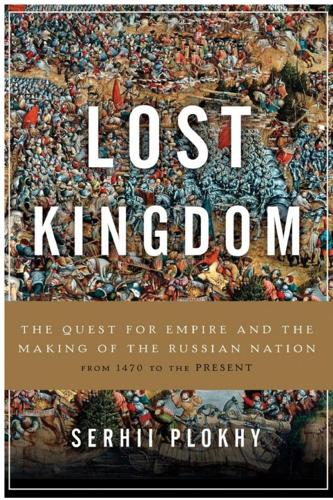
Lost Kingdom: The Quest for Empire and the Making of the Russian Nation
by
Serhii Plokhy
Published 9 Oct 2017
The ceremony took place in a wooden church in the Kremlin next to the not yet completed Dormition Cathedral, and later Russian chroniclers could not even agree whether the marriage service was performed by the metropolitan or a regular archpriest. For all its modest appearance, the wedding had major symbolic significance: the ruler of Moscow became a relative and continuator of the Byzantine emperors. Sophia’s uncle, Constantine XI Palaiologos, had died in May 1453 defending Constantinople against the Ottoman assault. The Byzantine Empire died with him, but not the imperial ambitions of Orthodox rulers. By marrying Sophia, Ivan III of Moscow was putting on the mantle of the Byzantine emperors. It was probably owing to Sophia’s Roman connections that Ivan brought to Moscow a group of Italian architects to build new walls for the Kremlin—the seat of the grand princes that Ivan was now turning into an imperial castle.
…
But for a Muscovite ruler to marry a Uniate with the support of Rome was a sign of recognition of his new independent status by the political and ecclesiastical elite of Western and Central Europe. In the early 1490s, the Russian religious elite embraced several notions: that the Muscovite tsars were heirs of the Byzantine emperors, that Moscow was the second Constantinople, and that Muscovy and the Rus’ land were successors to the Byzantine Empire. Those ideas were first fully expressed by Metropolitan Zosima of Moscow in 1492. In that year, as Christopher Columbus discovered the New World, the Orthodox believers of Moscow prepared for the world’s end. According to the Orthodox calendar, which counted years from the creation of the world, 1492 was in fact the year 7000, which would mark the end of time.
…
See Napoleon I Book of Royal Degrees, 15 Boretskaia, Marfa, 8, 10 Boretsky, Dmitrii, 9 Borotbists, 216 Brezhnev, Leonid, 243, 283–284, 290, 293–294, 299, 303 Brief Compendium of Teachings on the Articles of Faith, 31 Briullov, Kirill, 109 Brotherhood of Saints Cyril and Methodius, 107, 108, 111–112, 114, 116, 120, 133, 139, 146 Brzezinski, Zbigniew, 349 Budilovich, Anton, 171 Bukharin, Nikolai, 251–252, 287 Bulgakov, Mikhail, 253 Buriat-Mongolia, 245–247, 257 Bush, George W., 336 Bykaŭ, Vasil, 294–295 Byzantine Empire, 3 Carew, Richard, 50 Casimir IV (King of Poland), 8, 10–11, 12, 13 Catherine II “the Great” (Empress), 58, 71, 81 expansion and, 60–66 with intellectual elite, 59–60 legacy, 69–70, 100 Orthodox Church and, 66–69 rise to power, 55–57 censorship culture, 252–253 in language, 130–131, 137–146, 150, 162–163, 173, 179–180, 207–208 of literature, 115 Central Intelligence Agency.

The Great Leveler: Violence and the History of Inequality From the Stone Age to the Twenty-First Century
by
Walter Scheidel
Published 17 Jan 2017
What middle ground there may have been earlier was squeezed by the concentration of income and wealth within a politically powerful elite. After Rome and the western half of the empire were taken over by Germanic leaders, inequality may even have continued to rise in what remained of the empire in the eastern Mediterranean, up to the extraordinary levels estimated for the Byzantine empire around 1000 CE. The longer it lasted, the more tributary empire, with its characteristic intertwining of political and economic power and the polarizing outcomes it fostered, proved to be a relentless engine of disequalization.30 PATTERNS OF EMPIRE Underneath their institutional and cultural differences, the empires of China and Rome shared a logic of surplus appropriation and concentration that generated high levels of inequality.
…
I suspect that even by the early fourteenth century, overall inequality may have fallen somewhat short of the levels attained almost a millennium earlier. There was no high medieval equivalent to a late Roman aristocracy that had held assets across the western Mediterranean and its hinterlands and that had siphoned off resources from an imperial fiscal behemoth without par in medieval Europe. Only the Byzantine empire may have suffered from an even higher extraction rate than the mature Roman empire, but it was chiefly located outside Europe proper. For what it is worth, an isolated estimate of the income Gini coefficient for England and Wales around 1290 puts inequality at a comparable level of per capita output at a slightly lower level than in the Roman empire of the second century.
…
Considering the shaky foundations of the underlying schematic computations, these numbers are probably best seen as an indication of fairly high and stable inequality. The corresponding Gini values for England and Wales increased from 0.45 in 1688—well above the putative medieval peak of 0.37—to 0.46 in 1739 and 0.52 in 1801. At around 0.56, it was also high in France in 1788. All of these values are higher than those for the Roman and Byzantine empires, as was per capita output: roughly four to six times minimum subsistence in the Netherlands, five to seven times in England and Wales, and four times in France, compared to something like twice the base minimum in Rome, Byzantium, and medieval England. However, as already noted, economic development as such was not the only pathway to higher inequality: at two and a half times minimum subsistence, Old Castile in 1752 did not boast per capita surpluses much larger than ancient Rome’s but experienced high income inequality (0.53), which reflects the effects of strong social and political forces of disequalization.20 In all cases in which they can be roughly estimated, effective extraction rates—the actualized proportion of maximum feasible inequality at a given level of per capita GDP—either remained flat or rose between the sixteenth and the beginning of the nineteenth century.

An Edible History of Humanity
by
Tom Standage
Published 30 Jun 2009
Various popes tried to ban trade with the Muslim world, but the Venetians either ignored them or won special dispensations to continue doing business as usual. Genoa, meanwhile, was in decline. Its Black Sea possessions were under pressure from the Ottoman Turks, a rising Muslim power that was encroaching upon the fast-shrinking Byzantine Empire. And between 1410 and 1414 there was a sudden spike in the price of spices—in En gland, the price of pepper increased eightfold—which painfully reminded everyone just how dependent they were on their suppliers. (The cause of this spike was probably the activities of Zheng He, whose unexpected arrival on the west coast of India disrupted the usual patterns of supply and demand and drove up prices.)
…
The fall of Constantinople in 1453 is sometimes portrayed as the event that ultimately triggered the European age of exploration, but it was merely the most prominent in a series of events that finally choked off the land route to the East altogether. The Ottoman Turks had already conquered Greece and most of western Turkey by 1451, and they regarded Constantinople, by now the last significant holdout of the old Byzantine Empire, as “a bone in the throat of Allah.” Once it had fallen they imposed huge tolls on ships entering and leaving the Black Sea, and then went on to take the Genoese ports around its coast, including Caffa, which fell in 1475. Meanwhile the Ottomans’ Muslim rivals, the Mamluks, took the opportunity to raise the tariffs on spices passing through Alexandria, causing prices in Europe to increase steadily during the second half of the fifteenth century.

Rethinking Money: How New Currencies Turn Scarcity Into Prosperity
by
Bernard Lietaer
and
Jacqui Dunne
Published 4 Feb 2013
Ken Orski, “The Promise and Risks of Public-Private Partnerships,” Innovation NewsBriefs 21, no. 6, April 5, 2010. 24. François Morin, Le Nouveau Mur de l’Argent (Paris: Seuil, 2006), 228. Chapter 2 1. Aristotle, Nichomachean Ethics (350 bc), 1133. 2. Its official name was the solidus. It was first issued by Emperor Constantine (306– 337 ad) and circulated widely, even beyond the Byzantine Empire in both Europe and Asia, until well into the Middle Ages. 3. The true conspiracy saga of how this law was passed in the United States on the eve of Christmas 1913, just before World War I, is the topic of Edward Griffin, The Creature from Jekyll Island: A Second Look at the Federal Reserve (Westlake Village, CA: American Media, 1994). 228 NOTES 4.
…
Initially issued by Constantine (306– 337 ad), its official name was the solidus, but it was generally known as the bezant. It was issued at the same weight (4.55 grams of gold) and purity (98 percent pure gold) for a record 700 years. It circulated widely all over Europe and the Middle East, way beyond the borders of the Byzantine Empire. 10. See Carlo M. Cipolla, Il governo della moneta a Firenze e a Milano nei secoli XIV–XVI (Bologna, Italy: Società editrice il Mulino, 1990). 11. Fernand Braudel, La dinamica del capitalismo (Bologna, Italy: Società editrice il Mulino, 1981); Aldo de Maddalena, La ricchezza dell’Europa (Milan: Egea, 1992). 12.

Shady Characters: The Secret Life of Punctuation, Symbols, and Other Typographical Marks
by
Keith Houston
Published 23 Sep 2013
Named for Charles Martel, his much-fêted grandson Charles the Great, and their many similarly christened successors, the Carolingians knitted Europe into a new empire inspired by their Roman antecedents.13 The reign of Charles the Great, or “Charlemagne,” was the very antithesis of a Dark Age, ushering in a mini-Renaissance of cultural and artistic endeavors: the study of classical works was revived, the largely illiterate clergy were educated, and disparate religious practices unified.14 Though the king himself was famously illiterate (his toadying biographer Einhard described how Charlemagne kept writing implements under his pillow and on sleepless nights tried in vain to learn the letters of his name), he was shrewd enough to direct the monk Alcuin to develop a standardized lowercase script, or Carolingian minuscule, and carried out other reforms to the more prosaic machinery of government and the state.15 In particular, a gradual standardization of currency begun under the earlier Carolingians was capped in 794 AD, when Charlemagne issued an edict fixing the coinage of his realm to the silver standard: he decreed that the coin called the denier, its name derived from an old Roman coin called the denarius, was to be minted at the rate of 240 coins per livre, or pound, of silver.16 An existing convention held that twelve deniers were equal in value to an archaic gold coin of the Byzantine Empire named the solidus, and the ratios established by the combination of these two standards—240 denarii to 20 solidi to 1 livre—defined Western monetary culture for more than a thousand years.17 Thus the libra pondo, the venerable Roman pound weight, found itself enthroned at the head of a monetary dynasty of its own.
…
G., 113–14 Baltimore Sun, 223–24 Baltimore Sunday Sun, 237 Barcelona, Spain, 94 Barchusen, Johann Conrad, 43 Barney’s Version (Richler), 114 Baron Cohen, Sacha, 211n Barth, John, 164–65 Bartle Bogle Hegarty, 229 Baseball Hall of Fame, 116 Basic English, 207–8, 213n Bazin, Hervé, 219–21, 234 Bell, John, 65n–66n Bell Telephone Laboratories, 49–56, 57 Bembo, Bernardo, 174 Bembo, Cardinal Pietro, 174n Bernhardt, Marcel (Alcanter de Brahm), 217–19, 218, 221, 234 Bewick, Thomas, 183 Bibles, 12, 71, 103, 110 “Bishop’s,” 111 “Great,” 180–81 Gutenberg’s edition of, 72, 105n, 127, 128, 197 Origen and, 101–3 Vulgate, 109 Bicentennial, US, 29 Bierce, Ambrose, 236, 237 Big Caslon (typeface), 21, 106 Binary Coded Decimal Interchange Code (BCDIC), 93 birth dates, asterisk as symbol for, 97 “Bishop’s Bible,” 111 bithorpes, 145n blackletter, 36, 69, 71–72, 71, 74–75, 129, 130, 133, 142 blasphemy, ellipsis and, 153, 157–58 Blickensderfer 5 typewriter, 92 blind P, see pilcrow Blunt, Anthony, 228 Boekenbal, 221–22 Bolt, Beranek and Newman (BBN), 79, 82 Bonds, Barry, 114–16, 116, 118 Book of Common Worship, 22 Book of Kells, 68 books: colophons of, 181 incunabula period of, 181 readers’ annotation of, 168, 170–72, 178–79 in Renaissance, 168–72 scholarly annotation of, 108–11, 109, 110, 168; see also footnotes title pages of, 181 Booth, Wayne C., 217–18, 221 Boston Globe, 117 boustrophedon writing, 4, 4, 6 Bracton, Henry, 15 Brahm, Alcanter de (Marcel Bernhardt), 217–19, 218, 221, 234 Bringhurst, Robert, 48–49, 50, 97, 142, 204n Brut Chronicle, 148 Buivenga, Jos, 21, 106 Buoncompagno da Signa, 147 Bush, George W., 116–18, 118 Butterfield, C. W., 183 Byzantine Empire, 45 C (for capitulum), 13–14, 15, 16, 22, 41 cachinnation, note of, 236, 237 Caesar, Gaius Julius, 62, 64 Caesarea, 101 “Callico” Sarah, 155 Cambridge Companion to Martin Luther, 105n capital letters, see majuscules Cardo (typeface), 222 Carlsen, Ralph, 55 Carnegie Mellon University, 233–34 Carolingian dynasty, 44 Carolingian minuscule, 12, 13, 44–45, 69, 71, 86 carriage return, 3 Carter, John P., 77 Carter, Matthew, 21 Carter & Cone Type, 21, 106 Caslon, William, 21 Catilina, Lucius Sergius (Catiline), 60–61 Catiline Orations, 61, 62–63, 64 Cave, Edward, 158, 160 census, US, of 1890, 91, 93 Central Intelligence Agency, 226n Century Catalogue (typeface), 222 Cerebex, Planet Comics number 73, 163 Champ Fleury (Tory), 199–200 “chapter” (capitulum), in ecclesiastical terminology, 13–14 Charlemagne (Charles the Great), 13, 44, 245 currency standardization under, 45, 46–47 Charles I, king of England, 107n Charles Martel, 44 chase, printer’s, 132–33 Chatham, England, 154 chess notation, 47 Chesterfield, Earl of, 160 Chicago Manual of Style, The, 111, 130, 133, 139, 152, 164 Chicago Tribune, 117 Chi Rho sign (), 10n Christianity: emergence of, 9, 10–11 explosion of scriptural commentary in, 190–91, 245 written word emphasized by, 10, 13–14 Church of England, 22 Cicero, Marcus Tullius, 9, 59–64, 175, 176 Catiline’s conspiracy against, 60–61 punctuation disdained by, 6, 9 Clarissa (Richardson), 203 Clemens, Samuel, 133–34, 161 Clinton, Bill, 117 codex, codices, 168, 195 see also books Codex Colberto-Sarravianus, 103 Codex Sinaiticus, 190 colash (:—), 152, 160 College English, 113 colon (:), 5–6, 108n, 161 colon, 11 colophon, 181 comic-book dialogue, double hyphen in, 162–63, 163 comma (,), 5–6, 148, 197–98 double, 197–98, 199, 200, 204 inverted, 198, 199, 200, 201, 204 comma, 11 commash (,—), 151–53, 160 reversed (—,), 153 “commercial at,” see @ symbol commonplace books, 200–201 Communist Party of Great Britain, 227, 228 composing stick, 132–33, 139–40 compound points, 151–53 compound words, 121, 124 Comprehensive System of Grammatical and Rhetorical Punctuation, A (Butterfield), 183 Compugraphics, 35 computing: ARPANET in, 79, 81–82, 84–85 e-mail in, 82–86, 94 input/output terminals in, 79–81, 83 packet switching in, 82, 84 typography and, 138–43, 141 see also Internet Constantine, emperor of Rome, 10 Constantinople, fall of, 174, 177 Constant Wife, The (Maugham), 154 Cook, William Wallace, 162, 164 Copernicus, Nicolaus, 98n Corona 3 typewriter, 92 coronis, 8 cosmic irony, 211 Count of Monte Cristo, The (Dumas), 206 Courier New (typeface), 21, 106 Courrier Belge, Le, 216 CPYNET, 82 Crapper, Thomas, 133 Cromwell, Oliver, 107n–8n, 212–14 cross (), 106–7, 106 Maltese (), 106, 107 see also dagger Crutchley, Brooke, 227 cufflinks, interrobang on, 38, 38 cuneiform, 98, 231 Cunningham, Choz, 239–40 currency, Carolingian standardization of, 45, 46–47 cursus honorum, 60 Cusanus (Nicholas of Kues), 127 dagger (†), 35, 97–119, 172, 245 in advertisements, 114 cross confused with, 106–7, 106 death dates marked by, 97 footnotes and, 97, 108–14 in Gregorian chant and psalmody, 97, 106 obelus as origin of, 99–100, 101–2, 106, 107 dagger, double (‡), 106, 118–19 Daily Express (London), 227–28 Daily Mail (London), 224–25 Daily Mirror (London), 225 Daily Telegraph (London), 242, 244 Dalgarno, George, 214 dash, x, 145–65 in ellipsis and self-censorship, 153–54, 155–58, 159, 160, 202 em (—), 145, 150–51, 161, 162, 164, 202, 246 en (–), 145, 151, 161, 164, 246 figure (), 146, 150, 161 hyphens as substitutes for, 161–64, 163 quotation (—), 146, 150, 161, 206–7 Unicode versions of, 164 “dash,” as epithet, 158 dashtards, 152, 153, 164 da Signa, Buoncompagno, 147 Davies, Frank, 28 De Aetna (Pietro Bembo), 174n death date, dagger as symbol for, 97 defense of the answere to the admonition against the reply by T[homas] C[artwright], The (Whitgift), 201 Defensio Regie Assertionis contra Babylonicam Capituitatem (Fisher), 198, 199, 200 Defoe, Daniel, 46, 154–56, 202, 203 De legibus et consuetudinibus Anglie (Bracton), 15 denarius, 45 Denham, Henry, 36–37, 219 denier, 45 De Trinitate (Augustine), 191–92 Devil’s Details, The: a History of Footnotes (Zerby), 113 “Dewey Defeats Truman” headline, 117 Dictionary of Slang and Colloquial English, 76 Dictionary of the English Language (Johnson), 160 Didot, Firmin, 21 Didot point, 150 diesis (‡), 106, 118–19 dinar, 45 dinero, 45 dingbats (typographical ornaments), 182–83, 182 dingir (), 98 Dionysius Thrax, 5, 122, 147 diple (>), 11–12, 99, 100, 108, 189, 190, 202, 209 “debased,” 195, 196, 197 dotted, see diple periestigmene double, 194–95 as quotation mark, 191, 192, 193 Rufinus’s use of, 194–95 in scriptural commentary, 190–92, 194–95 used to call out important text, 188, 189 diple periestigmene (), 99, 188 direct speech, quotation marks used to indicate, 201–2, 203–4 distinctiones, 5–6, 7, 11, 36, 98, 122, 147, 148 division symbol (÷), 107 see also lemniscus Dolet, Étienne, 205 dollar sign, 91, 93 Dolly (typeface), 222 Domesday Book, 172, 173 Donatus, 11 Doonesbury, 117, 118 Dorislaus, Isaac, 107n dot-com bubble, 95 dots: distinctiones, 5–6, 7, 11, 36, 98, 122, 147, 148 as word separators, 6–7, 123 dotted diples (), 99, 188 double comma (,,), 197–98, 199, 200, 204 double dagger (‡, diesis), 106, 118–19 double hyphen, 125 blackletter (), 130, 131 as substitute for em dash, 162–63, 163, 164 dramatic irony, 211 Drexel, Jeremias, 170 Driberg, Ena Mary Binfield, 228 Driberg, Tom, 226–28, 244 Dulcitius, 191 Dumas, Alexandre, 206 Dwiggins, W.
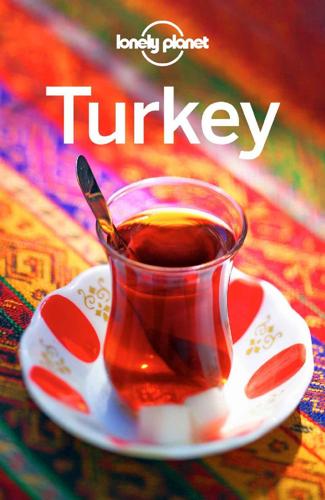
Lonely Planet Turkey (Travel Guide)
by
Lonely Planet
,
James Bainbridge
,
Brett Atkinson
,
Steve Fallon
,
Jessica Lee
,
Virginia Maxwell
,
Hugh McNaughtan
and
John Noble
Published 31 Jan 2017
You will have to change buses in Eskişehir or Bursa to get there, while the final leg of the journey is a ferry across the Sea of Marmara to İstanbul. Itineraries Anatolian Circle 3 Weeks This trip leaves out only eastern Anatolia, which is a mission in itself, and takes in both obscure gems and prime sights. Begin with a few days among mosques, palaces and some 14 million folk in İstanbul, former capital of the Ottoman and Byzantine empires. Next, head east to Safranbolu, with its winding streets of Ottoman mansions, before turning north to Amasra, where Turkish holidaymakers wander the Byzantine castle and eat fresh fish on the two harbours. Amasra is the beginning of the drive through rugged hills to Sinop, another pretty Black Sea port town and the birthplace of Greek philosopher Diogenes the Cynic.
…
Each region has its own charms, so choose wisely and you could find yourself hiking across snowy mountains in wild northeastern Anatolia, sauntering through cosmopolitan İstanbul or sunbathing on a Mediterranean beach. Regions at a Glance İstanbul Imperial Grandeur The megacity formerly known as Constantinople and Byzantium was the capital of a series of empires. The Aya Sofya, a church-turned-mosque-turned-museum, is the grandest remnant of the Byzantine Empire; Ottoman landmarks include the Blue Mosque and Topkapı Palace. Beyoğlu Bars Beyoğlu is an exhilarating melting pot between the dusk and dawn calls to prayer, when up-for-it crowds swirl through its hole-in-the-wall cocktail bars, rooftop watering holes, pedestrian precincts and bohemian nightclubs.
…
In 1204 soldiers of the Fourth Crusade led by Enrico Dandolo, Doge of Venice, attacked and ransacked the city. They then ruled it with an ally, Count Baldwin of Flanders, until 1261, when soldiers under Michael VIII Palaiologos, a Byzantine aristocrat in exile who had risen to become co-emperor of Nicaea, successfully recaptured it. The Byzantine Empire was restored. GREAT PALACE OF BYZANTIUM Constantine the Great built the Great Palace soon after he declared Constantinople to be the capital of the Roman Empire in AD 330. Successive Byzantine leaders left their mark by adding to it, and the complex eventually consisted of hundreds of buildings over six levels.
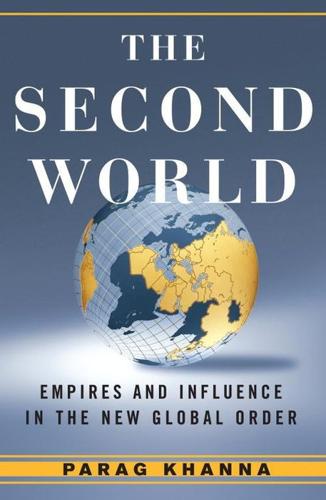
Second World: Empires and Influence in the New Global Order
by
Parag Khanna
Published 4 Mar 2008
Driving eastward from Budapest past Belgrade on newly constructed highways, one can fork south toward Skopje (Macedonia) and Thessaloniki (Greece) or east toward Sofia and Istanbul—routes all but mapped onto the Byzantine causeway that once linked Belgrade to Constantinople. This reconnection of roads west and east of the Drina River—which divided the Western Roman and Byzantine empires in the fourth century A.D.—is a major symbolic and historic step toward regional reconciliation and the rise of a European commonwealth.15 The road to the resolution of the Eastern Question is thus taking a turn none had predicted—quite literally: The final, crucial ingredient to Europeanizing the Balkans involves not only Greece but also Turkey—in cooperation.
…
The Bosphorus Bridge—the seemingly wafer-thin mile-long suspension bridge opened in 1973 on the fiftieth anniversary of the founding of the Turkish republic—is the symbol of Istanbul and Turkey’s unique position as the gateway connecting Europe and Asia. Turkey occupies a space so vital that it destroys the idea of distinct continents. Constantinople was the capital of the Byzantine empire for eleven centuries, and then, as Istanbul, was the Ottoman seat of power over territories spanning the Balkans, Asia Minor, and Central Asia—reaching the gates of Vienna in 1687.*14 Straddling the narrow Dardanelles, it commands the east-west passage between Europe and Asia and the north-south passage between the Black and Mediterranean seas.
…
* * * THE BLACK SEA: EUROPE’S LAKE For centuries Russian, Ottoman, and Persian imperial aspirations have flowed into the Black Sea, finding their confluence in its dark, serene waters. Crimea’s most important archaeological site, the ancient Roman outpost of Chersonesos, now a suburb of Sebastopol, derives its name from the Greek word for “peninsula” and is the site of Prince Vladimir the Great’s baptism into Christianity in 988, after which the Byzantine empire faded, only to watch Orthodoxy spread to Kiev and Moscow. Even the Genoese ruled cosmopolitan Crimea briefly in the fourteenth century. In the Middle Ages, the Black Sea was the center of world commerce, linking Venice to the Mongol and Turkic tribes of Central Asia. During its three hundred years under Ottoman control, European merchants referred to the Black Sea as a “Turkish lake.”
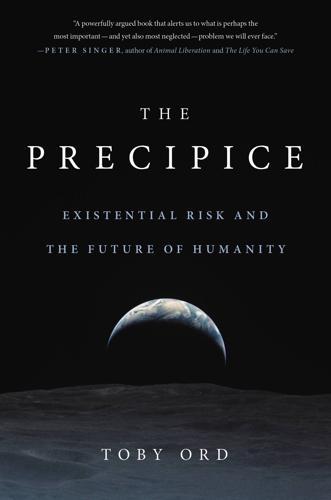
The Precipice: Existential Risk and the Future of Humanity
by
Toby Ord
Published 24 Mar 2020
Due to the scant records of the fourteenth century, we will never know the true toll, but our best estimates are that somewhere between 5 percent and 14 percent of all the world’s people were killed, in what may have been the greatest catastrophe humanity has seen.9 Are we safe now from events like this? Or are we more vulnerable? Could a pandemic threaten humanity’s future?10 The Black Death was not the only biological disaster to scar human history. It was not even the only great bubonic plague. In 541 CE the Plague of Justinian struck the Byzantine Empire. Over three years it took the lives of roughly 3 percent of the world’s people.11 When Europeans reached the Americas in 1492, the two populations exposed each other to completely novel diseases. Over thousands of years each population had built up resistance to their own set of diseases, but were extremely susceptible to the others.
…
Inside the Third Reich. Simon and Schuster. Spratt, B. G. (2007). “Independent Review of the Safety of UK Facilities Handling Foot-and-Mouth Disease Virus.” UK Department for Environment, Food and Rural Affairs Archives. Stathakopoulos, D. C. (2004). Famine and Pestilence in the Late Roman and Early Byzantine Empire (1st ed.). Routledge. —(2008). “Population, Demography, and Disease,” in R. Cormack, J. F. Haldon, and E. Jeffreys (eds.), The Oxford Handbook of Byzantine Studies. Oxford University Press. Stern, D. I. (2004). “The Rise and Fall of the Environmental Kuznets Curve.” World Development, 32(8), 1,419–39.
…
As Wells put it: “for all we know even now we may be quite unwittingly evolving some new and more terrible plague—a plague that will not take ten or twenty or thirty per cent, as plagues have done in the past, but the entire hundred.” Joshua Lederberg’s article “Biological Warfare and the Extinction of Man” (1969) is the first I know of to seriously discuss the possibility of human extinction from engineered pathogens. 11 The Plague of Justinian may have altered the course of history by sending the Byzantine Empire into decline and allowing the ascent of Islam in the region. In the absence of estimates for global death toll in the scholarship, Muehlhauser (2017) consulted an expert who suggested applying the 20% mortality rate in Constantinople (Stathakopoulos, 2004) to the population of the empire of 28 million (Stathakopoulos, 2008), for a total death toll of roughly 5.6 million.

Mysteries of the Mall: And Other Essays
by
Witold Rybczynski
Published 7 Sep 2015
There is a minuscule kitchen (he obviously doesn’t cook), two small offices, and a separate suite of rooms where Roberts lives. Holt describes the style of his house as tenth-century Byzantine. He mentions this matter-of-factly, the way someone else might say Federal or French Provincial. Byzantine architecture has a rich heritage. The Byzantine Empire, the late Roman Empire’s eastern portion, was founded in the fourth century and lasted more than a thousand years. Its buildings were characterized by a masterful use of dome construction, low-relief decoration, and colored-glass mosaics. Although there are some exceptional European examples, such as the church of San Vitale in Ravenna and the Basilica of San Marco in Venice, there has never been a Byzantine revival.
…
.: park system in Prospect Park in Brossmann, Jean-Pierre Brown, Lancelot “Capability” Brunelleschi, Filippo Brutalism Bryant, William Cullen Bryn Mawr dormitory Buckingham Palace Buenos Aires, Argentina Buffalo, N.Y.: park system in shrinking size of buildings: adaptive reuse of as icons buildings, federal, Marshals Report on security of Bunshaft, Gordon Bureau of Roads, U.S. Burke, Edmund Burlington, Lord Burlington, Vt. Burnham, Daniel Burnham & Root BuroHappold Byzantine Empire, architecture of Cabrini, Saint Frances Xavier Cabrini-Green competition for reconfiguration of poor design and management of Calatrava, Santiago Calthorpe, Peter Campbell, Colen Canada pavilion, Expo ’92 Canary Wharf, London Candela, Félix Cannell, Michael Capitol Building, Washington, D.C.
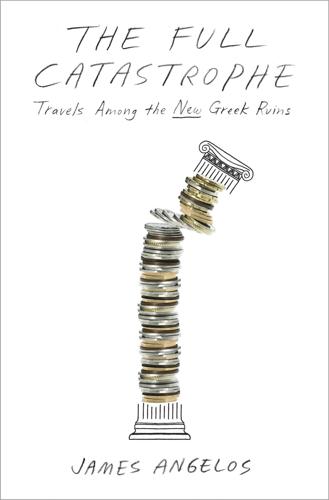
The Full Catastrophe: Travels Among the New Greek Ruins
by
James Angelos
Published 1 Jun 2015
As this went on, the Greek television camera filmed the visitors holding Greek flags and singing the national anthem. “We place the country above all, and our souls are here, always on the Greek islands, and we’re up here now at this moment, and we claim what is ours,” the priest told the camera. He and his companions were “Akritai,” the priest added, a term for the warriors that defended the Byzantine Empire’s eastern frontier from Muslim invaders. “Whoever comes here must first pass over my dead body.” At another point, journalists from the major Turkish newspaper Hürriyet, demonstrating an acutely excessive vision of advocacy journalism, landed on the rock with a helicopter, removed a Greek flag earlier visitors had put up, and replaced it with a Turkish one.
…
In an interview for the story, Boutaris said he did not, in fact, intend to build a monument for Atatürk—an action that would for a Greek politician amount to electoral hara-kiri—but that he did intend to lure more Turkish tourists to the home in Thessaloniki where Atatürk is said to have been born in or around 1881. “Let the Turks come to Greece and visit like we go to Constantinople as tourists and give Turkish people money by visiting their country,” Boutaris told the newspaper, using the Greek name for Istanbul, which lures Greek tourists interested in seeing the landmarks of the Byzantine Empire. The mayor also said he would work to attract other foreign tourists who could trace their roots to Thessaloniki, including Sephardic Jews living in Israel. “This city needs to find its identity,” Boutaris went on. Instead of trying to take advantage of the city’s pluralistic past, he added, “we try to cover it up as if we are afraid of something.”

The Exiled Blade
by
Jon Courtenay Grimwood
Published 1 Apr 2013
Using a goose quill he inseminated Giulietta with Alonzo’s seed, leaving her with child Iacopo, once Atilo’s servant and member of the Assassini Captain Towler, mercenary leader in Montenegro The Three Emperors Sigismund, Holy Roman emperor, King of Germany, Hungary and Croatia. Wants to add Lombardy and Venice to that list John V Palaiologos, the Basilius, ruler of the Byzantine Empire (known as the Eastern Roman Empire), also wants Venice. He barely admits Sigismund is an emperor at all Tamburlaine, Khan of Khans, ruler of the Mongols and newly created emperor of China. The most powerful man in the world and a distant cousin to Duchess Alexa. He regards Europe as a minor irritation PART 1 “There is special providence in the fall of a sparrow.
…
Her cousin walked a tricky line between acting his old idiot and not admitting he’d always been sane. With Alonzo banished and his mother dead, Giulietta knew he itched to take control of the meeting and wished she knew what he would do differently. The news from the world outside was worrying. Alonzo had offered homage to the Byzantine Empire in return for their emperor’s recognition of his claim to be duke of Venice, prince of Serenissima and duke of Montenegro. The tensions inside the city following Alexa’s murder were worse. “My lords . . .” “This is unworkable.” Bribanzo barely bothered to pretend he was addressing the throne.

Paris 1919: Six Months That Changed the World
by
Margaret Macmillan; Richard Holbrooke; Casey Hampton
Published 1 Jan 2001
They all spoke a South Slav (Yugoslav) language. While Slovenian had become a distinct language over the centuries, Serbian and Croatian were virtually the same except for one striking difference. Serbian, like Russian and Bulgarian, was and is written in the Cyrillic alphabet, borrowed from the Greek of the Byzantine empire, while Croatian reflected the Catholic and Western orientation of its people and used the Latin alphabet. While separate nationalisms had been growing in the Balkans before the war—Serbian, for example, or Croatian—so too had the dream that all South Slavs, whether still under Ottoman rule, inside Austria-Hungary, or already independent in Serbia and Bulgaria, belonged together in one great nation.
…
On Lesbos, Sappho had written her poetry, and at Sámos, Pythagoras had invented geometry. At the Hellespont (now the Dardanelles), Leander had drowned for love of Hero; Jason and his Argonauts had sailed to the eastern end of the Black Sea to retrieve the Golden Fleece from Colchis (in today’s Georgia). The Byzantine empire and Christianity added another layer of memories and another basis for claims; for a thousand years, since Constantine became the first Christian emperor, his successors had sat in his city of Constantinople (today Istanbul), speaking Greek and keeping alive the great traditions. The Greek Orthodox patriarch still lived there, not in Athens.
…
To each his own.” (Clemenceau had reservations about the modern Greeks, whom he found sadly ignorant about their own glorious history.19) The Greeks were the descendants of Homer and Pericles and Socrates. Serene temples, noble discus throwers, the golden light thrown by classical Greece and the Byzantine empire floated between the statesmen in Paris and the reality of a small, faction-ridden, backward nation. From Berlin to Washington, national parliaments, museums and galleries, even the whitewashed churches in small New England towns, showed the continuing power of classical Greece over the imagination of the West.

A History of Judaism
by
Martin Goodman
Published 25 Oct 2017
But the texts also reveal other religious interests (perhaps at a less formal level) which related to developments within other forms of Judaism either before or after this period. Within rabbinic tradition were preserved eschatological texts like Sefer Zerubbabel, a Hebrew apocalypse originally composed in the seventh century CE somewhere in the Byzantine empire, in which visions are attributed to Zerubbabel, who had been governor of Judah in the Persian period. According to the revelation, one messiah, ‘son of Joseph’, is to be killed, but a second messiah, ‘son of David’, will prevail over his enemies, inaugurating the erection of a new Temple. Such eschatological fervour fits well the expectations of seventh-century Jews as they witnessed first the conquest of Palestine by Persians and then the Islamic invasions (see Chapter 10).
…
Thus in southern Italy in the mid-tenth century, the anonymous author, known to later Jewish tradition as Yosippon, of a narrative in Hebrew of the history of the Jews in the Second Temple period derived his information on the period from Josephus’ Jewish Antiquities and Jewish War; but, although he came from a part of Italy which was within the Byzantine empire where the official language was Greek, he knew Josephus only through a Latin version written by a Christian called Hegesippus in the second half of the fourth century. A century later, a chronicler and poet from Capua in Italy, Ahimaaz b. Paltiel, whose rhymed account in Hebrew of the achievements of his family since the ninth century was discovered in the library of Toledo cathedral in 1895, claimed that he was descended from those who had been brought as captives to Jerusalem by Titus, but he showed little knowledge of Greek.
…
In the eastern Mediterranean, by contrast, Jews continued to use Greek, albeit in Hebrew letters, in religious documents such as marriage contracts and biblical exegesis. In Constantinople, the Balkans and Asia Minor, Romaniot Jews, whose name refers to the origins of their liturgical rite in the Byzantine empire, continued to use such Judaeo-Greek throughout the Middle Ages, especially for reading the book of Jonah on the Day of Atonement. But, apart from such occasional use of Greek in liturgy, only a few other Jewish Greek customs survived into early modern times, such as the recitation of the seven wedding blessings at the betrothal ceremony rather than the marriage.17 Quite why the rabbinic movement was eventually so much more successful than the Greek Judaism it replaced in much of the Mediterranean world is not easy to explain, because we have seen that religious teachings promulgated by rabbinic Judaism itself were neither easily accessible (since few Mediterranean Jews at the end of the first millennium will have known how to read and understand Hebrew or Aramaic) nor readily comprehensible (since a religious discourse based on interpretations of talmudic discussions was essentially esoteric).
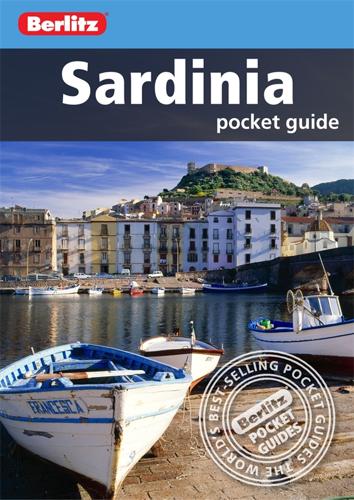
Berlitz: Sardinia Pocket Guide (Berlitz Pocket Guides)
by
Apa
Published 1 Feb 2012
With the final collapse of the Roman Empire in the west, Sardinia, along with other Mediterranean islands and the whole of Roman North Africa, became a victim of barbarian raids. Vandal rule lasted until AD534, by which time Western Europe was fragmented into motley barbarian states. The most civilised European power was the surviving Roman Empire in the east, or the Byzantine Empire, which then theoretically held sway over Sardinia and other distant western outposts. But in the early 700s, during the massive surge of Islam following the death of Mohammed, great armies of Saracens (Arab Muslims) streamed across North Africa and into the Iberian Peninsula. There was little or no Christian resistance; in 711 Cágliari was sacked and occupied, and for the next two centuries the island suffered repeated Arab invasions.
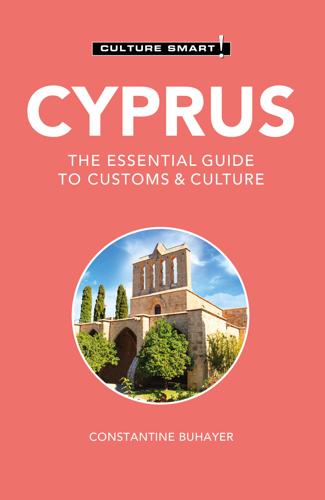
Cyprus - Culture Smart!: The Essential Guide to Customs & Culture
by
Constantine Buhayer
Published 24 Feb 2022
Constantinople had to send in troops that laid siege to Nicosia and Boyajioglou was executed. The Present-day Impact of Ottoman Rule The Ottoman millet system of administration evolved to give non-Turkish communities a level of autonomy within their ranks. For reasons going back to the Eastern Roman (Byzantine) Empire, the hierarchy of the Rum (Greek Orthodox) millet was Greek dominated. This ethno-religious separation led to a dramatic chain reaction. In the long run, the millet empowered the Church to become wealthy and a Greek national force in the nineteenth and twentieth centuries; it was used by the British to divide and rule; it determined the 1960 Constitution; and it shaped the partition of the island.
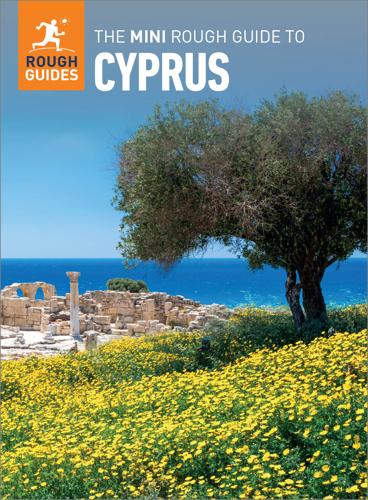
THE MINI ROUGH GUIDE TO CYPRUS
by
Rough Guides
Published 26 Mar 2022
In 488, when the relics of Barnabas (Paul’s evangelizing companion) were miraculously found, the Church of Cyprus became autonomous, subject only to Constantinople, and not nearby Antioch or Jerusalem. The archbishop of Cyprus could carry a royal sceptre rather than a pastoral staff, wear a cloak of imperial purple and sign his name in imperial red ink – rights that the archbishops retain to this day. With the Byzantine Empire weakened by war against Persia, the Arabs took the opportunity to attack Cyprus in 649 with a fleet of 1,500 ships. Salamis (now Constantia) was left in such ruins that it never recovered; raiding continued until an approaching Byzantine fleet prompted retreat. Four years later, in a move that foreshadowed events of the 20th century, the Arabs staged a second invasion and left a garrison of 12,000 men, encouraging Muslim civilian immigration.
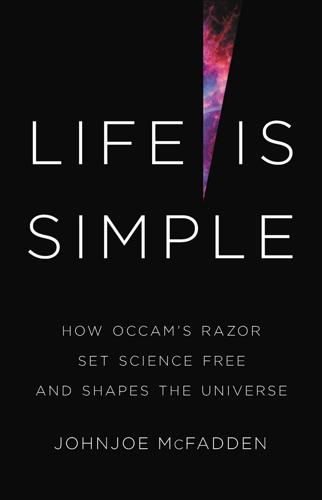
Life Is Simple: How Occam's Razor Set Science Free and Shapes the Universe
by
Johnjoe McFadden
Published 27 Sep 2021
We will return to the question of how and why human progress shifted from a linear to an exponential gear in later chapters; but, as you might expect, I believe Occam’s razor played a key role. After the fall of Rome and the the establishment of the eastern Byzantine Empire centred on Constantinople, western Europe nonetheless retained Roman Latin as its lingua franca. This allowed, for example, Roman law to be adopted throughout most of the West. Science and philosophy, however, were nearly always written in Greek, with the result that much of that learning was lost to the West. And while the Greek-speaking Byzantine Empire enjoyed continued access to the ancient Greek texts, for reasons that remain unclear, the Byzantines seemed to have taken little interest in Greek science.
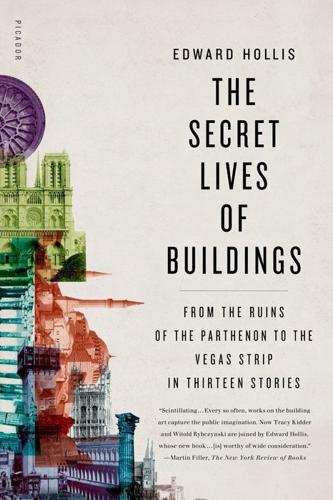
The Secret Lives of Buildings: From the Ruins of the Parthenon to the Vegas Strip in Thirteen Stories
by
Edward Hollis
Published 10 Nov 2009
He had been declared a heretic for his De Differentiis, which compared the Platonic and Aristotelian conceptions of God; and he proposed, in his Summary of the Doctrines of Zoroaster and Plato, a return to the paganism of his ancestors. On his way home from the council, Plethon stopped awhile in Rimini to converse with its youthful and inquisitive ruler. Then he boarded his ship and sailed back to the Byzantine Empire, which would be extinguished fifteen years later. The two men did not see each other alive again. Malatesta, inspired by his meeting with Plethon and keen to appear as cultured as the aristocrats who paid him to fight for them, started to collect for himself a court of humanists. He summoned Basinio Basini of Parma to act as his astrologer; and Basini took the Latin name Basinius and composed Hesperis, an epic that mythologized the achievements of his master as if they were those of an Achilles in courage, an Augustus in majesty, and a Plato in wisdom.
…
When he was finished, he returned to the Western Wall, and mounted Al-Buraq, and flew back to Mecca. The ring to which Muhammad tethered his miraculous beast is still there. It was uncovered in the 1930s, and Muslims named the wall in honor of the winged horse who had borne the prophet. Some seventeen years after Muhammad’s night journey, his successor Omar captured Jerusalem from the Byzantine Empire. The citizens sent a proud message out of the gates to their conquerors: “Bring us your caliph, and we shall give him the keys to our city.” And so Omar, who was a humble, pious man, donned his goat’s-hair shirt, mounted his camel, and waited for the Byzantine patriarch Sophronius to emerge from the city in clouds of incense and stiff golden robes.
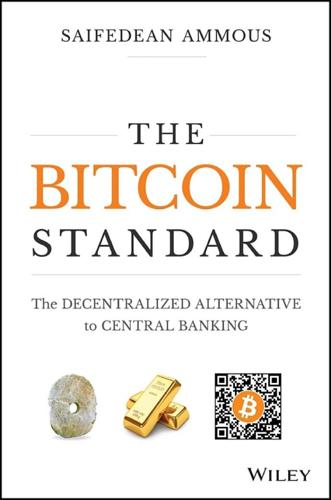
The Bitcoin Standard: The Decentralized Alternative to Central Banking
by
Saifedean Ammous
Published 23 Mar 2018
Exchange rate in June 1914 = 1 Figure 6 Broad money average annual growth rate for 167 currencies, 1960–2015 Figure 7 Annual broad money growth rate in Japan, U.K., United States, and Euro area Figure 8 Purchasing power of gold and wholesale commodity index in England, 1560–1976 Figure 9 Price of commodities in gold and in U.S. dollars, in log scale, 1792–2016 Figure 10 Major currencies priced in gold, 1971–2017 Figure 11 Oil priced in U.S. dollars and ounces of gold, 1861–2017, as multiple of price in 1971 Figure 12 National savings rates in major economies, 1970–2016, % Figure 13 Unemployment rate in Switzerland, % Figure 14 Bitcoin supply and supply growth rate assuming blocks are issued exactly every ten minutes Figure 15 Projected Bitcoin and national currency percentage growth in supply over 25 years Figure 16 Price of Bitcoin in US dollars Figure 17 Annual transactions on the Bitcoin network Figure 18 Average U.S. dollar value of transaction fees on Bitcoin network, logarithmic scale Figure 19 Monthly 30‐day volatility for Bitcoin and the USD Index Figure 20 Global oil consumption, production, proven reserves, and ratio of reserves over annual production, 1980–2015 Figure 21 Total available global stockpiles divided by annual production Figure 22 Blockchain decision chart List of Tables Table 1 Major European Economies' Periods Under the Gold Standard Table 2 Depreciation of National Currency Against the Swiss Franc During World War I Table 3 The Ten Countries with Highest Average Annual Broad Money Supply Growth, 1960–2015 Table 4 Average Annual Percent Increase in Broad Money Supply for the Ten Largest Global Currencies Table 5 Conflict Deaths in the Last Five Centuries Table 6 Bitcoin Supply and Growth Rate Table 7 Bitcoin Supply and Growth Rate (Projected) Table 8 Annual Transactions and Average Daily Transactions Table 9 Total Annual US Dollar Value of All Bitcoin Network Transactions Table 10 Average Daily Percentage Change and Standard Deviation in the Market Price of Currencies per USD over the Period of September 1, 2011, to September 1, 2016 Index 51% attack, 242–245 aggry beads, 13 altcoins, 251–257 anarcho‐capitalism, 203–204 antifragility, 230–232 art, 98–104 aureus, 25 Austrian school of economics, 3, 70, 106, 142–145, 204 barter, 1 bezant, 28–29 Bitcoin, 33–34, 167 block subsidy, 187, 199, 218 blockchain, 257–272 breakdown of the family, 95 Bretton Woods conference, 56–57 business cycle, 116, 119, 145 Byzantine empire, 28–29 Byzantium, see Byzantine empire capital goods, 9, 75, 109–116 capitalism, 92, 109–111, 118, 200 cargo cult science, 258 cash, 169, 171, 207, 238 cash, digital, see digital cash central banks, 39–40, 56–57, 59, 69, 89, 117–119, 210–212 coin clipping, 25 coincidence of wants, 2 coins, 18 comparative advantage, 108 Constantine, 28 counterparty risk, 208 crime, 238–240 Croesus, 18, 25 cypherpunk, 203, 246 DAO, see Decentralized Autonomous Organization Dark Ages, 29–30 Decentralized Autonomous Organization, 254, 266–267 deflation, 121, 140–141 denarius, 25 depression, economic, 49–53, 120–124 depression, psychological, 95 digital cash, 168–170, 182, 200, 207, 238 digital goods, 201–202 digital scarcity, 177, 199–200 dinar, 28–29 Diocletian, 26, 28 direct exchange, 1 ducat, 30 easy money, 5 easy money trap, 5 Ehrlich, Paul, 195 Ethereum, 254 Federal Reserve, 49, 51, 59, 120, 125 fiat money, see government money Finney, Hal, 209, 223, 252 Fisher, Irving, 124 florin, 30 fractional reserve banking, 113, 124, 161, 206, 209 Friedman, Milton, 121–123, 125, 140, 155 Galbraith, John Kenneth, 155 GDP, 130–131 General Agreement on Trade and Tariffs, 58 gold, 17, 19–22, 23–24, 82, 85–89, 155, 214 gold standard, 19, 31–32, 35–40, 250 government money, 9, 37, 41–43, 51, 62, 66–70, 87–89, 181 Great Depression, 49–53, 124–125 hard money, 5 hashing, 191, 248 Hayek, Friedrich, 47, 72, 106–107, 126 Hoover, Herbert, 49–50 hyperinflation, 48, 62–63, 66–67 Impossible Trinity, 128, 131 indirect exchange, 2 inflation, 26–27, 44–45, 48–51, 60–61, 81, 118, 138–139 interest rates, 80, 112–119, 145, 157 International Monetary Fund, 57–58, 120 Julius Caesar, 25 Keynes, John Maynard, 51–52, 54–56, 71, 82–83, 91–92, 95, 117, 131, 137–139, 143, 153, 155 Kremer, Michael, 196 Lips, Ferdinand, 27 malinvestments, 145 marginal utility, 84 market demand, 19 marshmallow experiment, see Stanford Marshmallow Experiment medium of exchange, 2 Menger, Carl, 3, 34 Merkle tree, 175 Merkle, Ralph, 175 Michelangelo, 100 Mischel, Walter, 77 Mises, Ludwig von, 36, 38, 70, 109–111, 116–117, 135, 142, 145, 182 Monetarism, 121, 124, 137, 140 monetary demand, 19 monetary nationalism, 47, 213 Nakamoto, Satoshi, 142, 171, 212, 223, 252 Nero, 25 New Deal, 50 New Liberty Standard, 182 Newton, Isaac, 31 Nixon, Richard, 60–61 O'Keefe, David, 12–13 peer‐to‐peer network, 192 price elasticity of supply, 24 prices, 106–111, 119 proof‐of‐work, 171–172, 218–219 public key cryptography, 191, 217 Rai stones, 9, 11–13, 174 recession, 36, 91–92, 116–124, 138–140 Renaissance, 29–30 reserve currency, 37–39, 56, 206–210 Roman empire, 25 Roosevelt, Franklin Delano, 49–51 Rothbard, Murray, 34, 49, 79, 116, 126, 143, 204 Rothko, Mark, 102 Royal Mint, 31 salability, 3 Samuelson, Paul, 55, 158–159 Satoshi, see Nakamoto, Satoshi satoshis, 175, 179, 181, 198 savings, 35, 83, 90–93, 114, 143, 153, 163 scarcity, 110–114, 177, 193–195, 199 Schwartz, Anna, 121–123, 125 seashells, 14 silver, 17, 22–23, 30–33 Simon, Julian, 193, 195 smart contracts, 265–267 socialism, 109–111, 118 solidus, 26, 28–29, 212 sound money, 7, 30, 34, 43, 70–71, 73, 89–90, 119, 146, 150, 153, 165, 249–251 Stanford Marshmallow Experiment, 77, 143–144 state theory of money, 136–137 stock‐to‐flow ratio, 5–6, 23, 155, 199 store of value, 4, 193, 208 Switzerland, 37, 90, 119 time preference, 7, 74–80, 143 unit of account, 8, 212–216 unsound money, 25, 38, 71, 90, 102, 115, 119, 127, 145–163 Wales, Jimmy, 106 war, 145–149 White, Harry Dexter, 56 Wikipedia, 106 World War I, 41, 43–46 World War II, 53–55 Yap, 9, 11–13, 174 WILEY END USER LICENSE AGREEMENT Go to www.wiley.com/go/eula to access Wiley’s ebook EULA.
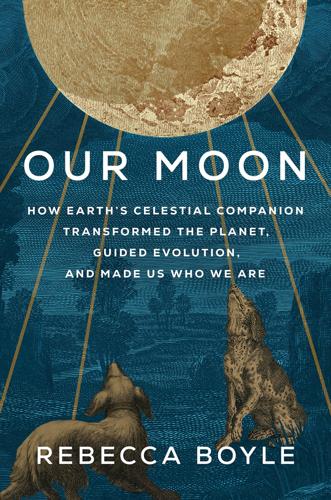
Our Moon: How Earth's Celestial Companion Transformed the Planet, Guided Evolution, and Made Us Who We Are
by
Rebecca Boyle
Published 16 Jan 2024
SCHOLARS TRANSLATED ALMAGEST from Greek into Arabic around 827 C.E., and after Christians conquered the city of Toledo in 1085, they translated it into Latin. Almagest remained the most popular astronomical text into the fifteenth century. But with the fall of the Byzantine Empire, a new intellectual era dawned. In April 1453 C.E., the Turks laid siege to Constantinople, the seat of the Byzantine Empire for eleven centuries. The night of May 22, 1453, the Moon rose darkened and blood red, eclipsed. Seven days later the city fell to the invading Turks. As the empire fell apart, Greek-speaking scholars fled West toward mainland Europe, bearing with them their treasured texts, their translations of the works from antiquity, and their tremendous body of knowledge.
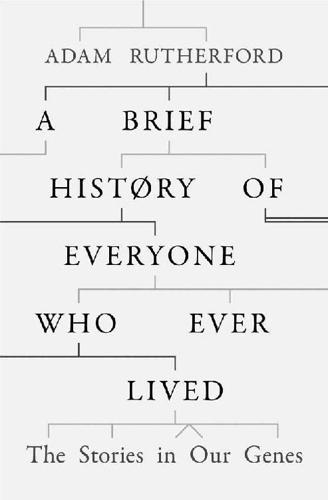
A Brief History of Everyone Who Ever Lived
by
Adam Rutherford
Published 7 Sep 2016
Bringing up the bodies In the gloaming of the Roman Empire, matters were much worse. Rarely has a disease altered the course of a continent’s history so profoundly, but Yersinia pestis managed it at least twice. The first decimation occurred in the sixth century, the epicentre of the infection being Constantinople. There, Justinian ruled the Byzantine Empire, including during a plague that lasted just a year, in 541, but at its peak was an apocalypse. The historian Procopius details some of the devastation of Constantinople in his book Secret History, written at the time. He suggests that when it was at its most virulent, 10,000 people per day were dying, though modern historians estimate a more conservative but no less baffling 5,000 every day.
…
Over a five-year period we can track a course from Russia to Constantinople, to Messina, to Genoa, Marseille, Bordeaux and finally London. All these ports acted as points from which radiation of the plague could crawl inland. En route, it claimed the lives of some 5 million people. Just as in the Byzantine Empire 600 years earlier, wave after wave of outbreak crashed into our population in the centuries after the fourteenth, and it was only after the Great Fire of London in 1666 that this pandemic was crushed. Krause’s work also shows that it never really went away. The pandemic might have ended, but the strains of Yersinia that cause bubonic plague outbreaks to this day are identical.
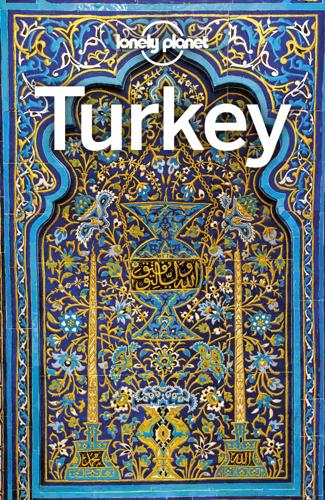
Lonely Planet Turkey
by
Lonely Planet
You will have to change buses in Eskişehir or Bursa to get there, while the final leg of the journey is a ferry across the Sea of Marmara to İstanbul. Itineraries Anatolian Circle 3 WEEKS This trip leaves out only eastern Anatolia, which is a mission in itself, and takes in both obscure gems and prime sights. Begin with a few days among mosques, palaces and some 20 million folk in İstanbul, former capital of the Ottoman and Byzantine Empires. Next, head east to Safranbolu, with its winding streets of Ottoman mansions, before turning north to Amasra, where Turkish holidaymakers wander the Byzantine castle and eat fresh fish on the two harbours. Amasra is the beginning of the drive through rugged hills to Sinop, another pretty Black Sea port town and the birthplace of Greek philosopher Diogenes the Cynic.
…
Each region has its own charms, so choose wisely and you could find yourself hiking across snowy mountains in wild northeastern Anatolia, sauntering through cosmopolitan İstanbul or sunbathing on a Mediterranean beach. Regions at a Glance İstanbul Imperial Grandeur The megacity formerly known as Constantinople and Byzantium was the capital of a series of empires. The Aya Sofya, a church-turned-mosque-turned-museum-mosque, is the grandest remnant of the Byzantine Empire; Ottoman landmarks include the Blue Mosque and Topkapı Palace. Beyoğlu Bars Between the dusk and dawn calls to prayer, up-for-it crowds swirl through Beyoğlu’s hole-in-the-wall cocktail bars, rooftop watering holes, pedestrian precincts and bohemian nightclubs. Markets & Bazaars The city’s bazaars include the sprawling Grand Bazaar, the fragrant Spice Bazaar, and the Arasta Bazaar with its carpet and ceramics stores.
…
In 1204 soldiers of the Fourth Crusade led by Enrico Dandolo, Doge of Venice, attacked and ransacked the city. They then ruled it with an ally, Count Baldwin of Flanders, until 1261, when soldiers under Michael VIII Palaiologos, a Byzantine aristocrat in exile who had risen to become co-emperor of Nicaea, successfully recaptured it. The Byzantine Empire was restored. İstanbul Two decades after Michael VIII reclaimed Constantinople, a Turkish warlord named Ertuğrul died in the village of Söğüt near Nicaea. He left his son Osman, who was known as Gazi (Warrior for the Faith), a small territory. Osman’s followers became known in the Empire as Osmanlıs and in the West as the Ottomans.

Egypt Travel Guide
by
Lonely Planet
After establishing himself in a cave on a remote mountain, his disciples formed a loose community at its base and thus was born the first Christian monastery. The number of Anthony’s followers grew rapidly, and within decades of his death, nearly every town in Egypt was surrounded by hermitages. Soon after, the whole Byzantine Empire was alive with monastic fervour, which by the next century had spread throughout Italy and France. It is ironic that, for all his influence, Anthony spent his life seeking to escape others. When he died at the advanced age of 105, his sole wish for solitude was finally respected and the location of his grave became a closely guarded secret.
…
Refusing to accept that Jesus had one person but two natures, which again seemed a revival of polytheism, the Egyptians split with the rest of Christianity, their patriarch was excommunicated and soon after Alexandria was sacked. The sixth Fatimid caliph, El Hakim, was notorious for his unusual behaviour: convinced that a woman’s place was in the home, he banned the manufacture of women’s shoes. Yet in spite of the religious split, Egypt was still part of the Byzantine Empire, ruled by a foreign governor, and its fortunes were tied to the empire. This caused ever-greater tension, which peaked in the reign of Emperor Justinian (528–565). Alexandrians stoned the emperor’s governor, who retaliated by sending his army to punish the people. In 629, a messenger travelled to the emperor in Byzantium from Arabia.
…
The Coming Of The Arabs Around 628 AD a man called Mohammed, the leader of a newly united Arab force, wrote to some of the most powerful men in the world, including the Byzantine Emperor Heraclius, inviting them to convert to Islam. The emperor, who had never heard of this religion and who regarded the people of Arabia as a mild irritant on the edge of his empire, declined. By the time of Heraclius’s death in 641, Arab armies had conquered much of the Byzantine Empire, including Syria and most of Egypt, and were camped outside the walls of the Egyptian capital, Alexandria. The Victorious Egyptians were used to foreign invaders but had never before experienced any like the Arabs, who came with religious as well as political intentions. After Alexandria fell, the Arab general Amr wrote to his leader, the Caliph Omar, to say that he had captured a city of 4000 palaces, 4000 baths, 400 theatres and 12,000 sellers of green vegetables.

Egypt Travel Guide
by
Lonely Planet
After establishing himself in a cave on a remote mountain, his disciples formed a loose community at its base, and thus was born the first Christian monastery. The number of Anthony’s followers grew rapidly, and within decades of his death, nearly every town in Egypt was surrounded by hermitages. Soon after, the whole Byzantine Empire was alive with monastic fervour, which by the next century had spread throughout Italy and France. It is ironic that, for all his influence, Anthony spent his life seeking to escape others. When he died at the advanced age of 105, his sole wish for solitude was finally respected and the location of his grave became a closely guarded secret. 1Sights The monasteries of both St Paul and St Anthony are open daily throughout the year except during Advent and Lent, at which time they can only be visited on Friday, Saturday and Sunday.
…
Refusing to accept that Jesus was one person but had two natures, which again seemed a revival of polytheism, the Egyptians split with the rest of Christianity, their patriarch was excommunicated and soon after Alexandria was sacked. Yet in spite of the religious split, Egypt was still part of the Byzantine Empire, ruled by a foreign governor, and its fortunes were tied to the empire. This caused ever-greater tension, which peaked in the reign of Emperor Justinian (528–565). Alexandrians stoned the emperor’s governor, who retaliated by sending his army to punish the people. In 629 a messenger travelled to the emperor in Byzantium from Arabia.
…
The Coming of the Arabs Around 628 AD a man called Mohammed, the leader of a newly united Arab force, wrote to some of the most powerful men in the world, including the Byzantine Emperor Heraclius, inviting them to convert to his new religion. The emperor, who had never heard of Islam and who regarded the people of Arabia as nothing more than a mild irritant on the edge of his mighty empire, declined. By the time of Heraclius’ death in 641, Arab armies had conquered much of the Byzantine Empire, including Syria and most of Egypt, and were camped outside the walls of the Egyptian capital, Alexandria. The Great Pyramid of Khufu (built in 2570 BC) remained the tallest artificial structure in the world until the building of the Eiffel Tower in 1889. The Victorious Egyptians were used to foreign invaders but had never before experienced any like the Arabs, who came with religious as well as political intentions.

Dangerous Ideas: A Brief History of Censorship in the West, From the Ancients to Fake News
by
Eric Berkowitz
Published 3 May 2021
By the end of the century, stories about iconographic images responding to the faithful’s pleas eroded the distinction between images and the figures they depicted. Icons came alive and became active participants in the individual lives of their devotees, the fortunes of cities, and sometimes even the fate of the Byzantine Empire. As devotion to icons during the late sixth and seventh centuries became widespread and increasingly fervid, reports of icon-driven miracles grew more elaborate and, ultimately, became a matter of political and military importance. Wherever icons were placed in the Byzantine East, believers bowed to them, kissed them, burned lights and incense before them, and begged them for help.
…
See England British Library, 75 Brooke, Rupert, 166–67 Brooklyn Museum, 244–245 Brooks, Rosa, 216 Brothers, Richard, 98–99 Brown, David, 117–18 Brown, Peter, 56 Bruno, Giordano, 69–70 Brutus, Marcus Junius, 36, 39 Buckley v. Valeo, 250 Buddhism, 1, 77 Bunsen, Georg von, 120 Burchett, Wilfred, 196 Burić, Marija Pejčinović, 256 Burnside, Ambrose, 157 Buru Quartet novels (Toer), 205 Bush administration, George W., 251 Byzantine Empire, 54–58 The Cabinet of Dr. Caligari (film), 191 Caesar, Julius, 32, 36 Caffrey, Maria, 251 Calhoun, John C., 154, 239 The Call (publication), 162 Calvin, John, 75 Cambodia, 3, 233 Campbell, John, 10, 143–44, 145 campus speech restrictions, 245–246 Canada, 4–5 canards, 140 capitalism, 248–249, 254.
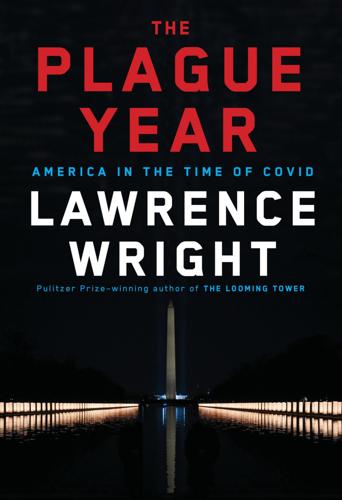
The Plague Year: America in the Time of Covid
by
Lawrence Wright
Published 7 Jun 2021
A third wave came in the spring of the following year; after that, the disease retreated, leaving tens of millions dead in the space of a year. The bubonic plague came in three great pandemics. The first, known as the Plague of Justinian, lasted from the sixth century till the eighth, with few letups, ravaging the Byzantine Empire. The second pandemic, the Black Death, arrived in Italy in December 1347, and spread quickly across Europe. Pilgrims carried it to Mecca. The plague soon infested Scandinavia. A third of the population of Egypt died. Subsidiary outbreaks continued to appear in Europe for three hundred years.
…
Petrarch expressed his frustration by writing letters to the ancients. “It could be like someone today disliking the present state of America and wanting to talk to Thomas Jefferson or Martin Luther King.” The Middle Ages didn’t end definitively until the fall of Constantinople, in 1453, when scholars of the Byzantine Empire migrated to Europe, especially to Italy, bringing their libraries with them. But new thinking was already underway, spurred by Petrarch’s discovery of old thinking, which is why he is often cited as the instigator of the Renaissance. Artists reclaimed ancient techniques for drawing and painting with perspective.

Money Changes Everything: How Finance Made Civilization Possible
by
William N. Goetzmann
Published 11 Apr 2016
However, the rival city-states of Pisa and Genoa increasingly competed for access to eastern markets. The Crusades represented not only a challenge to Arab control of the Mediterranean and Levant but also became the prime vector by which Italian city-states and traders competed with, and ultimately hastened, the fall of the Byzantine Empire. Even before the First Crusade and the founding of the Templar order, Genoa and Pisa had joined forces to attack Muslim-occupied Sardinia in 1015. Genoa supplied the armies of the First Crusade in Antioch in 1096, thus gaining a foothold in an eastern trade traditionally dominated by Venice.
…
The other interesting feature of the 1172 loan was that any rearrangement of the debt was now under the political control of the newly created six divisions in the city. The broad-based roots of the loan served indirectly as a political device for equitable government fiscal decisions.4 The loan enabled the doge to raise a massive fleet against the Byzantine Empire. One-hundred twenty ships sailed off to save the hostages and recover Venetian property. The fleet anchored off the coast of Asia Minor. Emperor Emmanuel stalled for time by promising a negotiated resolution. As these negotiations dragged on, the Venetian fleet, waiting to attack, was suddenly ravaged by the plague.
…
See also Great Mirror of Folly; Law, John Buddhism, archive of early texts from, 177 Buffett, Warren, 276, 489, 508 bullae, 25–28, 42 bureaucracy: defined, 167; as financial technology, 171–72; of Roman Empire, 127. See also agency problem bureaucracy, of Chinese empire, 139–40; accounting systems and, 201; paper vouchers in, 189; problem of managing, 167, 169, 171; Zhouli as paradigm for, 172–74 Burough, Stephen, 311 Byzantine empire: fall of, 226; Ravenna under, 113; Venice and, 225, 226, 229, 230 Cabot, John, 309 Cabot, Sebastian, 309–10 call options, 280–82, 283–84. See also option pricing; options capital: alternative use of, 237, 243; corporate form and, 289; corporate form for VOC and, 318; provided by investment, 6–7; reallocation of, 4; theological debate about usury and, 237 Capital Asset Pricing Model (CAPM), 504, 508–9, 511 capital calls, 310, 327 capitalism: Chinese financial development and, 137, 140, 141, 197–98, 200, 437; Church’s view of time and, 234; colonialism and, 418–22; Great Depression as failure of, 482; Keynes on shortcomings of, 456–57; Lenin on end of, 446–48; Marx’s challenge to, 405, 407–8, 417; Mesopotamian precursor of, 55; repeatedly appearing in historical record, 304; Russian rejection of, 449–51, 452–53 capital markets: Bretton Woods Agreement and, 460; in eighteenth- and nineteenth-century China, 197–98, 200; Europe’s intense reliance on, 520; Lowenfeld on benefits of, 417; Marx on, 408, 465; of seventeenth-century Europe, 322, 323, 325; technological development and, 197; of twentieth-century China, 423; in the West compared to China, 198–99.

Tyler Cowen - Stubborn Attachments A Vision for a Society of Free, Prosperous, and Responsible Individuals
by
Meg Patrick
Finer (1999, pp.30-34) provides an alternative look at civilizational survival, under the heading "Total Life-Spans." He defines a civilization in grosser terms than does Shermer, so for him ancient Egypt is one civilization, not eight. Civilizations have correspondingly longer lifespans. Some of the longer-lived civilizations are 2,820 years (Egypt), 2,133 years (China), and 1,962 (the Byzantine Empire). The Venetian Republic lasted 1,112 years. The shorter examples include the Achaemenian Persian Empire (220 years) and the Sassanian Persian Empire (427 years). Finer also develops the more finely grained category of civilizational breakdowns, which 6 17 While the exact numerical estimates depend on how we define the concept of civilization, and how we pin down start and end points, the more general point of fragility stands.7 Human beings can and indeed do experience significant and ongoing losses of their prosperity and freedom.
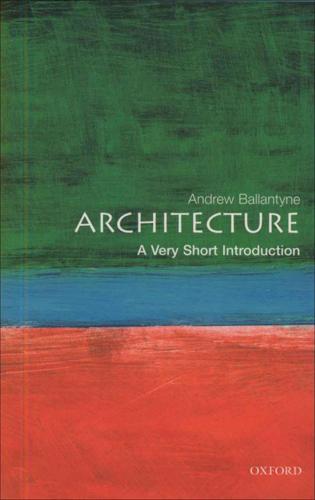
Architecture: A Very Short Introduction
by
Andrew Ballantyne
Published 19 Dec 2002
Not only were Asia and the Americas going through completely independent developments, even Eastern Europe developed quite differently. Ancient Greece is certainly included in the Western tradition, because of the influence it had on the Roman ways of thinking about fine buildings. Properly it makes no sense to speak of ‘medieval Greece’, because despite the fact that the Byzantine Empire produced memorable and sophisticated buildings, there was no Renaissance. In a way the whole of Byzantine culture was a succession of renaissances, and the Greek emperors’ sense of who they were was built on their links back to the ancient world. In 1453, just at the point when we might want to say that the Greek ‘middle ages’ came to an end, the capital Constantinople was overrun and the cultural change relocated the city, now called Istanbul, in a different tradition, where it became the capital of the Ottoman Empire.

Stubborn Attachments: A Vision for a Society of Free, Prosperous, and Responsible Individuals
by
Tyler Cowen
Published 15 Oct 2018
Finer (1999, 30–34) provides an alternative look at civilizational survival, under the heading “Total Life-Spans.” He defines a civilization in broader terms than does Shermer, so for him ancient Egypt is one civilization, not eight. Civilizations have correspondingly longer life spans. Some of the longer-lived civilizations include Egypt (2,820 years), China (2,133 years), and the Byzantine Empire (1,962 years). The Venetian Republic lasted 1,112 years. The shorter examples include the Achaemenid Persian Empire (220 years) and the Sassanian Persian Empire (427 years). Finer also develops the more finely grained category of civilizational breakdowns, which occur more frequently. A breakdown is the “disintegration of a previously united state” (32), in contrast to the more severe examples of total civilizational collapse.
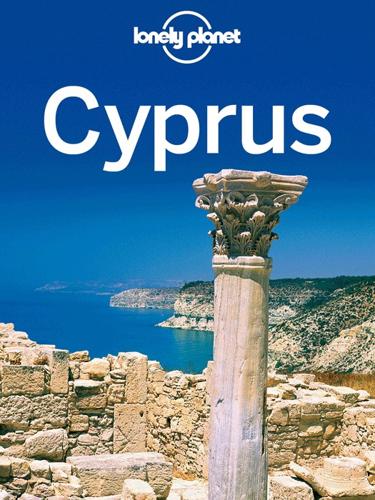
Cyprus Travel Guide
by
Lonely Planet
St Helena also visited the island with pieces of the ‘Holy Cross’ that she left in the protection of Stavrovouni Monastery and at Tochni, where they can still be found today. By the time of Constantine the Great, Christianity had almost completely supplanted paganism. BYZANTINE CYPRUS Constantinople Calling The Roman Empire was divided in AD 395 and Cyprus fell under its eastern half, the Byzantine Empire, with its capital in Constantinople. Byzantine rulers were sent to Cyprus to govern the island. The island was able to keep a considerable degree of ecclesiastical autonomy when the Archbishop of Cyprus convinced the Byzantine emperor that the Church of Cyprus had been founded by the Apostles.
…
During this period many of the stunning churches of the island were built, with frescoed walls, mosaics and domed roofs, including the church of St Barnabas, built over his grave in Famagusta (Click here). This relative stability would not last long, as the island would soon be at the forefront of clashes between the Byzantines and the growing Islamic empire. Arab Raids Islamic expansion in the 7th century had a profound effect on the island. The lands of the Byzantine Empire were attacked. Fleets of ships began a series of bloody raids starting in AD 647, killing many and destroying coastal cities. Salamis (Constantia) was ravaged and sacked heavily, never quite recovering. The city kingdom of Kourion declined dramatically, and coastal settlers moved inland. In response, fortifications and castles were built, the three grandest being those of St Hilarion, Buffavento, and Kantara in the Kyrenia mountains, defending the north coast.
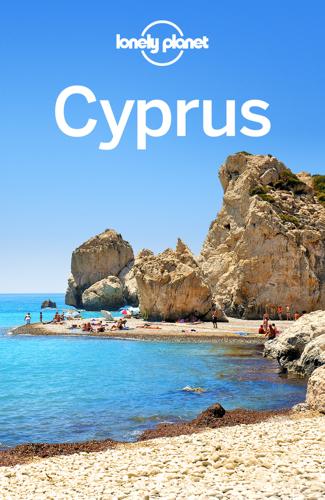
Lonely Planet Cyprus
by
Lonely Planet
,
Jessica Lee
,
Joe Bindloss
and
Josephine Quintero
Published 1 Feb 2018
They even kept pets. The oldest known feline-human connection – a domesticated cat buried with its owner – was unearthed here, far predating similar ancient Egyptian finds. Byzantine Cyprus Constantinople Calling The Roman Empire was divided in AD 395 and Cyprus fell under its eastern half, the Byzantine Empire, with its capital in Constantinople. Byzantine rulers were sent to Cyprus to govern the island. The island was able to keep a considerable degree of ecclesiastical autonomy when the Archbishop of Cyprus convinced the Byzantine emperor that the Church of Cyprus had been founded by the Apostles.
…
This relative stability would not last long, as the island would soon be at the forefront of clashes between the Byzantines and the growing Islamic empire. For a thorough rundown on all the Republic of Cyprus' historic monuments and archaeological sites, head to the Department of Antiquities section on www.mcw.gov.cy. Arab Raids Islamic expansion in the 7th century had a profound effect on the island. The lands of the Byzantine Empire were attacked by Muslim Arabs. Fleets of ships began a series of bloody raids starting in AD 647, killing many and destroying coastal cities. Salamis (Constantia) was ravaged and sacked heavily, never quite recovering. The city-kingdom of Kourion declined dramatically and coastal settlers moved inland.
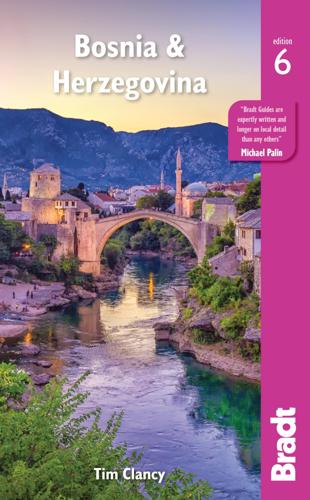
Bosnia and Herzegovina
by
Tim. Clancy
Published 15 Mar 2022
After a long period of relative harmony, the monastery was renovated in 1821 and expanded in 1833. During this entire time the Franciscan monks were not only the keepers of the monastery, but of the Catholic faith in the heart of central Bosnia. Islam spread in many of the larger areas, and the Orthodox Church enjoyed prosperity as most of the Byzantine Empire fell under Ottoman jurisdiction. The Catholics, seen as allies to the Austro-Hungarian enemy, did not fare as well. In times of political unrest, the Franciscans would often dress in regular clothes and would be referred to by the locals as ujak (uncle). This signified their status and they were well taken care of by the local communities.
…
However, the oldest manuscript in Bosančica (the ancient Bosnian language similar to Cyrillic and Glagolitic) was the Charter of Ban Kulin from 1189, which was apparently written in Mile near Visoko. Archaeological explorations in Mile have located the grave sites of two Bosnian rulers – Stjepan II Kotromanić and King Tvrtko Kotromanić. Ban Kulin (1163–1204) was a powerful Bosnian ban who ruled from 1180 to 1204. He first ruled as a vassal of the Byzantine Empire and then of the Kingdom of Hungary. Ban Kulin was brought to power by the Byzantine emperor Manuel I Comnenus. He had a son, Stjepan, who succeeded him as Bosnian ban. Kulin was brought to Bosnia at the age of three by the Byzantine emperor who took the country from the Hungarians. In 1180, at the age of 17, Manuel I Comnenus placed Kulin as his vassal.
…
In 1180, at the age of 17, Manuel I Comnenus placed Kulin as his vassal. Ban Kulin’s rule is often thought of as Bosnia’s ‘golden age’, and he is generally remembered as a hero in Bosnian national folklore. Bosnia lived through a mostly peaceful era throughout his rule. In 1183, he led his troops against the forces of Hungary that had attacked the Byzantine Empire, together with the Serbs led by the Duke of All Serbia, Stefan Nemanja. In Kulin’s time, the term Bosnia encompassed roughly the lands of Vrhbosna, Usora, Soli, the Lower Edges and Rama, which is approximately equivalent to most of modern Bos-nia. The heretic Bosnian Church spread greatly during his reign.
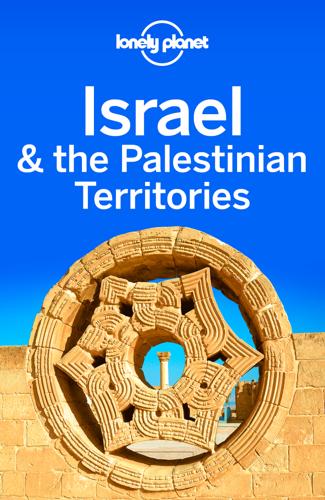
Israel & the Palestinian Territories Travel Guide
by
Lonely Planet
Byzantines & Muslims In 313 CE, the Western Roman Emperor, Constantine, and Eastern Roman Emperor, Licinius, met in Milan and agreed on an edict requiring tolerance of all previously persecuted religions. Eleven years after this, Constantine defeated Licinius in a civil war and became sole Emperor of the Roman Empire (later known as the Byzantine Empire). He legalised Christianity and his mother Helena visited the Holy Land in 326–28 CE searching for Christian holy places. This sparked off the building of basilicas and churches, and the city quickly grew to the size it had been under Herod the Great. The Byzantine Empire was defeated by the Persians, who conquered Jerusalem in 614 CE. Their rule lasted just 15 years before the Byzantines succeeded in retaking the city. That victory, however, was short-lived, for within another 10 years an Arab army, led by Caliph Omar under the banner of Islam, swept through Palestine.
…
Christianity was generally suppressed by the Romans until 313 CE, when the Roman Empire’s Edict of Milan granted tolerance to all previously persecuted religions, including Christianity. Shortly thereafter, Constantine the Great’s mother, Helena, set about identifying and consecrating sites associated with Jesus’s life. Many of the most important Christian sites, including the Church of the Holy Sepulchre in Jerusalem, date from this period. The Byzantine Empire – the Christian successor to the eastern part of the Roman Empire – ruled Palestine from the 4th to the early 7th centuries CE. During this time, there were three revolts – one by the Jews of Galilee and two by the Samaritans – but as can be seen from the opulent ruins of Beit She’an and the Galilee’s many beautiful Byzantine-era synagogues, the country was quite prosperous and, for the most part, at peace.
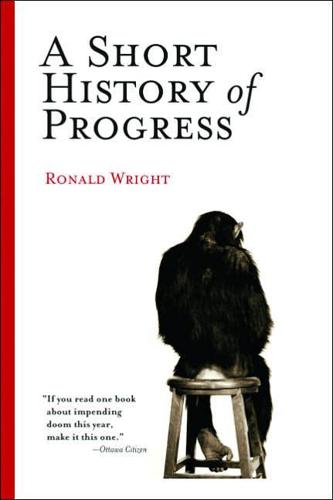
A Short History of Progress
by
Ronald Wright
Published 2 Jan 2004
Easter Island and Sumer wrecked their environments so thoroughly, and fell so hard, that they became effectively extinct.3 But Rome and the Maya managed to linger in simplified “mediaeval” forms after their collapses, leaving direct descendants who are part of today’s world. Rome’s heirs were the Byzantine Empire and the European nations who speak modern dialects of Latin. The Maya were not empire builders, and any renaissance they might have achieved was forestalled by the Spanish invasion in the sixteenth century. Yet the death of their culture has been exaggerated. Eight million people speak Mayan languages today — roughly the same number as in the Classic Period — and many of them practise distinctly Maya forms of social organization, belief, art, and calendrical astrology.4 In my dystopian novel, A Scientific Romance, a character calls civilization “a pyramid scheme,” and a few years later I used the phrase for the title of an article that became the seed of this book.5 A pyramid of stone or brick, which may also take the shape of colossal statues, tombs, or office towers, is the outward and visible sign of a human social pyramid.
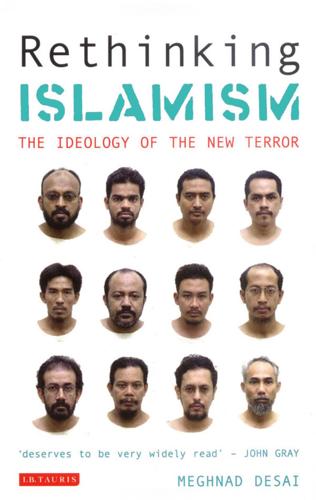
Rethinking Islamism: The Ideology of the New Terror
by
Meghnad Desai
Published 25 Apr 2008
Whatistroublesomeaboutthedivision of the territory of a defeated power among the victorious ones is notthatitdidnotalwayshappen.Afterall,thatishowallempires arebuiltup,andtheOttomanEmpireorpreviousIslamicempires werenoexceptions.TheinitialexpansionofIslamwasamongthe regionsoftheByzantineEmpireintheWestandtheSassanianone in the East. The problem is that by the advent of the twentieth century, one expected better behaviour from the victors. Indeed theBritishandtheFrenchkepttheSykes–PicotAgreementsecret precisely because it went against their public rhetoric. They had promisedonethingtotheSharifofMecca,andintendedtodeceive him.
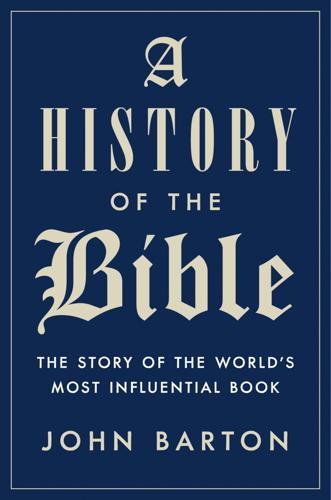
A History of the Bible: The Story of the World's Most Influential Book
by
John Barton
Published 3 Jun 2019
As we saw in Chapter 10, it suggests that Christians early on decided that the codex was the form for their own special writings, possibly as a deliberate contrast with Greek, Roman and Jewish books, though (as discussed in Chapter 10) the matter is obscure. There are 196 extant uncial codices (some extremely fragmentary) containing some parts of the Gospels. From the tenth century onwards there was a great demand for Bibles in the Byzantine Empire, and a more informal cursive or ‘minuscule’ (lower-case) hand was developed which made copying quicker. There are nearly 3,000 minuscule manuscripts of the New Testament, each simply given a running number, from 1 to 2,856. Most of these documents are on parchment but some are on paper, which began to be manufactured in the west in the thirteenth century.
…
A. 419 Berlin Codex, Papyrus Berolinensis 275 Beza, Theodore (Théodore de Bèze) 288, 407, 444 Bezae, Codex (D) 288, 294, 298, 407, 444 Biberli, Marchwart 447 Bible academic studies see biblical scholarship/studies and advent of printing 404, 407–8 Apocrypha see Apocrypha authority: circular defences 418; and the Psalms 139–41; and relation of Scripture to Christian Tradition 483–5; sola scriptura principle 396, 401–4, 483; and textual fluidity 479–83 biblical literacy 5 Bomberg Bible 404, 406 Byzantine empire’s demand for Bibles 288 ‘canon within the canon’ 10, 187, 238, 395 and Catholics see Roman Catholicism: and the Bible centrality to western cultural heritage 1 chapter division/numbering 362–3 and Christian Tradition 483–5 Christian view of two-part Bible 246–8, 474–6 see also Old Testament: Christian readings as a ‘Christian book’; and misleading treatment as a single book 13, 311–26, 486; and sola scriptura principle 396, 401–4 codices see manuscripts and codices commentaries see commentaries on the Bible; midrashim conservative Christian reading approaches to Bible 7–12 see also fundamentalism; Christian vs Jewish readings of the Psalms 139–41, 315; as important and profound 10; as relevant 8–10; with the ‘rule of faith’ 11–12, 326–9, 330, 392; as self-consistent 10–11; as true/inerrant 7–8, 478 Constantine’s commissioning of copies 354 contextual reading 2 dating biblical material: NT see New Testament: dating of books; OT 21–2, 25, 32–4, 51, 78, 85, 127, 223, 431–2, 473 faith’s relationship to 4–5, 6–12, 88, 469–89; and belief in scriptural inspiration see inspiration of Scripture; fundamentalist faith see fundamentalism; held alongside critical studies 416–17, 429–30; and indifferent matters (adiaphora) 401, 402, 487–8; as indispensable 485–9; Jewish faith see Judaism: and Hebrew Bible; and sola scriptura principle 396, 401–4, 483; a spectrum of attitudes 469–70; and ‘sufficiency of Scripture’ 478–9; and textual fluidity/uncertainty 479–83; and Tradition 483–5 fundamentalist approaches see fundamentalism genres 2, 4, 33, 351, 414, 472–3 see also Old Testament: Hebrew narrative; poetry, Old Testament; Prophets (OT books); Torah/Jewish Law; wisdom teachings; and Antiochenes 351, 414; Gospels and biographical genre 207–8, 243, 283; identifying underlying oral tradition see form criticism; and Spinoza 413–14 Gloss see Gloss Hebrew Bible see Old Testament as a holy object 358 inspiration see inspiration of Scripture interpretation see interpretation, biblical Jewish and Christian perceptions of its structure, and order of books 230–35, 239–40 see also Judaism: and Hebrew Bible legends 33 manuscripts see manuscripts and codices in Middle Ages 358–86; Atlantic Bibles 361; bible moralisée 361–2, 360; biblia pauperum 362; and Christian approaches to interpretation 363–70; and Christian commentaries 370–71; decorated/illuminated 359, 361; and the Gloss see Gloss; illustrated 361–2; and Jewish commentaries 376–85; scrolls and codices 300, 378 see also Leningrad Codex (L) miracles in see miracles, biblical in the modern world: as a best-seller 5, 6; conservative reading approaches see Bible: conservative Christian reading approaches to Bible; at edges of popular and literate culture 5–6; within faith communities 6–12 monastic reading, lectio divina 372, 374 New Testament see New Testament nomina sacra 260–61 Old Testament see Old Testament and ‘orthodox corruption of Scripture’ theory 291–2, 407, 480–81 pandects 359 problematic elements to belief 1–2, 481–2 see also miracles, biblical; Old Testament: morally objectionable features and Protestants see Protestantism: and the Bible Red Letter Bibles 508n6 scholarship see biblical scholarship/studies and science see science, and the Bible source criticism see source criticism as source of religious insight 2, 4 study: Catholic 6–7; groups 9–10; Jewish 6; liberal 7 see also biblical scholarship/studies textual fluidity/uncertainty 479–83; and ‘orthodox corruption of Scripture’ theory 291–2, 407, 480–81; and Synoptic discrepancies 190–94, 200–201, 479 textual sources: amulets 289; ancient translations 289; citations in early Christian writers 289; manuscripts see manuscripts and codices translations see translations of the Bible verse-numbering 363 Bible Society 454, 530n24 biblical scholarship/studies American 52, 57, 175, 179, 432–3, 435 authorship/attribution challenges in Renaissance and Enlightenment: blasphemy charges against 419; Origen 184, 411; Semler’s rebuttal of blasphemy 419–20; Spinoza 16, 409, 410–11, 525n5; Valla 411 Baur and individual tendencies of the Gospels 423–4 British NT scholarship 208 with Calvinist roots 400 and the canonical approach 110, 432–3 critical studies and retention of faith 416–17, 429–30 current state 2, 432–5 and development of oral tradition into text 33, 57 developments since early twentieth century 429–35 dissimilarity principle in Gospel studies 193, 196, 290, 503n7 distinguishing between meaning and truth of texts 414–17 and the editing process in the Prophets 107–9 and Enlightenment scepticism 409–10, 417 see also Spinoza, Baruch and ‘final form of the text’ 110, 432–4 form criticism see form criticism freed from control of religious authorities 486 and genre of biblical texts 413–14 German 46, 50, 51, 57, 107–8, 123, 195; free enquiry into Bible 420; Göttingen school 52; Tübingen school 526n34 and Hebrew vocalization 37 higher criticism 418–19 historical criticism 421–2, 425 in Israel (modern) 57, 324, 435 and the ‘Jewish novels’ 56–7 and life of Jesus: quests for the historical Jesus 421, 422, 430, 503n7; Schweitzer 430; Strauss 421–2 with Lutheran roots 400 as a major industry 15, 418, 434 medieval studies in the west 385 minimalist 25 and modern reconstructions of history of Israel 25–34 neo-documentarians 50–51 New Perspective on Paul 179–81 of Origen 348–51, 353 and ‘orthodox corruption of Scripture’ theory 291–2, 407, 480–81 Orthodox Jewish complaints about biblical criticism 474 and parallelism 114–16 post-critical 432, 434–5 post-Enlightenment 421–7 redaction criticism see redaction criticism Renaissance 411–12, 418 Semler and free enquiry into origins and authorship questions 419–20 and separation of faith from criticism 419–20 source criticism see source criticism Spinoza: and authorship of Pentateuch 16, 409, 410–11; distinguishing between meaning and truth of texts 414–17; and genre of biblical texts 413 and story element of historical books 58–9 textual criticism see textual criticism and ‘theological interpretation of Scripture’ 433 Bildad 66 bishops 173, 265, 402, 425–6, 471 churches with see Episcopalian churches Bishops’ Bible 450 Black Obelisk 28–9 blasphemy charges against higher criticism 419 Blenkinsopp, Joseph 156, 158 Bodmer papyri 245 Bomberg, Daniel 404, 406 Bomberg Bible 404, 406 Bonhoeffer, Dietrich 324 Book of Common Prayer 401, 451–2 Breck, John 484 Bright, John: A History of Israel 431 British and Foreign Bible Society 454, 530n24 Brown, Dan: The Da Vinci Code 264, 286, 510n1 Buber, Martin 459–60, 465 Bultmann, Rudolf 203, 328, 503n6 Burridge, Richard 207 Byron, Lord: ‘The Destruction of Sennacherib’ 101 Byzantine Empire 288 Caesarea 339, 354, 446 Caiaphas, Joseph 148 Cairo Codex 379 Caligula (Caius) 152 Calvin, John 390, 398–400, 411 Campbell, Douglas A. 184 Canaan 28, 493n10, 494n1 see also Israel: Promised Land of Canaanites 27–8, 132, 378, 410, 486 Caspar 281 Cassiodorus, Flavius 359–61 Institutes 359 casuistry 83–4 Catechism of the Catholic Church 428 Catholicism see Roman Catholicism Celsus 346 Ceolfrith 359 Chadwick, Owen 428 Chalcedon, Council of 483 Charlemagne 358 Chaucer, Geoffrey: The Canterbury Tales 389 Chester-Beatty papyri 244, 245 Childs, Brevard S. 432–3 Chillingworth, William 397 Chouraqui, André 460, 465 Christian Fathers see Church Fathers Christian Zionism 9 Christianity and the Church in Africa 7 allegiance to Christ 488 Anglican Church see Anglican Church Assyrian Church 36 beginnings 145–63; first gentile converts 158–60; as a Galilean movement 158; Jewish followers 145; Roman Empire and historical context 146–56; as a ‘sect’ 156, 158–60 and ‘body’ of Christ 174 Catholicism see Roman Catholicism central doctrines absent from NT 3 Christian fundamentalism see fundamentalism Christian Hebraists 385, 404–6 Christian Zionism 9 Church of the East 444 Church order 425–7, 471; Didache provisions for prophets 276–7; and leadership see Christianity and the Church: leaders of the Church; and women 183, 187 Church seen as ‘true Israel’ 158 collection of OT texts for anti-Jewish polemic 278 and commissioning of disciples by risen Jesus 327, 425 creeds see creeds disciples of Jesus see disciples of Jesus early churches: Antioch 176, 177; Jerusalem 175, 176–7; Rome 160 Episcopalians see Episcopalian churches Ethiopian Church 507n32 God and the ‘specialness’ of the Church 132 growth: with admission of gentiles 158–60; with Hellenism 150–51; through Roman Empire 146–56 Hussite church 388 indifferent matters (adiaphora) 401, 402, 487–8 Jewish and Christian perceptions of biblical structure, and order of books 230–35, 239–40 Johannine church 206 ‘judaizers’ 278, 351, 382 in Latin America 7 leaders of the Church 173, 425–7, 471; apostles 173, 426 see also individual apostles by name; bishops 173, 265, 402, 425–6, 471; deacons 173, 402, 471 liturgy see liturgy, Christian Marcionite churches and doctrine 254, 255, 325, 329, 476 Maronite Church 444 official recognition under Constantine 354 Orthodox see Orthodox Church ‘parting of the ways’ from Judaism 247–8, 318, 325 Pentecostalism 7 Presbyterian 402, 426 Protestant see Protestantism Reformation see Reformation in South Korea 7 supersessionist beliefs 34, 247, 249, 320, 343 theology see theology Tradition’s relation to Scripture 483–5 Christology and the Gloss 372 and the new covenant 34 OT meaning seen as Christological 256 relationship of Jesus to God: and Arian controversy 353; debates during patristic age 252–3; and language of personified Wisdom 71–2, 353; Paul and Jesus’ divine sonship 169–72; resurrection as time of adoption as God’s Son 171; subordinationist position 424; as Word of God/logos of Fourth Gospel 152–3, 206, 290–91, 423, 505n23 Chronicles, books of 31, 39, 46, 55–6, 58, 315 Chrysostom, John 313–14, 399, 517n32 Church see Christianity and the Church Church Fathers approach to biblical interpretation 356–7; and supersessionism 343 and canonicity 228, 283 florilegia (‘bouquets’ of quotations) 371 Church of England see Anglican Church Church of the East 444 Church Times 324 Cicero, letters of 165 Claromontanus, Codex 407 Clement of Alexandria 243, 277, 517n29 on the Fourth Gospel 205 Philo’s influence on 152 Clement of Rome 249, 516n6 Clement, First Letter of 249 Cohen, Naomi 507n26 Collins, Anthony 418 Colossians, letter to 161, 162, 184, 186 Comestor, Peter 371 commentaries on the Bible in Bomberg Bible 404, 406 Calvin 399 Fortunatianus of Aquileia, on the Gospels 529n12 glosses see Gloss Ibn Ezra on Deuteronomy 410 medieval 370–71; and the Gloss see Gloss; Jewish commentaries 376–85; Skeireins 447 midrashim see midrashim Origen 246 Philo 152, 231, 341–2, 507n26 Common Bible (ecumenical edition of RSV) 455–6 ‘Community Rule’, Qumran 159, 160 Complutensian Polyglot 405, 406 Constantine I 145, 354 Corinthians, letters to 167 1 Corinthians 160, 166 2 Corinthians 160, 166 Cosgrove, C.
…
A. 419 Berlin Codex, Papyrus Berolinensis 275 Beza, Theodore (Théodore de Bèze) 288, 407, 444 Bezae, Codex (D) 288, 294, 298, 407, 444 Biberli, Marchwart 447 Bible academic studies see biblical scholarship/studies and advent of printing 404, 407–8 Apocrypha see Apocrypha authority: circular defences 418; and the Psalms 139–41; and relation of Scripture to Christian Tradition 483–5; sola scriptura principle 396, 401–4, 483; and textual fluidity 479–83 biblical literacy 5 Bomberg Bible 404, 406 Byzantine empire’s demand for Bibles 288 ‘canon within the canon’ 10, 187, 238, 395 and Catholics see Roman Catholicism: and the Bible centrality to western cultural heritage 1 chapter division/numbering 362–3 and Christian Tradition 483–5 Christian view of two-part Bible 246–8, 474–6 see also Old Testament: Christian readings as a ‘Christian book’; and misleading treatment as a single book 13, 311–26, 486; and sola scriptura principle 396, 401–4 codices see manuscripts and codices commentaries see commentaries on the Bible; midrashim conservative Christian reading approaches to Bible 7–12 see also fundamentalism; Christian vs Jewish readings of the Psalms 139–41, 315; as important and profound 10; as relevant 8–10; with the ‘rule of faith’ 11–12, 326–9, 330, 392; as self-consistent 10–11; as true/inerrant 7–8, 478 Constantine’s commissioning of copies 354 contextual reading 2 dating biblical material: NT see New Testament: dating of books; OT 21–2, 25, 32–4, 51, 78, 85, 127, 223, 431–2, 473 faith’s relationship to 4–5, 6–12, 88, 469–89; and belief in scriptural inspiration see inspiration of Scripture; fundamentalist faith see fundamentalism; held alongside critical studies 416–17, 429–30; and indifferent matters (adiaphora) 401, 402, 487–8; as indispensable 485–9; Jewish faith see Judaism: and Hebrew Bible; and sola scriptura principle 396, 401–4, 483; a spectrum of attitudes 469–70; and ‘sufficiency of Scripture’ 478–9; and textual fluidity/uncertainty 479–83; and Tradition 483–5 fundamentalist approaches see fundamentalism genres 2, 4, 33, 351, 414, 472–3 see also Old Testament: Hebrew narrative; poetry, Old Testament; Prophets (OT books); Torah/Jewish Law; wisdom teachings; and Antiochenes 351, 414; Gospels and biographical genre 207–8, 243, 283; identifying underlying oral tradition see form criticism; and Spinoza 413–14 Gloss see Gloss Hebrew Bible see Old Testament as a holy object 358 inspiration see inspiration of Scripture interpretation see interpretation, biblical Jewish and Christian perceptions of its structure, and order of books 230–35, 239–40 see also Judaism: and Hebrew Bible legends 33 manuscripts see manuscripts and codices in Middle Ages 358–86; Atlantic Bibles 361; bible moralisée 361–2, 360; biblia pauperum 362; and Christian approaches to interpretation 363–70; and Christian commentaries 370–71; decorated/illuminated 359, 361; and the Gloss see Gloss; illustrated 361–2; and Jewish commentaries 376–85; scrolls and codices 300, 378 see also Leningrad Codex (L) miracles in see miracles, biblical in the modern world: as a best-seller 5, 6; conservative reading approaches see Bible: conservative Christian reading approaches to Bible; at edges of popular and literate culture 5–6; within faith communities 6–12 monastic reading, lectio divina 372, 374 New Testament see New Testament nomina sacra 260–61 Old Testament see Old Testament and ‘orthodox corruption of Scripture’ theory 291–2, 407, 480–81 pandects 359 problematic elements to belief 1–2, 481–2 see also miracles, biblical; Old Testament: morally objectionable features and Protestants see Protestantism: and the Bible Red Letter Bibles 508n6 scholarship see biblical scholarship/studies and science see science, and the Bible source criticism see source criticism as source of religious insight 2, 4 study: Catholic 6–7; groups 9–10; Jewish 6; liberal 7 see also biblical scholarship/studies textual fluidity/uncertainty 479–83; and ‘orthodox corruption of Scripture’ theory 291–2, 407, 480–81; and Synoptic discrepancies 190–94, 200–201, 479 textual sources: amulets 289; ancient translations 289; citations in early Christian writers 289; manuscripts see manuscripts and codices translations see translations of the Bible verse-numbering 363 Bible Society 454, 530n24 biblical scholarship/studies American 52, 57, 175, 179, 432–3, 435 authorship/attribution challenges in Renaissance and Enlightenment: blasphemy charges against 419; Origen 184, 411; Semler’s rebuttal of blasphemy 419–20; Spinoza 16, 409, 410–11, 525n5; Valla 411 Baur and individual tendencies of the Gospels 423–4 British NT scholarship 208 with Calvinist roots 400 and the canonical approach 110, 432–3 critical studies and retention of faith 416–17, 429–30 current state 2, 432–5 and development of oral tradition into text 33, 57 developments since early twentieth century 429–35 dissimilarity principle in Gospel studies 193, 196, 290, 503n7 distinguishing between meaning and truth of texts 414–17 and the editing process in the Prophets 107–9 and Enlightenment scepticism 409–10, 417 see also Spinoza, Baruch and ‘final form of the text’ 110, 432–4 form criticism see form criticism freed from control of religious authorities 486 and genre of biblical texts 413–14 German 46, 50, 51, 57, 107–8, 123, 195; free enquiry into Bible 420; Göttingen school 52; Tübingen school 526n34 and Hebrew vocalization 37 higher criticism 418–19 historical criticism 421–2, 425 in Israel (modern) 57, 324, 435 and the ‘Jewish novels’ 56–7 and life of Jesus: quests for the historical Jesus 421, 422, 430, 503n7; Schweitzer 430; Strauss 421–2 with Lutheran roots 400 as a major industry 15, 418, 434 medieval studies in the west 385 minimalist 25 and modern reconstructions of history of Israel 25–34 neo-documentarians 50–51 New Perspective on Paul 179–81 of Origen 348–51, 353 and ‘orthodox corruption of Scripture’ theory 291–2, 407, 480–81 Orthodox Jewish complaints about biblical criticism 474 and parallelism 114–16 post-critical 432, 434–5 post-Enlightenment 421–7 redaction criticism see redaction criticism Renaissance 411–12, 418 Semler and free enquiry into origins and authorship questions 419–20 and separation of faith from criticism 419–20 source criticism see source criticism Spinoza: and authorship of Pentateuch 16, 409, 410–11; distinguishing between meaning and truth of texts 414–17; and genre of biblical texts 413 and story element of historical books 58–9 textual criticism see textual criticism and ‘theological interpretation of Scripture’ 433 Bildad 66 bishops 173, 265, 402, 425–6, 471 churches with see Episcopalian churches Bishops’ Bible 450 Black Obelisk 28–9 blasphemy charges against higher criticism 419 Blenkinsopp, Joseph 156, 158 Bodmer papyri 245 Bomberg, Daniel 404, 406 Bomberg Bible 404, 406 Bonhoeffer, Dietrich 324 Book of Common Prayer 401, 451–2 Breck, John 484 Bright, John: A History of Israel 431 British and Foreign Bible Society 454, 530n24 Brown, Dan: The Da Vinci Code 264, 286, 510n1 Buber, Martin 459–60, 465 Bultmann, Rudolf 203, 328, 503n6 Burridge, Richard 207 Byron, Lord: ‘The Destruction of Sennacherib’ 101 Byzantine Empire 288 Caesarea 339, 354, 446 Caiaphas, Joseph 148 Cairo Codex 379 Caligula (Caius) 152 Calvin, John 390, 398–400, 411 Campbell, Douglas A. 184 Canaan 28, 493n10, 494n1 see also Israel: Promised Land of Canaanites 27–8, 132, 378, 410, 486 Caspar 281 Cassiodorus, Flavius 359–61 Institutes 359 casuistry 83–4 Catechism of the Catholic Church 428 Catholicism see Roman Catholicism Celsus 346 Ceolfrith 359 Chadwick, Owen 428 Chalcedon, Council of 483 Charlemagne 358 Chaucer, Geoffrey: The Canterbury Tales 389 Chester-Beatty papyri 244, 245 Childs, Brevard S. 432–3 Chillingworth, William 397 Chouraqui, André 460, 465 Christian Fathers see Church Fathers Christian Zionism 9 Christianity and the Church in Africa 7 allegiance to Christ 488 Anglican Church see Anglican Church Assyrian Church 36 beginnings 145–63; first gentile converts 158–60; as a Galilean movement 158; Jewish followers 145; Roman Empire and historical context 146–56; as a ‘sect’ 156, 158–60 and ‘body’ of Christ 174 Catholicism see Roman Catholicism central doctrines absent from NT 3 Christian fundamentalism see fundamentalism Christian Hebraists 385, 404–6 Christian Zionism 9 Church of the East 444 Church order 425–7, 471; Didache provisions for prophets 276–7; and leadership see Christianity and the Church: leaders of the Church; and women 183, 187 Church seen as ‘true Israel’ 158 collection of OT texts for anti-Jewish polemic 278 and commissioning of disciples by risen Jesus 327, 425 creeds see creeds disciples of Jesus see disciples of Jesus early churches: Antioch 176, 177; Jerusalem 175, 176–7; Rome 160 Episcopalians see Episcopalian churches Ethiopian Church 507n32 God and the ‘specialness’ of the Church 132 growth: with admission of gentiles 158–60; with Hellenism 150–51; through Roman Empire 146–56 Hussite church 388 indifferent matters (adiaphora) 401, 402, 487–8 Jewish and Christian perceptions of biblical structure, and order of books 230–35, 239–40 Johannine church 206 ‘judaizers’ 278, 351, 382 in Latin America 7 leaders of the Church 173, 425–7, 471; apostles 173, 426 see also individual apostles by name; bishops 173, 265, 402, 425–6, 471; deacons 173, 402, 471 liturgy see liturgy, Christian Marcionite churches and doctrine 254, 255, 325, 329, 476 Maronite Church 444 official recognition under Constantine 354 Orthodox see Orthodox Church ‘parting of the ways’ from Judaism 247–8, 318, 325 Pentecostalism 7 Presbyterian 402, 426 Protestant see Protestantism Reformation see Reformation in South Korea 7 supersessionist beliefs 34, 247, 249, 320, 343 theology see theology Tradition’s relation to Scripture 483–5 Christology and the Gloss 372 and the new covenant 34 OT meaning seen as Christological 256 relationship of Jesus to God: and Arian controversy 353; debates during patristic age 252–3; and language of personified Wisdom 71–2, 353; Paul and Jesus’ divine sonship 169–72; resurrection as time of adoption as God’s Son 171; subordinationist position 424; as Word of God/logos of Fourth Gospel 152–3, 206, 290–91, 423, 505n23 Chronicles, books of 31, 39, 46, 55–6, 58, 315 Chrysostom, John 313–14, 399, 517n32 Church see Christianity and the Church Church Fathers approach to biblical interpretation 356–7; and supersessionism 343 and canonicity 228, 283 florilegia (‘bouquets’ of quotations) 371 Church of England see Anglican Church Church of the East 444 Church Times 324 Cicero, letters of 165 Claromontanus, Codex 407 Clement of Alexandria 243, 277, 517n29 on the Fourth Gospel 205 Philo’s influence on 152 Clement of Rome 249, 516n6 Clement, First Letter of 249 Cohen, Naomi 507n26 Collins, Anthony 418 Colossians, letter to 161, 162, 184, 186 Comestor, Peter 371 commentaries on the Bible in Bomberg Bible 404, 406 Calvin 399 Fortunatianus of Aquileia, on the Gospels 529n12 glosses see Gloss Ibn Ezra on Deuteronomy 410 medieval 370–71; and the Gloss see Gloss; Jewish commentaries 376–85; Skeireins 447 midrashim see midrashim Origen 246 Philo 152, 231, 341–2, 507n26 Common Bible (ecumenical edition of RSV) 455–6 ‘Community Rule’, Qumran 159, 160 Complutensian Polyglot 405, 406 Constantine I 145, 354 Corinthians, letters to 167 1 Corinthians 160, 166 2 Corinthians 160, 166 Cosgrove, C.
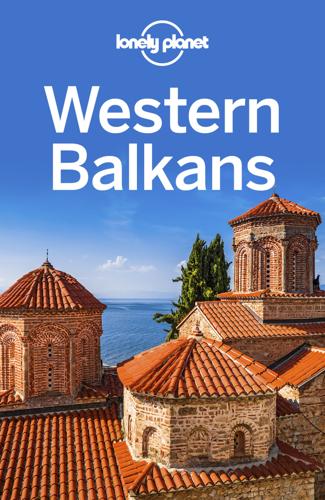
Lonely Planet Western Balkans
by
Lonely Planet
,
Peter Dragicevich
,
Mark Baker
,
Stuart Butler
,
Anthony Ham
,
Jessica Lee
,
Vesna Maric
,
Kevin Raub
and
Brana Vladisavljevic
Published 1 Oct 2019
Over time the populace slowly replaced their old gods with the new Christian faith championed by Emperor Constantine. The main trade route between Rome and Constantinople, the Via Egnatia, ran from the port at Durrës. When the Roman Empire was divided in AD 395, Illyria fell within the Eastern Empire, later known as the Byzantine Empire. Three early Byzantine emperors (Anastasius I, Justin I and Justinian I) were of Illyrian origin. Invasions by migrating peoples (Visigoths, Huns, Ostrogoths and Slavs) continued through the 5th and 6th centuries. In 1344 Albania was annexed by Serbia, but after the defeat of Serbia by the Turks in 1389 the whole region was open to Ottoman attack.
…
After his death the great stone palace continued to be used as a retreat by Roman rulers. When the nearby colony of Salona (now Solin) was abandoned in the 7th century, many of the Romanised inhabitants fled to Split and barricaded themselves behind the high palace walls, where their descendants live to this day. First the Byzantine Empire and then Croatia controlled the area, but from the 12th to the 14th centuries medieval Split enjoyed a large measure of autonomy, which favoured its development. The western part of the old town around Narodni trg, which dates from this time, became the focus of municipal life, while the area within the palace walls remained the ecclesiastical centre.
…
Around the same time, the Avars (a nomadic Central Asian people) rampaged brutally through the Balkans and progressed all the way to Constantinople itself, where the Byzantines duly crushed them. Controversy surrounds the role that the Slavs had in the defeat of the Avars. Some claim that the Byzantine Empire called on the Slavs to help in the fight, while others think that they merely filled the void left when the Avars disappeared. Whatever the case, the Slavs spread rapidly through the Balkans, reaching the Adriatic by the early 7th century. Two closely related Slavic tribal groups eventually came to the fore in the Western Balkans: the Croats and the Serbs.
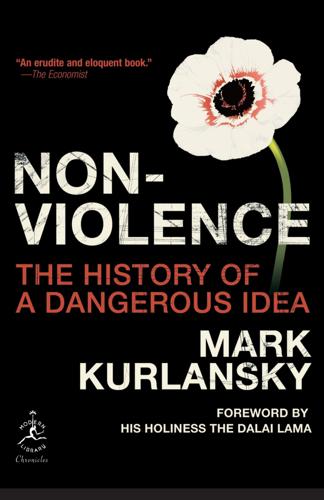
Nonviolence: The History of a Dangerous Idea
by
Mark Kurlansky
Published 7 Apr 2008
After that, Islamic legal writing increasingly accepted the notion of the infidel state. Islam developed a peace concept that brought no more peace than had the Christian Peace of God. It was called dar al-suhl, the House of Peace, and it meant that Muslim states could honorably live in peace with non-Muslim neighbors. The House of Peace easily crumbled. When the Byzantine Empire began aggressively moving east in the tenth century, Sayf alDawla, a celebrated Shi'ite ruler of the northern Iraqi Hamdanid dynasty, declared an annual jihad against Byzantium. Later in the same century, the Hamdanid rulers in what is now Turkey began delivering celebrated jihad sermons in ornate and rhymed phrases.
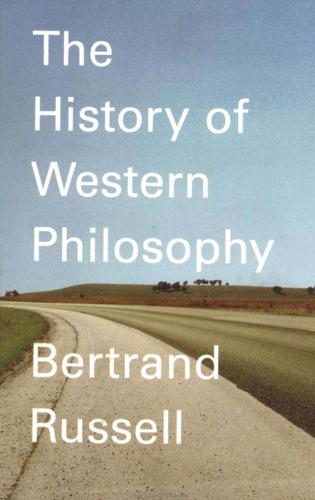
A History of Western Philosophy
by
Aaron Finkel
Published 21 Mar 1945
Christianity popularized an important opinion, already implicit in the teaching of the Stoics, but foreign to the general spirit of antiquity—I mean, the opinion that a man’s duty to God is more imperative than his duty to the State. This opinion—that “we ought to obey God rather than Man,” as Socrates and the Apostles said—survived the conversion of Constantine, because the early Christian emperors were Arians or inclined to Arianism. When the emperors became orthodox, it fell into abeyance. In the Byzantine Empire it remained latent, as also in the subsequent Russian Empire, which derived its Christianity from Constantinople.* But in the West, where the Catholic emperors were almost immediately replaced (except, in parts of Gaul) by heretical barbarian conquerors, the superiority of religious to political allegiance survived, and to some extent still survives.
…
Suddenly, in the course of some twenty years, men accustomed to all the hardships of a meagre existence on the fringe of the desert found themselves masters of some of the richest regions of the world, able to enjoy every luxury and to acquire all the refinements of an ancient civilization. They withstood the temptations of this transformation better than most of the Northern barbarians had done. As they had acquired their empire without much severe fighting, there had been little destruction, and the civil administration was kept on almost unchanged. Both in Persia and in the Byzantine Empire, the civil government had been highly organized. The Arab tribesmen, at first, understood nothing of its complications, and perforce accepted the services of the trained men whom they found in charge. These men, for the most part, showed no reluctance to serve under their new masters. Indeed, the change made their work easier, since taxation was lightened very considerably.
…
Plato had taught that knowledge is not perception, but a kind of reminiscent vision; Aristotle was much more of an empiricist. Saint Thomas, little though he intended it, prepared the way for the return from Platonic dreaming to scientific observation. Outward events had more to do than philosophy with the disintegration of the Catholic synthesis which began in the fourteenth century. The Byzantine Empire was conquered by the Latins in 1204, and remained in their hands till 1261. During this time the religion of its government was Catholic, not Greek; but after 1261 Constantinople was lost to the Pope and never recovered, in spite of nominal union at Ferrara in 1438. The defeat of the Western Empire in its conflict with the papacy proved useless to the Church, owing to the rise of national monarchies in France and England; throughout most of the fourteenth century the Pope was, politically, a tool in the hands of the King of France.
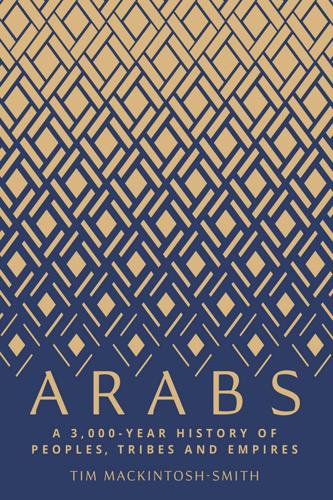
Arabs: A 3,000 Year History of Peoples, Tribes and Empires
by
Tim Mackintosh-Smith
Published 2 Mar 2019
Sponsorship also went on at less exalted levels, even if few could match the sum paid by the three Banu Musa brothers to their own in-house translators – 500 gold dinars a month, at a time when the pay of a foot soldier was twenty dirhams a month, or about two dinars. Eventually, as Dimitri Gutas has written, ‘the majority of pagan Greek books on science and philosophy . . . that were available in Late Antiquity throughout the eastern Byzantine empire and the Near East had been translated into Arabic’. The translation movement had not run out of energy; it had run out of texts. Even then, however, the literary drive did not end. It changed gear, for the translations had begun to inspire a broad range of original thinking in Arabic, and the thinking was now being set down in what for Arabic was a completely novel way – plain prose, with neither rhythm nor rhyme, composed directly in writing: prose like that which I am writing now.
…
(i) Beirut (i) Bekaa Valley (i) Ben Bella (i) Bengal (i) Bengali language (i) Berbers (i), (ii), (iii), (iv), (v), (vi), (vii), (viii), (ix), (x), (xi), (xii), (xiii), (xiv), (xv), (xvi), (xvii), (xviii), (xix) Berber languages (i), (ii), (iii) Berlin (i) Bethel (i) Bible (i), (ii), (iii), (iv), (v), (vi), (vii), (viii), (ix), (x) bid’ah (‘innovation’) (i), (ii) al-Biruni (i) al-Bitar, Salah al-Din (i) Black Death (i), (ii), (iii) Black Sea (i) ‘Black September’ (1970) (i) Boccaccio (i) Bolsheviks (i) Bombay (i) books, Arabic (i), (ii), (iii), (iv), (v), (vi), (vii), (viii), (ix); see also libraries; Qur’an Borges, Jorge Luis (i), (ii), (iii) Borneo (i), (ii) Bornu (i) Bosporus (i) Boston (i) Bourguiba, Habib (i) Bowles, Paul (i), (ii) Brahma (deity) (i), (ii) Brazil (i), (ii), (iii), (iv) Britain and the British (i), (ii), (iii), (iv), (v), (vi), (vii), (viii), (ix), (x), (xi), (xii), (xiii), (xiv), (xv), (xvi), (xvii), (xviii), (xix), (xx), (xxi), (xxii), (xxiii), (xxiv), (xxv), (xxvi), (xxvii), (xxviii), (xxix), (xxx), (xxxi), (xxxii), (xxxiii), (xxxiv), (xxxv), (xxxvi), (xxxvii), (xxxviii), (xxxix), (xl), (xli), (xlii), (xliii), (xliv), (xlv), (xlvi), (xlvii), (xlviii), (xlix), (l), (li), (lii), (liii), (liv) British Broadcasting Corporation (BBC) (i) British Library (i) Bu Azizi, Muhammad (i) Bu Hayrad, Jamilah (i) Buddhism (i), (ii), (iii), (iv) Bugha (i), (ii) Bugis (i) al-Buhturi (i) Bukhara (i) al-Buraymi (i) Burton, Sir Richard (i) Bush, George H.W. (i) Bush, George W. (i), (ii) al-Bushri brothers (i) Buwayh (i) Buwayhid dynasty (i), (ii), (iii) Buyah see Buwayh Buyid dynasty see Buwayhid dynasty Byron, Lord (i), (ii) Byron, Robert (i), (ii) Byzantine empire and Byzantines (i), (ii), (iii), (iv), (v), (vi), (vii), (viii), (ix), (x), (xi), (xii), (xiii), (xiv), (xv), (xvi), (xvii), (xviii), (xix), (xx), (xxi), (xxii), (xxiii), (xxiv), (xxv), (xxvi), (xxvii), (xxviii), (xxix), (xxx), (xxxi), (xxxii), (xxxiii), (xxxiv), (xxxv), (xxxvi), (xxxvii), (xxxviii), (xxxix), (xl), (xli), (xlii), (xliii), (xliv), (xlv), (xlvi), (xlvii), (xlviii) Cadmus (i) Caedmon (i) ‘Caesar’ (general term for Roman/Byzantine emperors) (i), (ii), (iii) Caesarea (Palestine) (i) Cain (i) Cairo (i), (ii), (iii), (iv), (v), (vi), (vii), (viii), (ix), (x), (xi), (xii), (xiii), (xiv), (xv), (xvi), (xvii), (xviii), (xix), (xx), (xxi), (xxii), (xxiii), (xxiv), (xxv), (xxvi), (xxvii), (xxviii), (xxix), (xxx), (xxxi), (xxxii), (xxxiii), (xxxiv), (xxxv), (xxxvi), (xxxvii), (xxxviii), (xxxix), (xl), (xli), (xlii), (xliii), (xliv), (xlv), (xlvi), (xlvii) Calabria (i) Calcutta (i) Calicut (i) caliph, meaning of (i) caliphate, institution of the (i), (ii), (iii), (iv), (v), (vi), (vii), (viii), (ix), (x), (xi), (xii), (xiii), (xiv), (xv), (xvi), (xvii) Calvinism (i) Cambay, funeral monuments from (i), (ii), (iii), (iv), Plate 14 Cambridge (i) camels (i), (ii), (iii), (iv), (v), (vi), (vii), (viii), (ix), (x), (xi), (xii), (xiii), (xiv), (xv), (xvi), (xvii), (xviii), (xix), (xx), (xxi), (xxii), (xxiii), (xxiv), (xxv), (xxvi), (xxvii), (xxviii), (xxix), (xxx), (xxxi), (xxxii), (xxxiii), (xxxiv), (xxxv), (xxxvi) domestication of (i) in combination with horses (i), (ii), (iii), (iv) myth of origin (i) Camp David accords (i), (ii), (iii) Cape of Good Hope (i), (ii), (iii) Carlyle, Thomas (i), (ii) Carmona (i) Casablanca (i) Caspian Sea (i), (ii), (iii), (iv) Castile and Castilians (i) Catherine of Braganza (i) Caucasus (i), (ii), (iii) Cave, People of the (i) Ceuta see Sabtah Chad, Lake (i) Chang’an (Xi’an) (i) Charles II, King (of England) (i) Charles, Prince of Wales (i) Chechens (i) Chile (i) China and the Chinese (i), (ii), (iii), (iv), (v), (vi), (vii), (viii), (ix), (x), (xi), (xii), (xiii), (xiv), (xv), (xvi), (xvii), (xviii), (xix), (xx) Chingiz Khan (i), (ii), (iii), (iv), (v) Christianity and Christians (i), (ii), (iii), (iv), (v), (vi), (vii), (viii), (ix), (x), (xi), (xii), (xiii), (xiv), (xv), (xvi), (xvii), (xviii), (xix), (xx), (xxi), (xxii), (xxiii), (xxiv), (xxv), (xxvi), (xxvii), (xxviii), (xxix), (xxx), (xxxi), (xxxii), (xxxiii), (xxxiv), (xxxv), (xxxvi), (xxxvii), (xxxviii), (xxxix), (xl), (xli), (xlii), (xliii), (xliv), (xlv), (xlvi), (xlvii), (xlviii), (xlix), (l), (li), (lii), (liii), (liv), (lv), (lvi), (lvii), (lviii), (lix), (lx), (lxi) Circassians (i), (ii), (iii) Cleopatra (i) ‘client’-kings and queens (i), (ii), (iii), (iv), (v), (vi), (vii), (viii), (ix), (x), (xi), (xii), (xiii) coinage (i), (ii), (iii), (iv), (v), (vi) Cold War (i), (ii), (iii), (iv), (v), (vi) Colombo (i) Columbus, Christopher (i) Committee for the Commandment of Virtue and the Suppression of Vice (i) Comoros (i), (ii) concubinage see Arabs, marriage and concubinage with non-Arabs Conrad, Joseph (i) Constantine V, Emperor (i) Constantinople (i), (ii), (iii), (iv), (v), (vi), (vii), (viii), (ix), (x), (xi), (xii), (xiii), (xiv), (xv); see also Istanbul Blachernae church (i) Copts (i), (ii), (iii), (iv), (v), (vi), (vii) Coptic language (i) Cordova (i), (ii), (iii), (iv), (v), (vi), (vii) Crimea (i) Cromer, Lord see Baring, Evelyn Crone, Patricia (i) Crossman, Richard (i) Crusades and Crusaders (i), (ii), (iii), (iv), (v), (vi), (vii), (viii), (ix), (x), (xi), (xii) Ctesiphon (i), (ii) Cyprus (i) Daftar Jaylani (i) Dahir, King (of Sind) (i) Dahis, War of (i) Dakar (i) Damascus (i), (ii), (iii), (iv), (v), (vi), (vii), (viii), (ix), (x), (xi), (xii), (xiii), (xiv), (xv), (xvi), (xvii), (xviii), (xix), (xx), (xxi), (xxii), (xxiii), (xxiv), (xxv) Umayyad Mosque (i), (ii), (iii), Plate 9 Damietta (i) Dandolo, Doge Enrico (i) Davie, Grace (i) Daws (tribe) (i) ‘Day of the Camel’ (i), (ii), (iii) ‘Day of the Elephant’ (i), (ii), (iii), (iv), (v) Daylam and Daylamites (i), (ii), (iii), (iv) ‘Days of the Arabs’ (tribal conflicts) (i), (ii), (iii), (iv), (v), (vi) Decius, Emperor (i) Dedan (i) Delhi (i), (ii), (iii), (iv) Delhi Sultans (i), (ii) Delos (i) Delphi (i) democracy (i), (ii), (iii), (iv), (v), (vi), (vii), (viii), (ix), (x) Dhahran (i), (ii), Plate 20 dhimmah (protection) (i) Dhofar (i), (ii) Dhubyan (tribe) (i) Dhu ’l-Kala’ (i), (ii) Dhu ’l-Khalasah (deity) (i), (ii) Dhu Qar (i) Dhu ’l-Qarnayn (i) Dhu Raydan (i), (ii) Dhu ’l-Rummah (i) Dhu ’l-Sama’ (deity) (i) dictators (i), (ii), (iii), (iv), Chapter 15 passim Dienné (i) din, meanings of (i), (ii), (iii), (iv), (v), (vi) Dinshaway incident (1906) (i), (ii) Dioscorides (i) Diyar Bakr (i) Doha (i) Doughty, Charles M.
…
Hatim (i), (ii) Recife (i) Reconquista (i), (ii), (iii), (iv), (v), (vi) Red Sea (i), (ii), (iii), (iv), (v) refugees (i), (ii), (iii), (iv), (v), (vi), (vii), (viii), (ix), (x); see also migration religion, pre-Islamic (i), (ii), (iii), (iv), (v), (vi), (vii), (viii), (ix), (x), (xi), (xii), (xiii), (xiv) Renaissance, European (i), (ii), (iii), (iv) Renan, Ernest (i) Retsö, Jan (i), (ii) rhetoric (i), (ii), (iii), (iv), (v), (vi), (vii), (viii), (ix), (x), (xi), (xii), (xiii), (xiv), (xv), (xvi), (xvii), (xviii) Rhodes, Cecil (i) al-Riddah (secession from state of Medina; ‘apostasy’) (i), (ii), (iii), (iv), (v), (vi), (vii), (viii) Rif War (i) Riyadh (i) Roderick, King (of Visigothic Spain) (i), (ii), (iii) Rogan, Eugene (i), (ii), (iii), (iv) Roger II, King (of Sicily) (i) Romanov dynasty (i) Rome, Romans and Roman empire (i), (ii), (iii), (iv), (v), (vi), (vii), (viii), (ix), (x), (xi), (xii), (xiii), (xiv), (xv), (xvi), (xvii), (xviii), (xix), (xx), (xxi), (xxii), (xxiii), (xxiv), (xxv), (xxvi), (xxvii), (xxviii), (xxix); see also Byzantine empire and Byzantines Roosevelt, Franklin D. Plate 18 Royal Air Force (i) al-Ruha (Urfa) (i) Rum, Wadi Plate 1 Rushdie, Salman (i), (ii), (iii) Russia and Russians (i), (ii), (iii), (iv), (v), (vi), (vii) Rustam (i), (ii), (iii) Rwala (tribe) (i) sa’alik see ‘vagabonds’ Saba (Sheba) and Sabaeans (i), (ii), (iii), (iv), (v), (vi), (vii), (viii), (ix), (x), (xi), (xii), (xiii), (xiv), (xv), (xvi), (xvii), (xviii), (xix), (xx), (xxi), (xxii), (xxiii), (xxiv), (xxv), (xxvi) political unity expressed in allegiance to deity (i), (ii) Queen of Sheba (i), (ii) Sabaic language (i), (ii), (iii), (iv), (v), (vi), (vii), (viii), (ix), (x) Sabians (i) Sabra and Shatila massacre (i) Sabtah (Ceuta) (i) Sa’d b.

Rough Guide DIRECTIONS Venice
by
Jonathan Buckley
On Friday and Saturday the Querini- 02 Venice DIR Places.indd 122 9/29/06 2:45:37 PM 123 Salizzada di San Provolo, leading east out of Campo Santi Filippo e Giacomo, runs straight to the elegant Campo San Zaccaria, a spot with a chequered past. In 864 Doge Pietro Tradonico was murdered in the campo as he returned from vespers, and in 1172 Doge Vitale Michiel II, having not only blundered in peace negotiations with the Byzantine empire but also brought the plague back with him from Constantinople, was murdered as he fled for the sanctuary of San Zaccaria. Founded in the ninth century as a shrine for the body of Zaccharias, father of John the Baptist, the church of San Zaccaria had already been rebuilt several times when, in 1444, Antonio Gambello embarked on a massive rebuilding project that was concluded some seventy years later by Mauro Codussi, who took over the facade from the first storey upwards.
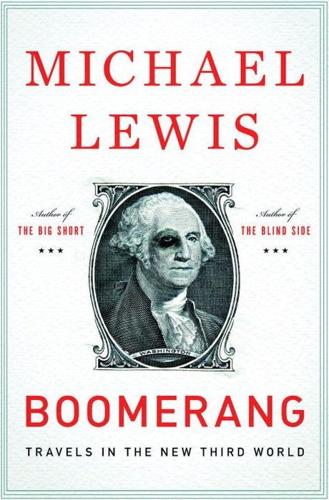
Boomerang: Travels in the New Third World
by
Michael Lewis
Published 2 Oct 2011
They were told a horrible injustice had occurred: in the fourteenth century a band of Catalan mercenaries, upset with the Byzantine emperor, had sacked Vatopaidi and caused much damage. The monastery received $240,000 from the government officials. Clearly one part of Ephraim’s strategy was to return Vatopaidi to what it had been for much of the Byzantine Empire: a monastery with global reach. This, too, distinguished it from the country it happened to be inside. Despite its entry into the European Union, Greece has remained a closed economy; it’s impossible to put one finger on the source of all the country’s troubles, but if you laid a hand on them, one finger would touch its insularity.
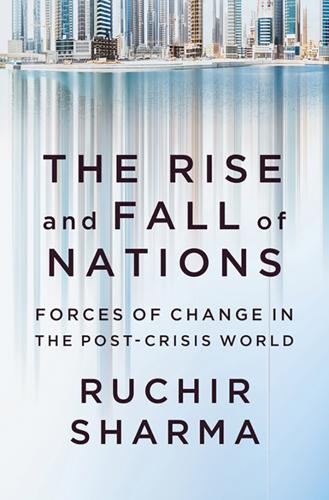
The Rise and Fall of Nations: Forces of Change in the Post-Crisis World
by
Ruchir Sharma
Published 5 Jun 2016
It had carried on longer than the synchronized slowdowns that hit the emerging world after Mexico’s peso crisis in 1994, or the Asian financial crisis in 1998, or the dot-com bust in 2001 or even the crisis of 2008.4 As the sluggishness spread, the old hunt for the next emerging-world stars gave way to a realization: Economic growth is not a God-given right. Major regions of the world, including the Byzantine Empire and Europe before the Industrial Revolution, have gone through phases stretching hundreds of years with virtually no growth. At Goldman Sachs, researchers looked back 150 years at countries that had posted long runs of subpar growth and had seen their average income slip relative to their peers.
…
Abe, Shinzo, 41, 46, 94, 384 Abramovich, Roman, 107, 114 AC (after the Crisis), see global financial crisis Acemoglu, Daron, 176 Afghanistan, 44, 345 Africa: backward slides in, 205, 225, 353–54 commodities economies in, 225, 353–54, 397 economic trends in, 182, 225, 396–99 and global trade, 185, 402–3 hype about, 352–53, 355, 397–98 infrastructure in, 181, 186, 232–33 investments in, 225, 232–33 leadership in, 352–53 population growth in, 31 postcolonial cases in, 96–97 regional alliances, 179, 181–82 tales of, vii, viii–xi see also specific nations “Africa Rising,” 8, 182, 225, 352–53, 355, 397–98 aging, 25, 26, 27, 28, 35, 37–40, 43, 45–46, 59, 83 Algeria, 185 Altman, Roger, 138 Amaral, Luís, 160 anchoring bias, 9, 14 Anderson, Jonathan, 176 Anderson, Thomas, 35 Angelos, James, 137 Angola, 225 Apple, 122, 135, 286, 361 Aquino, Benigno “Noynoy,” III 79, 376 Arab Spring, 4, 31, 76, 91–92, 167, 242 Argentina, 139, 190 commodities economy of, 174, 228 currency of, 273, 284, 291, 293 default of, 291 economic decline in, 83, 291, 334, 346, 365 hype about, 333 inflation in, 242, 326, 365, 366 leadership in, 64, 69, 74, 76, 82–83, 98, 333, 365–66 and regional alliances, 182, 366 social unrest in, 74, 365 artificial intelligence (AI), 54–55, 57 Asia: billionaires in, 115, 117 cheap labor in, 184, 185 economic growth in, 39, 87, 238, 401 financial crisis (1997–98), 5, 65–66, 68, 231, 246, 258, 267, 280, 285–88, 292, 297, 298–99, 320, 321, 325, 330, 332, 349 and global trade, 184, 402–3 “miracle” economies in, 6, 84, 87, 93, 145, 175, 190, 212, 214, 238, 308 see also specific nations “Asia Rising,” 330 Aso, Taro, 46 Assad, Hafez al-, 89, 92 Association of Southeast Asian Nations, 179 Atlas of Economic Complexity, 52, 294 Australia, 121, 138, 192, 386–87 debt in, 300, 386, 387 and immigration, 45–46, 50, 53, 386 manufacturing in, 204, 386, 387, 388 population growth in, 32, 33–34, 46, 386 Austria, 138 autocracy vs. democracy, 63, 85–91, 132 Ax:son Johnson, Antonia, 174, 179 Babacan, Ali, 67 Babi, Andrej, 109 Bacha, Edmar, 113 Bachelet, Michelle, 95–96, 97, 98–99 balance of payments, 268, 281–82 “errors and omissions” in, 282, 283, 284 Balassa-Samuelson approach, 265 Bangladesh, 96, 187, 199, 213 current account surplus in, 372–73 hype about, 370–71 location of, 168, 180, 185, 375 workforce in, 31, 372–73 banks: and easy money, 101–2, 108, 243–44, 246, 260, 290 loans from, 276, 373 private, 153–54 restructuring, 321–22 “shadow,” 309–11, 315 state/central, 134, 151–54, 243–44, 246, 252, 260–61, 290, 294, 304 Basri, Muhamad Chatib, 93, 293 Basu, Kaushik, 234, 235, 236, 237 BC (before the Crisis), see global financial crisis Belgium, 90, 136 Bell, Bernard, 81, 82 Bellemare, Marc, 242 Berg, Andrew, 125–26 Beschloss, Michael, 70–71 Bezos, Jeff, 49 Bhutto, Zulfiqar Ali, 96, 97 billionaire lists, 100, 103–5, 111–12, 116–17, 120–21 birth control, 25–26, 43, 47 Bismarck, Otto von, 37–38, 40 black economy, 128, 142–43, 293 Bolivia, 182, 183, 185 Botswana, 225, 342, 348 brain gain, brain drain, 48–54 Brash, Don, 244 Brazil, 161, 193, 232 agriculture in, 343–44 closed economy of, 367–68 commodities economy of, 4, 174–75, 205, 223, 225, 227, 228, 262–63, 341–42, 343–44, 367, 368, 376, 397 currency of, 262–63, 273, 284, 289, 291, 293 current account deficit in, 367–68 debt of, 89, 284, 291, 327, 328 decline in development of, 3, 89, 202, 284 economic growth in, 29, 63, 66, 69, 89, 147, 340, 344 financial deepening in, 327 GDP of, 4, 175 government spending in, 139–40, 149, 150, 366 hype about, 4, 10, 262, 338, 344, 348, 351–52, 367 inflation in, 89, 155, 240, 241, 242, 246, 326, 366 international business in, 18, 368 investment in, 203, 205, 231–32, 239, 240, 366–67, 397 leadership in, 66, 69, 71, 76, 78, 80, 89, 333, 366 per capita income in, 325, 342 population growth in, 26, 30 recession (2014), 153 and regional alliances, 182 social unrest in, 4, 61, 72, 73, 74 state banks in, 152–53 taxes in, 140 wealth in, 112–13, 120 workforce in, 40, 43 BRICs, hype about, 4, 8, 9, 340–41, 362 Brin, Sergey, 49 Brinn, Peter, 34 Britain, 93, 192, 221, 245 billionaires in, 116, 121, 388 IMF bailout to, 65 and immigration, 53, 388, 389 Industrial Revolution in, 255 leadership in, 64–65, 388, 389 and location, 176, 402–3 manufacturing in, 388 per capita income in, 32, 346 wealth gap in, 102, 119, 388–89 workforce in, 32, 35, 37, 50, 55–56 Buffett, Warren, 124, 309 Buhari, Muhammadu, 226, 398 Burgis, Tom, 226 Burma, 187, 333, 334 Burundi, 181 Byzantine Empire, 6 Cambodia, 88, 176, 180, 185 Cameron, David, 388 Canada, 121, 192, 244 commodities economy of, 225, 386 and immigration, 45, 49–50, 53 leadership in, 365, 386 and regional alliances, 386 shale in, 228–29 smuggling in, 156–57 working women in, 41, 42 capital account, 275–76, 281–82 capital flight, 52–53, 107, 279–81, 292 capital flows, 2, 5, 268–70, 275, 277, 279–90, 295–96 Cardoso, Henrique, 69 Carstens, Agustín, 150 Carter, Jimmy, 65 Castro, Fidel, 86, 98 Ceauescu, Nicolae, 392 Chad, 225 Chávez, Hugo, 64, 69, 77, 79, 98 Cheap Is Good (Rule 8), 262–96; see also currencies cheetahs, survival of, x–xi Chiang Kai-shek, 85–86, 317 Chile, 141, 152, 188, 190 baby bonuses in, 34–35 brutal suppression in, 82, 98 debts of, 291, 300 economic cycle in, 29, 95, 98, 320 hype about, 333, 368 and inflation, 242, 246 investment in, 99, 205, 218 leadership of, 82, 98–99, 333 per capita income in, 325 and regional alliances, 182–84 social unrest in, 70, 96 wealth gap in, 95–96, 98, 99, 100, 103, 107, 118 workforce in, 43 China, 8, 200, 237 agriculture in, 343–44 authoritarianism in, 3, 85, 87, 317 “Beijing Consensus,” 132–34, 145 billionaires in, 103, 113–14, 117, 118–20 capital flight from, 52–53, 282–83, 381–82 closed economy of, 174 command capitalism in, 87, 134, 145 Cultural Revolution in, 64 currency of, 266, 267, 272, 292–93, 295, 367, 372, 381, 385 current account surplus in, 277 debt in, 30, 134, 257, 300, 306–16, 317, 319, 381 economic cycle in, 8, 10, 57, 257 economic growth in, 57, 65, 83–85, 87, 134, 145, 147, 195–96, 238, 256, 326, 336–37, 339, 358, 359, 380–82 free market reform in, 64–65, 145, 380 GDP of, 4, 9, 13, 30, 38, 175, 238, 309, 312, 337 ghost towns in, 230 government spending in, 149–50 HDI ranking, 10 and Hong Kong, 171 hype about, 4, 85, 333, 334, 336, 337, 338, 340, 348 and immigration, 50, 52–53 industrialization in, 144–45, 195, 206–7, 215 infrastructure in, 17, 196, 208 and international trade, 4, 18, 155, 172, 175, 184, 185, 187, 193, 216, 272, 275, 294–95, 308, 315, 382, 383, 402–3 investment in, 205, 206, 225, 226, 229–30, 238, 240, 380, 381, 399 investment in emerging nations by, 186–88 leadership in, 63, 64–65, 71, 79, 83–85, 90, 132, 184, 380 life expectancy in, 38–39, 40 manipulating the numbers in, 84–85, 145, 314, 359 manufacturing in, 205, 209, 213, 215, 217, 226, 275, 294, 341 Olympic Games in, 308, 311 one-child policy in, 26, 35, 36 per capita income in, 316, 380 population centers in, 195–97, 199 population growth rates in, 26–27, 30, 31, 35, 380–81, 383 and regional alliances, 173–75, 179–81, 372, 384 savings rates in, 313, 315 and Silk Road, 187–88, 399 state banks in, 151, 154 state-run companies in, 134–35, 144–45 and Taiwan sovereignty, 382–83 technology in, 56, 294–95 Tiananmen Square uprising, 71, 84 wages in, 185, 243 wealth gap in, 102, 103, 105, 113, 116 workforce in, 19, 40, 42, 56, 177, 243, 380–81 Choonhavan, Chatichai, 180 Circle of Life (Rule 2), 58–94 and needed reforms, 62–70, 75, 91, 92, 94 as rule of politics, 60–62, 91–94 see also leadership civil war, causes of, 142 Colombia: commodities economy of, 224, 228, 368 domestic market in, 188 education in, 43 and global trade, 188–89 infrastructure in, 189, 207–8, 220 leadership in, 77, 90, 350 and Pacific Alliance, 183–84, 199 population centers in, 190–91, 199 social unrest in, 77, 191 workforce in, 43 commodities: commodity-exporting nations, 227, 263, 292, 353–54 and corruption, 225, 226–27 hype about, 340–42, 343 investment in, 223–29 Malthusian disaster scenario, 343–44 prices of, 111, 114, 174, 228, 263, 341–42, 354, 386 confirmation bias, 9, 14 consumption, as economic indicator, 15, 202 convergence, myth of, 338–41, 352 corruption: in commodities economies, 225, 226–27 and leadership, see leadership and wealth gap, 100 credit markets: and bubbles, 313–16, 327 collateralized lending, 311 and debt, see debt fear of, 323–26 and government bailouts, 314 private, 300–305, 309 restarting a boom, 325–26 signals from, 13, 314, 316, 319–20 upside of booms, 319–23, 325 Cuba, 86, 98 currencies, 262–96 cheap, 264–67, 287, 291–94 contagion, 273–74, 285 crises in, 269–70, 271–73, 284–87, 291 and debt, 65–66, 291, 296 and deglobalization, 274–77, 296 devaluing, 290–96, 381 floating, 288–89 and inflation, 264–65, 292 local, 279, 296 market-determined, 295–96 measuring the value of, 264–65 and money flows, 268–70, 281, 284–90 overpriced, 263 speculation in, 263 and thrift, 277–79 weakening of, 5, 65 current account, 268–70, 288 deficit (5 percent rule), 269–74, 276–77, 278, 292, 295–96, 354 surplus, 277, 372–73 tipping point, 268–69, 277 cycles: boom and bust, xi, xii, 6, 10, 14, 15, 21, 60–61, 87–88, 90, 310, 347 of decay and regeneration, 91–94 five-year average of, 8, 9–10 recessions, see recessions Czech Republic, 320, 339, 392 billionaires in, 118 currency of, 288–89 economic strengths in, 109–10, 391 and global trade, 174, 176 investment in, 205, 215 leadership in, 80–81 debt, 21, 259, 297–328 and banking system, 153, 198 and credit crises, 297–302 and credit systems, 319–23 and currency crises, 65–66, 291, 296 debtophobia, 323–26, 328 “deleveraging,” 306, 394, 399 as economic signal, 16, 18, 385 and economic slowdown, 317–19 and GDP, 149, 216, 291, 300, 317, 320, 328 government, 304–5 and interest rates, 229 pace of increase of, 385 paying off, 326–28 and private sector, 302–5 spread of, 305–6, 316 de Gaulle, Charles, 64 democracy: autocracy vs., 63, 85–91, 132 checks and balances in, 86, 90, 364 rejection of, 3 Democratic Republic of Congo, 181 demographic dividend, 31–32, 39 Deng Xiaoping, 64–65, 71, 79, 84, 86, 90, 184, 293 Denmark, 33, 136 dependency ratio, 38, 39 Deripaska, Oleg, 115 Dervi, Kemal, 248 developing nations, see emerging nations development traps, 345 Dornbusch, Rudiger, 272 dot-com bubble (2000–2001), viii, 2, 5, 111, 220, 222–24, 229, 261, 362 Dubai, 166–71, 176, 184–85, 198 Durov, Pavel, 160 “Dutch disease,” 224–25 East African Community (EAC), 181–82, 354–55, 399 East Asia, 179, 380–87 Easterly, William, 85, 86, 347 easy money, 101–2, 108, 243–44, 246, 260, 290 Echeverría Álvarez, Luis, 98 economic growth: attempted management of, 135, 150, 151–52 author’s definition of, 15 author’s methodology for, 407 computation of, 12–13, 15, 163 and credit binges, 301, 305–6, 327 and credit growth, 326–28 and human development, 10 and immigration, 51 and inflation, 238–40, 326, 365 and investment, 205–6 and location, 175–78, 199–200 long-term average rate of, 14 and manufacturing, 15–16, 216, 227, 341 nature of, 6–7, 332, 341–42 and population growth, 29–32, 57 postwar miracles in, 28–29 questionable claims of, 12–13, 145, 165 and reform, 162–63 shapers of, 8, 21 slowing, 2, 64, 73, 300, 346–47 superfast, 8, 87–88 and wealth gap, 125–27 and workforce, 24, 26, 52 economics: as impractical science, 11–14 optimism bias in, 337–38, 352 practical art of, 15–19 regression to the mean in, 336 Economist, The, 337, 344, 351–52 Ecuador, 224 education, 10, 16–18, 26, 49–50 Egypt, 175, 348 and Arab Spring, 4, 76, 92, 167 energy subsidies in, 156, 157 investment in, 205, 231 social unrest in, 4, 72, 73, 74, 76 workforce in, 42, 44, 185 Eichengreen, Barry, 345 Eisenhower, Dwight D., 158 Ellison, Larry, 49, 104, 119 emerging nations: boom in (2000s), 69, 73, 147 capital flows from, 5, 283–84 circle of life in, 61–62, 65–66, 88–89, 91 currencies of, 5 and economic crises, viii, 147–48 economic growth in, 3, 9, 88, 146, 147, 278, 328, 338–40 energy subsidies in, 157 financial deepening in, 327 “flying geese” development model, 179, 183 foreign debts of, 5, 147, 148, 306 and global trade, 173–75, 186 government spending in, 140–41, 147, 148–50 hype about, 4, 8, 9, 333–34, 338–40 infrastructure in, 207–8 and investment, 186–88, 205 manufacturing in, 203–4, 205–6, 214 natural resources in, 223–29 per capita income in, 339–40 population growth in, 26–27, 29–30, 340 questionable statistics from, 12–13 social unrest in, 4, 76 state-run companies in, 134–35 structural reform in, 62, 163 and tariffs, 172 wealth gap in, 101, 116 energy subsidies, 156–58 Erdoan, Recep Tayyip, 60, 66, 67–69, 71–72, 74, 76, 78, 79, 114, 249, 284 Eritrea, 66, 339 Estrada, Joseph, 97 Ethiopia, 17, 88, 211, 227, 358 euro crisis (2010), 80, 81, 286 Europe, 215, 387–95 currency crisis in (2010s), 285, 286, 287–90, 317 current account deficit in, 278, 288 debt crisis in, 126–27, 198, 288 and geopolitics, 172–73 and inflation, 245 internal devaluation in, 287–88 and location, 175–76, 179, 200, 402–3 and recession, 308–9, 317, 327 social unrest in, 70, 389 technology in, 295 Europe, eastern: currencies in, 289–90 and global trade, 176 rise of, 8, 400 Russian influence in, 392–93 workforce in, 392 European Commission, 30, 80 European Community, 181 European Union, 179, 289, 331, 388 Eurozone, see Europe; specific nations Evenett, Simon, 173 Factories First (Rule 6), 201–33; see also manufacturing Fajardo, Sergio, 191 farming, 15–16, 27, 54, 343–44 Federal Reserve Bank, 14, 266 and easy money, 101–2, 108 and inflation, 245 and interest rates, 306, 335 Fernández de Kirchner, Cristina, 365 fertility rates: and baby bonuses, 33–35 and birth control, 25–26, 43, 47 declining, 26, 28, 35, 38, 43, 44 replacement, 26, 33, 37, 47 and workforce, 18–19, 33–36, 37, 47, 392 financial crisis: use of term, 301n see also recessions Finland, 17–18, 136, 138 Fischer, David Hackett, 254 Fischer, Jan, 80–81 Forbes, Kristin, 275, 276 Forbes billionaire list, 100, 103, 104, 116, 117, 119, 121 Ford, Gerald R., 241 Ford, Martin, 55 forecasting, 8, 14, 400–401 foreign exchange reserves, 266 France, 34, 65, 192 billionaires in, 116, 117, 121 economic growth in, 90, 335 government spending in, 136–37 hype about, 335 and immigration, 50, 53 industrialization in, 144 life expectancy in, 39 slump in (2000s), 6 taxes in, 139 workforce in, 32, 35, 37, 39–40 free market reforms, 64–65, 151, 172 free trade agreements, 175, 178–84, 185, 188, 199, 370 Freund, Caroline, 268–69 Frey, Carl Benedikt, 54 Fujimori, Alberto, 183 Fukuyama, Francis, 73 Gandhi, Indira, 81–82 Gandhi, Mohandas K.
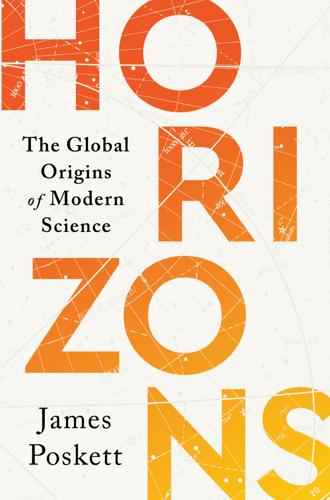
Horizons: The Global Origins of Modern Science
by
James Poskett
Published 22 Mar 2022
Many believed that the ancient Greek originals had been lost forever. They were wrong.16 8. Diagram illustrating the ‘Tusi couple’ from Nasir al-Din al-Tusi, Memoir on Astronomy (1261). II. Islamic Science in Renaissance Europe The people of Istanbul were preparing for the worst. For nearly two months, the capital of the Byzantine Empire had been under siege. Following the collapse of the Timurid Empire, a new Muslim power began to dominate Central and Western Asia: the Ottomans. Sultan Mehmed II lay siege to the city, raining fire from his galleys stationed on the Bosporus and blasting the Roman walls with immense iron cannon.
…
See also individual astronomer and text name Atea (Polynesian deity) 112 Atharva Veda 148 Athwal, Dilbagh Singh 327 Atlantic Ocean 5, 17, 19, 30, 31, 33, 38, 45, 97, 98, 102, 103, 106, 135, 138, 141, 145, 181, 182, 183, 188 atom: atomic weight 218, 224, 226, 228, 267, 273, 274; quantum model of 267, 273, 274; structure of 255–8, 257, 259, 290 atomic bomb 306, 307–11, 312–13, 314, 321, 328, 330, 346 Atomic Bomb Casualty Commission, US 308–10, 311, 312–13, 346 Atomic Energy Establishment, India 328–9, 330, 332 Aurangzeb, Mughal emperor 88, 91 Australia, Cook arrives in 124, 133 Ayurveda 148, 248 Aztec Empire 6, 11–13, 14, 16, 19–29, 33, 45, 367; botanical gardens/aviaries 11–12, 22, 25; conquistadors conquer 12–13, 31, 33–4; diet 35; education in 12; glyphs 20, 30, 42, 28–9, 28; Great Temple 12, 13, 22; Huitzilopochtli (Hummingbird God) 22; ‘knowers of things’ 12; mapping 41–2, 43, 44; medicine 12, 22–30, 26, 28; mestizos 35–7; Nahuatl language 19–20, 25, 27, 28, 28, 29, 30, 42, 45; rights of Aztec people debated by Europeans 34–7; system of taxonomy 21; Tenochtitlan 11–13, 22, 31, 33, 42; The Treasury of Medical Matters of New Spain and 25–7, 26; The True History of the Conquest of New Spain/Florentine Codex and 13, 19–23, 21, 26, 27, 42, 45 Babur, Mughal emperor 87 Bacon, Francis: The New Organon 99–100, 100 Badiano, Juan 27 Baghayogho, Muhammad 73 Baghdad 3, 55, 344; ‘House of Wisdom’ 48; Ptolemy translated into Arabic within 52 Bai, Sunanda 303–5 Baku Oil Company 226 Baku University 276 Banks, Joseph 112–13, 116, 118, 121, 162, 171–2 Barham, Henry 143, 145 baselines (straight trench) 108–10, 109, 110, 111 Beagle, HMS 179, 180, 181, 184 Beg, Ulugh 46–51, 55, 65–6, 69, 86, 88, 91 Beijing, China 7, 52, 114, 160, 162, 210, 211, 267, 279–80, 286, 328, 334, 35, 336, 337, 338, 340, 358, 365, 366; astronomy and mathematics, development of in early modern 2, 77–86, 83, 87, 88, 90, 92–3; Olympics (2008) 4; Second Sino-Japanese War (1937–45) and 7, 267, 284 Beijing Agricultural University 334–5, 336 Beketov, Andrei 197–8 Benares, India 86–7, 91, 247, 249 Benin, Kingdom of 72 Bengal, India 153, 217, 239, 240–21, 243, 244, 246, 247, 248, 249, 266, 295, 297, 298, 299; Bengal Chemical and Pharmaceutical Works 246, 248, 249; Great Bengal Famine (1943–4) 324, 325; Partition (1905) 267, 295–6, 298, 305 Ben-Gurion, David 345 Ben-Shushan, David (Dawud al-Riyadi) (David the Mathematician) 67–8 Benzer, Seymour 33 Bering, Vitus 127–9, 130, 133 Bering Strait 128, 129, 130, 132 Bernier, François 88 Bernoulli, Daniel 126 Bernoulli, Nicolaus 104 Bessarion, Basilios 58 Bhabha, Homi 330 Bhatt, Apu 148 Bhatt, Ranga 148 Bhatt, Vinayaka 148 Bible 14, 17, 18, 19, 31, 32, 33, 34, 99–100 ‘big science’, twentieth century 3 Bikini Atoll, detonation of hydrogen bomb on (1954) 311 Billings, Joseph 129, 130, 132 Bitruji, Nur ad-Din al- 60 ‘black drop effect’ 116, 117, 117 Black, Joseph 143 Blair, Tony 352, 353 blood group system, ABO 343, 343, 344, 346, 348 Board of Longitude 114–15 Bohr, Niels 267, 269, 273, 274, 276, 281, 290 Bolsonaro, Jair 368 Bonaparte, Napoleon 175, 176, 178, 189 Book of the Fixed Stars (medieval Arabic astronomical catalogue) 49 Borlaug, Norman 326 Born, Max 272 Borno, Sultanate of 73–4 Bose, Debendra Mohan 266–7 Bose, Jagadish Chandra 217, 237–42, 243, 244, 245, 259, 266, 295 Bose, Satyendra Nath 298–301 Bose, Subhas Chandra 296 Bose–Einstein statistics 299–301 bosons 299–301 botanical gardens 11, 23, 24–5, 29, 139, 153, 154, 155, 165, 170, 171 Bougainville, Louis Antoine de 115 Bourbon, House of 106 Boyle, Robert 13, 99 Brahmoism 247 Branly, Édouard 220 Brazil 32, 37, 38, 182, 320, 323, 346, 347, 368; War of Independence (1822–4) 182 British East India Company 97, 99, 101, 104, 133, 138, 152–5, 156, 157, 158, 171, 242, 243 British Empire 115–16, 139, 152–5, 183, 184, 238, 239, 242–4, 248–9, 324, 325, 328, 332, 334, 344, 345; physics and fight against in India 294, 295–305, 300 British Eugenics Society: Genetic and Environmental Factors in Human Ability 323 British Museum 140, 209 Browne, Patrick 143 Bryozoa 204–5, 204 Bulletin of the Moscow Society of Naturalists 196 Bunsen, Robert 227, 228 Butterfield, Herbert 4 Byzantine Empire 56, 57, 58, 61, 63, 69 Cai Yuanpei 281, 287 Cairo, Egypt 4, 51, 53, 57, 64, 72, 176, 231, 232, 234, 346 calendars: agricultural 72; Aztec 12; Chinese 82–5; Hindu 88; Inca 110; Islamic 50, 66, 68, 71, 74, 235 California Institute of Technology 283, 285, 286, 331 Cape of Good Hope 45 capitalism 2, 5, 7, 172, 173, 179, 197, 208, 213, 217–18, 236, 356 ‘Carim-pana’, or palmyra palm 146, 146, 147 Carlos, John 322, 323 Čáslavská, Véra 323 Catherine the Great, Empress of Russia 129 Cavendish Laboratory 223, 240, 268, 269, 290 Cayenne 101–2, 103 Chadwick, James 293 Chao Hsueh-Min: Additions to Materia Medica 209 Charles II, King of England 98 Charles V, King of Spain 13, 31 China 3; artificial intelligence (AI) and 358–9; astronomy and mathematics, development of in early modern 2, 77–86, 83, 87, 88, 90, 92–3; balance in scientific world and rise of 2; Belt and Road Initiative 357, 361, 365; Boxer Indemnity Scholarship 282, 283, 285; Boxer Rebellion (1899–1901) 211, 282; Chinese Communist Party 334–42, 358, 359, 363, 365; climate change and 365–6; Columbus and 38; Confucian philosophy within 77–8, 81, 83, 210, 279, 281, 284, 287; Cultural Revolution 341; Digital Belt and Road Program 366, 367; dynasties/empires see individual dynasty or empire name; Einstein/quantum physics and 263, 267, 279–87; evolutionary theory in Qing dynasty 206–13; First Five-Year Plan (1953–7) 337; First Sino-Japanese War (1894–5) 202–3, 206–7; genetic science in 334–32, 354; Great Chinese Famine (1959–61) 338–9; Imperial Medical Office 160–61; Li Shizhen and development of natural history in seventeenth- and eighteenth-century 155, 159–63, 160, 164, 165, 166, 167, 171, 172, 209; May Fourth Movement 279–80, 281, 282, 287; New Cold War and 355–60, 362, 364, 368; Olympics (2008) 4; People’s Republic of China founded (1949) 281, 310, 334; Revolution (1911) 208, 211–12, 267, 279, 280, 281, 282, 284, 287, 294; Second Sino-Japanese War (1937–45) 7, 267, 284; Self-Strengthening Movement 281; Silk Road and see Silk Road; space exploration 362, 363; tea trade and 156–9; Thousand Talents Plan 355–6; university, first modern (Imperial University of Peking) 209–10; Xinjiang detention camps 354, 360 Chinese Academy of Sciences, Beijing 337, 340, 366 Chinese Revolutionary Alliance 211–12 Chinese Science Bulletin 340, 341 Chongzhen Emperor 83, 84, 85 Chongzhen Star Catalogue, The 85 chromosome knots 319 Chukchi 130–32 Chusan Island 158 cinchona bark 136, 137, 140 Cissé, Moustapha 360–61 Clavius, Christopher 78, 84, 85; The Astrolabe 80 climate: climate change science 358, 364–8; impact on human history of 35, 37 Clinton, Bill 352, 353 clocks: invention of mechanical 66–7, 68; pendulum 102, 115–16; Ricci takes to China 79, 93 cloud chamber 286, 286, 290, 294 CloudWalk 361 Clusius, Carolus: History of Rare Plants 30 cocoliztli (‘the great pestilence’) 24–5 coherer 220, 221, 221 Colbert, Jean-Baptiste 102 Cold War 2, 5–6, 320; genetics and 268, 307–54; idea that modern science was invented in Europe, influence upon 5–6, 49, 336–7, 342; origins of 306, 310, 312–13 College of San Gregorio, Valladolid, debate at (1550) 34 Columbus, Christopher 15, 16, 31, 32, 34, 38, 41, 44, 45, 99 comets 46, 68–9, 70, 82, 104 Commission of Science and Arts, France 175–6 Company School style 155 Confucius 77, 80, 81, 83, 210, 279, 281, 284, 287 Congress of Russian Naturalists and Physicians 192, 196, 198 Cook, James 113, 115–16, 117, 118, 121, 122, 122, 124, 129, 132, 133 Copernicus, Nicolaus 59–62, 69, 84; al-Tusi and 61–2, 70; Arabic and Persian texts, reliance upon mathematical techniques borrowed from 1–2, 52, 60–63, 62, 70, 93; birth and education 59–60; On the Revolutions of the Heavenly Spheres 1, 52, 60–63, 62, 69, 78, 84; scientific revolution and 1, 62, 63 Cornell University 317, 334 Cortés, Hernán 12–13, 31 Cortina Durán, María Cristina 321 Cosa, Juan de la 39, 39 Council of the Indies 40, 42, 43 Crick, Francis 312 Crimean War (1853–6) 190–91, 198, 223, 230, 231 Croft, Sir Alfred 239 Croyère, Louis de l’Isle de la 128–9 Cruz, Martín de la 27; The Little Book of the Medicinal Herbs of the Indians 27–9, 28, 30 Cuba 15, 32, 187, 317 Cuninghame, James 158–9 Curie, Marie Skłodowska 216, 219 Cusco 37, 110 Cuvier, Georges 178, 181 Darwin, Charles 1, 179–80, 280; Argentina, development of evolutionary theory in and 180–88, 187; Beagle voyage 179, 180, 181, 184, 213; death 198; Descent of Man 184, 191, 192; Falkland Islands and 183–4; Journal of Researches 183; Meiji Japan, Darwinism in 199–206; On the Origin of Species 179, 180, 181, 182, 187, 190–92, 193, 198, 201, 205, 207, 209, 210, 211, 212–13; Qing China, Darwinism in 206–13; Russia, evolutionary theory in nineteenth-century and 188–98; ‘struggle for existence’, describes evolution as 179, 185, 191, 194, 197, 198, 199, 202, 203, 205, 206, 207, 208, 209, 211, 212, 213; The Variation of Animals and Plants under Domestication 209 Daurkin, Nikolai 130, 131, 132 decolonization 2, 6, 268, 333–4, 345, 365 Derviş, Mehmed Emin Pasha 232–3 Descartes, René 13–14, 67, 88, 104; Principles of Philosophy 104 Deshima island, Japan 167–70 Dezhnev, Semen 128 Díaz del Castillo, Bernal: The True History of the Conquest of New Spain 13 Dioscorides: On Medical Material 24, 25, 27 Dirac, Paul 267, 269, 272, 281, 285–6, 287, 290–91, 292 DNA 309, 312, 313, 319, 329, 337–8, 350, 354 Dogon people 72 Dostoevsky, Fyodor 191 Duane, William 285 Ducretet, Eugène 222 Dutch East India Company 138, 139, 147, 149, 150, 151, 156, 163, 167, 168, 169, 170 East Indies 15, 38; natural history in 146–55, 146, 152.

And Then All Hell Broke Loose: Two Decades in the Middle East
by
Richard Engel
Published 9 Feb 2016
Unlike Christianity, Islam had no concept of what in more recent times became the separation of church and state. Islam expanded by conquest as well as by conversion. The early Muslims were hardy and effective fighters, attacking in small bands and retreating into the desert. After Mohammed’s death, Islam spread rapidly into the Persian and Byzantine empires despite internecine strife that resulted in the assassination of three of its first four caliphs, the “successors” to Mohammed and rulers of the faithful. Those early assassinations led to the split between Sunnis and Shiites, battle lines drawn fourteen centuries ago that US troops would encounter, and help reignite, in Iraq.
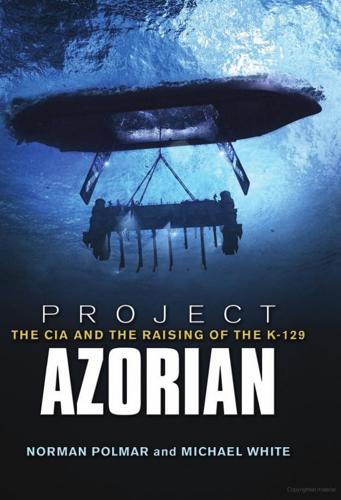
Project Azorian: The CIA and the Raising of the K-129
by
Norman Polmar
and
Michael White
Published 1 Dec 2010
We used to bill Hughes and in the white and unclassified or unsecured accounting department they didn’t know any difference. They thought they were billing Hughes ... at the same time out of another office [they] were billing the federal government. Hughes then would move the money to Global Marine and it juggled around. I never really understood exactly how it worked.19 Indeed, few people anywhere in the Byzantine empire of the Azorian project fully understood the convoluted methods of accounting—or the title and legal ownership of the lift ship. At the July 28, 1972, ExComm meeting the ever-increasing cost of the project was discussed, although the CIA has continued to classify the costs of the effort. 20 These increasing costs were caused by modifications to the ship, including the provision of a sewerage system to meet new maritime ecological standards, and a second, more-expensive subcontractor being brought into the pipe-string production to meet the tight delivery schedule.

Spies of No Country: Secret Lives at the Birth of Israel
by
Matti Friedman
Published 5 Mar 2019
The “more important things” were the lives of the native Jews of the Arab world. Now we take for granted that Jews had no future at all in the Arab world, but that wasn’t obvious right away. In Isaac’s hometown of Aleppo, for example, the Jews had survived the destruction of the Temple in Jerusalem by Rome in 70 CE, the birth of Christianity, the Byzantine Empire, the birth of Islam and the Arab conquest, dynasties of Arabs, Turks, and Mongols, and at least one devastating earthquake that destroyed much of the city. Why wouldn’t it survive the birth of the State of Israel? The complete eradication of Jews in Aleppo, or in the rest of the Arab world, didn’t seem possible.

Built: The Hidden Stories Behind Our Structures
by
Roma Agrawal
Published 8 Feb 2018
Romano; here courtesy of wikipedia; here © exaklaus-photos; here © Heritage Images; here © Heritage Images; here © Everett Collection Historical / Alamy Stock Photo; here © Fotosearch / Stinger; here © Stock Montage; here © Washington Imaging / Alamy Stock Photo; here © Popperfoto; here © North Wind Picture Archives / Alamy Stock Photo; here © Empato INDEX Page numbers in italic refer to the illustrations 3D printing here, here, here 9/11 here Abbey Mills Sewage Treatment Works, London here, here acanthus leaves here acceleration, of sway here Acropolis, Athens here Acton, London here, here Admiralty here adobe here aeroplanes here, here aggregates here, here air gaps, fire prevention here akasha here Akashi Kaikyo Bridge, Japan here Alexander the Great here Anatolia here, here Andronicus of Cyrrhus here Angel of Independence victory column, Mexico City here aqueducts here, here, here, here, here, here aquifers here, here Arabian Sea here arches aqueducts here, here, here Cattedrale di Santa Maria del Fiore, Florence here construction here, here corbelled arches here, here Derinkuyu here forces acting on here, here, here, here, here insulae here pointed arches here quadripartite arches here, here Roman here, here, here, here, here Archimedes here, here, here, here, here, here, here Arciniega, Claudio de here, here Aristotle here Armageddon (film) here Armstrong, Lord here Arnolfo di Cambio here Arthur, Chester here ash, volcanic here, here, here Assyria here Athens here Acropolis here Parthenon here Propylaea here ‘Tower of the Winds’ here, here atoms here Atrush, River here Attenborough, David here attenuation tanks, sewage here Augustus, Emperor here Avignon here Azerbaijan here Aztecs here, here, here, here, here, here Babylon here, here, here bacteria recycling waste water here, here ‘self-healing’ concrete here sewage treatment here baking here balance, cable-stayed bridges here balconies here Bank of China Tower, Hong Kong here Baroque architecture here basements, skyscrapers here, here Basilica Cistern, Istanbul here, here Basilica di Santa Croce, Florence here Batman Begins (film) here Battersea, London here Bazalgette, Joseph here, here, here, here, here beams here, here, here, here in ancient architecture here exoskeletons here flexing here, here, here, here shape here bearings cable-stayed bridges here earthquake protection here, here Beckton sewage treatment works, London here, here beehives here, here Beijing here Belgium here ‘the bends’ here Bénézet, Saint here Berbers here Bessemer, Anthony here Bessemer, Henry here, here Bessemer Process here, here, here Bilbao here biomimicry here, here, here birds here, here ‘Bird’s Nest’ National Stadium, Beijing here Black Sea here boats Falkirk Wheel here, here The Pontoon here, here, here sailing here Boeing aeroplanes here bolts, tie-systems here Bombay Stock Exchange here, here bombs here, here Bond, James here bonds, metals here bone, biomimicry here Bosque de Chapultepec, Mexico City here bouncy bridges here braces here bricks here, here arches here, here Cattedrale di Santa Maria del Fiore, Florence here, here concrete here Indus Valley Civilisation here Jericho here load-bearing structures here manufacture here mortar here, here Roman here, here, here tunnels here, here, here Victorian architecture here bridges here Akashi Kaikyo Bridge, Japan here Brooklyn Bridge, New York here, here, here, here, here cable-stayed bridges here, here, here, here construction here Falkirk Wheel here, here forces here Forth Bridge here foundations here, here, here, here Golden Gate Bridge, San Francisco here graphene here Ishibune Bridge here, here London Bridge here, here Millau Viaduct here, here movement joints here Northumbria University Footbridge, Newcastle here, here, here, here, here, here, here Old London Bridge here, here piers here, here Pont d’Avignon here The Pontoon here, here, here Quebec Bridge here, here, here reinforced concrete here resonance here, here, here Roman here rope bridges here silk bridge here, here span here steel here stress-ribbon bridges here, here suspension bridges here, here, here, here Sydney Harbour Bridge here, here, here and temperature here 3D printing here trusses here tuned mass dampers here, here Britain Beneath Your Feet (documentary) here British Association here British Empire here Bronze Age here Brooklyn Bridge, New York here, here, here, here, here Brooklyn Engineers’ Club here Brunel, Isambard here, here, here, here Brunel, Marc here, here, here, here Brunel, Mary here Brunel, Sophia here, here Brunelleschi, Filippo here, here, here, here, here, here burdock here Burj Khalifa, Dubai here, here, here Byzantine Empire here, here cables cable-stayed bridges here, here, here, here The Pontoon here stress-ribbon bridges here, here suspension bridges here, here, here caisson disease here, here caissons here, here, here, here calcite here calcium, in concrete here, here California here Caligula, Emperor here Callimachus here Cambridge Centre for Smart Infrastructure and Construction here Canada here canals aqueducts here Falkirk Wheel here, here Nineveh here locks here, here Singapore here cantilevers here carbon adding to iron here in steel here, here, here carbon dioxide, concrete-making here carbon fibres, elevators here cast iron here Castle of the Teutonic Order, Malbork here catenary curves here, here, here Cattedrale di Santa Maria del Fiore, Florence here, here, here, here causeways here caves, Derinkuyu here Celtic axes here, here cement here, here, here, here, here see also concrete centering here, here, here, here Centre Pompidou, Paris here, here, here, here ceramics here cesspits here Chatham Dockyard here, here Chicago here DeWitt-Chestnut apartment building here John Hancock Center here, here China here, here, here, here, here, here cholera epidemics here, here, here chuna mortar here Church here cisterns here, here clay in cement here clay mines here reinforcing tunnels with here tunnelling into here see also bricks cofferdams here, here, here collapses here, here columns here, here dis-proportionate collapse here after explosions here Old London Bridge here pontoon bridges here Quebec Bridge here, here resonance and here Ronan Point here, here, here, here, here, here Tacoma Narrows Bridge here Tay Bridge here World Trade Center New York here Colosseum, Rome here, here, here columns here, here, here, here Basilica Cistern, Istanbul here, here Corinthian columns here, here exoskeletons here failure here, here insulae here Pantheon, Rome here safety calculations here World Trade Center collapse here Commission of Sewers here compression here, here arches here, here, here, here beams here cable-stayed bridges here columns and here concrete here, here domes here, here load-bearing systems here skyscraper cores here suspension bridges here computer-aided design here concrete here aggregates here, here aqueducts here arches here beams here, here carbon dioxide emissions here columns here compression here, here cracking here, here, here curved shapes here domes here in fires here floors here, here, here making here moulds here Pantheon, Rome here, here, here, here piles here, here prefabrication here, here reinforced concrete here, here Roman here, here, here, here, here, here, here ‘self-healing’ concrete here in skyscrapers here, here, here, here, here, here, here sound proofing here steel reinforcement bars here strength here and tension here, here versatility here conduits, kariz (water system) here, here Constantine, Emperor here cooking here Cooper, Theodore here corbelled arches here, here core, skyscrapers here, here, here, here, here Corinth here Corinthian columns here, here Cornwall here Cow Court, Rotherhithe here cranes here, here, here, here, here, here Crassus, Marcus Licinius here Crimean War (1853–56) here Crossness Sewage Treatment Works, Erith, London here, here Crossrail, London here crows here Crystal Palace station, London here crystals, in metals here, here culverts here, here, here curved shapes here Czech Republic here dampers earthquake protection here, here tuned mass dampers here, here, here, here, here ultra-thin skyscrapers here Dardanelles here Darius I, King of Persia here Dark Ages here Darlington here Darwin’s bark spider here, here Delhi, Iron Pillar here, here, here, here Democritus here Derinkuyu here desalination plants here deserts, water systems here DeWitt-Chestnut apartment building, Chicago here Dhaka University here diagrids here, here disease here, here, here, here dis-proportionate collapse here diving bells here, here diving boards here, here domes Cattedrale di Santa Maria del Fiore, Florence here, here, here construction here forces acting on here, here Pantheon, Rome here, here, here, here, here Doric columns here drawbridges here Driver, Charles Henry here drones here Dubai, Burj Khalifa here, here, here ductility here, here earth four elements here see also soil earthquakes here, here, here, here East India Company here East London Railway Company here East River, New York here Eastgate Centre, Zimbabwe here Edge Moor Iron Company here Edinburgh here eggs here, here, here, here Egypt here, here, here, here, here Eiffel Tower, Paris here, here, here elasticity metals here spider silk here electricity cables here, here elements here elevators here, here, here, here, here, here embankments, rivers here Empire State Building, New York here, here end-bearing piles here, here energy earthquakes here making concrete here pulleys here Epicurus here epidemics here, here Erciyes here escalators here escape routes, skyscrapers here, here exoskeletons here, here, here, here, here, here, here exothermic reactions here explosions here, here, here, here external braced frames see exoskeletons Fa Hsien, A Record of Buddhistic Kingdoms here fairy chimneys here, here Falkirk here Falkirk Wheel here, here Ferris Wheels here fertilisers here, here fibre optic cables here filters, waste water here, here fires here, here concrete and here Great Fire of London here Great Fire of Rome here Old London Bridge here World Trade Center, New York here First World War here Fisac, Miguel here flexible membrane moulds here floating bridges here, here floods here, here, here floors here, here, here, here Florence Basilica di Santa Croce here Cattedrale di Santa Maria del Fiore here, here, here, here, here Palazzo Vecchio here Ponte Vecchio here forces in arches here, here and collapses here designing bridges here in domes here, here earthquakes here frame structures here, here gravity here, here load-bearing structures here, here piles here pulleys here wind here see also compression; tension formwork, concrete here Forth and Clyde Canal here Forth Bridge, Scotland here Forum, Rome here, here fossils here foundations here bridges here, here, here, here, here building on soft ground here, here insulae here on piles here Roman here, here tunnels here four elements here Four National Taps (Singapore) here frame structures here, here exoskeletons here, here, here, here, here, here, here parts of here tie-systems here France here, here, here Franchini, Gianfranco here Fratres Pontifices here frequency here, here fresh water here friction arches here, here piles here, here weight and here From Russia with Love (film) here furnaces here, here, here Gardon, River here, here Garuda here gas explosions here geometry, irregular here Georgetown Visitation Convent here, here Germany here, here, here ‘The Gherkin’, London here, here, here, here Giotto here, here Giza, Great Pyramid here, here Glasgow here glass here, here, here, here Goh Chok Tong here Golden Gate Bridge, San Francisco here Gonabad here Gothic architecture here grape skins here graphene here, here gravity here, here, here Great Fire of London (1666) here Great Fire of Rome (AD 64) here Great North Run here, here Great Pyramid of Giza here, here ‘Great Stink’, London (1858) here Great Wall of China here, here Greece here, here, here, here ‘ground granulated blast furnace slag’ (GGBS) here Guggenheim Museum, Bilbao here guns, Crimean War here Gupta dynasty here Gyllius, Petrus here gypsum here, here, here Hadrian, Emperor here Harappa here, here Harris, Andres here Hasan here Haughwout, E.V. & Co. here, here healing here Hearst Tower, Manhattan here, here Heartlands Project, Cornwall here Hellespont here, here Heraclitus of Ephesus here Herodotus, The Histories here herringbone pattern, brick-laying here, here Hewitt, Abram here Heydar Aliyev Center, Azerbaijan here Hiero II, King here Hinduism here, here Hittites here Hoare, Edward here Hodge, Ivy here, here Hong Kong here, here Hood Canal Bridge here Horologion of Andronikos Kyrrhestes, Athens here, here horse hair, reinforcing plaster here hot-working metal here, here House of Commons, London here houses frame structures here, here insulae (apartment buildings) here, here load-bearing structures here, here on Old London Bridge here Huitzilopochtli here huts, mud here, here, here hydration here, here hydraulics, earthquake protection here Iltutmish, tomb of, Delhi here Imperial College London here India here, here, here, here, here, here Indus Valley Civilisation here, here Industrial Revolution here Institute of Making here Institution of Structural Engineers here insulae (apartment buildings) here, here intumescent paint here Iran (Persia) here, here Iraq here, here iron here cast iron here frame structures here furnaces here Iron Pillar, Delhi here, here, here, here reinforced concrete here Roman here rust here strengthening here suspension bridges here wrought iron here see also steel Iron Age here iron oxide here irregular geometry here Ishibune Bridge, Japan here, here Islamic architecture here, here Israel here Istanbul, Basilica Cistern here, here Italy here, here, here jacks, tightening cables here Japan here, here, here, here Jeddah Tower here Jenga here Jericho here Jerwan here jibs, cranes here John Hancock Center, Chicago here, here Johor River here Jordan here Jordan, River here Justinian, Emperor here kariz (water system) here, here keystones, arches here, here Khan, Fazlur here, here, here kilns, brick here, here, here Kodumanal here Kuala Lumpur here, here, here Landesgartenschau Exhibition Hall, Stuttgart here lasers here lava, volcanic here, here Leaning Tower of Pisa here, here Lebanon here Lee Kuan Yew here Leeds University here LEGO here Leonardo da Vinci here, here Levant here lime here lime mortar here limestone here, here, here Lincoln Cathedral here Lincoln’s Inn, London here loads on arches here building on soft ground here load-bearing structures here, here patterned loading here piles here preventing collapses here World Trade Center collapse here, here, here locks, canals here, here Loki here London here, here Crossrail here Crystal Palace station here Great Fire here London Overground here New London Bridge here, here Old London Bridge here, here Ronan Point, Canning Town here, here, here, here, here, here 30 St Mary Axe (The Gherkin) here, here, here, here St Pancras Renaissance Hotel here sewers here, here, here, here The Shard here, here, here, here, here, here, here, here, here, here, here Tower of London here Tube here, here, here, here tunnels here, here, here Los Angeles here McLean, Thomas here McLure, Norman here Madagascar here Madrid here, here Malaysia here, here, here, here, here Malbork here Maltesers here Manhattan here, here, here, here maps, wind here Marathon, Battle of (490 BC) here Marmara here master builders here materials choice of here science of here see also concrete, steel etc mega-skyscrapers here, here Melendiz Daglari here membrane engineering here Menander here Mendeleev, Dmitri here Merdeka Tower, Kuala Lumpur here Mesopotamia here, here metal here bonds here ductility here elasticity here molecular structure here see also iron; steel Metropolitan Board of Works, London here Metropolitan Cathedral, Mexico City here, here, here Metropolitan Commission of Sewers, London here Mexico City here, here Angel of Independence victory column here Metropolitan Cathedral here, here, here Torre Latinoamericana here Torre Mayor skyscraper here, here mica here microfiltration here Middle Ages here Middle East here Millau Viaduct here, here Miller, Abraham here Milton Keynes here Milwaukee Art Museum here minarets here mines, clay here Miodownik, Mark here Mohenjo-daro here, here molecular structure, metal here Monier, Joseph here Moon here Morocco here mortars here, here, here, here moulds, for concrete here movement joints, bridges here mud mud huts here, here, here reinforcing with straw here multi-use buildings here Mumbai here, here, here MUPAG Rehabilitation Center, Madrid here muqanni here Murphy, Senator Henry here Murrow Memorial Bridge here mythology here, here Namazu here Napoleon Bonaparte here National Museum of Anthropology, Mexico City here National Taps, Singapore here Native Americans here Nature, biomimicry here, here, here navvies here Neolithic man here Nero, Emperor here, here New York here, here, here Brooklyn Bridge here, here, here, here, here Empire State Building here, here Hearst Tower here, here 432 Park Avenue here World Trade Center here, here New York Bridge Company here New York Herald here New York Star here New York World’s Fair (1853) here NEWater here Newcastle, Northumbria University Footbridge here, here, here, here, here, here, here Newton, Isaac here, here third law of motion here, here, here newtons here Niederfinow Boat Lift here night soil trade here Nightingale, Florence here Nineveh here Norse mythology here Northumbria University Footbridge, Newcastle here, here, here, here, here, here, here octopuses here oculus (opening) here, here, here, here Old London Bridge here, here opus caementicium here Osaka here osmosis here, here, here Otis, Elisha here, here, here, here, here, here Ottoman Empire here Ovando-Shelley Dr Efraín here, here Oxford University here oxidation here oxygen, Bessemer Process here paint, intumescent here Pakistan here Palazzo Vecchio, Florence here Palm Jumeirah, Dubai here Pantheon, Rome here, here, here, here, here parabolic cables here Paris here Centre Pompidou here, here, here, here Eiffel Tower here, here, here Paris Exposition (1867) here 432 Park Avenue, Manhattan here Parker, John here, here Parthenon, Athens here patterned loading here pendulums earthquake protection here, here, here, here Metropolitan Cathedral, Mexico City here, here penthouses here Percival, Lt-General Arthur here periodic table here Persia here, here Peter of Colechurch here Petronas Towers, Kuala Lumpur here, here Philadelphia here Phoenicians here phosphorus here, here Piano, Renzo here piers, bridges here, here piledrivers here, here piles here, here, here, here, here, here Pillar, Iron (Delhi) here, here, here, here pipes, robots checking here Pisa, Leaning Tower of here, here plaster here, here plaster of Paris here Plataea here, here Pliny the Elder, Historia Naturalis here Plutarch’s Lives here pneumatic caissons here polyethylene (PE) formwork here polypropylene (PP) formwork here polystyrene blocks, formwork here polyvinylidene fluoride here Pompeii here, here Pompidou Centre, Paris here, here, here, here Pont d’Avignon here Pont du Gard aqueduct here, here Ponte Vecchio, Florence here The Pontoon here, here, here potholes here pozzolana here, here Pratt trusses here prefabrication here, here prehistoric buildings here Propylaea, Athens here Public Utilities Board, Singapore here pulleys here, here, here, here, here pumping stations, sewers here, here Purnell, Phil here pyramids here, here, here, here, here, here qanat (water system) here Quadracci Pavilion, Milwaukee Art Museum here quadripartite arches here, here quartz here Quebec Bridge here, here, here Quebec City here Qutb complex, Delhi here, here Rael, Ronald here Raffles, Sir Stamford here raft foundations here, here railways here, here, here, here rainwater here, here, here, here recycling waste water here Regent’s Canal, London here reinforced concrete here, here Renaissance here, here Rennie, John here repairs, future possibilities here reservoirs here, here resonance here, here, here, here, here reverse osmosis here, here, here rice here Richard the Raker here rivers untreated sewage in here, here, here, here see also bridges road repairs here robots here, here, here rocks, formation of clay here Roebling, Emily Warren here, here, here, here, here, here, here Roebling, John Augustus here, here, here, here Roebling, Washington here, here, here Rogers, Richard here Romans here aqueducts here, here, here arches here, here, here, here, here Basilica Cistern, Istanbul here, here bricks here, here, here bridges here, here columns here concrete here, here, here, here, here, here, here cranes here, here, here fires here foundations here, here insulae (apartment buildings) here, here iron here on materials here mortars here ‘Tower of the Winds’, Athens here, here Rome here, here Colosseum here, here, here Forum here, here Pantheon here, here, here, here, here Ronan Point, Canning Town, London here, here, here, here, here, here rope bridges here, here ropes, pulleys here rotating bridges here, here Rotherhithe, London here rubber bands here, here rubber bearings here, here rust here, here safety, skyscrapers here, here sailing here Saint Lawrence River here, here 30 St Mary Axe, London (The Gherkin) here, here, here, here St Mary’s Church, Rotherhithe, London here St Mary’s Church, Stralsund here St Pancras Renaissance Hotel, London here Salamis, Battle of (480 BC) here salty water desalination plants here reverse osmosis here, here, here San Francisco here sand, tunnelling into here sanitation here, here, here, here Saudi Arabia here Scotland Falkirk Wheel here, here Forth Bridge here Tay Bridge collapse here Scott, George Gilbert here sea urchins here Second World War here, here, here, here sedimentary rocks here ‘self-healing’ concrete here Sennacherib, King here sewers here, here, here, here Shanghai here The Shard, London here, here, here, here, here, here, here, here, here, here, here Sheffield here Sherlock Holmes (film) here The Shield (tunnel-boring machine) here, here, here Shinto here ships see boats shipworms here, here, here shock absorbers, earthquake protection here silicates, in concrete here silicon here, here silk bridge here, here Singapore here skulls, birds here skyscrapers basements here, here Burj Khalifa, Dubai here, here, here concrete in here, here, here, here, here, here, here core here, here, here, here, here elevators here, here escape routes here, here exoskeletons here, here, here, here, here, here, here explosions in here, here fires here first skyscrapers here height here, here, here mega-skyscrapers here, here piles here prefabrication here, here The Shard, London here, here, here, here, here, here, here, here, here, here, here slenderness ratios here stability systems here, here steel in here, here substructure here sway here, here, here, here and winds here slenderness ratios, skyscrapers here Snow, Dr John here Soho, London here soils piles in here subsidence here under London here water table here Spain here Spanish Pavilion, World Expo (2010) here Sparta here Spartacus here spiders, silk bridge here, here springs, wagon here, here stability systems, skyscrapers here, here stairs here, here starlings (artificial islands) here, here steel here beams here, here, here, here Bessemer Process here, here bridges here columns here core of skyscraper here, here, here, here ductility here exoskeletons here, here in fires here, here, here frame structures here hot-working here, here piles here reinforcing concrete with here, here, here rust here thermal expansion here trusses here waste materials here Stewart, James here stone bridge-building here constructing arches here load-bearing structures here Stralsund here Strasbourg Cathedral here straw, reinforcing mud with here Strépy-Thieu boat lift here stress-ribbon bridges here, here struts here Stuttgart here subsidence here, here substructure piles here, here skyscrapers here suspension bridges here, here, here, here sway, skyscrapers here, here, here, here Sydney Harbour Bridge here, here, here Syria here, here Tacoma Narrows Bridge, Washington here Taipei 101 tower here, here, here, here Taiwan here Taj Mahal, Agra here Tamil Nadu here Tarn valley here Tay Bridge here Tebitu, River here temperature bridges and here reinforced concrete and here Tenochtitlan here, here tension here, here beams here brick structures here cable-stayed bridges here, here, here concrete and here, here domes here, here metals here reinforced concrete here, here skyscraper cores here stress-ribbon bridges here suspension bridges here Teotihuacan here Teredo navalis (shipworm) here termite mounds here, here Texcoco, Lake here, here Thales here Thames, River Bazalgette’s sewers here, here New London Bridge here, here Old London Bridge here, here sewage in here Thames Tideway Tunnel here, here, here Thames Tunnel Company here, here, here thermal coefficients, reinforced concrete here Thrace here, here Three Gorges Dam here tie-systems here timber see wood toilets here, here, here Tokugawa shogunate here Tokyo here, here top-down construction method here, here, here Tornado Tower, Doha here Torre Latinoamericana, Mexico City here Torre Mayor skyscraper, Mexico City here, here toughness, spider silk here Tower Hamlets, London here Tower of London here towers cable-stayed bridges here, here suspension bridges here, here ‘Tower of the Winds’, Athens here, here and winds here see also skyscrapers treadwheels here Treasury (UK) here trees here, here, here, here Trevithick, Richard here triangles, trusses here, here, here Triton here trusses here, here, here Tuas here Tube, London here, here, here, here tubular system, exoskeletons here tuff here tuned mass dampers here, here, here, here, here tuning forks here tunnels kariz (water system) here, here Thames Tideway Tunnel here, here, here Thames Tunnel here, here, here, here tunnel boring machines (TBMs) here, here Turkey here, here, here, here turtles here, here typhoons here UN-Habitat here underground railways here, here, here, here underground structures here underwater structures here, here Union Canal, Scotland here United States Supreme Court Building, Washington here University of California, Berkeley here Urban VIII, Pope here Utica here vaults, quadripartite here, here Vauxhall Bridge, London here, here Velcro here ventilation systems here, here, here, here Vertigo (film) here Vesuvius, Mount here, here vibrations bridges here earthquakes here frequency here Victorian architecture here Vierendeel trusses here Vishnu, Lord here Vitruvius Pollio, Marcus here, here De Architectura here, here, here, here, here volcanoes here wagon springs here, here walls, wattle and daub here Wapping, London here War Office (British) here Warren, Gouverneur K. here Warren trusses here waste disposal here, here, here, here water here aqueducts here, here, here aquifers here, here bridge foundations here, here, here canals here, here cisterns here, here cofferdams here, here concrete-making here, here desalination plants here floods here inJapan here kariz here, here in London here, here osmosis here, here, here rainwater here, here, here, here recycling here reservoirs here, here in Singapore here waste water here, here, here, here water pipes here, here water table here wattle and daub here Wayss, Gustav Adolf here webs, spiders’ here, here weight and friction here gravity and here pulleys here weirs here wells here, here Westminster, London here Wheel, Falkirk here, here Wikipedia here Willis, Bruce here wind here, here wind maps here wind tunnels here, here windlasses here, here, here windows, insulae here, here women engineers here, here, here wood bridges here centering here, here, here early houses here, here formwork here piles here, here, here shipworms here wattle and daub here Woolwich Dockyard here World Expo (2010) here World Health Organization here World Trade Center, New York here, here World’s Fair, New York (1853) here wrought iron here Wuhan Greenland Centre here Xerxes, King of Persia here, here Zimbabwe here A NOTE ON THE AUTHOR Roma Agrawal is a structural engineer who builds big.
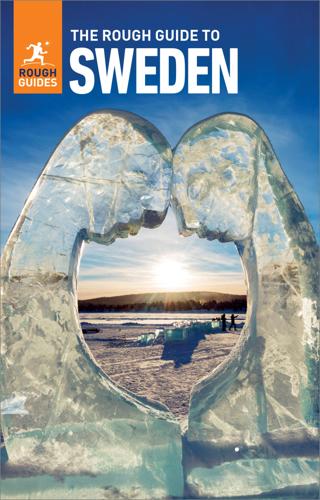
The Rough Guide to Sweden (Travel Guide eBook)
by
Rough Guides
Published 1 Nov 2019
BIRKA The island of Björkö (the name means “island of birches”), in Lake Mälaren, is the site of Sweden’s oldest town, BIRKA, which was founded around 750AD and is now a UNESCO World Heritage site. For over two centuries, Birka was the most important Viking trading centre in the northern countries, benefiting from its strategic location near the mouth of Lake Mälaren on the portage route to Russia and the Byzantine Empire. Today, a visit here is not only an opportunity to get to grips with Sweden’s Viking heritage, thanks to the site’s excellent museum, but the boat trip to the island also gives you a chance to explore the tranquil waters of Lake Mälaren. Brief history After Birka was founded in the mid-eighth century, tradesmen and merchants were quick to take advantage of the prosperous and rapidly expanding village, and the population soon grew to around one thousand.
…
Sweden being located on the eastern part of the Scandinavian peninsula, the raiders largely turned their attention further eastwards, in the knowledge that the Svear had already reached the Baltic. By the ninth century, the trade routes were well established, with Swedes reaching the Black and Caspian seas and making valuable trading contact with the Byzantine Empire. Although more commercially inclined than their Danish and Norwegian counterparts, Swedish Vikings were quick to use force if profits were slow to materialize. From 860 onwards Greek and Muslim records relate a series of raids across the Black Sea against Byzantium, and across the Caspian into northeast Iran.
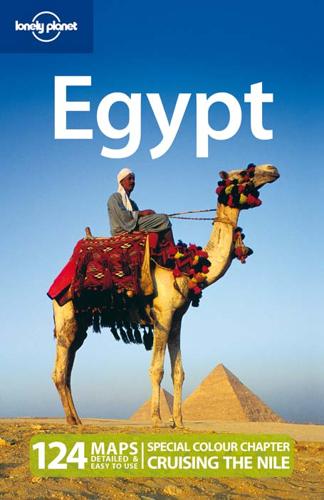
Egypt
by
Matthew Firestone
Published 13 Oct 2010
Refusing to accept that Jesus had one person but two natures, which again seemed a revival of polytheism, the Egyptians split with the rest of Christianity, their patriarch was excommunicated and soon after Alexandria was sacked. Yet in spite of the religious split, Egypt was still part of the Byzantine Empire, ruled by a foreign governor, and its fortunes were tied to the empire. This caused ever-greater tension, which peaked in the reign of Emperor Justinian (528–565). Alexandrians stoned the emperor’s governor, who retaliated by sending his army to punish the people. In 629, a messenger travelled to the emperor in Byzantium from Arabia.
…
St Mark, companion of the apostles Paul and Peter, began preaching Christianity in Egypt around AD 45 and although it did not become the official religion of the country until the 4th century, Egypt was one of the first countries to embrace the new faith. Egyptian Christians split from the Orthodox Church of the Eastern (or Byzantine) Empire, of which Egypt was then a part, after the main body of the church described Christ as both human and divine. Dioscurus, the patriarch of Alexandria, refused to accept this description, and embraced the theory that Christ is totally absorbed by his divinity and that it is blasphemous to consider him human.
…
After establishing himself in a cave on a remote mountain, his disciples formed a loose community at its base, and thus was born the first Christian monastery. The number of Anthony’s followers grew rapidly, and within decades of his death, nearly every town in Egypt was surrounded by hermitages. Soon after, the whole Byzantine Empire was alive with monastic fervour, which by the next century had spread throughout Italy and France. It is ironic that, for all his influence, Anthony spent his life seeking to escape others. When he died at the advanced age of 105, his sole wish for solitude was finally respected and the location of his grave became a closely guarded secret
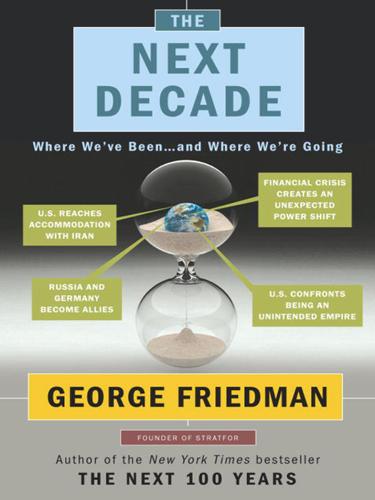
The Next Decade: Where We've Been . . . And Where We're Going
by
George Friedman
Published 25 Jan 2011
If there is any place where finding a coherent path that incorporates both strategic and moral interests is more difficult, I can’t think of one. But to truly understand this complex state of affairs, we must go back in history. Given the antiquity of the Middle East, it is fortunate that understanding its contemporary political geography requires going back only as far as the thirteenth century. This was the time when the Byzantine Empire was fading and control of the areas bordering the Black Sea and the eastern Mediterranean shifted to the Ottoman Turks. By 1453 the Turks had conquered Constantinople, and by the sixteenth century they were in command of most of the territory that had once fallen to Alexander the Great. Most of North Africa, Greece, and the Balkans, as well as the area along the eastern shore of the Mediterranean, was under Ottoman control from the time of Columbus to the twentieth century.
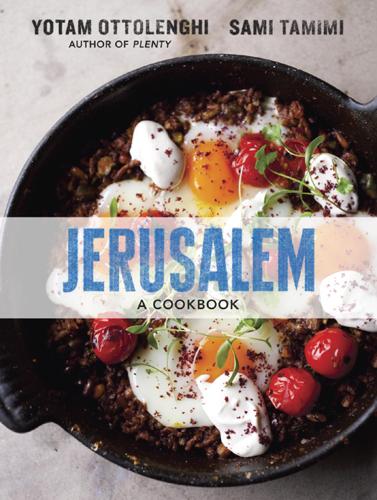
Jerusalem: A Cookbook
by
Yotam Ottolenghi
and
Sami Tamimi
Published 15 Oct 2012
Alongside the slow development of the nascent religion, the Roman Jewish conflict continued to simmer, and came to a head in another revolt, in AD 132, after which Jews were banned from the city—bar one day a year—for many centuries. The city was renamed Aelia Capitolina, and with the Christianization of the Byzantine Empire it was adorned with Christian churches, and became a veritable Christian city, devoid of any Jewish presence. This, and similar periods, are considered by Palestinian historians as proof that not only the Jews, but also the Palestinians (many of whom are Christian), have a long-lasting historical claim on the city.
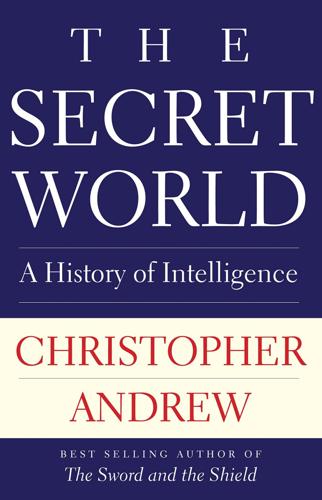
The Secret World: A History of Intelligence
by
Christopher Andrew
Published 27 Jun 2018
Ibid., 5.319. 19. http://www.hadithcollection.com/sahihbukhari/85-/3499-sahih-bukhari-volume-004-book-052-hadith-number-268.html. 20. Al-Asmari, ‘Arab/ Islamic Concept of Intelligence’, pp. 112–13. 21. Quran 17:81. 22. Quran 9:25. 23. Luttwak, Grand Strategy of the Byzantine Empire, loc. 3871. 24. Dennis (trans. and ed.), Maurice’s Strategikon, book XI. 25. Luttwak, Grand Strategy of the Byzantine Empire, loc. 889. 26. Ibid., loc. 2708. 27. Sarris, Empires of Faith, loc. 6011. 28. Akram, Sword of Allah, ch. 35. 29. Ibid., ch. 30. 30. Ibid., ch. 34. 31. Kennedy, Great Arab Conquests, p. 121. 32. Al Qaeda training manual, lesson 11, espionage (Uk/ Bm-76 Translation); www.fas.org/irp/world/para/manualpart1_3.pdf. 33. http://www.defence.pk/forums/military-history-strategy/127922-quotes-khalid-bin-al-walid.html#ixzz2XaVp2kRc, accessed 29 June 2013. 34.
…
Intelligence and Policy before the Second World War’, Intelligence and National Security, vol. 6 (1991), no. 4 Lowry, Bullitt, Armistice 1918 (Kent, Ohio/London: Kent State University Press, 1996) Lowry, Carolyn S., ‘At What Cost? Spanish Neutrality in the First World War’ (University of South Florida, 2009), MA thesis; http://scholarcommons.usf.edu/etd/2072 Luttwak, Edward N., The Grand Strategy of the Byzantine Empire (Cambridge, Mass.: Harvard University Press, 2009) Luvaas, Jay, Frederick the Great on the Art of War (New York: Free Press, 1966) —, ‘Lee at Gettysburg: A General without Intelligence’, Intelligence and National Security, vol. 5 (1990), no. 2 —, ‘The Role of Intelligence in the Chancellorsville Campaign, April–May, 1863’, Intelligence and National Security, vol. 5 (1990), no. 2 Lycett, Andrew, Ian Fleming (London: Weidenfeld & Nicolson, 1995) Lynn, John A., Wars of Louis XIV, 1664–1714 (London: Longman, 1999) Lyons, Jonathan, The House of Wisdom: How the Arabs Transformed Western Civilization (London: Bloomsbury, 2009) MacInnes, A.
…
On MI5 membership statistics, see Andrew, Defence of the Realm, appendix 2. 39. Beard, SPQR, p. 487. 40. Goldsworthy, Pax Romana, loc. 6627, 6678. 41. Lane Fox, Pagans and Christians, pp. 626, 666. 42. Stoneman, The Ancient Oracles, ch. 13. 43. Kelly, Attila the Hun, ch. 1. 44. Luttwak, Grand Strategy of the Byzantine Empire, loc. 5809. The quotation is from the eleventh-century Strategikon by Kekaumenos (sections 32–3), but sums up the conclusions of earlier military manuals going back to the Strategikon of the Emperor Maurikios (582–602). 45. Ammianus Marcellinus, Res Gestae a fine Corneli Taciti, 31.2.1–11. Loeb translation: http://penelope.uchicago.edu.
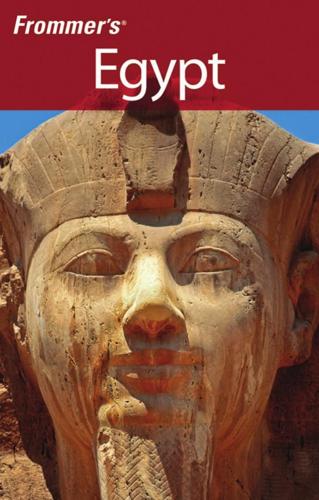
Frommer's Egypt
by
Matthew Carrington
Published 8 Sep 2008
Ptolemy I is left to run Egypt in Alexander’s absence, makes himself ruler, ■ 295 comfortable position in Antioch (now Antakya in southern Turkey) to the thoroughly unpleasant Egyptian desert outpost of Kharga for falling afoul of the same need for doctrinal uniformity. In any event, the rifts caused by these disputes were never properly closed, and by the 7th century, Christian Egypt was in no position to close ranks with the Byzantine Empire and present a unified front against a small army that arrived from the Arabian peninsular under the banner of a new prophet: Mohamed. In late 639, a small army crossed the Sinai Peninsula under Amr ibn al ‘As, a Muslim convert from a tribe near Mecca in what is now Saudi Arabia. Fresh from victories in Palestine and Syria, the men had little difficulty reaching massive fortifications of Babylon (now in Coptic Cairo) by the fall of the next year.
…
Fresh from victories in Palestine and Syria, the men had little difficulty reaching massive fortifications of Babylon (now in Coptic Cairo) by the fall of the next year. By the spring, the country was theirs. There are different perspectives on the ease with which this band of 4,000 men, which even with reinforcements only reached about 15,000 by the end of the campaign, managed to conquer one of the richest provinces of the Byzantine Empire. But, a population that was not inimical to the invaders (who seemed to offer the Monophysite Copts a greater degree of religious tolerance than their nominal co-religionists had) combined and establishes a dynasty after Alexander’s death. ■ 51–30 B.C. Cleopatra VII takes part in Roman politics and one of the most famous affairs of all time before committing suicide. ■ A.D. 30–640 During the Roman Period, Egypt is the breadbasket of Rome; Christianity flourishes. ■ 640–969 First Islamic Period.

The End of Big: How the Internet Makes David the New Goliath
by
Nicco Mele
Published 14 Apr 2013
Then, at the dawn of the Renaissance, they came to Italy and taught ancient Greek literature to the first Italian humanists, who were only then beginning to hunger for knowledge of Greco-Roman antiquity. Were it not for this small but dynamic group of Byzantine humanist teachers, ancient Greek literature might have been lost forever when the Turks conquered Constantinople in 1453.46 If the monasteries of the Byzantine Empire helped to preserve and protect a crucial storehouse of human knowledge during Western Europe’s Dark Ages, I begin to wonder which institutions might preserve our most precious thinking and literature. It’s almost as if authority has become so unreal in peoples’ minds that “making shit up” doesn’t seem like such a cardinal sin, a violation of trust, as it used to.

The Journey of Humanity: The Origins of Wealth and Inequality
by
Oded Galor
Published 22 Mar 2022
A B C D E F G H I J K L M N O P Q R S T U V W X Y Z A Abbasid Caliphate (750–1258), 176, 184 abortion, 87–8 Aeneid (Virgil), 59 aeroplanes, 111 Africa agriculture in, 21, 179–80, 188–9 colonialism in, 157, 158, 187 diversity in, 220–32 emigration from, 127 fertility rates in, 112 Homo sapiens emergence in, 5, 18–20, 30, 119, 120, 124, 218–32, 221, 222, 237 income per capita in, 106 industrialisation in, 241 institutions in, 157, 187 livestock in, 179–80 living standards in, 7 malaria in, 180 marriage in, 87 Neolithic Revolution in, 202, 203, 204, 207 poverty in, 113 slave trade in, 173–4, 187 trade in, 136 trust in, 173–4 tsetse flies, 180 African Americans, 130–31, 155, 156, 215–17 Afrobarometer 173–4 Age of Enlightenment (c.1637–1800), 27, 58, 66, 170–71, 182, 212 agriculture climate and, 13, 15, 20, 21, 25, 155, 181, 186–7, 193–5, 203–4 comparative advantage in, 181, 211–12, 237 cooperation and, 168–9 diseases and, 8, 180 education and, 77, 81–3, 109, 140 future orientation and, 187–90, 213 gender roles and, 191–2 Green Revolution, 111, 117 hydraulic hypothesis, 184 innovations in, 61, 64, 181 institutions and, 208–10 irrigation, 22, 23, 120, 141–2, 160, 168, 184, 190 labour productivity, 131–2 livestock, 179–80, 203 Neolithic Revolution, see Neolithic Revolution soil and, 8, 21, 30, 141, 155, 186, 187, 191, 198, 204, 209, 236 Akkadian Empire (c.2334–2154 BCE), 23 algebra, 69 altitude, 51 American Civil War (1861–5), 62 Amsterdam, Netherlands, 40 Anatolia, 23, 40, 206 Angola, 154 antibiotics, 111 Aquinas, Thomas, 163 Arabian Nights, 59 Arctic region, 195 Argentina, 77, 154 Arkwright, Richard, 59, 72 Arrow, Kenneth, 172 art, 20, 22, 58, 62, 120, 216 Asia agriculture in, 188, 192 East–West orientation, 203 fertility rates in, 112 income per capita in, 106 industrialisation in, 241 living standards in, 7 marriage in, 87 Neolithic Revolution in, 202, 203 trade in, 136 see also Middle East Assyrian Empire (2500–609 BCE), 40 Athens, 40 Atlantic triangular trade, 136 Australia, 49, 106, 153, 154, 157 Austronesians, 206–7 automobiles, 61, 97, 101, 107, 111 Aztec civilisation, 154, 205 B Bab-el-Mandeb Strait, 19 Babylonian Empire (1895–539 BCE), 40 Bandy, Robert, 217 Banfield, Edward, 172 Bantu people, 207 Battle of the Books, The (Swift), 169 Belgium, 37, 64, 65, 72, 75, 138 Bell, Alexander Graham, 104 Berry, Charles ‘Chuck’, 216 Bessemer, Henry, 60 bicycles, 61 bifurcation theory, 46 Bill of Rights (1689), 148 biodiversity, 9, 29, 33, 202, 210, 236 Black Death (1346–53), 34–5, 36, 149–50, 159, 212 Blake, William, 57 Boas, Franz, 168 Bolivia, 131, 154, 229 Boserup, Ester, 191 brain, 14–17 Brazil, 103, 154, 216 Brexit (2016–20), 110 Brown, Moses, 72 Brown University, 1, 72, 239 Buddhism, 63 Byzantine Empire (395–1453), 48 C Caesar, Julius, 184 caloric yields, 189 Calvinism, 164 Cameroon, 207 Canada, 77, 108, 138, 154 canals, 61 Card, Addie, 78 cargo cults, 233–4 Caribbean, 113, 154, 155, 157, 186 Carthage, 23 Cartwright, Edmund, 59 Çatalhöyük, 23, 40 Catholicism, 148, 163, 217 Central America, see under Meso-America central heating, 101 centralised civilisations, 182–7 cephalopods, 14 de Cervantes, Miguel, 59 Chaplin, Charles, 105 Charlemagne, Emperor of the Romans, 184 Charles II, King of England and Scotland, 148 chemistry, 61, 69 Chicago, Illinois, 60 childbirth, 2, 41, 83 children education of, 8, 52–5, 62–83, 88–91, 94–8, 122, 129, 175 labour of, 57, 67, 78–83, 89, 93, 99, 122 mortality of, 2, 29, 41, 57, 89, 98, 121, 127, 128, 180 quantity–quality trade-off, 52–5, 88–91 Chile, 77, 146, 154 China agricultural productivity, 131 Black Death in (c. 1331–54), 34 centralised authority in, 182, 183, 184–6 coal mining in, 181 collectivism in, 190 dictatorship in, 146 diversity and, 226–9 education in, 64, 91 fertility rates in, 91 geography of, 182 growth in, 115 gunpowder, development of, 47, 61 income per capita in, 210 industrial regions, 108 naval exploration, 213 Neolithic Revolution in, 3, 21, 23, 122, 206, 210 New World crops in, 37–9 one-child policy (1979–2015), 112 Opium War, First (1839–42), 61 poverty in, 113, 114 printing, development of, 48 technological development in, 121, 176, 184 writing development of, 24 cholera, 205 Christianity, 63 Catholicism, 148, 163, 217 Protestantism, 63, 90, 163–4, 175, 184, 217 wealth, views on, 163 civil law systems, 154 civil liberties, 127 civilisations, dawn of, 22–5, 208–10, 236 class conflict, 73, 74, 78 climate, 13, 15, 20, 21, 25, 155, 181, 186–7, 193–5, 203–4 climate change, 116–18, 123, 241 coal mining, 59, 60, 71, 181 Cobbett, William, 86 Collapse (Diamond), 33 Colombia, 154 colonialism, 135–7, 140, 147, 152–9, 168, 175, 205, 235 Columbia, 103 Columbian Exchange, 35–9, 94–6, 195 Columbus, Christopher, 35, 47, 182–3 Comenius, John Amos, 65 common law systems, 154 Communist Manifesto, The (Marx and Engels), 62, 73 comparative advantage, 71, 137, 140, 141, 211–12 competition, 182–6, 198 concrete, 61 de Condorcet, Nicolas, 27 Confucianism, 63 consumption vs investment strategy, 188–90, 213 contraception, 85–6, 118 convergent evolution, 14–15 cooking, 15, 17 cooperation, 8, 168–9, 175, 236 Copernicus, Nicolaus, 44 Corinth, 40 Cortés, Hernán, 205 Covid-19 pandemic, 115, 130, 240 Crime and Punishment (Dostoevsky), 59 critical junctures, 212 Crompton, Samuel, 59 Cuba, 216 Cuitláhuac, Emperor of Tenochtitlan, 205 cultural traits, 51–5, 141, 161, 163–77, 187–98, 213 collectivism, 190–91 cooperation, 8, 168–9, 175, 236 entrepreneurship, 52, 72, 165, 182, 184, 193, 197 future orientation, 52, 141, 165, 169–71, 175, 187–90, 197–8, 213, 238 gender equality, see gender equality geography and, 181, 187–90, 208–10, 236 growth and, 169–71 human capital investment, 52–5, 80, 88–91, 94–8, 122, 165, 175 immigration and, 174 individualism, 165, 176, 190–91, 197 institutions and, 182 language and, 195–8 loss aversion, 192–5 prosperity and, 174–7 Protestant ethic, 164–5, 175, 184 racism and, 168 social hierarchies, 197 survival advantage of, 168 technology and, 52–5, 121, 169–70, 176, 231 transmission of, 171 trust, 8, 165, 172–4, 175, 236 Cyprus, 40 D Dante, 59 Darby, Abraham, 60 Darwin, Charles, 27, 50 decline of generations, 169 deindustrialisation, 107–10, 139, 140 democracy, 78, 151–2, 155, 160, 172–3 social capital and, 172–3 demographic dividend, 117 demographic transition, 6, 85–100, 106, 112–18, 175, 176, 198, 240 human capital and, 88–91, 112, 175, 211 Denmark, 104 Detroit, Michigan, 107–8, 217 Diamond, Jared, 21, 29, 32–3, 202, 203 Dickens, Charles, 57 dictatorships, 146 see also extractive institutions diet, 2, 25, 28, 30, 33, 95, 101, 107 diphtheria, 102 diseases, 2, 8, 40, 94, 102, 204–5, 236 agriculture and, 8, 180 Black Death (1346–53), 34–5, 36, 149–50, 159, 212 colonialism and, 156–7 germ theory, 102 immunity to, 51, 205 malaria, 156, 180, 205 sleeping sickness, 180 Spanish flu pandemic (1918–20), 106, 240 vaccinations, 102 diversity, 6, 9, 19, 142, 160, 215–32, 227–8, 237 innovation and, 9, 215–16, 226–30 measurement of, 223–4 origins of, 219–22 prosperity and, 217–18, 222, 224–32 Divine Comedy (Dante), 59 division of labour, 22, 191–2, 196–7, 204 Domino, Fats, 216 Don Quixote (Cervantes), 59 Dostoevsky, Fyodor, 59 double-entry bookkeeping, 65 E East Germany (1949–90), 144 Easter Island, 32, 207 economic ice age, 39–41 Edison, Thomas, 60, 104 Education Act (UK, 1902), 76 education, 8, 52–5, 62–83, 88–98, 99, 118, 129, 238 agriculture and, 77, 81–3, 109, 140 child labour and, 57, 67, 78–83, 122 fertility rates and, 89–98, 99, 113, 122 human capital, see human capital industrialisation and, 64, 67–83, 89, 99, 109, 140 inequality and, 127, 140 investment in, 52–5, 80, 88–91, 94–8, 122, 165 land ownership and, 77, 155 technology and, 62–83, 99, 109, 110, 111–12 trade and, 137 universal public, 73–9 women and, 91, 92, 112 Egypt, 3, 20, 23, 24, 40, 63, 87, 88, 121, 207 Einstein, Albert, 44 electricity, 61, 101, 129, 130, 144 elevators, 61 Elizabeth I, Queen of England, 147 Engels, Friedrich, 27, 62, 73 England, 3, 35, 37, 91, 147 Enlightenment (c.1637–1800), 27, 58, 66, 170–71, 182, 212 entrepreneurship, 52, 72, 165, 182, 184, 197 environmental degradation, 116–18, 241 Epic of Gilgamesh, 59 Ethiopia, 131, 229 Euphrates River, 20, 23, 206, 236 Europe income per capita, 106 industrialisation, see industrialisation institutions see institutions living standards in, 7, 41 Neolithic agriculture in, 35–7, 94–6, 188, 190, 192 Black Death (1346–53), 34–5, 36, 149–50, 159, 212 colonialism, 135–7, 140, 147, 152–9, 168, 175 competition in, 182–3, 184 East–West orientation, 203 economic growth in, 115 education in, 64–7 Enlightenment (c.1637–1800), 27, 58, 66, 170–71, 182, 212 fertility rates in, 85–6, 122 future orientation in, 190, 213 gender equality in, 92 geography of, 184–5 immigration to, 127, 192 Revolution in, 202, 203 New World crops in, 35–7, 94–6, 190 Protestant ethic in, 164–5, 175, 184 technological development in, 58, 61–2, 97, 212 trade in, 135–7 European Marriage Pattern, 86 European Miracle, 182, 213 European Social Survey, 189, 194 European Union (EU), 110 extinctions, 32, 88, 116, 167, 193, 203 extractive vs inclusive institutions, 145–61, 172, 186–7, 198, 209, 236 eye, evolution of, 14, 51 eyeglasses, 64 F Factory Acts (UK), 80 famines, 29, 40, 102, 193 Irish Famine (1845–9), 37, 96 Faust (Goethe), 59 feedback loops, 17, 48 feminism, 97 Ferdinand II, King of Aragon, 183 Fertile Crescent, 20, 21, 23, 33, 40, 48, 122, 202–4, 206, 210, 214, 226 fertility rates, 6, 85–98, 87, 112, 113, 117–18, 122, 123, 232 trade and, 137–8 feudalism, 62, 73, 147, 149–50, 159, 172 film, 105 financial crisis (2008), 115 Finland, 40 Florence, Italy, 34 food surpluses, 4, 28–41, 85, 94, 95 Ford, Henry, 107 France Black Death in, 34 colonialism, 153, 154 education in, 64, 67, 68, 70–71, 72, 75, 147 fertility rates in, 90 geography of, 185 guilds in, 150 industrialisation in, 109, 110, 138 late blight in, 37 life expectancy in, 40 living standards in, 147 Napoleonic Wars (1803–15), 62, 146, 153 Protestantism in, 164 trade in, 137 Fresnes-sur-Escaut, France, 70 future orientation, 52, 141, 165, 168–71, 175, 187–90, 197–8, 213, 236, 238 G Ganges River, 236 Gates, William ‘Bill’, 118 gender equality, 8, 91–4, 99, 106, 118, 122, 236 geography and, 191–2 language and, 196–7 wage gap, 91–4, 99, 122 general relativity, theory of, 44 General Social Survey, 194 Genoa, Republic of (c. 1000–1797), 183 geography, 179–99, 236 competition and, 182–6 future orientation and, 187–90, 197–8, 213 gender equality and, 191–2 individualism in, 190–91 institutions and, 181, 182, 186–7, 207, 208–10 language and, 195–8 loss aversion and, 192–5 Neolithic Revolution and, 203–4, 208–10, 212–14 geometry, 69 germ theory, 102 Germany, 64, 67, 75, 93, 110, 112, 137, 138, 164, 197 glass, 61 global warming, 116–18, 123 globalisation, 115, 137, 235 Godwin, William, 27 Goethe, Johann Wolfgang von, 59 Goldin, Claudia, 111 grass analogy, 140–42 Great Depression (1929–39), 106, 115, 240 Great Fire of London (1666), 150 Great Migration (1916–70), 215 Great Pyramid, Giza, 24 Greece, 3, 18, 23, 40, 48, 58, 63, 88, 121, 160, 170, 213 Green Revolution, 111, 117 Greenland, 33, 49 guilds, 150 gunpowder, 47, 61 Guns, Germs and Steel (Diamond), 21 Gutenberg, Johannes, 48–9, 64, 104 H Habsburg Empire (1282–1918), 173 Hamburg, Germany, 34 Hamlet (Shakespeare), 59 hands, evolution of, 17 Hargreaves, James, 59 Hawaii, 48 head starts, 29, 34, 48, 146, 181, 185, 201–2, 204, 206, 210–12, 236–7 agricultural comparative advantage and, 181, 211–12, 237 Hegel, Georg Wilhelm Friedrich, 9 Henry IV, King of France, 147 Henry VII King of England, 183 hierarchical societies, 98, 172, 197, 207, 208–10 high-yield crops, 111, 190, 213 Hill, Rowland, 104 Hine, Lewis, 78 Hobbes, Thomas, 2 Hofstede, Geert, 188 Holy Roman Empire (800–1806), 165, 172, 173 Homo erectus, 18 Homo technologicus, 119 Hong Kong, 154 hookworm, 90 hot-air balloons, 61 Huayna Capac, Incan Emperor, 205 Hugo, Victor, 59, 62 human capital, 6, 52–5, 66–73, 88–91, 93, 103, 111–12, 232 child labour and, 80, 81, 83, 122 colonialism and, 158 demographic transition and, 88–91, 112, 175, 232 dictatorships and, 146 industrialisation and, 66–73, 74, 76, 80, 81, 83, 109, 110, 140, 211 investment in, 52–5, 80, 88–91, 94–8, 122, 165, 175 resource curse and, 181 technology and, 62–83, 99, 109, 110, 111–12 human rights, 127 humanism, 170 Hume, David, 182 hunter-gatherer societies, 6, 17, 18, 20, 21–2, 30, 33–4, 203, 206, 207 hydraulic hypothesis, 184 I Ice Age, 18, 19 immigration, see migration Inca civilisation, 154, 205 inclusive vs extractive institutions, 145–61, 172, 186–7, 198, 209, 236 income effect, 89, 93 income per capita, 4, 8, 31, 102, 106, 109, 117, 122, 130, 131–5 diversity and, 229 future orientation and, 198 inequality, 131–5, 132, 134, 210 institutions and, 155, 160 trade and, 137 India, 23, 111, 112, 113, 131, 138, 154, 210 individualism, 165, 176, 190–91, 197 Indonesia, 154, 207 Industrial Revolution (1760–1840), see industrialisation industrialisation, 6, 45–7, 55, 57–62, 85, 86, 109, 121, 124, 139, 181, 198–9, 240 agriculture and, 181, 202 decline of, 107–10, 139, 140 education and, 64, 66–83, 89, 99, 109, 110, 140, 211 environment and, 116, 123, 241 institutions and, 147–51 skilled labour and, 67, 71, 137 trade and, 136, 138 inequality, 7, 9–10, 44, 74, 106 climate and, 155, 203–4 colonialism and, 135, 137, 140, 152–9, 235 cultural traits and, 163–77 diversity and, 215–32 education and, 127, 140 geography and, 179–99, 203–4 institutions and, 147–61, 172 legal systems and, 154–5 Neolithic Revolution and, 201–14, 236–7 trade and, 135–40 infant mortality, 2, 29, 41, 57, 89, 98, 121, 127, 128, 180 influenza, 205 innovation, 6, 58, 59, 111 age of growth, 111 climate change and, 118, 123 competition and, 184, 186, 198 cooking and, 17 diversity and, 9, 215–16, 226–30 education and, 53, 91, 99 food surpluses and, 4 industrialisation and, 58, 61–2, 65, 83 institutions and, 144, 161 literacy and, 72 Malthusian epoch, 4, 47, 48 Neolithic Revolution, 23, 120, 204 population size and, 47, 48, 120, 204 institutions, 147–61, 172, 175, 182–7, 198, 204, 213 climate and, 155–6 colonialism and, 152—9, 175 competition and, 182–6 democracy, 151–2, 172 geography and, 181, 182, 186–7, 198, 207, 208–10 technology and, 147–51, 176, 231 International Monetary Fund (IMF), 234 International Organization for Standardization, 111 Internet, 101, 111, 130 Inuit, 49, 195—6 invertebrates, 14 investment vs consumption strategy, 188–90, 213 Ireland, 36–7, 91, 94–6, 175 iron ore, 60 irrigation, 22, 23, 120, 141–2, 160, 168, 184, 190 Isabella I, Queen of Castile, 183 Islam, 63 Israel, 2, 13, 18, 201 Italy, 112, 127, 137, 147, 160, 171–3, 185 J Jacquard, Joseph-Marie, 150 James II and VII, King of England and Scotland, 148, 159 Japan, 62, 77, 112, 146, 210, 213, 226, 233 Jericho, 3, 22–3, 24 Jerusalem, 1–2 Jewish people; Judaism, 63, 88–9, 166–7, 169 João II, King of Portugal, 182–3 Joshua ben Gamla, 166 Judaean Revolt (66–70 CE), 166 Judah ha-Nasi, 166 K Kahneman, Daniel, 192 Kant, Immanuel, 170 Karataş, 40 Kay, John, 59 Kenya, 131 kettle analogy, 43, 46, 100 Keynes, John Maynard, 115 Khirokitia, 40 Khoisan, 207 Kitson, James, 75 Korea, 77, 91, 143, 144, 146, 151, 159, 171, 177, 185, 212, 226, 231 L labour productivity, 131 lactase persistence, 24–5 land ownership of, 77, 155 strategies of use, 188–90 see also agriculture landlocked countries, 181 language, 195–8, 221–2 Latin America, see Central America; South America law of diminishing marginal productivity, 133 Lee, William, 147 legal systems, 154–5 Leo X, Pope, 163 Lerna, 40 life expectancy, 2, 41, 57, 89, 99, 102–3, 103, 114, 121, 127, 128, 130 light bulbs, 60 linguistic niche hypothesis, 196 literacy, 2, 63–8, 66, 70–71, 72, 88, 92, 95, 107, 112 Judaism and, 166, 167 Ottoman Empire and, 184 Protestant Reformation and, 90, 164, 165, 167 literature, 58, 59, 62, 216 livestock, 179–80 living standards, 1–10, 28, 94, 99, 101–7, 114, 121–4, 127–31, 240 diversity and, 217–18, 222, 224–32 hunter-gatherer societies, 30, 33 Malthusian thesis and, 3–5, 6, 28–41, 240 London, England, 34, 150 long-term orientation, see future orientation loss aversion, 192–5 lost paradise myth, 34 Lumière brothers, 105 Luther, Martin, 90, 163 Luxembourg, 160 M Madagascar, 207 Madrid, Spain, 40 Mahabharata, 59 maize, 21, 35, 37–9, 190, 203 malaria, 156, 180, 205 Malthus, Thomas, 3–5, 27–30, 50 Malthusian epoch, 3–5, 6, 27–41, 45–7, 83, 85, 99–100, 102, 112, 151, 156, 232 cultural traits and, 52, 54, 89, 94, 95, 97, 98, 188, 193 economic ice age, 39–41 geography and, 181, 188, 193 population composition, 50, 54 population swings, 6, 33–9 poverty trap, 5, 25, 45, 121, 235, 240 Mamluk Sultanate (1250–1517), 48 manufacturing, 107–10 Marconi, Guglielmo, 104 marriage, 86–7, 87 Marx, Karl, 9, 27, 62, 73, 74, 78 Mary II, King of England and Scotland, 148 Massachusetts, United States, 81 Mayan civilisation, 3, 33, 46, 121, 154 McCloskey, Deirdre, 57–8 McLean, Malcolm, 111 measles, 205 mechanical drawing, 69 Mediterranean Sea, 13, 19, 20, 127, 213 Meiji Restoration (1868), 62, 146, 213 Memphis, Egypt, 23 Meso-America colonialism in, 154, 155, 156, 157, 158, 186–7, 205–6 diversity in, 220–21 emigration from, 127 fertility rates in, 112 income per capita in, 106 industrialisation in, 241 institutions in, 156, 157, 158, 160, 186–7, 236 land ownership in, 77, 155 living conditions in, 7 Malthusian crises in, 33 Neolithic Revolution in, 21, 202, 203, 204, 205–6 population density in, 154, 156 poverty in, 113 trade in, 136 writing, development of, 24 Mesolithic period, 40 Mesopotamia, 23, 24, 40, 59 see also Fertile Crescent Methodism, 164 Mexico, 103, 108, 111, 154, 205 microscopes, 64 middle class, 62, 152 Middle East agriculture in, 20, 21, 23, 192, 202–4, 206, 210, 214 emigration from, 127 hunter-gatherer societies in, 33 life expectancy in, 40 marriage in, 87 Neolithic Revolution in, 20, 21, 23, 40, 48, 122, 192, 202–4, 206, 210, 214 migration, 127, 174, 217, 218 Mill, John Stuart, 27 mining, 59, 60, 61, 70, 71 Misérables, Les (Hugo), 59 mita system, 152–3 Mitochondrial Eve, 18 Modernisation Hypothesis, 152 Mokyr, Joel, 170 Mongol Empire (1206–1368), 34 Morse, Samuel, 60 mosquitoes, 180 moths, 51 Mount Carmel, Israel, 13, 18 multicultural societies, 218 Murasaki Shikibu, 59 music, 58, 215–16 N nanotechnology, 119 Naples, Italy, 40 Napoleon, Emperor of the French, 184 Napoleonic Wars (1803–15), 62, 146, 153 Native Americans, 33, 155 Natufian culture (13,000–9500 BCE), 20 Nea Nikomedeia, 40 Neanderthals, 13 Neolithic Revolution, 6, 9, 20–25, 29–41, 46, 48, 51, 120, 122, 199, 201–14, 210, 236–7 diseases and, 204–5 geography and, 199, 203–4 head start and, 29, 34, 48, 202, 204, 206, 210–12, 236–7 technology and, 29–30, 48, 120, 201–2, 204, 206, 207, 209–12 Netherlands, 37, 40, 64, 65, 75, 147, 148, 164, 213 New Guinea, 21, 207 New World crops, 35–9, 94–6, 195 New York City, 23, 60, 61, 217 New Zealand, 106, 153, 154, 157, 207 Newcomen, Thomas, 59 Nigeria, 207 Nile River, 18, 20, 23, 206, 207, 236 North America, 7, 41, 58, 62, 98 colonialism in, 37, 153, 154, 155, 157, 158 economic growth in, 115 fertility rates in, 85 industrialisation, 60, 72, 107, 241 institutions in, 153, 154, 155, 157, 158, 160, 175 land ownership in, 77, 155 Malthusian crises in, 33 Neolithic Revolution in, 202, 203, 204 technological development in, 58, 61–2 North Korea, 143, 144, 146, 151, 159, 171, 177, 212, 231 North, Douglass, 145 Norway, 104 nuclear energy, 44, 111 numeracy, 63, 67, 88 nurturing strategy, 53 O obesity, 171, 198 Oceania, 7, 32, 87, 105, 202, 203, 207 Ohalo II site, Israel, 201 oil crisis (1973), 115 Opium War, First (1839–42), 61 opportunity cost, 89, 93 Ottoman Empire (1299–1922), 1–2, 64, 173, 182, 183–4 Out of Africa hypothesis, 5, 18–20, 30, 119, 120, 124, 218–32, 221, 222, 237 outsourcing, 115 Owen, Robert, 75 P Pakistan, 111 Palmer, Robert, 215 paper, 61 Paraguay, 103 Paris, France, 34, 40, 150 Pasteur, Louis, 102 Paul the Apostle, 163 Pawtucket, Rhode Island, 72 pendulum clocks, 64 per capita income, see income per capita Perry, Matthew, 62 Persia, 48, 63, 121, 213 Peru, 152–3, 205 Pharisees, 166 phase transition, 43–6, 50, 83, 98, 99–100, 122, 151 Philippines, 207 phonographs, 104 Pickford, Mary, 105 Pitcairn Islands, 33 Pizarro, Francisco, 205 Plato, 9 Pleistocene period, 19 ploughing, 191–2 pneumonia, 205 politeness distinctions, 197 political extremism, 106 political fragmentation, 182–7, 207 pollution, 116–18 Polynesia, 32, 48 population, 46–55, 47 composition of, 50–55 demographic transition, 6, 85–100, 106, 112–18, 175 diseases and, 204–5 diversity of, 9, 142, 160, 177, 214, 215–32, 237 institutions and, 208 labour and, 34–5 Malthusian thesis, 3–5, 6, 28–41, 46, 50, 156 technology and, 5, 29–30, 31, 47–55, 89, 120–24, 156, 179, 181, 202, 211 unified growth theory, 46–55 Portugal, 38, 153, 154, 182–3 positive feedback loops, 17, 48 postal services, 104 potatoes, 36–7, 94–6 poverty, 113–14, 114 poverty trap, 5, 25, 45, 121, 235, 240 Presley, Elvis, 216 printing, 48–9, 64–5, 104, 183–4, 213 production lines, 61 property rights, 92, 144–6, 148, 154, 155, 167, 197, 198, 204, 234 Protestantism, 217 cultural traits, 164–5, 175, 184 Reformation (1517–1648), 63, 90, 163–4, 184 proximate vs ultimate factors, 9, 140–42, 198 Prussia (1525–1918), 68–9, 72, 90, 146, 153, 165 Puritans, 175 Putnam, Robert, 172 Pygmies, 207 Q Qing Empire (1636–1912), 61 Quakers, 175 quantity–quality trade-off, 52–5, 88–91 quantum mechanics, 44 quasi-natural historical experiments, 38–9, 70, 90 Quebec, 54 R racism, 106, 168, 198, 215, 216, 217 radio, 101, 104–5, 111 Rational Optimist, The (Ridley), 216 Red Sea, 19 Reformation (1517–1648), 63, 90, 163 refrigerators, 101 Renaissance (c. 1400–1600), 64, 170 resource curse, 181 Ricardo, David, 27, 144 rice, 190 Ridley, Matt, 216 Roberts, Richard, 80 rock ’n’ roll music, 215–16 Rockefeller Sanitary Commission, 90 Rome, ancient, 1–2, 40, 46, 63, 88, 121, 166, 170, 212 Rome, city of, 23 Roosevelt, Franklin, 217 Royal African Company, 148 rule of law, 144, 186, 204 running water, 101 Russian Empire (1721–1917), 73, 77 Russian Revolution (1917), 73 Rust Belt, 108, 110 S Sadducees, 166 Sahara Desert, 21, 179, 204, 214, 236 Sámi, 195–6 Scandinavia, 185, 211 science, 20, 22, 58, 69, 75, 120, 216 Scotland, 175 Scramble for Africa (1884–1914), 158 Sea of Galilee, 201 serial founder effect, 219–22 Seven Years War (1756–63), 154 sewerage, 101 Shakespeare, William, 59 Shimon ben Shetach, 166 Siberia, 236 silk, 81 Silk Road, 34 Sinai Peninsula, 18 Singapore, 146, 154 skin pigmentation, 51 skyscrapers, 60, 61 Slater, Samuel, 72 slavery, 8, 106, 136, 148–9, 154, 155, 168, 198, 236 sleeping sickness, 180 smallpox, 96, 102, 205 Smith, Adam, 144 smoking, 198 social capital, 172–3, 175 social cohesion, 9, 160, 167, 175, 186, 197, 218, 226, 229–31, 234, 237 social hierarchies, 98, 172, 197, 207, 208–10 soil, 8, 21, 30, 141, 155, 186, 187, 191, 198, 204, 209, 236 Solow, Robert, 132–3 Song Empire (960–1279), 176, 184 South America agricultural productivity in, 131 colonialism in, 154, 156, 157, 158, 186–7, 205 diversity in, 220–21 emigration from, 127 fertility rates in, 112 geography of, 186–7 income per capita in, 106 industrialisation in, 241 institutions in, 154, 156, 157, 158, 160, 186–7 land ownership in, 77, 155 living standards in, 7 Neolithic Revolution in, 202, 203, 204, 205–6 population density in, 154, 156 poverty in, 113 trade in, 136 South East Asia, 19, 20, 21, 131, 180, 184, 202 South Korea, 77, 91, 144, 146, 151, 159, 171, 177, 210, 212, 231 Soviet Union (1922–91), 59 Spaichi, Hans, 150 Spain, 40, 148–9, 152–3, 154, 183, 185, 205 Spanish flu pandemic (1918–20), 106, 240 Sputnik 1 launch (1957), 59 squirrels, 1, 239 Sri Lanka, 103 state formation, 208–10 steam engines, 59, 60, 70–71, 97 steam locomotives, 60, 97 steel, 60, 61 Stockholm, Sweden, 97–8 subsistence, 1, 4–5, 20, 32, 33, 36–7, 39, 94–6 substitution effect, 89, 93 Sumer (c. 4500–1900 BCE), 23, 24, 59 Sweden, 40, 93, 97–8, 104, 137, 138, 160 Swift, Jonathan, 169 Switzerland, 72, 104, 138, 160, 164, 185 T Taiwan, 77, 146, 206 Tale of Genji, The (Shikibu), 59 Tanna, Vanuatu, 233–4, 237–8 Tasmania, 49 taxation, 175, 208, 209, 211, 234 technology, 3, 20, 22, 24, 25, 111–12, 120–24, 147, 240 accelerations, 58–62 agricultural comparative advantage and, 181, 211–12, 237 competition and, 182–6 cultural traits and, 52–5, 121, 169–70, 176, 231 diversity and, 215–16, 226–30 education and, 62–83, 99, 109, 110, 111–12 hands, evolution of, 17 head starts, 29, 34, 48, 146, 181, 185, 201–2, 204, 206, 210–12, 236–7 institutions and, 147–51, 176, 231 living standards and, 104 Neolithic Revolution and, 29–30, 48, 120, 201–2, 204, 206, 207, 209–12 population and, 5, 29–30, 31, 47–55, 89, 120–24, 156, 179, 181, 202, 211 regressions in, 49 Tel Aswad, Syria, 201 Tel Jericho, West Bank, 201 telegraph, 60, 104 telephones, 104 telescopes, 64 television, 101, 111 textiles, 72, 79, 80, 93, 138, 147 Theory of Everything, 44 theory of general relativity, 44 thrifty gene hypothesis, 171 Tigris River, 20, 23, 206, 236 Titanic, 105 toilets, 101 Tonga, 48 trade, 135–40, 144, 185, 235 fertility rates and, 137–8 geography and, 181, 185 Transcaucasia, 21 Trump, Donald, 109–10 trust, 8, 165, 172–4, 175, 236 tsetse flies, 180 Turkey, 23, 40, 210 Tversky, Amos, 192 typhus, 37 U Uganda, 131 ultimate vs proximate factors, 9, 140–42, 198 unified growth theory, 44–55 United Kingdom Brexit (2016–20), 110 child labour in, 80–81 colonialism, 61, 138, 147, 153–5 education in, 67–8, 71–2, 75–6, 78, 91, 96–7 fertility rates in, 91, 83, 97 gender wage gap in, 93 geography of, 185 income per capita in, 210 industrial decline in, 108, 110 industrialisation in, 59, 67–8, 71–2, 75, 96–7, 138, 147, 148, 181 institutions in, 147–51, 154–5, 159 literacy in, 65 Neolithic Revolution in, 210 Opium War, First (1839–42), 61 postal service in, 104 Protestantism in, 164 trade in, 136–7 United Nations, 13 United States African Americans, 130–31, 155, 156, 215–17 agricultural productivity, 131 Apollo program (1961–72), 59 child labour in, 78, 81–3 Civil War (1861–5), 62 education in, 75, 77, 90 fertility rates in, 85, 92, 93 future orientation, 190 gender wage gap in, 93 Great Migration (1916–70), 215 hookworm in, 90 immigration to, 127, 192, 217 income per capita in, 106 industrial decline in, 107–8, 109–10 industrialisation in, 60–61, 67, 69, 71, 72, 138 infant mortality in, 130–31 institutions in, 155, 157, 175 land ownership in, 77 life expectancy in, 130 living standards in, 101, 103, 105, 106, 130 Pacific War (1941–5), 233 Ur, 23 urbanisation, 149, 153, 167, 211–12, 237 Uruguay, 77 Uruk, 23 V vaccinations, 102 Vanuatu, 48, 233–4, 237–8 Venice, Republic of (697–1797), 183 vertebrates, 14 Vietnam, 146 Vikings, 47 Virgil, 59 vitamin D, 51 Voltaire, 154 W wages, 39, 40 Black Death and, 34–5, 36, 149 fertility rates and, 89, 93 women, 91–4, 99, 122 Wallace, Alfred Russel, 27 War of the Worlds, The (Wells), 105 war, 39, 102, 123, 149, 154 washing machines, 101 Washington Consensus, 234 Watt, James, 59 Weber, Max, 164 welfare state, 74 Wells, Herbert George, 105 Wesley, John, 164 wheat, 21, 23, 28, 34, 36, 40, 94, 111, 133, 136, 190, 201, 202, 203 whooping cough, 102 Why Nations Fail (Acemoglu and Robinson), 145–6 William III and II, King of England and Scotland, 148, 159 Wittfogel, Karl, 184 Wizard of Oz, The (1939 film), 105 women childbirth, 2, 41, 83 education of, 91, 92, 112 gender wage gap, 91–4, 99, 122 woodwork, 61 World Bank, 112, 113, 234 World Values Survey, 189, 192, 194 World War I (1914–18), 105, 106, 136, 240 World War II (1939–45), 106, 115, 233, 240 writing, 24, 59 Y Yangtze River, 122, 185, 236 yellow fever, 156 Z Zealots, 166 A B C D E F G H I J K L M N O P Q R S T U V W X Y Z About the Author Oded Galor is Herbert H.

Skin in the Game: Hidden Asymmetries in Daily Life
by
Nassim Nicholas Taleb
Published 20 Feb 2018
Let’s say it bluntly: spending part of your life reading archives in the stacks of the Yale Library doesn’t fit the nonacademic temperament of someone who has to be aware and watch his back, say, a debt-collector for the Mafia or a pit speculator in fast commodities. (If you don’t get this, you are an academic.) Let us take for example the standard account of Arabs in Spain, Turks in parts of the Byzantine Empire, or Arabs and Byzantines. From a geopolitics standpoint, you would see all of these situations as a tug-of-war. Yes, there was a tug-of-war, but not in the sense that you suspect. Merchants were doing business very actively during these periods. My own existence as Greek-Orthodox of Byzantine rite living under Islam (though at a safe, very safe physical distance from Sunni Muslims) is witness to such collaboration.

The New Rules of War: Victory in the Age of Durable Disorder
by
Sean McFate
Published 22 Jan 2019
(Green Berets), 40, 41, 96, 132 Artificial intelligence (AI), 15, 50–51 Art of War, The (Sun Tzu), 204–5, 253 Assassins (Islamic Hashishin), 87 “Astroturfing,” 291n Augustus, 157 Autocracies, 81, 111–12, 212–18 Babylon Brigade, 145 Bagehot, Walter, 163–64 Bannon, Steve, 159 Battle of Cascina, 123–24 Battle of Debaltseve, 196–97 Battle of Gettysburg, 235, 294n Battle of Midway, 19, 46 Battle of Mogadishu, 34–35 Battle of the Bulge, 28 Battle of the Somme, 250 Battle of Verdun, 238 Bay of Pigs, 211 Bedford, USS, 62 Begin, Menachem, 184 Bernays, Edward, 209 Bifurcated victory, myth of, 232–33, 235 “Big Lie,” 68 “Big mouth” strategy, 111–12 “Big War,” 28, 35, 69 Bin Laden, Osama, 40, 74, 110, 113 Blackmail, 190, 192 Blackout scenario, 15–16 Blackwater, 121–22, 129, 131, 133, 138, 139, 146 Blitzkrieg, 21 Bloch, Marc, 5 Boko Haram, 135, 150, 154 Booth, John Wilkes, 159 Bots, 111, 201, 214 Breedlove, Philip, 105–6 Brexit, 105, 200, 202 Bribery, 174–75, 190, 192, 216 British East India Company, 154–55, 177 Bryan, William Jennings, 165 Bureaucracy vs. strategy, 76–77 Burundi, 116–20, 150, 181–82 Bush, George W., 22, 130, 167, 222–23 Butler, Smedley, 208–9, 211 Byzantine Empire, 126–27 Callwell, C. E., 95 CARITAS, 136 “Cartel,” 177 Carter, Jimmy, 212 Cassandra’s Curse, 20 Cathar Crusade, 127 Cesena massacre, 27 Chamber of Commerce, U.S., 66–67 Chechens (Chechnya), 8, 96–97, 207 China legal warfare (“lawfare”), 68–69 media warfare, 67–68 Opium Wars, 180 South China Sea, 37, 56, 63, 65, 71–73, 245 South China Sea incident of 2017, 59–63 “Three Warfares” strategy, 64–70, 73, 203 Tibet annexation, 97 China Central Television network (CCTV), 67–68 China National Petroleum Corporation, 136 Christian militia, 144–45 Churchill, Winston, 240 CIA (Central Intelligence Agency) Guatemalan coup d’état, 208–11 Liberian Civil War, 116–17 shadowy manipulations, 211–12 “Title 50” programs, 110 war futurists and, 13–14 Citizenship, 98–100 Citizens United v.
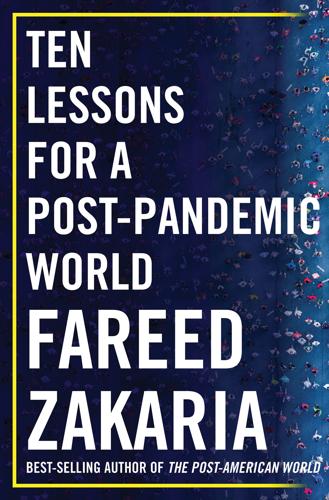
Ten Lessons for a Post-Pandemic World
by
Fareed Zakaria
Published 5 Oct 2020
That Number Could Grow,” Washington Post, April 15, 2020, and Chris Edwards, “Crisis May Add $6 Trillion to Federal Debt,” Cato Institute, April 21, 2020, https://www.cato.org/blog/crisis-may-add-6-trillion-federal-debt. 33 one of the largest per capita: IMF, “Policy Responses to Covid-19,” https://www.imf.org/en/Topics/imf-and-covid19/Policy-Responses-to-COVID-19. 34 adjusted adroitly: Faiz Siddiqui and Reed Albergotti, “Ford and General Electric Team Up to Produce Ventilators as Major Manufacturers Shift to Medical Equipment,” Washington Post, March 30, 2020. 34“public squalor”: John Kenneth Galbraith, The Affluent Society (Boston: Houghton Mifflin, 1958), 189. 34 snatched up by big companies and the rich: Jesse Drucker, “The Tax-Break Bonanza Inside the Economic Rescue Package,” New York Times, April 24, 2020. 34 sent money their way: Brendan Fischer and Kedric Payne, “How Lobbyists Robbed Small Business Relief Loans,” New York Times, April 30, 2020. 35 printed with Donald Trump’s name: Lisa Rein, “In Unprecedented Move, Treasury Orders Trump’s Name Printed on Stimulus Checks,” Washington Post, April 14, 2020. 35 50 million Americans were waiting: 120 million checks sent by April 30, per US Treasury’s Bureau of the Fiscal Service, updated July 6, 2020, https://www.fiscal.treasury.gov/files/news/eip-operational-faqs-for-financial-industry.pdf; House Ways and Means Committee estimates 171 to 190 million payments would need to be made in total, per “Economic Impact Payments Issued to Date,” June 5, 2020, https://waysandmeans.house.gov/sites/democrats.waysandmeans.house.gov/files/documents/2020.06.04%20EIPs%20Issued%20as%20of%20June%204%20FINAL.pdf. 35 a million checks to dead people: Erica Werner, “Treasury Sent More Than 1 Million Coronavirus Stimulus Payments to Dead People, Congressional Watchdog Finds,” Washington Post, June 25, 2020. 35 within the first two weeks of the crisis: Lauren Vogel, “COVID-19: A Timeline of Canada’s First-Wave Response,” Canadian Medical Association Journal News, June 12, 2020, https://cmajnews.com/2020/06/12/coronavirus-1095847/. 35 60% of lost wages: “Germany Offers Cash for Everyone,” Economist, March 26, 2020. 36 regularly topping the list: Heritage Foundation, 2019 Index of Economic Freedom, “Key Findings of the 2019 Index,” https://www.heritage.org/index/book/chapter-3. 36 mere 18%: Heritage Foundation, 2020 Index of Economic Freedom, “Hong Kong,” https://www.heritage.org/index/country/hongkong. 36 a third of France’s figure: Heritage Foundation, 2020 Index of Economic Freedom, “France,” https://www.heritage.org/index/country/france. 36 eighteen deaths as of late July: For both Hong Kong and Taiwan, see New York Times, “Coronavirus Map: Tracking the Global Outbreak,” accessed July 27, 2020, https://www.nytimes.com/interactive/2020/world/coronavirus-maps.html. 36 6% of its GDP on health care, one-third the American figure: Tsung-Mei Cheng, “Health Care Spending in the US and Taiwan,” Health Affairs, February 6, 2019. 37“patrimonial”: Max Weber, Economy and Society (Berkeley: University of California Press, 1978). 37“basic building blocks”: Francis Fukuyama, Political Order and Political Decay: From the Industrial Revolution to the Globalization of Democracy (New York: Farrar, Straus and Giroux, 2014), 199. 38 most of which routinely regulate: Paul Waldman, “How Our Campaign Finance System Compares to Other Countries,” American Prospect, April 4, 2014. 39“byzantine”: Although the old narrative of a sclerotic, decaying Byzantine Empire has been challenged by recent scholars. See: Judith Herrin, Byzantium: The Surprising Life of a Medieval Empire (Princeton, NJ: Princeton University Press, 2007). 40“mandarins”: Sarah Zhang, “Why Mandarin Doesn’t Come from Chinese,” Atlantic, January 4, 2019. 40“war made the state”: Charles Tilly, “Reflections on the History of European State-Making,” in The Formation of National States in Western Europe, edited by Charles Tilly (Princeton, NJ: Princeton University Press, 1975), 45. 41 almost three times higher: John Brewer, Sinews of Power: War, Money, and the English State, 1688–1783 (London: Unwin Hyman, 1989), 74. 41 cocktail of state formation: Frank Snowden, quoted in Jason Willick, “How Epidemics Change Civilizations,” Wall Street Journal, March 27, 2020. 42 copied the Prussian bureaucracy: T.
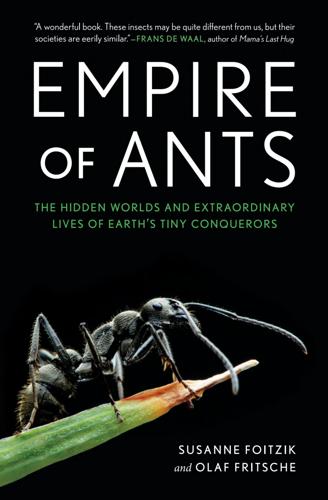
Empire of Ants: The Hidden Worlds and Extraordinary Lives of Earth's Tiny Conquerors
by
Susanne Foitzik
and
Olaf Fritsche
Published 5 Apr 2021
Species consisting solely of queens and males, and which contribute nothing to the community due to the dearth of workers, can weaken billion-ant colonies to such an extent that the ants revert to their original behaviors. Like human empires, the empires of the ants are never stable for long. If only they could take turns. battle of the supercolonies The most spectacular way for an empire to fall is surely at the hands of another superpower. Alexander the Great swallowed the superpower of Persia, the Byzantine Empire fell to the Ottomans, and the Mongols conquered China. A similar power struggle is unfolding in the warm southern states of the US. The supercolony of red imported fire ants seemed to have the area firmly in its grasp, but then Nylanderia fulva, or the tawny crazy ant, catches up with it again.
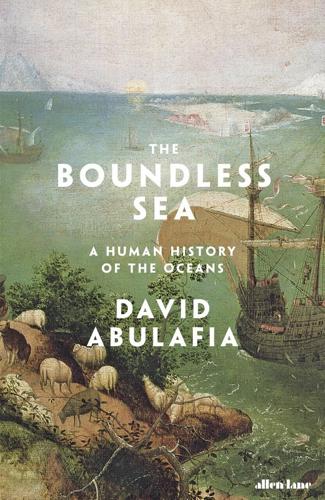
The Boundless Sea: A Human History of the Oceans
by
David Abulafia
Published 2 Oct 2019
Sir Mortimer Wheeler enthused: ‘I should describe it, indeed, as one of the most fascinating books to have come down to us from antiquity.’10 The original title of this work is Periplous tēs Eruthras thalassēs , ‘Sea journey around the Red Sea’, for the term ‘Erythraean Sea’ literally meant that, though what he intended is what is now called the Indian Ocean. What is now known as the Red Sea was often termed the ‘Arabian Gulf’, not least by the author of the Periplous .11 Around AD 900 someone in the Byzantine Empire thought it worthwhile to make a rather messy copy of this work, which is how it has survived; but when it was originally written is not certain, and some of those who reject a date in the first century AD would prefer to assign a date in the early second or even early third century instead.12 The Periplous describes a thriving network of trade that begins at the Red Sea ports of Myos Hormos and Bereniké, which will be discussed later since they have yielded superb archaeological finds.
…
The Christians gave as good as they had got, not just destroying synagogues but apparently killing large numbers of Himyarites in revenge. This and other campaigns back and forth across the southern Red Sea must have greatly disrupted traffic; and the war of 525 certainly destabilized the region, which became a battleground between the great powers of the Middle East, the Byzantine Empire and the Sasanian Empire in Persia.3 Despite these severe crises, there are enough references in Mediterranean writings to traffic from Ethiopia and Yemen reaching as far north as Ayla to suggest that contacts remained alive, added to which finds of Axumite coins and pottery at Ayla confirm the literary evidence.
…
He told the king of Portugal: ‘if you make yourself powerful in the Red Sea you will have all the riches of the world in your hands.’19 II In the event, neither the Persians nor the Portuguese gained control of the Red Sea, which fell under Ottoman sovereignty following the Turkish invasion of Egypt in 1517. Historians have made rather a meal of the question why the Ottomans seized Egypt at a time when they were actively competing with the Persian shah in the Middle East. But the Ottoman claim to world dominion had already been made plain by Mehmet II when he conquered the Byzantine Empire and attacked Italy. To occupy a wealthy and populous country that stood at the very heart of the Islamic world was an obvious step.20 The Ottoman conquest of Egypt encouraged the Venetians to continue to work alongside the Turks, who by and large had been willing to protect their shipping; the Venetians traded through Constantinople as well as Alexandria, and the Ottomans enthusiastically fostered the economic revival of their capital, which had shrunk to a collection of villages under late Byzantine rule.
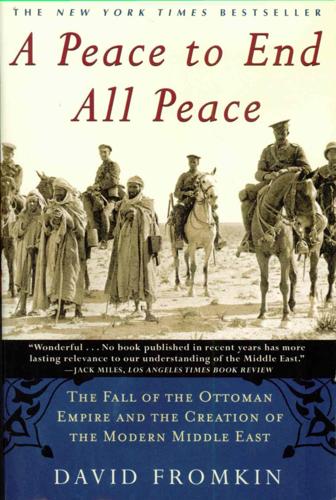
A Peace to End All Peace: The Fall of the Ottoman Empire and the Creation of the Modern Middle East
by
David Fromkin
Published 2 Jan 1989
The Ottoman (or Osmanli) Empire, founded by Turkish-speaking horsemen who had converted to Islam, was another such empire; it took its name from Osman, a borderland ghazi (warrior for the Moslem faith) born in the thirteenth century, who campaigned on the outskirts of the Eastern Roman (or Byzantine) Empire in Anatolia. In the fifteenth century Osman's successors conquered and re-placed the Byzantine Empire. Riding on to new conquests, the Ottoman Turks expanded in all directions: north to the Crimea, east to Baghdad and Basra, south to the coasts of Arabia and the Gulf, west to Egypt and North Africa—and into Europe. At its peak, in the sixteenth century, the Ottoman Empire included most of the Middle East, North Africa, and what are now the Balkan countries of Europe—Greece, Yugoslavia, Albania, Rumania, and Bulgaria—as well as much of Hungary.
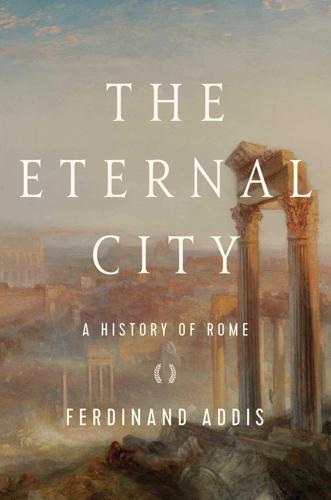
The Eternal City: A History of Rome
by
Ferdinand Addis
Published 6 Nov 2018
Suddenly, united and inspired by Muhammad and his successors, the Arabs swept out of the desert to claim both empires for Allah. The richest territories of the old Roman and Persian empires fell easily into the invaders’ hands. By the year AD 717, after decades in retreat, an exhausted Byzantine army was defending the the walls of Constantinople itself. As the Byzantine empire crumbled before the Caliphate, it was less and less able to keep control of Rome. The imperial treasury had been emptied by war. Byzantine military leaders in Italy were now paid in land, rather than gold, and possession of land – an endlessly renewable source of wealth – tended to foster a certain independence of spirit among ambitious aristocrats.
…
abortions 124 Achilles 3, 18 Actium, Battle of 110, 113–14, 218 Adalbert of Tuscany 260 Adelheid, Empress 271, 273 Adonis 135 Adrian, Pope 413 Aeneas the Trojan 4, 7, 82, 114, 192, 296–7 Aequi tribe 18 Aeschylus 33 Africa 221, 235 Agamemnon 3, 18 Agnes, Christian martyr 216–17, 291, 455 agriculture 9, 232 land reform 68–70, 71–2, 73, 88 medieval Rome 270 Agrippa 113, 126, 129, 220, 230 Agrippina 142, 143–4, 144–5 Aguyar, Andrea, the ‘ebony Hercules’ 514, 523, 526 Ahenobarbus 95, 98, 142 Aimée, Anouk 582 Ajax 3 Alaric, Visigoth king 233, 246 Alban kings 4 Alberic II, Holy Roman Emperor 265, 266–8, 269, 270, 277, 282 Alberic of Spoleto 263 Alberini, Filoteo 563 Albrecht of Brandenburg 402, 403, 404 Alcuin 268 Alemanni, Confederation of the 199, 235 Alexander the Great 33–4, 62, 84, 138, 181, 208–9 Alexander VI, Pope (Rodrigo Borgia) 347–55, 357, 361, 365–6, 367, 371, 375 accession to the papacy 348–9, 350 children of 348 death 372 and the Jews 532 Alexandria 35, 98, 103, 111, 138, 188 Alfonso of Aragon 360–1, 363, 366–7, 369 Alfonso, King of Naples 352, 354 Allia, battle of 23–5, 58, 142 Altar of the Fatherland 535, 588 Anatolia 84, 86 Antinous 180 Antioch 138, 188, 226 Antium 139 Antonine emperors 179, 182, 195 Antonine Plague 181 Antoninus Pius, Emperor 180 Antonioni, Michelangelo 568 Apollo 40, 117, 217, 218 in Ovid’s Metamorphoses 128 temple of 109–10 Apollonius of Tyana 185 Appian Way 214, 245 Apuleius 121–2 aqueducts 227–30, 231, 234, 237, 245, 248, 346 Aquitaine 234 Arabs 252 architecture of the ancient city 268 baldacchino of St Peter’s 440–2 baroque 454–5, 460 the Colosseum 156–7, 159 fascist Italy 162 Greek 156 medieval churches 300–2 united Italy 535 Aretino, Pietro 343, 392 Aristarco, Guido 573 aristocracy medieval Rome 269, 277 and the republic 55–9, 60, 75, 76 Aristophanes 33, 34 Aristotle 210 Arnold of Brescia 306–7, 406 Arnuphis 182 Arsinoë, Egyptian princess 97–8 art of classical Greece 463–4 Sarfatti’s ‘fascist culture’ 547–8, 552 see also Renaissance art artisans 269–70 Arzes 244 Asia Minor 237 Athens 28, 33–4, 209, 210 Attila the Hun 234–5, 279 Augsburg Confession 428 Augustine, St 174, 253, 256 City of God 246 on the Jews 530 Augustus, Emperor 111–16, 166, 178, 179 Altar of Peace 116 and Cola di Rienzo 326, 329 death 131 laws against sexual immorality 126, 129 map of the world 308–9, 341 marriage 122 mausoleum 126, 220 as Octavianus 111–16 and Ovid’s Metamorphoses 127–8 possible successors 128–9, 143 as a princeps 115, 128, 267 rebuilding of Rome 125–6 restoration of religion 137 and Virgil’s Aeneid 114–15 Aurelian, Emperor 199, 214, 218 temple of Sol Invictus 220 Aventine hill 1, 78–9, 221, 268 Aventine Secession 56–7 Avignon Cola di Rienzo imprisoned in 338–9 papal city of 310, 314, 320–1, 329, 333, 339, 344–5, 531 Petrarch in 311, 312–14, 315–16 Bacchus (god) 40, 137 Balabanoff, Angelica 540 Balbus 100 Bandiera brothers 503 baronial families 298–9, 302, 304, 309–10, 324 and Cola di Rienzo 325–6, 331–6, 340 see also Colonna barons Basilica of St Peter 242, 244 Bassi, Ugo 514 Bassianus see Elagabalus, boy-emperor baths 230–1, 233, 240, 248 of Caracalla 478–9, 481, 490 ruins of 296 Bayard, Chevalier de 408, 411 Bazzi, Giovanni Antonio 392 Belair 151 Belisarius 237–43, 247–8, 251–2, 268, 421 Belli, Giuseppe 501–2 Bellini, Vincenzo 495 Bembo, Pietro 372, 392 Benedict of Soracte 261, 272 Benedict XI, Pope 286–7 Benedict XXI, Pope 331 Berbers 252 Berengar I, King 260, 263 Bernini, Gian Lorenzo 437–8, 439–44, 465 architect of St Peter’s 440–2, 443, 444, 456 Cornaro chapel 446–50, 465 David statue 437–8, 465 early life 437 Piazza Navona fountain 452–4 renovation of the Piazza San Pietro 455–6 self-portrait 439–40 theatrical shows 442–3 Bertrand de Deaulx, Cardinal 332–3 Biagio da Cesena 390 Bibles, vernacular 433 Bibulus 91, 98 Bicycle Thieves (film) 571, 574 Bixio, Nino 521, 526 Black Death (plague) 337–8, 530–1 Boccioni, Umberto 539 Bochas 244 Bohemia 406, 446 Boii tribe 21 Bologna 311, 376, 386 Boniface VIII, Pope 310, 312 borgate (housing developments) 576 Borghese, Scipione 439 Borgia, Alfonso 346–7 Borgia, Cesare, Duke of Valence 342–3, 348, 354, 356, 358, 360–1, 362–3, 364–6, 367, 368, 371–2, 376 Borgia, Giovanni 360 Borgia, Jofré 348, 351, 358, 364 Borgia, Juan 348, 351, 358, 361–2 Borgia, Lucretia 343, 348, 366–8 death 373 early life 348, 349–50 in Ferrara 371–3 marriages 350–3, 357–9, 360–1, 363–4, 368–70 Borgia, Rodrigo see Alexander VI, Pope (Rodrigo Borgia) Borja, Francisco de 445 Borromini, Francesco 441, 453, 455 Boswell, James 461 Botticelli, Sandro 379, 380, 386, 387 Bourbon, Charles, duke of 408–11, 412, 414, 416–18, 419, 428 death 422 and the sack of Rome 420–1 Bragadin, Marco Antonio 444 Bramante, Donato 384, 385, 386, 392, 401, 440 Brambilla, Camilla 554 Brandano, Sienese mystic 399–400, 419 Brennus, Celtic chieftain 27 Britain 92, 246 Britannicus 143 Bronze Age burial urns 10 Brosses, Charles de 459–60 Brunelleschi, Filippo 377, 379 Brutus, Lucius Junius 15, 16, 17, 55, 104 Brutus, Marcus Junius 95, 99–100, 101–2, 111–12, 114 and Caesar’s assassination 104, 105–6, 107–8 Burchard, Johann 357, 360, 365, 370 Burgundians 199, 235 burials Bronze Age burial urns 10 Christian 214, 225 graves 11, 13, 20 Iron Age burial grounds 11, 12–13 tombs 10, 13, 14, 197, 198 Byron, George Gordon, Lord 470–6, 483, 488–9, 490, 497 Childe Harold’s Pilgrimage 470, 471–4, 475–6, 479–82, 485, 486, 488, 489–90 death 489 and Shelley 474–9, 487, 488, 489 Byzantine empire 252, 258, 261, 346 Byzantine silk 266 Caelian hill 1, 133, 290 Caere 29 Caesar meaning of the name 82, 179 see also Julius Caesar Caesarion 103, 115 Caetani rebellion 331–2 Cajetan, Cardinal 404, 426 Calderon, Pedro 359–60 calendar 40, 100–1 Callimachus 118 Callisto, nymph 130 Callistus, bishop of Rome 213, 214, 225 Calvin, John 432–3 Camillus, Marcus Furius 19, 23, 27, 28, 29, 58, 59, 80, 102 Campania 35 campanilismo 493 Campus Martius 96, 108, 126, 140, 262, 282 Caninius 101 Cannae, battle of 46–50, 82 canon, origins of the word 212 Capitoline hill 1, 59, 80, 315 the Arx 25 and the Gallic sack of Rome 25, 26–7 and medieval Rome 298–9 and the newborn city of Rome 12–13 Petrarch’s ceremony of laureation 317 senators’ palazzo 305–6, 317 temple of Jupiter 14, 15, 52, 96, 109, 235 Captivi (Plautus) 48–9 Caracalla, Emperor 184, 185–6, 186–7, 193 baths of 478–9, 481, 490 Carafa, Cardinal Gian Pietro 435, 436 Carbonari 488, 496–7, 498–500, 502 Carinus, Emperor 199 Carlo Alberto, King of Piedmont 503–4, 507, 513 Carlotta of Aragon 362–3 Carmina Burana 295 carnival 461, 531 Carocci, Cesira 550, 551, 553 Carolingian empire 254–9, 272 Carpophorus 162 Carthage 14, 42, 50–1, 62–4, 246 destruction of 64–5, 67, 142, 161 Dido, Queen of 4 foundation of 42 in Petrarch’s Africa 316 Roman colony at 75, 100, 181–2 Carus, Emperor 199 Casca 106 Cassius 114 assassination of Caesar 104, 106, 107, 111–12 lions of 161–2 Cassius Dio (historian) 161, 163, 191, 192, 193 Castel Sant’Angelo 242, 266–7, 275, 282, 290, 353, 420, 421 castrati 495, 500 catacombs 214, 225 Catullus 118–19, 121–2 Catanei, Vannozza 347–8, 350, 361 Catherine of Alexandria, St 349 Catherine of Siena, St 345 Catholic Action 573 Catholicism and Christian Democrats 573–4 doctrine of transubstantiation 431–2, 435 and Italian nationalism 502 and Protestant tourists 465–6 religious orders 323–4, 435 and Shelley 477 sixteenth-century revival 434–6, 444–6, 447, 449–51 and the Thirty Years War 451–2 and the Virgin Mary 262, 284–5, 293, 297, 445–6 see also Christian Church; Jesuits; papacy; Virgin Mary Catiline 87, 88–91, 94 Cato the Elder 63, 65, 68–9, 75 Cato the Younger 90–1, 93–4, 95, 98–9, 101–2, 149, 180, 185 Caudine Forks 66 Cavafy, Constantine 115 Cavour, Count 525, 534 Celentano, Adriano 582 Cellini, Benvenuto 421–2, 423 Celsius 230 Celts see Gauls/Celts Cenci, Vicolo 533 Ceres, goddess 48 Ceri, Renzo da 419–20 Charlemagne 251, 254–9, 260, 266, 268, 271, 273, 304, 309 Charles (‘Bonnie Prince Charlie’) 460 Charles IV, Holy Roman Emperor 338 Charles ‘the Hammer’ Martel 252, 254, 258 Charles V, Holy Roman Emperor 405, 406, 407, 410, 417, 428, 435 Charles VIII, King of France 352, 353–4, 355, 409 Charybdis 4 children, and gladiators 172 Chorsamantis 244 Christian Church Apostles 286, 287, 293 cardinals 283 doctrine of indulgences 402, 403 and the eastern Roman empire 253 evolution of the early church 208–10 Festival of the Assumption of the Virgin Mary 284–5 Franciscan Fraticelli on the End Times 323–4 and the kingdom of Frankia 255–6 medieval 273–4, 277 and myths of ancient Rome 296–7 patriarchal basilicas in Rome 280–5, 291, 295–6, 298, 300–1 relics of saints 272, 292–3, 293–4 simony 285–6, 287 see also Catholicism; churches; papacy; Protestantism Christian Democrats 573–4 Christians 185, 208–20 and ancient Roman religious rites 214–16 charity 213–14 Constantine and Christianity 218–20, 223–4, 530 damnatio ad bestias (condemned to the beasts) 164–5 and Eternal Rome 246, 247 Frankish kingdom 251 Gnostics 212 hierarchy and teachings 213 and Jews 207–8, 212, 529–31, 533 and the Lateran Basilica 224 martyrs 216–17, 291, 292, 293, 295 and neoplatonism 380 Nero’s persecution of 147–9, 150, 151–2, 215–17 and the Roman authorities 211–12 see also Christian Church; churches; papacy churches architecture 300–2 Basilica of St Laurence 291 Basilica of St Paul 224, 295–6, 298, 338, 398 Basilica of San Clemente 301–2, 303 Basilica of Santa Maria Maggiore 262, 284–5, 289, 301, 329 Basilica of the Santi Quattro Coronati 290 medieval Rome 262, 269 Santa Maria in Aracoeli 321, 328, 335, 419, 462 Santa Maria del Popolo 384 Santa Maria della Vittoria, Cornaro chapel 446–50 Santa Maria Nova 282, 285 Santa Maria in Trastevere 301 see also Lateran Basilica; St Peter’s Basilica; Sistine Chapel Churchill, Winston 523 Cicero 87–9, 90, 91, 94, 96, 99, 101, 102, 104 death 112 on gladiators 174 and humanism 377 and Petrarch 310, 311, 313, 315 Pro Caelio speech 122 Cimber, Tillius 107 cinema 561–86, 589 Cinecittà studios 564, 567, 569–70, 583, 583–4 neorealist cinema 568–9, 572–3, 574, 583 and poverty in Rome 575–7 Circe, witch-queen 3, 7 Circus Maximus 78–9, 96, 120, 220–1, 297 and the Great Fire of Rome 133–4 Cisalpine Gaul 94–5, 100 Cispian hill 1 cities city states 300 Greek cities in southern Italy 12 medieval 299–300 Rome becomes a city 12–14 see also Italian city states citizenship 73–4 Clairmont, Claire 474, 475, 486 Claudius the Blind 229 Claudius, Emperor 139, 143, 144, 170, 171 Claudius Marcellus 95 Clement IX, Pope 502 Clement V, Pope 310 Clement VI, Pope 319–20, 339 Clement VII, Pope 413, 423, 426, 427, 429, 434 Cleopatra 98, 103, 110, 113, 115 Cloaca Maxima 15, 38, 229, 466 Clodia Pulchra 121–2 Clough, Arthur Hugh 511, 516–17 Clovis, Frankish king 251, 254 Clusium 22, 28 Cola di Rienzo 318–41, 406, 419 Africa 340 and the barons 325–6, 331–6, 340 buono stato (Good Estate) 326–31 coronation 329–30 death 340, 589 early career 319 end of tribunate 336–7 and the government of the Thirteen 319–20 imprisoned in Avignon 338–9 legacy of 340–1 origins 318 and Petrarch 33, 320–1, 327, 328, 330–1, 493–4 propaganda paintings 321–2, 324 seizes power 324–6 Collatinus 15, 16, 17 Colline gate 26 Colonna barons 33–5, 277, 307, 308, 310, 319, 339–40, 353, 413, 588 Colonna, Cardinal Giovanni 312–13, 315, 317, 319, 320, 321, 322, 337–8 Colonna, Giacomo, Bishop of Lombez 312, 314–15, 317 Colonna, Janni 334–5, 336 Colonna, Marc’ Antonio 445 Colonna, Pietro 335 Colonna, Prospero 408, 411 Colonna, Stefano il Vecchio 312, 317, 322, 325, 326, 332, 333, 334, 335, 337–8 Colonna, Stefanuccio 334–5, 336 Colonna, Vittoria 434, 436 the Colosseum 153–77, 588 animals 161–5 building 156–9 executions 164–6 gladiators 153–4, 167–77 inaugural games 158, 160, 163 and the Romantic poets 478, 480, 490 ruins in medieval times 268, 282, 297 seating 159–60, 166–7 and tourists 458, 467, 489 Columbus, Christopher 356 Commodus, Emperor 163, 166, 171, 177, 182 communal government 299–300, 309, 327 communism anti-fascist resistance movement 566, 567, 574 and Christian Democrats 573–4 and fascist Italy 545, 550 Concord, Temple of 59, 80, 89, 477 concrete 156–7 Condivi, Ascanio 379, 390–1 Constantine, Emperor 201, 202, 218–26, 237, 261, 588 Arch of 477 baptism 276 baths of 222 Battle of the Milvian Bridge 204–6, 218, 219–20, 233 and Christianity 218–20, 223–4, 530 and Cola di Rienzo 329 death and burial 226 Donation of 281, 283, 344–5, 377, 405–6, 430 Lateran Basilica 222, 223–4, 226 and Rome 220–3 triumphal arch 222–3 Constantine XI Paleologos 346 Constantinople 226, 231, 237, 252 religious crisis in 253 Constantius, Emperor 200, 201, 217–18 consuls 55, 58, 60 Contarini, Cardinal 434, 435 Coraboeuf, Madeleine 549 Corella, Don Miguel de 367 Cornelia Gracchus 60–1, 63–4, 71 Cornelia, wife of Julius Caesar 83, 86–7 Corneto 325 Cortes, Niccoló Pignatelli Aragona 579 Corvinus, Marcus Valerius Messalla 117 cosmetics 123 Cottin, Major 499 Council of Deputies 491, 507 courtesans 124, 342–3, 344, 346, 370 Crassus 83, 85–6, 89, 92, 93, 177 cremation, and early Romans 10–11 Cremera, Battle of the River 18 Crescentius 273 Crescentius II 274–5 Crispus 225 Croton 12, 34 Cumae 12, 17 Cuny, Alain 582 Curculio (Plautus) 36–8 Curia Hostilia (earliest Senate House) 13 Curia of Pompey 106 cursus honorum 61–2, 74, 75 customs officers 460 Cybele (goddess) 135, 136, 137, 210, 284 Cynoscephalae, battle of 62 Cyprus 444 D’Albret, Charlotte 363 D’Allegre, Yves 353 Danaids 109 Dandolo, Emilio 521–2 Daniel, magus and prophet 137–8, 207 d’Annunzio, Gabriele 541, 563 Danube frontier 188, 199, 231, 233, 248 David, Jacques-Louis 468 De’ Grassi, Paride 375, 390 Decius, Emperor 214, 215 della Rovere, Cardinal Giuliano 352, 353–4, 367, 372 see also Julius II, Pope della Rovere, Francesco Maria 416, 418 Delphi Oracle 15 dialects 493, 494 Diana, goddess 14, 79, 86 Dido, Queen of Carthage 4 Diocles 192, 193 Diocletian, Emperor 199–201, 214 baths of 231, 233, 315 persecution of Christians 216–17 Diomedes 3 Dionysius I of Syracuse 28 divorce 122 Dominican Order 323, 370 Domitian, Emperor 178, 179, 452 Donatello 346, 379 drama comedies of Plautus 30–3, 35–41, 51 Greek comedy 33–5, 36, 51 Greek tragedy 33 Dunant, Henri 525 the dux 252 earthquake (1349) 338 eastern Roman empire 138, 223, 252 see also Constantinople economic decline 231–3 education in ancient Rome 110–11 Egypt 60, 115, 215, 237 Ekberg, Anita 579, 580, 581, 582, 585 El Prete 370–1 Elagabal, sun god 186, 189–90 black stone of 179, 189, 191 temple of 190–1 Elagabalus, boy-emperor 182, 186–7, 188–96, 198, 200, 213, 231, 380 dances 191 death 195, 196, 214, 589 marriage and sexuality 192–3 portrait in the Senate House 178–9, 189, 191 English cemetery 482, 483, 484, 485–6 Enlightenment, and the Jews 534 equites (knights) 23, 74, 76, 160, 166 equites singulares 203, 204–5, 223, 224 Erasmus, Desiderius 376, 428–9, 436 Esquiline hill 1, 140 Este, Alfonso d’ 368, 372–3, 397, 416, 417 Este, Duke Ercole 368, 369–70 Este, Isabella d’ 370, 410, 419, 442 Eternal Rome idea 245–7, 248, 300, 588 Ethiopia 556 Etruscan language 11 Etruscans 9–10, 12, 35 and the Celts/Gauls 20–2, 29 and Roman drama 32 Rome’s wars with 18–19 Euboea, Greek island 12 Euripides 33 Eusebius of Caesarea 216, 218, 219–20 Evander the Arcadian 3, 7, 12, 220 Fabii clan 18, 22, 23 Fabius Maximus, Quintus 45 Farinacci, Roberto 552 farmers 58, 68–70, 73, 75 Farnese, Alessandro 427 Farnese, Giulia 350, 352, 353 the fasces 55, 468 fascist Italy 544–60 anti-fascist resistance movement 566–7 architecture 162 see also Mussolini, Benito Faunus 2, 54 Fausta, wife of Constantine 201, 225 Fellini, Federico 562–3, 564, 565, 567, 568, 570–3, 574–5, 577, 579–86, 589 Felsina 21 Ferdinand II, King of the Two Sicilies 510, 518 Ferdinand, King of Aragon (and Spain) 351, 354, 357, 405, 532 Ferrante, King of Naples 351, 352 festivals 48, 86, 215 Christian 284–5 Ludi Romani 32–3, 86, 292 Lupercalia 32, 81, 102, 103 and Plautus’s comedies 40–1 Fetiales 32 Fiametta 366 Ficino, Marsilio 380 Fidenae 18 film industry see cinema Fiorentino, Giuliano 423 fires 29, 85 destruction of Carthage 64–5, 67, 142 Great Fire of Rome 133–5, 139–42, 221 First World War 538–44 Flaiano, Ennio 578, 581 Florence 376, 384 and Cola di Rienzo 328 Florentine art 379, 381 Medici rule 346, 379–80 Michelangelo in 381–2, 383 Florian, Emperor 199 Foà, Ugo 557 Fontana, Domenico 438 Formosus, Pope 250–1, 259–60 Forum 13, 76, 81, 83, 221, 228, 315 Column of Phocas 471–2 and the Gallic sack of Rome 25 and Julius Caesar 86, 87, 93, 96 and Mazzini’s new republic 512 and Plautus’s comedies 38–9 and the Romantic poets 476–7 the Rostra (speaker’s platform) 72, 81 temple of Caesar 114–15 Forum Boarium 229 Foscolo, Ugo, The Last Letter of Jacopo Ortis 498 foundation myths 1–8, 13, 53–4, 297 France 1848 revolution 506 empire 469–70 French army and the Italian legion 515–24 French Revolution 468–9, 471 Huguenots 433, 444 invasion of Italy (1494) 353–5, 356 massacre of St Bartholomew 444 Second Empire 510, 525 Francis of Assisi, St 322–3 Franciscan Order 323–4, 330, 338 François I, King of France 404–5, 407–8, 409–10, 411–13, 414 Frangipani family 299, 302, 304, 306, 307 Franks 199, 205, 232, 235, 251–2, 253 Frankish empire 254–9, 260 Franz Ferdinand, Archduke of Austria 539 Fraticelli 323–4, 338, 406 Frederick Barbarossa 306–7, 309, 495, 504, 509 French Revolution 468–9, 471, 510, 534 Friedrich the Wise of Saxony 405, 407 Frundsberg, Georg von 411–12, 414, 415–16, 417, 419 Fuller, Margaret 511, 524 Fulvius 77–9 funerals 32, 86–7, 108, 168 the Furies 79–80 Futurists 538–9, 541 Gaius Gracchus 60, 61, 71–80, 221, 325 Galerius 200, 201, 202 Gallic empire (Gaul) 196 Gallus 118 Garibaldi, Anita 512–13, 524 Garibaldi brigades 566 Garibaldi, Bruno 541 Garibaldi, Giuseppe 1, 512–18, 534, 538 appearance and dress 514–15 battle on the Janiculum 519–25 early life 512–13 the Garibaldini 513–14, 519 grandsons of 540–1 and Italian unification 525, 526 Garibaldi, Peppino 541 Gaul 199, 235 Gauls/Celts armies 24 Caesar’s victories in Gaul 92–3, 97, 100 and the Catiline conspiracy 89 Celtic culture 20–3 Gallic Sack of Rome 9–10, 23–9, 32, 35, 58, 180 in Hannibal’s army 46–7 Roman citizens 168 Gelasius I, Pope 257 Genoa 376 Gentile, Giovanni 552 Germanic tribes 180, 181, 199, 231, 232 invasions by 233–5 see also Goths; Huns; Visigoths Geta 183–4, 185–6 Ghiberti, Lorenzo 379 Ghirlandaio, Domenico 379, 381, 386 Gibbon, Edward 459–60, 461–2, 470 Decline and Fall of the Roman Empire 247, 462, 475 Gil de Albornoz 339 Giotto 379 gladiators 153–4, 167–77 death of 173–6 popularity of 172–3 prisoners of war as 168 slaves as 168 Spartacus 85, 168, 177 training 169–70, 171 Gnostics 212 gods and goddesses 2, 14, 189, 192 Egyptian 124, 135, 182, 215 and the Gallic sack of Rome 23, 27–8 Greco-Roman 215 of immigrants and foreigners 135–6, 189–90 and the kings of Rome 54–5 pagan mythology and Renaissance art 380–1 Roma Dea 246, 247, 248, 349 and the Trojan War 3 the Unconquerable Sun cult 214, 218 see also Elagabal, sun god Goethe, Johann Wolfgang von 464, 465–8, 470 Golden House 141, 157, 588 Gonsalvo de Cordoba 372 Gonzaga, Caterina 352 Gonzaga, Ferrante 419 Gonzaga, Francesco, Marquis of Mantua 355, 368, 372, 409 Goths 199, 237–45, 246 Ostrogothic kingdom 236–7 siege of Rome 239–45, 247–8 Gracchus brothers see Gaius Gracchus; Tiberius Gracchus Grand Tour 458–9, 462, 470 Gratian, John 287 Gratian’s Concordance 303–4 Greece architecture 156 art 463–4 Battle of Pharsalus 95–6, 99, 100 cultural renaissance 188 and the early Christian church 208–10 revolt against Ottoman rule 489 Roman acquisition of 51, 59 theatres 157, 167 Greeks cities in southern Italy 12, 34 drama 33–5, 51, 151 and elegiac metre 118 and the Gauls 20 Greco-Roman religion 215 and Plautus’s comedies 36–8, 39, 51 and Rome’s foundation myth 3 Gregorovius, Ferdinand 533–4 Gregory IX, Pope 345 Gregory of Tusculum, Count 276, 277, 286–7 Gregory VII, Pope (the Great) 287, 288–9, 290, 298, 299, 307, 531 Gregory XVI, Pope 503, 504 Grey, Nadia 582 Guiccioli, Teresa 488 Guillaume, Ferdinand (Polidor) 582 Gullace, Teresa 567 Guy of Tuscany 264–5 Habsburg Empire rule in Italy 493, 510 and the Thirty Years War 451–2 Hadrian, Emperor 126, 180, 222 and Eternal Rome 246 Mausoleum of 220, 242, 266 Hannibal 42–50, 60, 61, 62, 68, 98 as character in Plautus’s comedy Poenulus 41, 43, 44 Hawkwood, Sir John 345 Hawthorne, Nathaniel, Marble Faun 489 Heiric of Auxerre 309 Helena, mother of Constantine 225 Henry III, Holy Roman Emperor 287 Henry IV, Holy Roman Emperor 289–90 Henry VIII, King of England 409, 410, 433 Herculaneum 173 Hercules 3, 7, 14, 110, 166, 214 Altar of 220 Hermes Aërios 182 Herod Antipas 208 Hesiod 111 Hildebrand (Pope Gregory VII) 287, 288–9, 290, 299 hills surrounding Rome 1–2 Hitler, Adolf 555, 556, 558 Hoffstetter, Gustav von 518, 521 Homer 111 homosexuality 118–19, 126 Horace 114, 117, 126, 313 Horatius Cocles 204 Hugh of Provence 264, 265–6, 267, 270, 271 humanism 341, 345–6, 377–8 Humbert of Moyenmoutier 287 Huns 232, 233, 234–5, 244, 495 Hus, Jan 345, 406, 433 I Vitelloni (film) 572, 580 Icelandic pilgrims 278–80, 295, 306 Ignatius of Antioch 164–5 Il Bidone 577 Iliad 3 Innocent II, Pope 304, 305, 306, 307 Innocent III, Pope 348 Innocent VI, Pope 339 Innocent X, Pope 443–4, 446, 452–4 insulae (tenement blocks) 83 Ireland, Christianity in 255–6 Iron Age Italy 10–11 Isabella and Ferdinand 357, 405, 532 Isaiah, prophet 207 Isaurians 238, 244 Ischia 12 Isis, Egyptian goddess 135, 138, 194 Islam 252 Italian city states 309, 376 and Cola di Rienzo 328, 331 Italian Legion 515–17, 519–24 Italian nationalism 494–508 the Carbonari 488, 496–7, 498–500, 502 and the Jews 536 Mazzini’s Giovine Italia 500–1, 503, 508 and the papacy 501–6 uprising of 1848 509–12 see also Mazzini, Giuseppe Italian unification 341, 430, 493–4, 525 and the Jews 534–6 see also Garibaldi, Giuseppe Iuthungi tribe 189 Jacobinism 492, 493, 495, 502 James, brother of Jesus of Nazareth 209 James, Henry 489 James III (the Old Pretender) 460 Janiculum hill 1 Garibaldi’s battle with French troops 519–25 Janni de Vico 331 Janus (god) 2 Temple of 243–4 Jefferson, Thomas 469 Jerome, St 246 Jerusalem 86, 138, 529 Christians in 208, 209 Temple 151, 154–5, 206–7, 212 Jesuits 434–5, 436, 445, 446, 448, 502 missionaries 450–1 theatre at Jesuit schools 450 Jesus of Nazareth 185, 208, 213, 257, 403 and Constantine 220 relic of 294 Jewish war 151 Jews 137–9, 147, 148, 185, 208–9, 212, 436, 529–60 and Christians 207–8, 212, 529–31 conversion to Christianity 533 deportation of (1943) 558–60 expulsion from Spain 357 and the First World War 542 ghettos 502, 532–6, 559 Great Synagogue 529–30, 535–6, 557 history of the Jews in Rome 528–9 and Italian nationalism 536 and Italian unification 534–6 and Mussolini’s Italy 551, 554–5, 556–8 and the papacy 530–2 peddlers 533–4 physicians 532, 551 pogroms of 530 sacred menorah 155, 235, 528 and socialism 536–7 and Zionism 536 see also Sarfatti, Margherita Joachim of Fiore 323, 327 Joanna the Mad of Castile 405, 407 John of Austria, Don 445 John the Baptist 208, 294 John of Leiden 432 John Philagathos 275 John X, Pope 263, 264–5 John XI, Pope 266 John XII, Pope 270–2 Juba of Numidia 97–8 Judea 137, 138, 206–7 Julia, aunt of Caesar 86–7 Julia, daughter of Augustus 129, 130, 142 Julia, daughter of Caesar 108 Julia Domna 184–6, 193 Julia Maesa 186, 187, 193, 194, 195 Julia Mamaea 194, 195 Julia Sohaemias 194, 195 Julian calendar 101 Julianus, Didius 183 Julio-Claudian dynasty of emperors 155 Julius Caesar 81–108, 178, 179, 220, 297, 528 Anticato 101–2 appearance and dress 81, 82–3, 90, 96–7 assassination 104–8, 111–12 and Augustus/Octavianus 111, 127 and the Catiline conspiracy 88–91 and Cesare Borgia 365–6 conquest of Gaul 92–3 cremation 108 crossing of the Rubicon 94–5, 99 deification of 114–15, 137 descent from Aeneas 81–2 as dictator 102–3 early life 83–6 and the Games 161–2, 163, 171 the Julian clan 82–3 Marcus Antonius’s attempt to crown 82, 103–4 rise to power 86–7 sexuality 84 statue of 102, 112 triumphant return to Rome 96–8 and the triumvirate 92–3 wins consulship 91–2 Julius II, Pope 375–6, 377, 378, 383–5, 419, 440, 532 as Cardinal della Rovere 352, 353–4, 367, 372 death 376, 401 decoration of apartments 391–2 as the ‘Fearsome Pope’ 375–6 Michelangelo and the Sistine Chapel ceiling 385, 386, 387, 397 and Raphael 392–3 Juno, goddess 19, 27, 136 Jupiter (god) 6, 19, 130, 181, 214 Capitoline Temple 2, 14, 15, 27, 109, 235 festival of Jupiter Optimus Maximus 32–3 and Numa Pompilius 54, 56 Justinian, Emperor 237, 239, 247 Juvenal 158, 167, 169, 170, 172, 176–7, 204 Kaiserchronik 145 Kappler, Herbert 558 Keats, John 483–5, 488, 570 Endymion 483 Kerr, Deborah 570 kings of Rome 4, 13–14, 15–16, 54–6, 115, 142 Ostrogoths 236–7 Kircher, Athanasius 452 Knights Hospitaller 444 Koutilas 244 Kuliscioff, Anna 537, 538 La Dolce Vita 561–2, 580–6 La Presa di Roma 563 La Strada (film) 572–3, 574, 575, 584 Labienus 95, 98 Lactantius 219 Lambert of Spoleto 260 land reform 68–70, 71–2, 73, 88 Laocoön statue 394–5 Lars Porsenna 17–18, 22 Lateran Basilica 145, 222, 223–4, 226, 238, 250–1, 270, 280–1, 282, 292, 298, 438 Cola di Rienzo at 322 Lateran Palace 264, 280, 281 Lateran Treaty 555 Latin language 11, 12, 256 Latium 2, 18, 35, 284 laureation, Petrarch’s ceremony of 316–18 Laurentius (Laurence) 216, 224, 291 Lauroleus 164 law, tables of 57, 58 Lee, Belinda 581 Leigh, Augusta 474 Lentulus Spinther 95 Leo I, Pope 235 Leo X, Pope 373, 401–2, 404, 405, 406, 413 Leonardo da Vinci 392, 395 Leopardi, Count Giacomo 494–5, 496 Lepanto, Battle of 445 Lepida, Domitia 142, 143 Lesseps, Ferdinand de 518, 519 Leuderis 238 lex sacrata 57, 58–9 The Liberal 487, 489 Libya 539, 564 Licinius, eastern Roman Emperor 223 lions 161–2, 163, 165 Lippi, Filippo 379 Liudprand, bishop of Cremona 261, 262, 265, 267, 272 Livia, wife of Augustus 122, 123, 124, 129 Livius Andronicus 36 Livy 14–15, 16, 18, 22, 245, 495 on the Gallic sack of Rome 23, 26, 27, 28, 29 on the Hannibalic Wars 47–8 and Petrarch 313, 314, 315 Lo Sceicco Bianco (the White Sheik) 570–1, 571–2 Lodewyk the Belgian 312 Lodovico Buonarroti 381, 397 Lollobrigida, Gina 578 Lombard League 495, 504, 509 Lombards 252, 253–4, 256, 257, 265 Longinus, Gaius Cassius 101 Loren, Sophia 578 Lotto, Lorenzo 391 Louis the Pious 259 Louis XII, King of France 362, 364, 369 Louis XVI, King of France 492 Louise, Queen 409–10 love elegies metre 118 Ovid 117–25, 126 Loyola, Ignatius 434–5, 436, 450 Lucan 149 Lucia, Sister 369–70 Lucius II, Pope 306 Lucretia, rape of 15–16, 17, 315 ludi see festivals Ludi Romani festival 32–3 Lugdunum, Battle of 183 Lumiere brothers 563 Luni 279 Lupercalia festival 32, 81, 102, 103 Luther, Martin 403–7, 413, 434, 446 and the Diet of Worms 406–7 Disputation 404 and the Jews 532 Lutheranism 432–3 and the Peasants’ War 414 and the sack of Rome 428, 429 visit to Rome 400–1 Machiavelli, Niccolo 364–5, 414–15, 436, 494 Macrinus, Emperor 184, 186, 187–8 Maderno, Carlo 440 Maecenas 113–14, 129 magic 138 magistrates 16, 17, 58 magistracy of the cursus honorum 61–2 and Roman citizens 73–4 tribunes 56 Magna Mater (Great Mother Cybele) 40, 86 Magnani, Anna 567, 569, 578 Magnesia, battle of 62 Mago, brother of Hannibal 44 Magyars 270, 277, 295, 336 Mahon 44 Maidalchini, Donna Olimpia 453–4 Malta 444 Mameli, boy poet 523 Manara, Luciano 514, 518, 521, 523 Mancinus, Gaius 65–6 Manicheans 216 Manius Curius Dentatus 65 map of the world 308–9, 313, 341 Marcellus 129 Theatre of 220, 319, 325 Marcion 212, 213 Marcomannic Confederation 180 Marcus Antonius 105, 107, 110, 111, 112–13, 115, 129 offers crown to Caesar 82, 103–4 Marcus Aurelius, Emperor 168, 180, 181–2, 185, 188, 195, 222, 274 statue of 270, 272 Marcus Lepidus 112 Marcus Manlius 58 Marcus Papirius 26 Maria Enriques, Doña 351 Marignano, battle of 408, 409, 412 Marinetti, Filippo 539, 541, 544, 552 Marozia 262, 263–7, 276, 282, 286 Mars (god) 4, 6 Marshall Plan 569 Marsyas, satyr 40 Martial 154, 155–6, 158, 160–1, 162, 164, 166, 176, 230 Martin V, Pope 345, 346 Martino del Porto 326 Marx, Karl 468, 469 Masaccio 346, 379 Masina, Andrea 514, 519, 521, 522, 523 Masina, Giulietta 572, 575, 578 Mastroianni, Marcello 581–2, 584–5 Matteotti, Giacomo 550 Mavrocordato, Alexander 484, 489 Maxentius, Emperor 198, 201, 202–6, 218, 220 Basilica 221, 222 Maxentius’s Circus 197–8, 225 Maximian 200, 201 Maximilian, Holy Roman Emperor 354, 404 Maximinus Daia 223 Maximinus Thrax 198 Mazzini, Giuseppe 497–501, 523–4, 538 and the Carbonari 498–500 and Garibaldi 513, 515, 527 Giovine Italia 500–1, 503, 508 and Italian unification 525, 526 and the new Roman republic 509–12, 525 as triumvir 518–19 Medici, Giovanni de’ (of the Black Bands) 413, 415–16, 420 Medici, Lorenzo de’ 379–80, 381, 382, 384, 385, 401 Medici, Piero 382 medieval Rome 267–70, 282, 296, 298–9, 315, 376–7 Melqart, Phoenician trader-god 14 Menander 34 Metternich, Prince Klemens von 493, 494, 497, 499, 505, 506, 507, 534 Michelangelo 436, 437, 462, 464, 465 background 378–9 Battle of the Centaurs sculpture 381 and Bernini 448 character 390 David 383 dome of St Peter’s basilica 430, 440, 441 and the Laocoön statue 394–5 move to Rome 382–3 myth of 379 Pietà 383 and Raphael 392 Sistine Chapel frescoes 385–98, 429, 465 tomb for Pope Julius II 384–5, 389 middle class, in medieval Rome 319, 324 Mila, Adriana 350, 352, 353 Milan 226, 231, 289, 299, 300, 376 French invasions of 407–8, 411–12, 416–18 and Italian unification 506 Sforza family 346, 349 mills, and the siege of Rome 240–1 Milphio 43, 44–5 Milvian Bridge Battle of 204–6, 218, 219–20, 223, 233 destruction of 319 Mirabilia Urbis Romae 296–7, 299, 300 Mithras, Persian god 138, 302 Mithridates 86, 94, 97 Mochi, Francesco 441 Mommsen, Theodor 29 Mons Albanus 11, 18–19 Montanus 210 Monte Mario 2, 279, 294, 339 Monteverdi, Orfeo 442 Mucius Scaevola 166 Munda, Battle of 101 Müntzer, Thomas 414 Mussolini, Anna Maria 579 Mussolini, Benito 539–57 background 537–8 and the Blackshirts 544–7, 550 and cinema 564, 565 conquest of Ethiopia 556 death 557 and the First World War 542–4 and the Jews 551, 554–5, 556, 557–8 march on Rome 545–7 and Nazi Germany 558, 565–6 and women 549–50, 553–4 Mussolini, Rachele 544, 551, 554 Mussolini, Vittorio 565, 566 Mutina, Battle of 111, 112 Mytilene, Siege of 84 Namatianus 234 Nana, Aïché 579, 581 Naples 12, 237–8, 336, 346, 351, 376, 478 French invasion (1494) 353, 354–5, 356 and Italian unification 507 Petrarch in 316 Napoleon Bonaparte 469–70, 471, 472, 502, 534 new settlement in Italy 492, 493, 494 Napoleon III, Emperor (Louis-Napoleon) 510, 515, 517, 518, 525 Narses 248 nationalism see Italian nationalism Nazi Germany and the Jews 555, 557–60 occupation of Italy 558, 565–6 Neoplatonism 218, 380, 395–6 Nero, Emperor 139–52, 166, 183, 204, 209, 229, 230–1, 286 as the Antichrist 152 death 150–1, 155 early life 142–3 Golden House 141, 157, 588 and the Great Fire 139–42, 147 and the Jews 528 performance of the Fall of Troy 141–2 persecution of Christians 147–9 pursuit of art and extravagance 145–7 Nerva, Emperor 179 Newman, Paul 581 Nicholas V, Pope 346 Nicodemus 279 Nicomedes, King 84 Nikulás of Munkathverá 279–80, 284, 286, 291, 294–5, 298, 299–303, 306, 307 Ninchi, Annibale 564, 582 Noah 297 Normans 288, 290 notaries in medieval Rome 318–19 Notti di Cabiria (film) 575, 576, 577–8 Numa Pompilius 54, 56, 78 Numantia 66, 67 Numerian, Emperor 199 Numidian cavalry 45–6, 47, 50 Numitor 4 Ocrisia 7 Octavia 123, 129 Octavian (Pope John XII) 270–2 Octavianus (later Augustus) 111–16 see also Augustus, Emperor Octavius, Marcus 70 Odo, Abbot of Cluny 269 Odoacer 235 Odysseus 3, 4, 7 Odyssey 3 opera 442, 495–6, 505–6, 508–9 Opimius 76–7, 78, 80 Oppian hill 1 Oppius 100 Orsini clan 319, 331, 332–3, 336, 340, 350, 353, 413 Orsino, Orsini 350, 353 Orsino, Prince Filippo 581 ostriches 163 Ostrogoth kingdom 236–7, 251–2 Otto I, Holy Roman Emperor 261, 272–3 Otto II, Holy Roman Emperor 273 Otto III, Holy Roman Emperor 273–6 Ottoman Turks 346–7, 349, 444–5, 489 Oudinot, General 515, 518, 519, 525 Ovid 54, 109–11, 116–32, 118, 185, 245, 256 Amores 118, 119, 125, 126 Ars Amatoria 126–7, 130 death 131 education 110–11, 116–17 exile of 130–1 Heroides 127 love elegies 117–25, 126 marriages 125 Medea 127 Metamorphoses 127–8, 131–2, 381 and Petrarch 341 Remedia Amoris 127 and Renaissance art 381 Tristia 131, 467 pagan mythology see gods and goddesses Pagano, Bartolomeo 563–4 Paine, Thomas 469 Paisà (film) 568–9 Palatine hill 83, 96 early fortifications 12 House of Romulus 7 and the newborn city of Rome 12–13 Otto III’s palace 275 and Rome’s foundation myths 1, 2, 3, 7 ruins of ancient Rome 275 stage for Plautine plays 40 temple of Apollo 109–10 Palestine 216, 217, 246 Palladium 192 Pallottelli, Alice 554 Pantheon 126, 220, 441 papacy and the 1848 rebellion 492 in Avignon 310, 314, 320–1, 329, 333, 339, 344–5 the ‘barbarian popes’ and German reformers 286–90 and Bernini 438, 439–40 and the Byzantine emperor 252 cadaver synod 250–1, 259–60, 261 and the ‘cardinal nephew’ 438–9 and the Carolingian dynasty 254, 257–8 and the Colonna barons 310 Curia (papal court) 304, 504 the dark century 260–1, 262–5, 266, 270–1, 273, 274–5 decretals 304 Donation of Constantine 281, 283, 344–5, 377, 405–6, 430 Easter procession in Rome 281–4 ending of temporal power 506–9 and fascist Italy 362 Gratian’s Concordance 303–4 and the Holy Roman Empire 414–15 In Coena Domini (papal bull) 399 and Italian nationalism 501–6 and Italian unification 526 and the Jews 530–2, 533, 560 and the medieval senate 305–7 move to Avignon 310 and Mussolini 555 nepotism 347 origins of 226 Renaissance popes 345–7 responses to Protestant reformers 434–6 return to Rome from Avignon 344–7 schism 345 see also Lateran Basilica Paris 316, 444 Parthians 168, 180–1, 184 Pasolini, Paolo 575–7, 581, 584 Passeri, Bernardino 422 Pastrone, Giovanni 563–4 patricians 55–9, 60, 70, 80 Paul III, Pope 434, 435 Paul IV, Pope 532 Paul, St 152, 209–10, 212, 213, 286 basilica 224, 295–6, 298, 338, 398 Paul V, Pope 437, 439 Paullus, Lucius Aemilius 62, 63 Pavia, battle of 411, 412–13, 414 Peace of the Gods (pax deorum) 137 Peasants’ War 414 Pellegrino Rossi, Count 491–2, 507–8 Peloponnesian War 33 Pepin, King of the Franks 254, 257 Perseus, Macedonian king 62 Persians 237 Pertinax, Emperor 182 Perugino, Pietro 386, 387, 391 Petacci, Claretta 553–4, 557 Peter Damian 287 Peter, St 152, 224, 254, 257, 286, 300, 456 see also St Peter’s Basilica Petracollo the Florentine 309, 310, 311 Petrarch 309–18, 337–8, 343, 345, 346, 377, 436 Africa 315–16 background 309 ceremony of laureation 316–18 and Cola di Rienzo 33, 320–1, 327, 328, 330–1, 339, 340, 493–4 De Viris Illustribus 315 early life 310–13 engagement with ancient Romans 313–14 and Italian unification 493–4 and Laura 311–12, 316, 317, 337, 341 visits to Rome 314–15, 316–17, 338 Petronius 149 the Satyricon 145–6, 173 Pharsalus, Battle of 95–6, 99, 100, 103 Philip II, King of Spain 444–5 Philippi, Battle of 112, 114, 122 Philocrates 80 Phoenicians 14 Piazza Colonna 181 Pico della Mirandola 380, 382 Picus (prophetic woodpecker) 2, 54 Piedmont, and Italian nationalism/unification 497–8, 498–9, 503–4, 506–7, 513, 525 Pierleoni family 299, 302, 307, 533 pilgrimages 278–80, 291–5, 401 see also Nikulás of Munkathverá Pincian hill 1 Pinturicchio 349, 384, 391 Piranesi, Giambattista 466 Views of Rome 462–3 Pisa 279, 300 Pistoia, Giovanni da 393 Pius II, Pope 346, 347 Pius IX, Pope (Pio Nono) 504–5, 506, 507–8, 510, 515 and the Jews 534 Syllable of Errors 526 Pius VII, Pope 502 Pius XII, Pope 560 plague 337–8, 530–1 Plato 185, 210, 218, 380 Neoplatonism 218, 380, 395–6 Phaedo 98 Plautus, Titus Maccius 30–2, 33, 35–41, 51, 371 Captivi 48–9 Curculio 36–8 Poenulus 41 Pseudolus 39–40 plebeians 56–9, 69–71, 80 tribunes 56, 58–9, 60, 70–1, 72–4, 78, 88 Pliny the Elder 394 Pliny the Younger 211–12 Plotinus 218, 380 Plutarch 78, 495 Pole, Cardinal 434, 435 Poliziano, Angelo 381 Polybius 59, 64 Polyphemus 4 the pomoerium 6 Pompeii 172 Pompey 83, 86, 92, 93, 94, 95–6, 98, 99, 106, 112, 138, 162, 177 Jewish captives 428 Theatre of 157, 220, 236 Pomponius 79 Pomponius Mela 308, 313 Pomptine Marsh 100 Pons Aurelius 228 Pontius Pilate 529 Popilius Laenas 106 Porcia, wife of Brutus 102, 106 the Pornocracy 265 Porphyry 380 Porta Flaminia 238 Porta Salaria 242 Portus 244 potters 269 poverty in Rome, and cinema 575–7 Praetorian Guard 182–3, 194, 195, 196, 199, 203 battle of the Milvian Bridge 205, 206 Praturlon, Pierluigi 581 priests 55–6 Caesar as pontifex maximus 87, 96 Luperci 81 Salian 32 prisoners of war Caesar’s 97 as gladiators 168 Probus, Emperor 199 Procida, Don Gaspar de 350–1 Procopius, historian 238, 244, 245 Prometheus 479, 481–2 Propertius 117, 118, 313 prostitution 124, 126, 342–4, 346, 418, 461 in cinema 575, 577–8, 584–5 and syphilis 355–6 Protestantism 432–4, 438 and Catholic reformers 434–6, 445, 446 Hussites 446 and the Jews 532 Luther and the Reformation 403–7, 428, 430, 432–3 Protestant tourists 465–6 and the Thirty Years War 451–2 Pseudolus (Plautus) 39–40 Ptolemy VIII of Egypt 60 Pucci, Lorenzo 350 Punic language 41 Punic wars 42, 60, 61, 63 Pydna, battle of 62 Quinn, Anthony 572 Quirinal hill 1, 222 Quo Vadis 569–70 Raphael 391–3, 398, 401, 465 Ravenna 231, 233, 235, 247, 252, 254 Reformation see Protestantism Regensburg 274 regia 13, 87 religion 135–7 deified emperors 138 and Elagabalus 189–90, 193–4 priests and patricians 55–6 rituals of Roman religion 32, 214–15 and the state 136–7 see also Christian Church; Christians; festivals; gods and goddesses; Jews Remus 3–8, 10, 12 Renaissance art 377, 378–81, 383–6 fresco painting 387–9 see also Michelangelo republic (ancient Rome) ending of 80, 103, 108, 136 establishment of 16–17, 55–60 and the French Revolution 469 and Octavianus (Augustus) 115 republic (Mazzini, declared 1849) 509–12, 525 republic (postwar) 566–7 rex sacrorum 17 Reynolds, Joshua 464 rhetoric 111, 116 Rhine frontier 188, 196, 221, 231, 235 Richlin, Amy 35 Risorgimento 526, 538 see also Italian nationalism; Italian unification River Trebbia, battle of 43–4, 45 Robert Guiscard 290 Robert the Wise, King of Naples 316, 336 Roma Dea (divine spirit of Rome) 246, 247, 248, 349 Romanticism English poets 470–90 and Italian nationalism 494–5, 496, 498 Rome: Open City (film) 565, 567–8 Romulus 3–8, 10, 12, 228, 589 and Augustus 126 and Caesar 102–3 and the kings of Rome 13, 53–4 and Octavianus/Augustus 114, 126 Romulus Augustulus, child-emperor 235 Romulus, son of Maxentius 198 Rossellini, Roberto 565, 567, 567–8, 568–9 Rousseau, Jean Jacques 475 ruins of ancient Rome and eighteenth-century tourists 457–8, 462–3, 466–7, 470–1 and humanism 377–8 and Martin Luther’s visit 401 and the medieval city 268, 275, 296, 315, 376–7 and Napoleon 472 and the Romantic poets 471–2, 472–4, 477–8, 479–81 Sabine women 122–3 Sacks of Rome Gallic 9–10, 23–9, 32, 35, 58, 180 imperial troops (1527) 418–30 Vandals 235, 236, 237 Visigoths 233–4, 253 St Peter’s Basilica 254, 258, 271–2, 282, 295, 300–1, 306, 307, 426 baldacchino 440–2, 456 rebuilding of 384–5, 401, 403, 430, 440, 443, 444 Salian priests 32 Salus, goddess 102 Samnite Wars 66 Samnites 35 Sancia of Aragon 351, 358, 364, 366, 367 Sangallo, Giuliano da 384, 392, 393, 394, 401, 440 Sansovino, Andrea 384 Santis, Giuseppe 568 Saracens 263, 273, 277, 290 Sardinia 72 Sarfatti, Cesare 537, 538, 540, 551 Sarfatti, Fiammetta 549, 553 Sarfatti, Margherita 537, 538–9, 545–53, 554, 555, 557 and the First World War 542–3, 543–4 Sarfatti, Roberto 542, 553 Sarmatians 232 Saturn (god) 2 Savelli clan 319 Savelli, Luca 336 Savonarola, Girolamo 381–2, 383, 406 Saxons 272 Schmalkaldic League 435 Scipio Aemilianus 63–4, 67, 71, 75 Scipio Africano (film) 564, 582 Scipio Africanus 50, 61, 62, 63, 98, 114 and Petrarch’s Africa 315–16 Scipio, Publius Cornelius 42 Scipio, Quintus Metellus 98 Sebastian, St 291 Secchiaroli, Tazio 579, 580, 581, 583 Second Sophistic era 210 Second World War 558 Seleucia 181 Seleucid empire 62 Sempronia Gracchus 63 senate 60, 74, 75 the Ultimate Decree 77, 88, 89, 90 Senate House 178–9, 183, 189 senators at the Colosseum 160, 166 medieval 305–7 Theophylact 261, 305 Seneca 116, 119, 144, 149–50, 154, 164, 180, 313 Senones 21–2, 28 Second World War, Nazi occupation of Italy 558, 565–6 Sergius III, Pope 261, 262, 265 Sertorius 86 Servian Walls 58, 180 Servilia 91, 99 Severn, Joseph 483–4, 485 Severus Alexander, Emperor 194–5, 195–6, 198 Severus, Emperor 183–4, 184–6, 193, 221, 438 sewers 15, 38, 229, 236–7 Sextus Tarquinius 16 Sforza, Ascanio 349, 351, 358–9, 363, 367 Sforza, Caterina 365, 415 Sforza, Giovanni 351–3, 357–9 Sforza, Ludovico, duke of Milan (Il Moro) 351, 353, 358, 408 Sforza, Massimiliano 407–8 shanty towns 576–7 Shapur I of Persia 199 Shelley, Mary 474, 476–7, 482, 484, 487 Shelley, Percy Bysshe 474–9, 481–3, 484–8, 490 Adonais 483, 485–6, 488 and Byron 474–9, 487, 488, 489 death 487–8 and Mazzini 501 Prometheus Unbound 481–2, 485 Shelley, William (Willmouse) 482–3, 484 Sibylline Books 151, 202 Sica, Vittorio de 571, 574 Sicily 12, 237 and the Gallic sack of Rome 28 and Italian unification 525, 526 Kingdom of the Two Sicilies 497, 510 siege of Rome (Goths) 239–45, 247–8 Siena 279 Signorelli, Luca 386, 391 silk, Byzantine 266 Silverius, Bishop of Rome 243 Simon Magus 152, 285–6, 287 Sironi, Mario 552 Sistine Chapel 374–5, 378 Goethe’s visit 466 renovation of the ceiling 385–6, 385–98, 429 Sixtus IV, Pope 385–6 Sixtus V, Pope 438, 455 slaves at the Colosseum 160 Cato the Elder on 68–9 characters in Plautus’s plays 35–6, 37 as gladiators 168, 176 in the Hannibalic wars 50 Spartacus’s revolt 85 socialism and fascist Italy 550 and the First World War 543 and the Jews 536–7 and Mussolini 537–8, 539–40 Socrates 33, 209 Soderini, Piero 383, 386 Solferino, Battle of 525 Sophocles 33 Sorani, Rosina 520, 529, 557 Sordi, Alberto 571 Spain 50, 62, 65–7, 68, 91, 101, 235, 252, 255 and Catholicism 434 Jewish refugees from 532 Spanish Steps 460, 484, 570 Spartacus 85, 168, 177 Spiritual Franciscans 323–4, 330, 338 Statius 317 Stephen, Christian martyr 208 Stephen II, Pope 254 Stephen VI, Pope 250–1, 259–60, 261 Stoics 144, 149–50, 185, 210 suasoria 116 Suetonius 107–8, 125–6, 317 Sulla 83–4, 85, 89, 102 Sulla, Faustus Cornelius 95 Sulpicia 117 Sulpicianus, Titus 182–3 Swiss Confederacy 407–8 Swiss Guard 419–20, 422–3 Sybaris 12 Sylvester I, Pope 226, 275, 281, 283, 405–6 Sylvester II, Pope 275 syphilis 355–7, 362 Syracuse 12, 28 Syria 86, 180–1, 184, 196, 198–9, 237 Tacitus 146, 150 Tacitus, Emperor 199 Tanzi, Cornelia 554 Tarentum 12, 34, 35 Tarmoutos 244 Tarpeian rock 58 Tarquin the Elder 298 Tarquin the Proud 15, 16–17, 55, 466 Tebaldi, Pier Paolo 424 television 573 Teresa of Avila 446–8, 449–50, 465 Terpnus 143 Tertullian 182, 217 Testaccio 1–2 Tetzel, Johannes 402, 403, 404, 405 Theoderic the Goth 279 Theoderic, King 236–7, 239, 247 Theodora 237, 262–3 Theodora the Younger 262 Theophanu 273 Theophylact 262–3, 264, 276, 286, 298, 305 Theophylact clan 261–77 Theos Hypsistos (god) 219 Thirteen, government of the 319–20 Thirty Years War 451–2 Thrasea Paetus 149 thumb signals 174 Tiber, River 13, 228 and early trade routes 11 and the Jewish ghetto 533 in medieval Rome 268–9 and Rome’s foundation myth 2 Tiberius, Emperor 131, 139 Tiberius Gracchus 50, 52–3, 60, 61, 62–7, 69–71, 72, 77 tibia (musical pipe) 40, 41, 42 Tibullus 118 Titus, Emperor 154–5, 157, 158, 162, 163, 164, 165, 171, 175–6, 206–7, 212, 230, 588 and the Jews 528, 531 Tivoli 305 Torrella, Gaspar 356 Toscanini, Arturo 544 Totila, Gothic king 248 tourists 587, 588 eighteenth-century 458–67, 470–1 postwar 570 Romantic poets 470–90, 494–5 Tours, Battle of 252, 253, 254 trade Celts/Gauls 20, 21 early Roman trade routes 11–12 tragedy, Greek 33, 36 Trajan, Emperor 179, 211, 222 Column 282 Transtiberim 134, 135, 138, 227 Tree, Iris 582 Trent, Council of 435–6, 440, 445 Treves, Claudio 537 tribunes Cola di Rienzo 326, 329 plebeians 56, 58–9, 60, 70–1, 72–4, 78, 88 Trier 221, 226 Trojan war 3, 4, 18, 19, 142 Turati, Filippo 537 Tuscan dialect 494 Tuscany, and Italian unification 506–7 Tusculum 18 Twain, Mark 489 Twelve Tables 57 Uccello, Paolo 379 unification see Italian unification United States, American films made in Italy 569–70 Urania, goddess 192 Urban V, Pope 344–5 Urban VIII, Pope 439–40, 443, 453, 515–16 Ustinov, Peter 570 Utica 98 Valdo, Augusto 429 Valerian, Emperor 198–9, 216 Valla, Lorenzo 377, 405 Vandals 199, 234, 235, 236, 237, 251–2 Vasari, Giorgio 378–9, 387–8, 390, 393, 397 the Vatican 297, 298 Vatican hill 2 Vatican Palace, chestnut ball 342–3, 370 Veii, Etruscan city 18–19, 21, 22, 23, 25, 27, 418, 419 Velian ridge 1 Venice 346, 355, 376, 384 and Italian unification 506, 510, 526 Vercingetorix 97 Verdi, Giuseppe 495, 505, 508–9 Veronica, St 294, 441 Vespasian, Emperor 137, 146, 151, 155, 157, 322, 528 Vesta (goddess) 6 temple of 87, 192, 297, 384 Vestal Virgins 84, 166 and Elagabalus 192, 194 and the Gallic sack of Rome 25, 26, 27 and Rome’s foundation myths 4 temple 221 Vesuvius, Mount 172 Via Appia 197–8, 225 Via Flaminia 203 Via Lata 262, 264, 267, 282 Via Sacra 83, 96, 106, 221 Titus’s arch 154–5 Via Veneto 570, 578, 580, 583, 584–5, 586 Vienna, Congress of 492–3 Villa Corsini 520–3 Viminal hill 1 Virgil 113, 114, 117, 185, 218, 245, 256 Aeneid 114–15, 127–8 Feast of the Assumption 284–5, 329 and Petrarch 311, 313, 341 and Renaissance popes 345, 346 Virgin Mary 262, 284–5, 293, 297, 445–6 Visconti, Luchino 568, 574 Visigoths 233–4, 235, 236, 246, 252, 253, 495 Viterbo 345 Vittigis, Gothic king 239 Vittorio Emanuel II, King of Italy 525, 535 Vittorio Emanuel III, King of Italy 546, 548, 565 Vivian, Charles 487 Volsci tribe 18 Waterloo, Battle of 492 weapons 205, 241–2 Westphalia, Peace of 452 Whitby, Synod of 256 White Company 345 White Mountain, Battle of 446, 451 Williams, Edward 484, 486–7 Williams, Jane 486, 487 Winckelmann, Johann Joachim 463–4, 465, 470, 472, 477 women at the Colosseum 166 early Christian 213 executions of female criminals 164 female sexuality 122 and gladiators 172, 177 Jewish 529 and Ovid’s love elegies 121–5 see also prostitution women’s suffrage 552 written word, and Greek drama 33–5 Wycliffe, John 345, 406 Year of the Four emperors 155 Zama, Battle of 50, 51, 62 Zealots 207, 208 Zenobia of Palmyra, Queen 196, 199 Zionism 536 Zosimus, Byzantine historian 204 Zoticus 192–3 Zwingli, Huldrych 432 THE ETERNAL CITY Pegasus Books, Ltd. 148 West 37th Street, 13th Floor New York, NY 10018 Copyright © 2018 by Ferdinand Addis First Pegasus Books hardcover edition November 2018 All rights reserved.
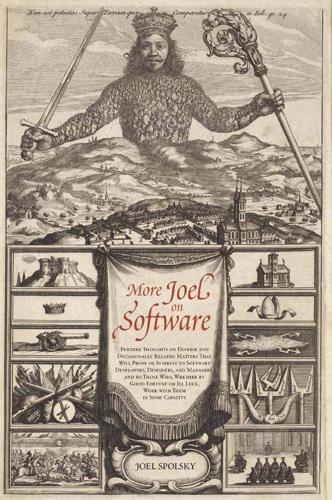
More Joel on Software
by
Joel Spolsky
Published 25 Jun 2008
This is, of course, how Slashdot works, and I’ll bet you 50% of the people who read Slashdot regularly have never figured it out. There are three things I don’t like about this. One: it’s more UI complication, a feature that people need to learn how to use. Two: it creates such complicated politics that it make the Byzantine Empire look like third-grade school government. And three: when you read Slashdot with the filters turned up high enough that you see only the interesting posts, the narrative is completely lost. You just get a bunch of random disjointed statements with no context. Q. Why don’t you have a registration scheme to eliminate rude posters?
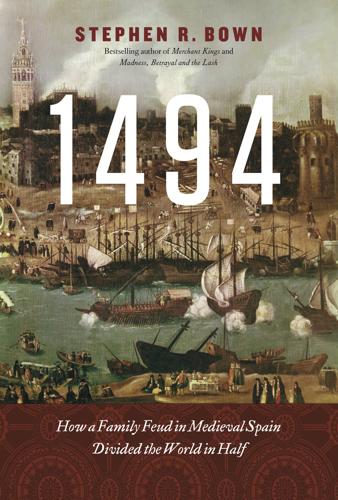
1494: How a Family Feud in Medieval Spain Divided the World in Half
by
Stephen R. Bown
Published 15 Feb 2011
Much of Europe’s literature, science, agricultural techniques, ideas and practices in medicine, engineering and philosophy made its way into Europe from the sophisticated Islamic culture in Iberia. But by the fifteenth century the period of peace was ending. In 1453 Constantinople fell to the invading armies of Mehmet the Conqueror using giant siege cannons (ironically, crafted by dissatisfied European church-bell makers), essentially ending the Christian Byzantine Empire and shutting off the spice trade to Europe. Soon popes and senior church officers were attempting to raise interest throughout Europe in another crusade in retaliation. Mehmet’s invasion escalated the simmering quarrel between Islam and Christianity, and as before Spain’s Jews suffered from both directions.
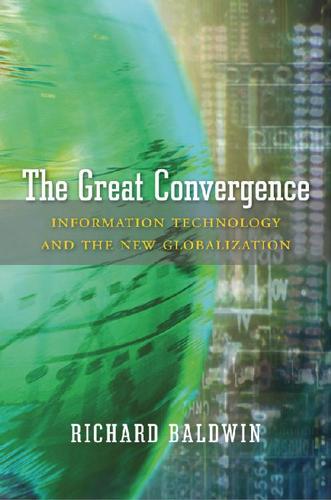
The Great Convergence: Information Technology and the New Globalization
by
Richard Baldwin
Published 14 Nov 2016
During the proto-globalization phase, incomes in Western Europe and its offshoots in the New World climbed while those of the ancient civilizations stagnated. DATA SOURCE: Maddison database (2009 version). By the end of the millennium, Rome and its colonies had stumbled badly, while the Islamic civilizations surged ahead, along with the Byzantine Empire. From 1500, things started looking quite different (Figure 14, bottom panel). Apart from Italy, which led the Renaissance, all the ancient civilizations stagnated while Western European incomes grew. Progress was especially marked for the big European imperialists—the United Kingdom, the Netherlands, Spain, and Portugal.

Currency Wars: The Making of the Next Gobal Crisis
by
James Rickards
Published 10 Nov 2011
The Fed’s track record on dollar price stability should be compared to that of the Roman Republic, whose silver denarius maintained 100 percent of its original purchasing power for over two hundred years, until it began to be debased by the Emperor Augustus in the late first century BC. The gold solidus of the Byzantine Empire had an even more impressive track record, maintaining its purchasing power essentially unchanged for over five hundred years, from the monetary reform of AD 498 until another debasement began in 1030. Fed defenders point out that while the dollar may have lost 95 percent of its purchasing power, wages have increased by a factor of over twenty, so that increased wages offset the decreased purchasing power.

The Seventh Sense: Power, Fortune, and Survival in the Age of Networks
by
Joshua Cooper Ramo
Published 16 May 2016
The Yangtze and the Yellow and the Mekong river systems each carried wealth and knowledge into a half dozen spectacularly rich Chinese dynasties. The Nile nourished a great power that endured in Egypt for centuries, as did the Euphrates in Mesopotamia. Networks of trade overlay the Mediterranean, which itself became the heart of the wealthy Carthaginian, Roman, and Byzantine Empires. And the greatest geographical empire in history, Great Britain, was nothing if not a network power, run on sea lines. For centuries, waterways have pulsed with power. They were vital for trade, war, and national freedom. Network empires emerged on land too, assembled from connected webs of politics, of silk and tobacco and gold, or from shared religious passions.

Can We Talk About Israel?: A Guide for the Curious, Confused, and Conflicted
by
Daniel Sokatch
Published 18 Oct 2021
Over time, the people living in the land adopted the religions (paganism, Judaism, Christianity, and finally Islam) and languages (Hebrew, Aramaic, and finally Arabic) of the most dominant groups. As you may have noticed, there is an irony here: some of today’s Palestinians may well have descended, at least in part, from the very people with whom they are in such conflict—Jews. During the period the Christian Byzantine Empire ruled the territory, between the fourth and seventh centuries C.E., most inhabitants of Palestine became Christian. In 638 C.E., though, the new Muslim empire conquered Palestine, and by the nineteenth century, a majority of the inhabitants of the land had converted to Islam. Arabic was the primary language, and from that point onward, most inhabitants of Palestine saw themselves essentially as part of the larger Arab world.

Home Sweet Anywhere: How We Sold Our House, Created a New Life, and Saw the World
by
Lynne Martin
Published 14 Apr 2014
So abundant were the wares that we again walked away empty-handed. Two Librans are hopeless and helpless when presented with that many decisions. Istanbul’s wondrous delights were capped by the Hagia Sophia, rising at the other end of the mall from the Blue Mosque. It presents the perfect synthesis of the Ottoman and Byzantine empires under one enormous dome. An Eastern Orthodox cathedral built in AD 537, it was briefly a Roman Catholic cathedral from 1204–1261 and became a mosque in 1453 after the Turks conquered Constantinople. In 1935 it became a museum. It would be impossible to describe the profound effect of the colossal building.

The Darkening Age: The Christian Destruction of the Classical World
by
Catherine Nixey
Published 20 Sep 2017
Every single work of Democritus and his heretical ‘atomism’ vanishes. Ninety per cent of all classical literature fades away. Centuries later, an Arab traveller would visit a town on the edge of Europe and reflect on what had happened in the Roman Empire. ‘During the early days of the empire of the Rum,’ he wrote – meaning the Roman and Byzantine Empire – ‘the sciences were honoured and enjoyed universal respect. From an already solid and grandiose foundation, they were raised to greater heights every day, until the Christian religion made its appearance among the Rum; this was a fatal blow to the edifice of learning; its traces disappeared and its pathways were effaced.’47 There was one final loss, too.
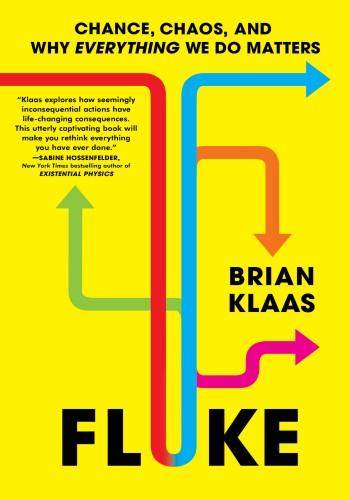
Fluke: Chance, Chaos, and Why Everything We Do Matters
by
Brian Klaas
Published 23 Jan 2024
He’s a self-described “twenty-first-century oddball” without a cell phone. Blount is most likely to be found either in a lab breaking the code of life’s most closely guarded secrets or pondering those secrets while reading a thick history book at a wilderness campsite. He’s fascinated by flukes in both microbial and human history—a “bacteria by day, Byzantine Empire by night” kind of guy. After spending four hours with him, I’m not sure I’ve ever met someone so curious about the world, or so thoughtfully productive at understanding it. Blount describes the experiment with enthusiasm. Every day, the bacteria in each of the flasks grow in an identical broth of glucose, or sugar, and citrate, better known as the “acid that gives orange juice its tang.”

Growth: From Microorganisms to Megacities
by
Vaclav Smil
Published 23 Sep 2019
After that brief expansion, Byzantium retreated but continued to rule over large (but shifting) parts of the eastern Mediterranean region for nearly 1,000 years after Romulus was deposed in Rome in 476: Constantinople was occupied by Ottoman invaders only in May 1453. When we replot the trajectory of the Roman expansion and retreat starting in 509 BCE with the republic’s foundation and ending in 1453 with the fall of Constantinople, we get a relatively close approximation of a normal curve with a prolonged right tail, suggesting that the Byzantine empire was living on borrowed time for at least 700 years, that is for most of its existence (figure 5.12). Figure 5.12 Growth of the Roman republic and empire and the gradual retreat of Byzantium, 509 BCE–1453 CE. Data from Taagepera (1979) and author’s area measurements based on Talbert (2000).
…
Russia declared sovereignty with a limited application of Soviet laws in June 1990 and the inevitable unraveling was made legal on December 8, 1991 at a meeting in one of the most unlikely places to dissolve an empire, in a state hunting lodge in one the continent’s last primeval forests, in Belarus near the Polish border (Plokhy 2014). In contrast, as detailed in chapter 5, the much-studied fall of the Roman Empire was an affair that spanned centuries if we look at just the western part, or roughly a millennium when we include the prolonged weakening of the eastern (Byzantine) empire. Given this range of outcomes, Arbesman’s (2011) analysis is an expected quantitative confirmation of the fact that imperial survival is remarkably idiosyncratic and distinct, and that the aggregate distribution of imperial lifetimes (including the entities whose rule spanned more than three millennia) follows an exponential distribution, with the rate of collapse of an empire independent of its age.
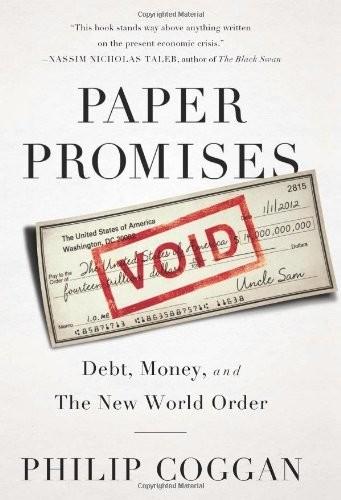
Paper Promises
by
Philip Coggan
Published 1 Dec 2011
Economic history can be seen through the evolution of coinage, with those of the dominant economic power being accepted outside their states of origin. The discovery of silver deposits at Laureion in Greece allowed the city-state of Athens to expand its coinage; Athenian owls, as the coins became known, were widely used for the next six centuries. The Romans had the denarius and when that was debased, the golden solidus; the Byzantine Empire had the bezant. Some currencies derived their name from their origins. The British coin, the guinea, was named after the part of Africa where the gold was found; the word dollar comes from the German thaler, a coin minted in Joachimsthal in Bohemia (thal means valley). These were cut into eight.
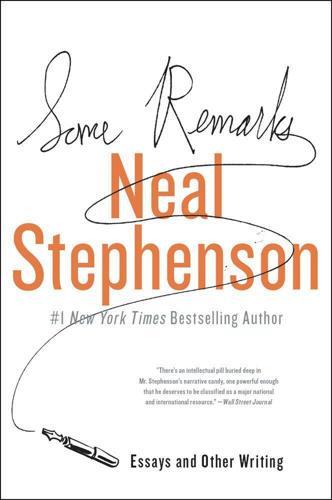
Some Remarks
by
Neal Stephenson
Published 6 Aug 2012
According to another yarn, a Byzantine emperor spread a rumor that the treasure of Alexander the Great had been hidden within the lighthouse’s foundation, and the unbelievably fatuous local caliph tore up the works looking for it, putting Pharos out of commission and leading to a military defeat by the Byzantine Empire. Some combination or other of gullible caliphs, poor maintenance, and earthquakes eventually did fell the lighthouse. Evidently it toppled right into the Mediterranean. The bottom of the sea directly before its foundations is still littered with priceless artifacts, which are being catalogued and hauled out by French archaeologists using differential GPS to plot their findings.

A Place for Everything: The Curious History of Alphabetical Order
by
Judith Flanders
Published 6 Feb 2020
Other glosses relied on organizing principles that are far more foreign to us today. The Læcboc, or Medicinale anglicum, The Leech Book, or English Remedies, written in Old English around 950, was arranged, as were many medical texts of the period, with diseases and cures following the human body a capite ad calcem, from head to heel.14 In the Byzantine Empire, texts were generally organized by subject, sometimes geographically, or by name. Only the Suda, a Byzantine encyclopedic dictionary dating from the late tenth century, was an alphabetical compilation, magisterially ordering 31,000 historical, biographical and lexicographical entries into a single alphabetical order.
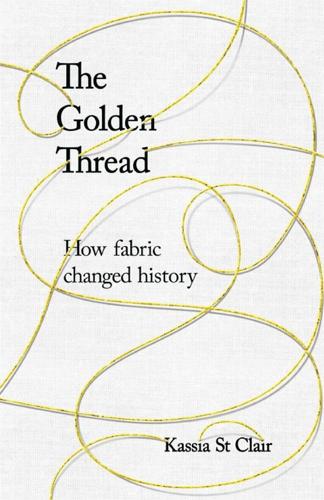
The Golden Thread: How Fabric Changed History
by
Kassia St Clair
Published 3 Oct 2018
These robes, made ‘by the skill of the Seres, the needle of the workman of the Nile has separated, and has loosened the warp by stretching the weft.’21 Such reworking of imported silks was not uncommon. In Western Asia, there was a tradition of buying plain Chinese silk to embroider or to unravel and re-weave into special damasks and gold-embellished fabrics. Soon enough, however, the knowledge and practice of sericulture took root there also. Justinian I, who ruled the Byzantine Empire from AD 527 until 565, is said to have encouraged two monks to smuggle cocoons out of the east on their travels. Knowing the punishments, the pair cleverly hid their illicit cargo in hollowed-out walking canes. Whether or not this picturesque tale has any truth to it, we do know that once silk production took hold in Persia, they proved themselves to be adept.
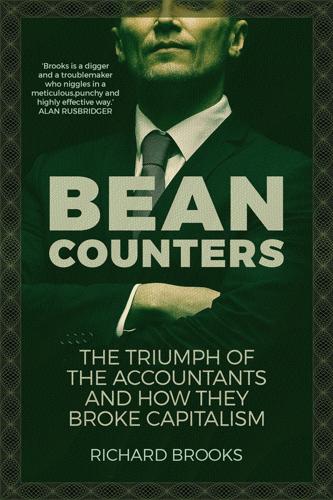
Bean Counters: The Triumph of the Accountants and How They Broke Capitalism
by
Richard Brooks
Published 23 Apr 2018
INDEX Abadie, Richard, 189 Aberdeen, Scotland, 48, 70 ABN Amro, 138 Accenture, 71, 256, 272 Accounting Establishment, The, 80 accounting standards, 73, 123–5 aconter, 2 Adelphia, 109, 264 Adidas, 220 Airbus, 214–19 Aislabie, John, 40 algebra, 21, 33, 38 Almond, Steve, 139–40, 148 alumni system, 17 Amazon, 170, 171, 178 American Institute of Certified Public Accountants, 61 American International Group (AIG), 133–5, 144, 145, 148 American Steel and Wire Company, 55 Andersen, Arthur Edward, 72–4, 75, 77, 78 Anglo Irish Bank, 144 Anne, queen of Great Britain and Ireland, 39 antitrust laws, 59, 61, 75 Antwerp, 36 Appleby, 247 Applegarth, Adam, 126 Appleton, Robert, 225 Arabic mathematics, 3, 21–2 ArcelorMittal, 171 Arthur Andersen & Co., 72–4, 75, 77–8, 81, 97, 102–8, 112–13, 188 auditing, 4, 72–4, 85, 97, 102–8, 109, 117 collapse (2002), 5, 7, 11, 90, 108, 110, 121 and computing, 77–8 consultancy, 77–8, 79, 81, 103 and Enron, 4, 7, 11, 74, 102–8, 113, 117 global operations, 234 and HIH, 240 and Labour Party, 184, 188 and Lincoln Savings and Loan, 85 ‘One Firm’ philosophy, 74, 275 and subprime mortgages, 112–13, 116 and Sunbeam, 97 and United States Steel, 62 and WorldCom, 109, 110 Arthur Young & Co., 63, 71, 85–7 asset-backed securities (ABS), 121 Associated Electrical Industries, 66 Aston Martin, 2 AT&T, 109 Atchison, Jack, 85–6 Atlantic Ocean, 39 Atter, Lewis, 197–8 Audit Company of Illinois, 72 auditing, 2, 5, 6, 10–16, 68–9, 79–80, 259–61, 276, 280–84 1960s ‘Go-Go’ era, 63–5, 67 1980s deregulation era, 85–91 1990s/2000s ‘numbers game’ era, 95–110, 114 2007–8 financial crisis, 4, 13–14, 17, 18, 90, 111–50, 210, 241, 256–9, 265 2010s post-crisis era, 259–61 Barnier proposals (2010), 253–5, 280 Davey committee (1894), 52 and class action, 92 Companies Act (1900), 52 competing on price, 79 compulsory rotation, 5 and consultancy, 82, 97–8 and corruption, 211–32 and deregulation, 85–7 expectations gap’, 65, 257 global operations, 235–46 and Joint Stock Companies Acts (1844, 1856), 47, 50 and Levitt, 96–8, 104 limited companies, 13 limited liability, 91–5, 114 Lincoln Savings and Loan, 85–6 Maxwell, 87–8 Medici system, 27 New York Stock Exchange, 55 public, 280–82 and Railway Regulation Act (1844), 45–7 Australia, 48, 51, 127, 170, 240 Avignon, France, 29 Avis Rent-a-Car, 59 Ayrshire, Scotland, 42 Babbage, Charles, 70 BAE Systems, 213–14, 219 Bagley, Gaenor, 268–71 Bahamas, 222, 236 Bain & Co., 263 Bainbridge, Guy, 141 Bank of America, 118 Bank of Credit and Commerce International, 91 Bank of England, 38, 91, 126, 273 Bank of Scotland, 140 Bank of Tokyo-Mitsubishi, 230–31 Bankia, 241 Banking Act (1879), 51 bankruptcy, 30, 45, 46, 49, 50–51 Barclays, 6, 121, 149, 256, 258 Baring Brothers, 92 Barkley, Alben, 58 Barlow, Ian, 181, 182 Barlow Clowes, 89–90, 136, 209 Barnes, David, 258–9, 276, 277 Barnier, Michel, 253–5, 280 Bass, Carl, 105–7 BCCI, 136 Bear Stearns, 121, 139, 145 Belfield, Gary, 192, 193 Benci, Giovanni, 27, 28, 29, 31 Bennett, Robert, 161 Berkshire Hathaway, 135 Bettel, Xavier, 170 Bevis, Herman, 62 Big Bang (1986), 156 Big Eight, 62, 80, 81, 82, 86, 87, 89, 136, 235, 283–4 Big Five, 95, 97, 236 Big Four, 2, 5–21, 110, 114, 283–4 alumni system, 17 auditing, see under auditing business advisory, 114 charity, 16–17 client relationship partners, 12 compulsory rotation, 5 consultancy, 6, 10–12, 114, 183–210, 261–7 and corruption, 211–32 cyber-security, 272–3 export earnings, 6 federal structure, 7–8 and financial crisis (2008), 111–50 global operations, 235–52 governments, advice to, 6, 180, 183–210, 248–50 growth, 9, 10 integrated reporting, 18 key performance indicators, 12 mark-to-model, 124 and media, 7 partners, 8, 11, 14, 15, 16 professional services, 11 recruits, 14–15 revolving door, 206–8, 272 and scandals, 7–8 and securitization, 121–3 tax avoidance, 156–82, 246–8 thought leadership, 12 Big Short, 112 Big Six, 81, 91–3, 95, 235, 236 Big Three, 110, 161 bills of exchange, 25, 26 Birmingham, West Midlands, 43 Bischoff, Winfried, 209 Black, Conrad, 154–5 Black, William, 60–62 Blackbeard (Edward Teach), 39 Blair, Anthony ‘Tony’, 184, 188, 191, 213 Blatter, Joseph ‘Sepp’, 221, 222, 225–8 BLIPS (Bond Linked Issue Premium Structures), 159–62, 181 Blockbuster, 106 Blunt, John, 39, 44 Board of Trade, 45 Book of Disquiet (Pessoa), 1 Book-keeping Methodiz’d (Mair), 53 Booz & Co., 264 Boston Consulting, 191 Boulton, Matthew, 43 Bower, Marvin, 75 Boy Scouts of America, 149 Bradford & Bingley, 141–2, 149 Brazil, 220, 238, 239, 242–3, 246 Breedon, Richard, 154 Brexit, 195, 203–4, 273 bribery, 211–28, 240 BRIC (Brazil, Russia, India and China), 238 Bristol, England, 49 Britannia Building Society, 142 British Academy, 111–12 British Aerospace, 212–14, 219 British Airways, 148 British American Tobacco, 148 British Broadcasting Corporation (BBC), 169, 197, 220 British Empire, 233 British Home Stores (BHS), 260–61 British Virgin Islands, 213, 220, 246 Britnell, Mark, 192–3, 208 Brown, Gordon, 157, 184, 185, 186, 196 Bruges, 31 BT, 149 Bubble Act (1720), 44 Budgetary Control (McKinsey), 74–5 Buffett, Warren, 63, 135 Building Public Trust Awards, 256 Bureau d’Imposition Sociétés VI, 168 Bureau of Supplies and Accounts, US Navy, 77 Burgundy, Duchy of (1032–1477), 31 Bush, George Walker, 98, 114, 145, 253 Bush, Tim, 126, 127, 147 Butler, Stephen, 181 Byrne, Liam, 184 Byzantine Empire (285–1453), 21 Cabinet Office, 200, 201 Cable & Wireless, 215 Caesar, John, 54, 55, 56 Calcutta, India, 233 Cambridge, Cambridgeshire, 194 Cambridge University, 55, 268 Cameron, David, 192, 195, 203 Campaign Against the Arms Trade, 265 Canada, 246 Canary Wharf, London, 256 Cape Coast Castle, Gold Coast, 37 Capita, 201–2 capital, 3 Carell, Steve, 112 Caribbean Football Union, 221, 223, 224, 225 Carnegie, Andrew, 55, 71 Carter, Arthur, 58 Cash Investigation, 168, 171 Caterpillar, 178 Catholic Church, 3, 24–5, 26, 29, 34, 38 Cattles plc., 142 Causey, Rick, 104 Cayman Islands, 104, 164, 214, 239, 246, 247 Celanese, 60 Celler–Kefauver Act (1950), 59, 61 Celluloid Corporation, 60 certified public accountants, 53 CFO, 101, 109 Chaplin, Charlie, 71 Chappell, Dominic, 260 Charles the Bold, Duke of Burgundy, 31 chartered accountancy, 14, 16, 45, 47–8, 49, 53 Chelsea Flower Show, 200 Chicago School, 84–5, 183 Chicago Sun-Times, 154 Chicago, Illinois, 54, 72–4, 101, 105 child labour, 44 China, 17, 111, 204, 238, 243–5, 251–2, 272, 274 China Integrated Energy, 244 Chirac, Jacques, 127 Christianity, 3, 24–5, 26, 34, 35, 38 Catholicism, 3, 24–5, 26, 29, 34, 38 Protestantism, 3, 42, 43 Christoffels, Jan Ympyn, 36 Churchill, John, 1st Duke of Marlborough, 41 Circle Health, 194 Citigroup, 149, 258 City of Glasgow Bank, 51, 147 City of London, 46, 49, 156, 249 Civil Rights Movement, 64 Claridges, London, 122 Clarke, Charles, 207 class-action lawsuits, 64–5, 92 Cleese, John, 15 climate change, 18 CloseMore University, 115 Clowes, Peter, 88–90, 91, 136, 209 Co-operative Bank, 142, 149, 150 Cohen, Manuel ‘Manny’, 80 Cold War, 95 Cole, Margaret, 208 Colin, Bernard, 173 collateralized debt obligations (CDOs), 120–21, 129–30, 133, 136–40, 265 Collier-Keywood, Richard, 182 Collins, Simon, ix, 11, 204, 218, 255–9, 264–7, 276, 277–8, 279 Colombia, 229 colonialism, 37 Comey, James, 161 commercial-mortgage-backed security (CMBS), 121 common accounting standards, 73, 123–5 common law, 39 Companies Act 1862: 51 1900: 52 1929: 58 1948: 66 1989: 93 compulsory rotation, 5 computing, 77–8 Comroad, 240 conflicts of interest, 18, 60, 82, 91, 98, 187, 254–5 Arthur Andersen & Co., 73–4, 78, 105, 277 and Barnier proposals, 254–5 in China, 274 and data, 271 Deloitte, 241 KPMG, 202, 228 Price Waterhouse & Co., 73, 277 PricewaterhouseCoopers (PwC), 143 and Sarbanes–Oxley Act (2002), 122 Connolly, John, 89–90, 136, 137, 139, 146, 148, 150, 201 Conservative Party, 95, 185, 186 consultancy, 6, 10–12, 69, 70–83, 97, 114, 183–210, 261–7, 284–5 Continental Baking, 59 Continental Bank, 101 convergence, 123 Cook, Martin, 16 ‘cooking the books’, 36 Cooper, Cynthia, 109 Cooper, William and Arthur, 49 Coopers & Lybrand, 49, 56, 65, 87–8, 95, 185, 216 Coopers Brothers, 87 Copeland, James, 239 Corbyn, Jeremy, 201 Cornwall, England, 43 corruption, 211–32, 240 cost accounting, 42–4, 70–71, 76 cost–profit calculus, 3 Cotswolds, England, 26 Countrywide Financial Corporation, 48, 118, 257 Court of Appeal, 211 credit default swaps (CDSs), 120, 122, 134–5 credit rating agencies, 130, 149 Cruickshank, David, 166 Crystal Park, Luxembourg, 170 Cuba, 239 Cuomo, Andrew, 133 currency swaps, 156–7 cyber-security, 272–3 Daily Mirror, 88 Daniel, Vincent, 112–13 Dante, 33 Dassler, Horst, 220 Datini, Francesco di Marco, 25 Davey, Horace, Baron Davey, 52 Davos, see World Economic Forum Defoe, Daniel, 38 DeLany, Clarence Martin, 72 Delaware, United States, 8, 57, 92, 236, 284 Deloitte, 2, 5, 8, 12–13, 82, 90, 98, 276, 277 and Adelphia, 109 and bankers’ bonuses, 158 and Bankia, 241 in Brazil, 242–3 Brexit memo (2017), 195, 203 charity, 16–17 in China, 244, 251–2 client relationship partners, 12–13 cyber-security, 272 and Deutsche Bank, 158 dot after name, 12 and Duke Energy, 109 and Financial Crisis Inquiry Commission, 145 Global Impact Report, 17 global operations, 236 and Gol, 242–3 government, advice to, 187, 189, 190, 191, 193, 194 and GPT, 216 and Hong Kong protests (2014), 251–2 and House of Lords committee (2010), 146 integrated reporting, 18 Journey Declaration, 275 and National Health Service (NHS), 193, 194 and Parmalat, 239, 243 and private finance initiative (PFI), 187, 189, 190, 191, 203 and Public Company Accounting Oversight Board (PCAOB), 145 revolving door, 207, 208 and Royal Ahold, 238–9 and Royal Bank of Scotland, 47, 90, 136–40, 142, 147, 241, 259 and securitization, 121 and Standard Chartered Bank, 230 and tax avoidance, 157, 158, 166, 203 and technology, 271 and thrifts, 87 and World Economic Forum, 18 Deloitte, Haskins & Sells, 89 Deloitte, William Welch, 46–7, 49, 158 Deloitte & Touche, 89, 91, 136–40 Deloitte Touche Tohmatsu, 239 Deltour, Antoine, 166–8, 171, 173–4, 175, 175 Democratic Party, 58, 80, 159 Deng Xiaoping, 243 Department for Business, UK, 201 Department for Exiting the EU, 204 Department of Health, UK, 188, 191, 192 Department of Justice, US, 144, 161, 223 deregulation, 84, 85, 95, 112, 163, 273–4 derivatives, 117, 119–23, 125, 129–31, 133–40, 148, 265 Desmond, Dermot, 163 Deutsche Bank, 158, 166, 258 Deutsche Treuhand-Gesellschaft, 235 Devon, England, 73 Dickinson, Arthur, 55, 62, 73, 82 DiPiazza, Sam, 242 dirty pooling, 63 discrezione, 26, 29 Disney, 171 Dissenters, 43 dividends, 31, 39, 45 Donovan, John, 116–17 Doty, James, 260 ‘Double Irish’ scheme, 164 double-entry bookkeeping, 3–4, 6, 18, 22–41, 42–4, 96 Bank of England, 38 and Catholicism, 24–5, 26, 29, 34 Christoffels, 36 East India Company, 37 Goethe, 235 Japan, 235 Medicis, 26–32, 36 Pacioli, 32–6, 100, 124 and Protestantism, 42 Royal African Company, 37 South Sea Company, 39–41, 42 Washington, 53 Watt, 42–3, 44 Wedgwood, 43, 44 Dow Jones, 5, 95 Drucker, Jesse, 164, 165 drug trafficking, 229, 231 Dublin, Ireland, 163 Duke Energy, 109 Duncan, David, 103–4, 105, 106, 107, 108 Duranton International Ltd, 214 EADS, 216 East India Company, 37 Economist, The, 67, 238 EDF (Électricité de France), 205 Edinburgh, Scotland, 54 Edinburgh Society of Accountants, 47 Edison, Thomas, 55 Edward IV, king of England, 30 Edward VII, king of the United Kingdom, 68 Egypt, 21 Einzelunterschrift, 221 Eisenhower, Dwight, 76 Eisman, Steve, 112 Electronic Data Systems, 82 Elizabeth II, queen of the United Kingdom, 111–12 Elkind, Peter, 101 Ellis, Kevin, 256, 258 Enfield rifles, 71 England Bank of England, 38 East India Company, 37 Royal African Company, 37 slave trade, 37 Wars of the Roses (1455–1487), 30 woollen industry, 26, 30 see also United Kingdom Ennis, Jessica, 196 Enron, 16, 40, 99–108, 110, 130, 186, 190, 209, 221, 240, 261, 264 and Arthur Andersen & Co., 4, 7, 11, 74, 102–8, 113, 117 and consultancy arms, sale of, 262 and mark-to-market, 99–102, 113 and regulation, 6, 10, 122, 162, 222, 274, 279 Ernst & Ernst, 63, 71, 87 Ernst & Whinney, 86, 87 Ernst & Young, 2, 56, 91, 97, 132–3, 148–9 alumni system, 17 and Anglo Irish Bank, 144 Arthur Andersen structured finance purchase (2002), 121 ‘Building a Better Working World’, 12 and Civil Service Awards, 200 and Financial Crisis Inquiry Commission, 145 global operations, 236 government, advice to, 180, 187, 199, 202 and HealthSouth, 109 and Hong Kong protests (2014), 251–2 integrated reporting, 18 in Japan, 240–41 and Lehman Brothers, 12, 13, 132–3, 145, 148–9 and limited liability partnerships, 94, 95 and Lincoln Savings and Loan, 86–7 mark-to-model, 124 Panama Papers scandal (2016), 247 and private finance initiative (PFI), 187 and Public Company Accounting Oversight Board (PCAOB), 144–5 ‘Quality in Everything We Do’, 12 revolving door, 206, 207, 208 and securitization, 121 and Sino-Forest, 244 Tate sponsorship, 16 and tax avoidance, 7, 156–7, 162, 180, 182, 246, 247 tax policy development team, 180, 199 thought leadership, 12 and VAT avoidance, 7 and Warner, 224 Weinberger’s leadership, 17–18 and World Economic Forum, 17 European Central Bank, 10 European Commission, 170, 253–5, 268, 280 European Union (EU), 168, 170, 203, 253–5 eurozone, 273 Evans, Jonathan, 207 Evening Standard, 256 Everson, Mark, 159 executive pay, 76 ‘expectations gap’, 65, 257 ‘Eye of the Tiger’ (Survivor), 103 Facebook, 164 fair value, 123–5, 126 Fairhead, Rona, 230 Faisaliah Tower, Riyadh, 217 Falcon 900 jets, 100–101 Farah, Mohamed ‘Mo’, 196 Farrar, Michael, 208 Fastow, Andrew, 101–3, 104–5, 108, 109 Federal National Mortgage Association (‘Fannie Mae’), 118–19, 145, 257 Federal Reserve, 122, 133 Federal Trade Commission, 79 Fiat, 170 Fibonacci, Leonardo, 21–2, 32 FIFA (Fédération Internationale de Football Association), 219–28 Fife, Scotland, 48 Financial Conduct Authority, 140, 149, 281 financial crisis (2007–8), x, 4, 7, 10, 13–14, 18, 111–50, 210, 253, 256–9, 265 American International Group bailout, 133–5, 144, 145, 148 Anglo Irish Bank bailout, 144 Bear Stearns bailout, 139, 145 and China, 111 Fannie Mae crisis, 118–19, 145, 257 HBOS bailout, x, 140–41, 142–3, 149, 257 Lehman Brothers collapse, 12, 13, 92, 131–3, 138, 144, 145, 148–9 and IAS39 rules, 123–5, 126, 127, 147 and mark-to-market, 129–31 New Century Financial Corporation collapse, 115–18, 257 Northern Rock collapse, 125–9, 142–3, 148 Royal Bank of Scotland bailout, 47, 136–40, 142, 241 and securitization, 119–23, 129–31, 133–40, 265 and subprime mortgages, x, 10, 36, 48, 111–22, 126, 130, 133, 136, 142, 274 Washington Mutual collapse, 145 Financial Crisis Inquiry Commission, 134, 135, 144, 145 Financial Reporting Council, 138, 142, 144, 149, 182, 209–10, 213–14, 259, 261 Financial Services Authority, 127, 128, 137, 138, 140 Financial Times, 17, 94, 169, 275 Finland, 246 First World War (1914–18), 71 Flint, Douglas, 229 FLIP (Foreign Leveraged Investment Program), 159, 162, 181 Florence, Republic of (1115–1532), 16, 21, 25, 26–32 Flynn, Timothy, 149 Ford, 71, 181 Ford, Henry, 71 Fortune, 62 fossil fuels, 18 Foul!
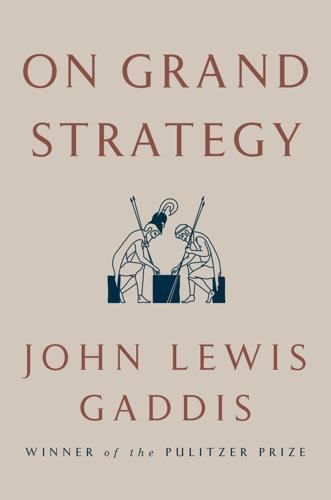
On Grand Strategy
by
John Lewis Gaddis
Published 3 Apr 2018
“We both must believe that it has.”68 XII. Perhaps it was. Rome’s subsequent history set standards unsurpassed since for dysfunctional ruling families and exposed imperial perimeters: still, by the strictest reckoning, the empire survived for four and a half centuries after Augustus’ death. Rome didn’t “fall” until 476. The Byzantine empire, founded by Constantine, would last for another thousand years; and his role in Christianizing the Roman empire would be at least as consequential as that of Augustus in establishing it. The Holy Roman empire, a European remnant of Roman rule, originated in 800 with Charlemagne—one of whose titles was “most serene Augustus”—and held itself together for its own thousand years, until Napoleon swept it aside.
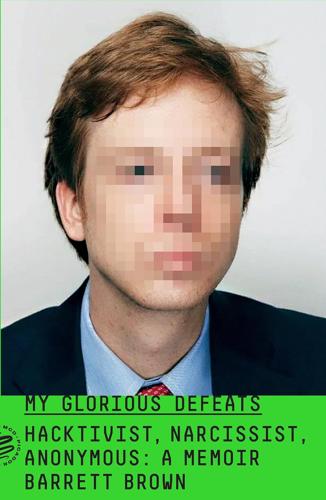
My Glorious Defeats: Hacktivist, Narcissist, Anonymous: A Memoir
by
Barrett Brown
Published 8 Jul 2024
Moreover, Scott’s terminology and findings would gradually be adopted by academics in Latin America to describe the networks of military and intelligence officials whose machinations were ultimately more relevant to the politics of a country than the state’s visible surface; just a few years ago, in publications like The Economist, one could find references to Egypt’s “deep state” of entrenched bureaucrats so powerful that even a dictator would have to contend with them in order to achieve basic reforms. It was a vastly useful concept, descriptive of phenomena ranging from the palace eunuchs who at times effectively controlled the Byzantine Empire to the networks of anti-communists, oil men, and intelligence assets who remained loyal to Allen Dulles well after the more “structured” portions of the government had relieved him of his official leadership of the CIA. And then, suddenly, these things were incorporated into the conceptual toolkit of people like Newt Gingrich and madness descended upon the land.
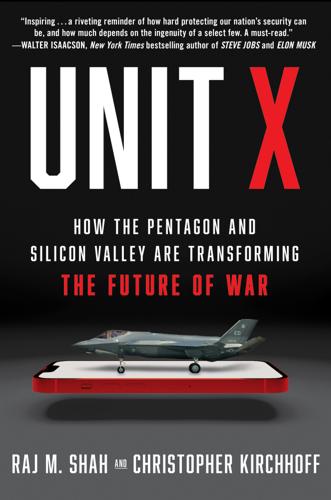
Unit X: How the Pentagon and Silicon Valley Are Transforming the Future of War
by
Raj M. Shah
and
Christopher Kirchhoff
Published 8 Jul 2024
It was unclear how a scrappy little band of people in a makeshift office was going to ferry key technologies across it. The Department of Defense is the largest organization in the world, with 3 million employees, a sprawling set of offices that oversee the army, air force, navy, and marines, more rules and regulations than the Byzantine Empire, and an ingrained resistance to change. This was the organization that fielded fighter jets with outdated navigation systems and operated command centers with decades-old mainframes running software so buggy that the bugs had bugs. Now they were going to start using artificial intelligence and iPhones?
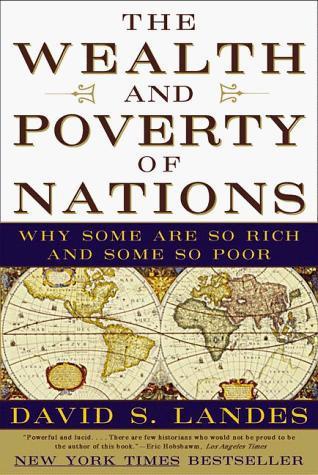
The Wealth and Poverty of Nations: Why Some Are So Rich and Some So Poor
by
David S. Landes
Published 14 Sep 1999
This warrior people was swift to move and keen for loot—very dangerous. The Greeks should have known it and seen them as potential, inevitable enemies. Instead, these pseudo-Hellenes, too clever by half, thought they could turn the Ottomans into tools and allies. So when, in the mid-fourteenth century, the Byzantine empire was riven by civil war, both sides began calling in Turks and Serbs (also invaders) for aid. This pattern went back centuries: co-opt the barbarians and get them to fight for rather than against you. Yet it’s a high-risk strategy to let the enemy into the house. He may like it too well. When the Serbs got ambitious and decided to replace the Greek dynasty by one of their own, the Greeks called once more on the Turks for help, which they gave.
…
Having beaten the Serbs, the Turks planted themselves in Gallipoli in 1354, then overran Thrace, and then in 1365 took Adrianople (the city of the Roman emperor Hadrian) as their new capital, a day’s march from Constantinople. Now the Ottomans had one foot firmly established in Europe and one in Asia Minor. The Byzantine “empire” was reduced to shrunken nodules, Christian islets in a Muslim sea; and the Ottomans, like other Asian invaders before them, began to imitate the pomp and ceremony of the Greek court, though in their own way. In 1453, when the Ottomans captured Constantinople and put an end to the Roman empire, bells tolled and worshippers mourned in courts and churches a thousand miles away.
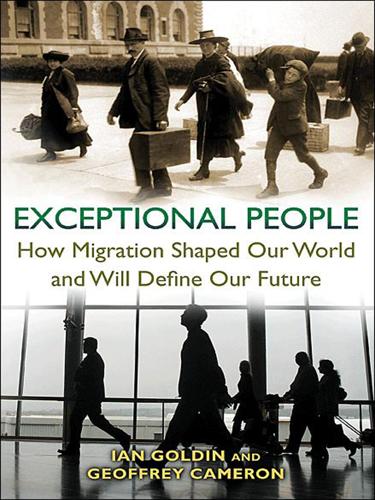
Exceptional People: How Migration Shaped Our World and Will Define Our Future
by
Ian Goldin
,
Geoffrey Cameron
and
Meera Balarajan
Published 20 Dec 2010
In this climate, the navy-backed Venetian shippers leveraged their coercive guarantee to slowly dominate trade from the late tenth century. What began as a merchant diaspora grew by the early thirteenth century into a trading-post empire with control over key ports throughout the Mediterranean. Venetian shippers provided transportation for Roman Catholic soldiers in the Fourth Crusade, which eventually toppled the Byzantine Empire in 1204 and allowed the Italians to capture ports in Greece, Acre, and the Black Sea. With these ports, the Italians established new contacts with overland traders traveling on the Silk Road to China. The increasing strength of Italy and the Holy Roman Empire marked the beginnings of the slow ascent of western European civilization.96 Italy's trading empire would provide the economic underpinning, the cross-cultural resources, and the artistic and intellectual stimuli to foster a culture that would eventually produce the Renaissance.97 Long-distance trade across the Asian continent was also shifting from slow and risky overland routes to swift seafaring passage.
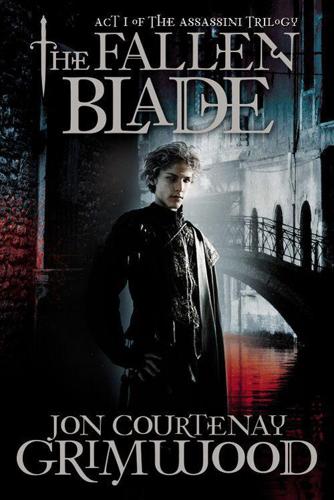
The Fallen Blade: Act One of the Assassini
by
Jon Courtenay Grimwood
Published 27 Jan 2011
As a child she’d been taken to see a toothless and naked patrician, who huddled in a freezing cell, filthy with his own faeces and sitting in a puddle of his own piss. Nicolo Paso led a rebellion in his youth. The so-called Second Republic, which lasted three years and saw a hundred senators beheaded in a single day when it fell. Paso was spared. His condition an object lesson in what awaited those who challenged the Millioni dynasty. She’d heard the Byzantine empire funded Paso’s treason. But then she’d heard the German emperor was to blame. And the Hungarian king, and the Mamluk sultan… Clearly, no one considered Paso might have thought of the rebellion himself. She kept that opinion to herself. “I’ve seen Paso’s cell,” she said, by way of apology. She couldn’t help being rude.
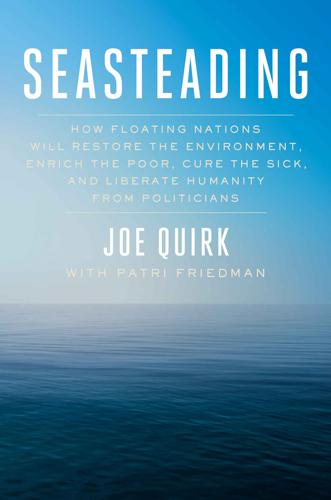
Seasteading: How Floating Nations Will Restore the Environment, Enrich the Poor, Cure the Sick, and Liberate Humanity From Politicians
by
Joe Quirk
and
Patri Friedman
Published 21 Mar 2017
From the ninth to the twelfth centuries, the Most Serene Republic of Venice, as it was then known, developed into a city-state thalassocracy, meaning “rule by sea,” developing an undefeatable Adriatic navy, eliminating piracy along the Dalmatian Coast, and becoming the wealthiest trade center in the world, connecting Western Europe, the Islamic world, and the Byzantine Empire. Venice dominated the Mediterranean Sea for a thousand years, producing explorers like Marco Polo, composers like Antonio Vivaldi, writers like Giovanni Giacomo Casanova, architects like Andrea Palladio, painters like Giorgione. If Venetians could build a wealthy republic a thousand years ago with little but muscle power and firewood, we can build floating cities with diesel and hydraulics.
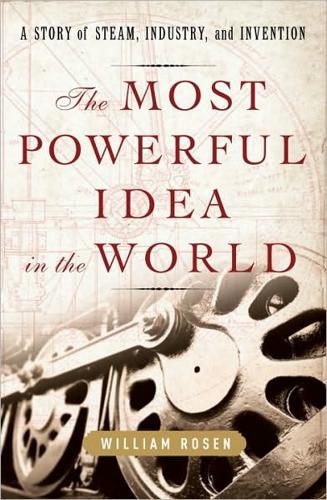
The Most Powerful Idea in the World: A Story of Steam, Industry, and Invention
by
William Rosen
Published 31 May 2010
CHAPTER TEN: TO GIVE ENGLAND THE POWER OF COTTON 1 Lombe was the son of a woolen weaver Anthony Calladine, “Lombe’s Mill: An Exercise in Reconstruction,” Industrial Archaeology 16, no. 1, Autumn 1993. 2 A single cocoon of B. mori Yong-woo Lee, Silk Reeling and Testing Manual, FAO Agricultural Services Bulletin no. 136, United Nations, Rome, 1999. 3 Silk from Chinese looms John Ferguson, “China and Rome” in Aufstieg und Niedergang der römischen Welt, vol. 9.2 (Berlin and New York: Walter de Gruyter, 1978). 4 The Turkish city of Bursa Robert Sabatino Lopez, “Silk Industry in the Byzantine Empire,” Speculum XX, January 1945. 5 In 1665, five Dutch ships Rudolf P. Matthee, The Politics of Trade in Safavid Iran: Silk for Silver, 1600–1730 (Cambridge and New York: Cambridge University Press, 1999). 6 It was Zonca’s machine Usher, History of Mechanical Inventions. 7 “three sorts of engines never before made” “Thomas Lombe” in Oxford Dictionary of National Biography. 8 The mill, which employed more than two hundred men Ibid. 9 “he has not hitherto received the intended benefit” Smiles, Men of Invention and Industry. 10 The case of the manufacturers of woolen “Thomas Lombe” in Oxford Dictionary of National Biography. 11 Only one silk spinning factory Abbott Payson Usher, “The Textile Industry, 1750–1830,” in Kranzberg and Pursell, eds., Technology in Western Civilization. 12 Even before the Company chose the village of Calcutta Landes, Wealth and Poverty of Nations. 13 Even then, it made for a very rough weave Woodruff D.
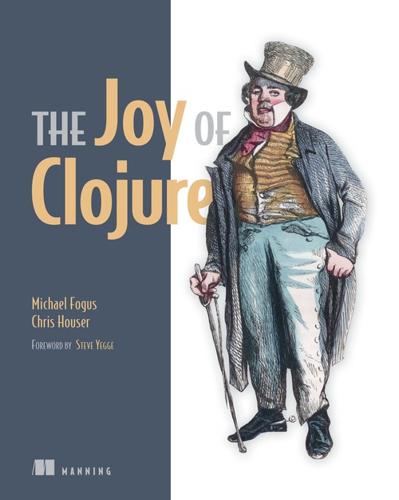
The Joy of Clojure
by
Michael Fogus
and
Chris Houser
Published 28 Nov 2010
In some sense, all this was inevitable, I think. Lisp—the notion of writing your code directly in tree form—is an idea that’s discovered time and again. People have tried all sorts of crazy alternatives, writing code in XML or in opaque binary formats or using cumbersome code generators. But their artificial Byzantine empires always fall into disrepair or crush themselves into collapse while Lisp, the road that wanders through time, remains simple, elegant, and pure. All we needed to get back on that road was a modern approach, and Rich Hickey has given it to us in Clojure. The Joy of Clojure just might help make Clojure as fun for you as it is for us.
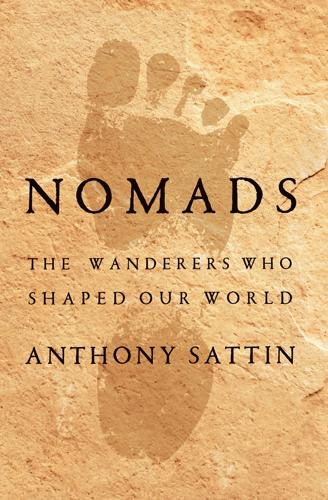
Nomads: The Wanderers Who Shaped Our World
by
Anthony Sattin
Published 25 May 2022
Page numbers in italic denote illustrations Abbas I 234–5 Abbas ibn Abd al-Muttalib 139 Abbasid Empire Arab identity, losing 146, 147–8 arts and sciences 143–5, 145, 149, 152 Baghdad 139–45 decline 151 establishment 139 Mongol conquest of 181–6 rise of 139 settlement 146 trade 141, 143 Abraham 17–18, 38 Abu Said 200 Achaemenid Empire Bisotun inscription 74–5, 88, 92 conquests and spread 73, 86 cultural exchanges 73 defeat by Alexander the Great 77 diversity 74–5, 76 Greece, relations with 95 nomadic character 73–4, 117 Persepolis 75–9, 79, 88–9 religious beliefs 75 Royal Road 74, 103 Scythians, inability to conquer the 86–92, 150–1 Achilles 68–9 acorns 295, 309 Adam and Eve 16 Adrianople (Edirne), Turkey 110 Aelia Galla Placidia 115 Agamemnon 66–7, 68–9 agriculture, development and spread of 23–4, 33–4, 35, 36, 54–5, 260 Ak Saray, Kesh, Uzbekistan 211 Alamut Castle, Iran 179–80 Alaric 111 Albion Flour Mill, London 263–5, 266 Aleppo, Syria 31, 186, 214 Alexander III, Pope 170 Alexander the Great 77, 79, 92 Almohads 131–2 America see Native Americans; United States of America al-Amin 144, 147 Amir Jang 289 Ammianus Marcellinus 110–11, 248 Amun 64 al-Andalus 124, 125 Andrew of Longjumeau 172 animal ornaments/designs 11, 126, 165, 170, 284 Antaxerxes I 75–6 Anu 39 Apollo Belvedere statue 252–3 Arab Empire arts and sciences 143–5, 148 Christian Crusades against 168–9, 169–70, 170–1 conquests and spread 135–7 early cities 138–9 under Ibn Abd al-Wahhab 267 identity 146–7, 148–9 Islam, acceptance of 135 language 148–9 Mongol conquests in 163, 164, 179–86 nomadic character 145 origins of Arabs 128–9 rise and fall 124 settlement and wealth 146 Sunni–Shi’a conflict 181 trade 143 see also Abbasid Empire Arabian Nights 51, 142 a’rab 128–9 Arabs (Mackintosh-Smith) 225 Arcadia 84–5 archers/archery Indo-Europeans 56 Mongols 153, 158, 162 Native Americans 268, 272, 280 Scythians 80, 88, 89 Xiongnu 100 see also bows, composite architecture/art, monumental 5, 18, 19–22, 25–6, 253 Ariaal 28–31, 304 art history 252–4 arts and crafts architecture/art, monumental 5, 18, 19–22, 25–6, 253 beginnings of 21–2 carved pillars/walls 19–20, 23, 24, 64, 65, 76, 79, 88–9 cave paintings 22, 28 ceramics 145, 149, 165, 178, 192–3, 205, 221, 233, 234, 235 figurines and statues 18, 38, 54, 60–1, 133, 252–3 gold and silver articles see gold and silver articles Greek 252–3 Isfahan 234 jewellery and ornaments see jewellery and ornaments Karakorum 167–8, 177 Mughal painting 237–8 Persepolis 75–9, 79, 88–9 Samarkand 211 Susa 76 Timur’s encouragement 211–12 wall paintings 37, 152 weaving 9, 177, 234, 299, 309–10 asabiyya defining 130 loss of 147, 151, 152, 186, 198, 231 power of 130–1, 137, 146, 197 wheel of fortune, turning 182, 228 Assassins 175, 179–80, 181, 184–5 astronomy and astrology 95, 181, 202, 222, 222, 255 Ataulf 115 Al-Attar 165 attention deficit hyperactivity disorder (ADHD) 29–30 Attila the Hun 106–7, 110–16, 137–8 Augustus 104 Australian Aborigines 28, 256–9, 262, 267, 283 Averroes (Ibn Rushd) 130 Aztecs 152 Babur 235–8 Babylon, Iraq 74, 77, 140 Bacon, Francis 239–40, 241–2, 243, 258, 259–60, 283 Bactrians 72, 76, 101, 102 Baghdad, Iraq 140–5, 146, 147, 151, 152, 162, 181–6, 219–20, 230, 284 Baha ud-Din Walad 164–5 Bakhtiari 1–2, 3, 74, 262, 288–90, 290, 291–3, 294–301, 304–10, 309 Balkans 136, 231–2 Banks, Joseph 255–8 ‘barbarian’, use of 8–9 Barquq, Sayf ad-Din 204–5, 214 Basra, Iraq 148 Bedouin 128–9, 130, 133, 148, 149 Beibars 187 Beja 308 Berbers 124–5, 126, 128, 131 Berke 189 Berlin, Germany 286 Beyazid I 207–8, 220 Bibi Khanum 210, 211, 221 Bible 15, 16–17, 32, 34–5, 62, 242–3 bird ornaments/designs 92, 116, 143, 145, 158, 178, 235, 282, 290 bison 47, 271–2, 274, 281 Bisotun/Behistun inscription, Iran 74–5, 88, 92 Black Death 124, 125, 199–203, 203, 204, 205 Blake, William 265 boats/ships see ships Boccaccio, Giovanni 201–2 Book of Descriptions of Countries and of Measures Employed in Business (Pegolotti) 190 Book of the Images of the Fixed Stars (al-Sufi) 222 Books of Odes, The 96 borders 81–2 see also freedom of movement Borte 153, 154, 157 Boswell, James 250 Botai, Kazakhstan 49 Bowie, David 30 Bowlby, John 302 bows, composite 57, 58, 64, 65, 80, 158, 183 see also archers/archery Boyle, Robert 259 Briseis 68 Britain Albion Flour Mill, London 263–5, 266 antisemitism 169 Black Death 201 capitalism 263–4 colonialism and imperialism 241, 246–8, 254–9, 262, 265, 267, 278–9, 283 income disparities 262 Industrial Revolution 259–61, 263–5 land enclosure 262 Omdurman, Battle of 308 population growth 261–2, 284 Romantics 285 urbanisation 261, 284, 285 British Museum 41–2, 253–4, 254 Buchier, William 176 Buddhism 140–1, 173, 193–4 Bukhara, Uzbekistan 162 burials/tombs 48–9, 52–3, 57, 65, 66–7, 91, 116, 211 see also grave goods Bursa, Turkey 208, 230, 231 Byron, George Gordon, 6th Baron 2 Byron, Robert 208–9, 210 Byzantine Empire 105–7, 109–10, 112–14, 132, 133, 134, 135–6, 230 see also Constantinople (Istanbul), Turkey Cain and Abel 32, 34–5, 61, 123, 243 Cairo, Egypt 60–1, 138, 204–5 campfires 294 Carson, Rachel 297 carved pillars/walls 19–20, 23, 24, 64, 65, 76, 79, 88–9 Çatalhöyük, Turkey 36–8, 38 Cavafy, Constantine 307–8 Cave of Blood, Syria 32 cave paintings 22, 28 ceramics 145, 149, 165, 178, 192–3, 205, 221, 233, 234, 235 Chagatai 189 Chang’an, China 99, 143, 284 chariots 50, 56, 57, 62, 64, 65, 65 Chatwin, Bruce 4, 77–9, 301–2 Chekhov, Anton 47 Cherokee 273, 278–9 Chia I 100 children of the sky god 50–4 China agriculture, development and spread of 33 Black Death 200 ceramics 192–3, 234 Han Empire see Han Empire, China inventions 240 Mongol conquests in 158, 167, 188, 189 Mongols, decline of 206 navy 195–6 North Plain 47 paper 145 trade 50, 100–1, 102, 103–4, 143, 177, 190–1, 192, 195–6, 212, 227 Zhungar genocide 251 Chopel, T.

Fortune's Bazaar: the Making of Hong Kong: The Making of Hong Kong
by
Vaudine England
Published 16 May 2023
Living in the same factory there as the Parsis were members of another important diasporic trading community, the Armenians; indeed, it was an Armenian ship that brought the first Parsi to Canton, a Mr. Readymoney, in 1756. Armenia once stretched from the Mediterranean to the Caspian Sea before coming up against the Roman and Byzantine empires, the Seljuk Turks, then the Russian invasion of 1828, after which it was divided into Turkish, Persian, and Russian portions. At least a million Armenians died in the Turkish genocide of 1915; by the end of 1920 all that was left was Soviet Armenia, one tenth of the original. Throughout, Armenians kept alive their language and their two Christianities (Catholic Armenian and Armenian Orthodox).

The Wars of Afghanistan
by
Peter Tomsen
Published 30 May 2011
Bellew listed White Hun and Pashtun shared attributes: “the rigid law of hospitality, the protection given to the refugee, the jealousy of female honour, the warlike spirit and insufferance of control, the pride of race, the jealousy of national honour and personal dignity, the spirit that loves to domineer.”12 Instability and political anarchy shook Afghanistan and Central Asia after the White Huns marched through. Turkish tribes invaded in the tenth century, ransacking and pillaging down to the Indus Basin and through Persia into Anatolia. (In 1453, the Saljuk Turks overthrew the Byzantine Empire and established the Ottoman Dynasty, which lasted until World War I.) The great Arab expansion after Mohammed’s death in 632 largely missed Afghanistan, 13 but it extended into Central Asia north of the Amu Darya, converting Turkish-speaking tribes to Islam; Arab and Turkish Muslim spiritual proselytes followed the Turkic sword into Afghanistan, conveying Islam’s message.
…
Bosnia Botsali, Avni Boutros-Ghali, Boutros Brahimi, Lashkar Brezhnev Doctrine Brezhnev, Leonid Brims, John Britain British India (chart) Brown, Gordon Brown, Harold Brutents, Karen Brzezinski, Zbigniew Buddhism Buffer status Burnes, Alexander Bush, George H. W. Bush, George W. Bush (G.H.W.) administration Bush (G.W.) administration Byrd, Robert Byzantine Empire Caldwell, William Calvin, John Calvinism Cambodia Cameron, David Campbell, Charles “Hondo,” Canada Cannistraro, Vince Carrhae, Battle of Carter administration Carter Doctrine Carter, Jimmy Carville, James Casey, William Catholics Caucasus Cawthorne, William Celoi, Claudio Center-region balance, importance of Central Asia and the buffer zone migrations and invasions involving (table) Central Intelligence Agency (CIA) and Afghan policy continued dominance of the, in decision making criticism of, in the wake of Abdul Haq’s death dependence on ISI reports drone attacks by the and the ending of the Afghan communist era funding from gap between the State Department and insular mentality of the and intelligence shortfalls and McWilliams policy recommendation opposition to Abdul Haq overreliance on the as policy-implementers as policymakers and the power grab by Gul Agha and the Soviet-Afghan war and the Stinger missile recovery issue subsidizing many unpopular warlords Central Treaty Organization (CENTO) Charkhi borthers Chebrikov, Anatoly Cheney, Dick Chenzaie, Rahim Chernyenko, Konstantin China border agreements with defusing concerns of, about U.S. bases and Muslim Xinjiang province (table) Pakistan’s relations with and the Soviet Union Christianity/Christians Christopher, Warren Civil Action Police Civil law Civil services, providing, assisting in Civilian assistance, low level of Civilian casualty issue Civilian presence Clarke, Richard Class-warfare strategems, inapplicability of Clinton administration Clinton, Bill Clinton, Hillary Cold War Coles, Sir John Coll, Steve Communism Communist era (Soviet-supported) coup leading to the ending of the internecine clashes during the (chart) movement heading toward the ruined country left from the See also People’s Democratic Party of Afghanistan (PDPA) Communist Party of the Soviet Union (CPSU).
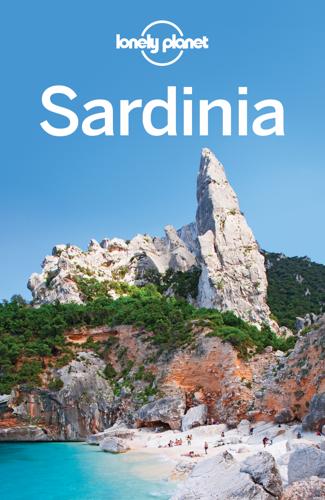
Sardinia Travel Guide
by
Lonely Planet
Julius Caesar declared Karalis a Roman municipality in 46 BC. For centuries it remained a prosperous port, heading the grain trade with mainland Italy, but with the eclipse of Rome’s power came more turbulent times. Vandals operating out of North Africa stormed into the city in AD 455, only to be unseated by the Byzantine Empire in 533. By the 11th century, weakening Byzantine influence (accentuated by repeated Arab raids) led Cagliari and the other districts to become virtually autonomous. In 1258 the Pisans took the town, fortified the Castello area and replaced the local population with Pisans. A similar fate awaited them when the Catalano-Aragonese took over in 1326.
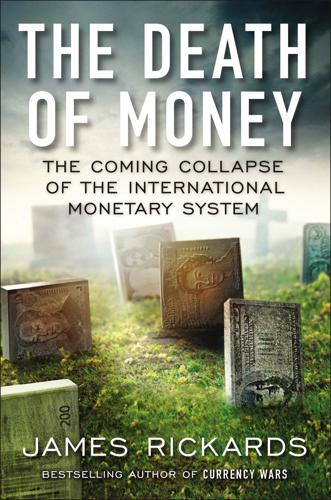
The Death of Money: The Coming Collapse of the International Monetary System
by
James Rickards
Published 7 Apr 2014
The European monetary standard prior to Charlemagne was a gold sou, derived from solidus, a Byzantine Roman coin introduced by Emperor Constantine I in A.D. 312. Gold had been supplied to the Roman Empire since ancient times from sources near the Upper Nile and Anatolia. However, Islam’s rise in the seventh century, and losses in Italy to the Byzantine Empire, cut off trade routes between East and West. This resulted in a gold shortage and tight monetary conditions in Charlemagne’s western empire. He engaged in an early form of quantitative easing by switching to a silver standard, since silver was far more plentiful than gold in the West. He also created a single currency, the livre carolinienne, equal to a pound of silver, as a measure of weight and money, and the coin of the realm was the denire, equal to one-twentieth of a sou.
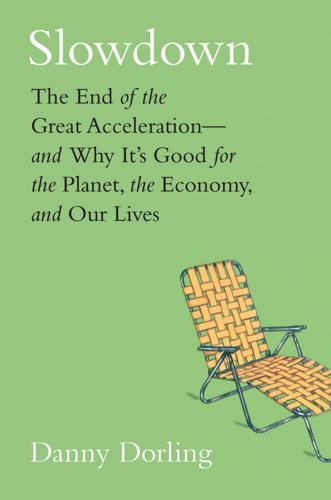
Slowdown: The End of the Great Acceleration―and Why It’s Good for the Planet, the Economy, and Our Lives
by
Danny Dorling
and
Kirsten McClure
Published 18 May 2020
It is outsized because it is the former heart of the greatest empire the world has ever known. Moscow is oversized because it was once the capital of the USSR, and Istanbul is so large today only because it was once the nerve center of the Ottoman Empire, and before that of the Holy Roman and Byzantine Empires. The three largest U.S. cities are also largely relics of bygone, if more recent, eras when each was in its prime. The fourth-largest city, Houston (Texas), with just over 2 million inhabitants, is a relic of the time when oil was king. Europe’s fourth-largest city is Madrid, with 3 million residents.

Water: A Biography
by
Giulio Boccaletti
Published 13 Sep 2021
The journey that started with the first sedentary societies and ended with the fall of the Western Roman Empire encompasses over 90 percent of the timeline of recorded histroy. Its episodes describe cycles of institutional development, abstraction, and diffusion that cemented each society’s experience, bequeathing it to its successors. The legacy of that journey spread far and wide, through the Byzantine Empire and the Caliphate, to Medieval Europe and into modernity. Even Sun Yat-sen, when lecturing on liberty and democracy, made ample references to Rome and Greece. Roman republican institutions had been gone for two millennia—Greek institutions for even longer—yet they seemed as politically salient to him as his contemporary political situation.
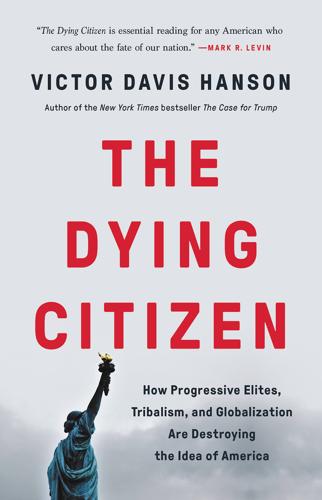
The Dying Citizen: How Progressive Elites, Tribalism, and Globalization Are Destroying the Idea of America
by
Victor Davis Hanson
Published 15 Nov 2021
Vandals, Visigoths, Ostrogoths, Huns, Sasanians, and a host of other tribes and migrant and aggressive peoples had picked apart most of the empire in the West and the old borders in the East. Roman globalization was dead, the empire fragmented into mostly early-European and Byzantine regional hegemonies. Not surprisingly, the Roman Empire in the East, administered from Constantinople, would survive for another one thousand years. In part, what became known as the Byzantine Empire was, amid general collapse, better able to establish defensible borders and to ensure greater uniformity in language, population, and values, better codification and fair application of Roman law, and a more clearly defined, uniform, and enforced idea of its citizenship. Today “Byzantine” may be a pejorative term denoting either inefficient bureaucracy or a garrison state.
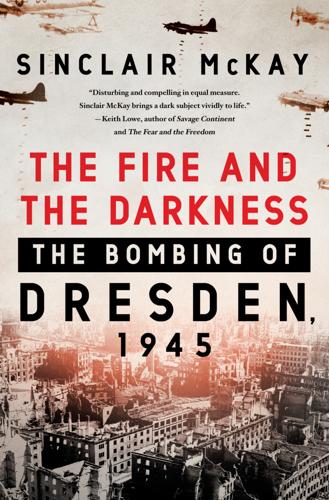
The Fire and the Darkness: The Bombing of Dresden, 1945
by
Sinclair McKay
Academy of Fine Arts (Dresden) Academy of Fine Arts (Vienna) accuracy of bombing raids; see also bomb aimers; marker flares; target indicators Ackermann, Gerhard aerial photography aimers see bomb aimers Altmarkt (Dresden); wartime reservoirs Altstadt (Dresden); during air raids of; February 1945; destruction and fires; aftermath of raids; post-war; see also Frauenkirche; Kreuzkirche aluminium works American servicemen in Britain animals see pets; zoo animals anti-aircraft operations anti-Semitism: pre-Nazi era Germany; escalation under Nazis; introduction of anti-Semitic laws; and the arts; see also Jews Ardennes offensive see Bulge, Battle of the Arnhem: battle of (1944); Allied capture Arnhold family Arnold-Foster, Mark Arnsdorf artistic life Ascherson, Neal asphyxiation, deaths by Assyrians atomic and nuclear weapons: development of; use of Auber, Daniel, Fra Diavolo Auerbach, Anita Augustus II ‘the Strong’, Elector of Saxony; relics Auschwitz concentration camp Avro Lancaster see Lancaster (bomber aircraft) B-17 (bomber aircraft) B-24 (bomber aircraft) B-29 (bomber aircraft) Bach, Johann Sebastian Baedeker Raids Bähr, George Bakunin, Mikhail Baldwin, Stanley (later 1st Earl Baldwin of Bewdley) ball-bearing factories banking Barkhausen, Heinrich Bath; bombing of Bayreuth festival BBC (British Broadcasting Corporation); propaganda unit Beethoven, Ludwig van; Ninth Symphony Bell, George, Bishop of Chichester Bellotto, Bernardo; ‘Dresden from the Right Bank of the Elbe’ bells, church Bergen-Belsen concentration camp Berger, Günter Berlin: Olympic Games (1936); Allied bombing raids; defensive plans against Soviet invasion; post-war division; see also Thunderclap, Operation Bevan, Aneurin Bielss, Winfried: family background; character and hobbies; wartime life in Dresden; in Hitler Youth; during day of 13 February 1945; during approach of Allied bombers; in cellar during first wave of bombing; emergence from shelter and observation of destruction and fires; during second wave of bombing; on morning of February; during third wave of bombing; in aftermath of raids Billy, Method Cyril (‘Brother Billy’) Bismarck, Otto von Blackman, Frank blackout regulations Blank, Margarete Bletchley Park (Government Code and Cypher School) Bleyl, Fritz blindness and eye-damage caused by bombing raids Blitz (German bombing of Britain) ‘Blockbuster’ bombs Bloxham, Donald ‘Bob Gerry Troupe’ (circus act) Bohemia, Napoleonic Wars Bohemia and Moravia, Protectorate of; see also Prague Böhme KG (toolmaking company) Böhme, Kurt Bolshevik Revolution (1917) bomb aimers Bomber Command (Royal Air Force): casualty totals and survival rates; characteristics, operations and daily life of crews; development of bombing strategies; headquarters; planning and preparation for Dresden raids; post-war reputation; recruitment and training Bombing Restriction Committee Bonn, bombing of Böttger, Johann Friedrich Bottomley, Sir Norman ‘bouncing bomb’ Bowlby, Chris Brabner, Rupert Bremen; bombing of Breslau brewing and breweries Britain, Battle of (1940–41) Brittain, Vera; Seed of Chaos Brücke, Die (artists’ group) Brueghel, Jan the Elder Buchenwald concentration camp Bulge, Battle of the (Ardennes offensive; 1944–45) Bürgel, Norbert burial and cremation of dead Burke, Bill Bury St Edmunds; Angel Hotel; library Busch, Fritz buses Byzantine Empire Cabinet des Dr Caligari, Das (film) Cambridge Cambridge University cameras: manufacture of; use in aircraft; see also photography Canterbury, bombing of Cappel, Friedrich and Louise casualty totals: British civilians; concentration camp victims; German civilians; RAF Bomber Command crews; USAAF crews Catholic cathedral (Dresden); bells; destruction of; repair and rebuilding of Chamberlain, Neville Chemnitz; bombing of Cherwell, Frederick Lindemann, 1st Viscount children (British) children (German): wartime life in Dresden; military roles in anti-aircraft operations; during air raids of; February 1945; in aftermath of raids; post-war; see also Hitler Youth; League of German Girls; schools and schooling choir see Kreuzchor ‘Christmas trees’ (marker flares) Churchill, Sir Winston: family background; early views on future weaponry; wartime prime minister; and development of bombing campaign against German cities; at Yalta Conference; reaction to Dresden raids and questioning of area bombing strategy; post-war life cinema and film circuses Clemens, Hans coal supplies codebreaking Coeburn (Virginia) Cologne, bombing of Combined Strategic Targets Committee combustible weapons, development of commemoration of Dresden raids communists, German: wartime; post-war concentration camps: public awareness of in Germany; discovered by Allies; return of prisoners to Dresden; see also Auschwitz; Bergen-Belsen; Buchenwald; Dachau; Flossenbürg; Neuengamme; Ravensbrück; Theresienstadt Constantine Pogonatus, Byzantine Emperor Constantinople, Siege of (717) ‘Cookie’ bombs Cook’s Tours Cosel, Anna Constantia von Brockdorff, Countess of Courtney, Dame Kathleen Coventry: bombing of; twinned with Dresden Cowan, Howard cowboys and Wild West iconography Cox, Jane (later Vonnegut) cremation and burial of dead ‘crooked music’ (Schräge Musik; Luftwaffe fighter aircraft technique) Croydon Czechoslovakia: bombing raids; expulsion of Sudeten Germans; Jewish population; resistance groups; see also Bohemia; Prague Dachau concentration camp Dadaism Dahl, Johan Christian, ‘View of Dresden at Full Moon’ Daily Mail Daily Mirror Daily Record (English-language Dresden newspaper) Daily Telegraph ‘dambuster’ raids Danos, Mischka: background and early life; views and beliefs; post at Dresden Technical University; during day and evening of 13 February 1945; during first wave of bombing; emergence from shelter and observation of destruction and fires; during second wave of bombing; on morning of 14 February; in aftermath of raids Dartmouth, William Legge, 2nd Earl of de Waal, Edmund ‘de-housing’ (bombing raid objective) de Jong, Pia death toll see casualty totals Deenethorpe (Northamptonshire), RAF base ‘degenerate art’ dental hygiene dentistry deserters (German) Dietrich, Hertha Dippoldiswalde disabled people, forced sterilization of Dix, Otto Dönitz, Karl Dortmund, bombing of Dostoyevsky, Fyodor Double Indemnity (film) Douhet, Giulio, The Command of the Air Dowding, Hugh, 1st Baron ‘dragon twists’ see fire tornadoes Dresden (character & features): air-raid shelters; air-raid warning systems; anglophone community; anti-aircraft operations; artistic life; banking and insurance companies; breweries; bridges; cemeteries; comparisons with other cities; cultural reputation; English-language usage; hospitals; hotels; housing; hygiene and cleanliness; as ‘jewel box’; landscape and surroundings; literary life; location; manufacturing industry; mayors see Kluge, Rudolf; Nieland, Hans; musical life; parks; popular entertainment; population total; porcelain industry; public transport see buses; railways; trams; religious life; restaurants and cafés; schools; scientific life; shops; theatres and theatrical life; time zone; tourists and international visitors; trees and gardens; twinned with Coventry; universities; vineyards Dresden (history & development): 17th century; 18th century; 19th century; early 20th century; 1930s and early 1940s; autumn and winter of 1944–45; first air raids; the day and evening of 13 February 1945; sounding of air-raid sirens and taking to shelters; approach of Allied bombers; dropping of marker flares and target indicators; first bombing wave; sounding of all-clear sirens; emergence from shelters and observation of destruction; attempts to control fires; immediate physical and mental effects on survivors; second wave of bombing; the morning of 14 February; third wave of bombing; aftermath of raids; efforts to restore control and normality; burial and cremation of dead; further American bombing raid in March 1945; defences against approaching Allied armies; Red Army enters; under Soviet control; in German Democratic Republic; reconstruction; post-reunification Dresden (landmarks & places): abattoir; Academy of Fine Arts; Alaunstrasse; Albert Bridge; Albertinum (art museum); Alsberg/Möbius (shop); Altmarkt see under Altmarkt; Altstadt see under Altstadt; Augustus Bridge; Bautzner Strasse; Blue Wonder (Loschwitz) bridge; Böhme (department store); Bohnert (philately shop); Brühl’s Terrace; Carolabrücke; castle (Schloss/Royal Palace); cathedral see under Catholic cathedral; central railway station; Central Theatre; cigarette factory; Continental Hotel; courthouse; Deaconess Institute (hospital); Dölzschen; Dresden Heath; Engelmann (philately shop); Felsenkeller brewery; Frauenkirche see under Frauenkirche; Friedrichstadt see under Friedrichstadt; Goehle-Werk (manufacturing plant); Gohlis; Gorbitz; Great Garden park; Heidehof Hotel; Hygiene Museum; Jägerstrasse; Japanese Palace; Jewish cemetery; Johannstadt see under Johannstadt; Katharinenstrasse; Klotzsche aerodrome; Kreuzkirche see under Kreuzkirche; Kreuzschule see under Kreuzschule; Loschwitz (Blue Wonder) bridge; Lothringerstrasse; malt syrup factory; Mathilde (prison); Müller Gelinek school; Museum of Military History; Neumarkt; Neustadt see under Neustadt; Old Masters Picture Gallery; Ostragehege (sports stadium); Palace of Culture; Pfunds Molkerei (dairy shop); Pieschen; Plauen; police headquarters; Prager Strasse; Radebeul; Rathaus; Renner (department store); Russian Orthodox church; Sachsenplatz; Sanger Strasse; Schloss Eckberg; Schlossplatz; Schnorrstrasse; Seidel und Naumann factory; Semper Opera House; Semper Synagogue; Striesener Plaza; Striesener Strasse; Summer Palace; Taschenberg Palace; Taschenberg Square; Technical University; Universum Kino; Villa Stockhausen; Vitzthum-Gymnasium (school); Waldschlösschen; White Bow (restaurant); Wilsdruffer Strasse; Zeiss Ikon works; Zeughausstrasse; Zittauer Strasse; zoo; Zwinger Palace see under Zwinger Palace; Zwingergarten Dresden Opera Company, London tour (1936) Dresden Philharmonic Orchestra Dresden Technical University Dresden Trust (British charity) Dresdner Bank Dundee Düsseldorf, bombing of Dyson, Freeman D-Day (Allied invasion of Europe; 1944) Eaker, Ira earthquakes East Germany see German Democratic Republic Eder dam, bombing of Eighth Air Force (USAAF) Eisenach Eisenhower, Dwight D.

Super Continent: The Logic of Eurasian Integration
by
Kent E. Calder
Published 28 Apr 2019
Then came the Kushan Empire, which helped to transmit Buddhism from India to China, built the famous Bamiyan Buddha later destroyed by the Taliban, and ruled Afghanistan, as well as parts of India and Central Asia, from 130 BC to AD 300. Caravan and trading cities such as Petra, Palmyra, and Sogdiana were also important, both in this early period, and for close to a thousand years thereafter, as was the Byzantine Empire until its collapse in AD 1453 with the fall of Constantinople to the Turks. The importance of the classic Silk Road to the evolution of Chinese, Western, and Islamic civilizations is little known but difficult to overstate. The role of spices in Chinese cuisine, introduced from Persia during the Tang dynasty, was one concrete and enduring result of such confluence, as was the role of paper and gunpowder introduced from China into the West.

The Hour of Fate
by
Susan Berfield
He adopted their father’s motto, “Get action.” It would eventually become an apt description of his whirling, turbulent energy. He would become a man of extreme enthusiasms and vitality. He read with near total recall, soaked up information from everyone he drew close, and then burst forth with opinions on the Byzantine Empire, the Volsunga Saga, Western irrigation, bird songs, the strenuous life. He never sat when he could stand. When provoked, he would thrust, and when he hit, he hit hard. Friends said he was steamed up, a swift and awful Chicago express, a wonder of nature. But when Theodore entered Harvard at seventeen, he was still a scrawny, sheltered boy—and one with a snobbish sense of morality and outsized confidence.
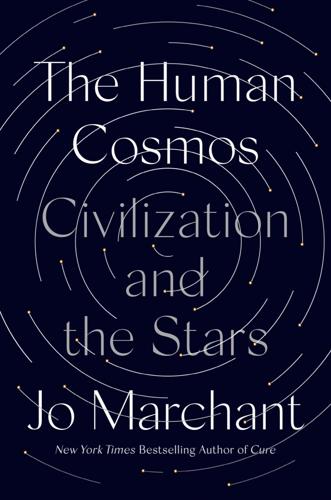
The Human Cosmos: A Secret History of the Stars
by
Jo Marchant
Published 15 Jan 2020
He had developed leprosy.* * * * Almost exactly a thousand years had passed since Constantine unified the Roman Empire behind the new Christian capital of Constantinople. In the centuries after the emperor’s death, civilization flourished in his eastern territories (later known as the Byzantine Empire), as well as in the Islamic world, where scholars translated and built on the knowledge of classical antiquity. But the western part of the Roman world never recovered from the shift in influence to the east. Partly because of a huge influx of Germanic migrants from the north, the emperors in Constantinople were unable to hold control over these distant regions.
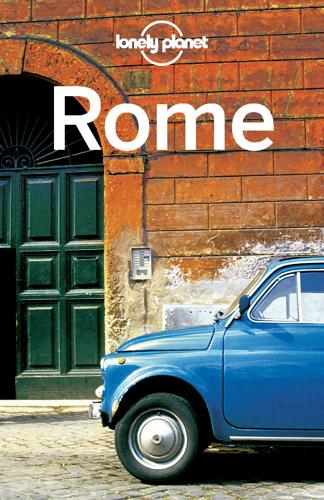
Rome
by
Lonely Planet
The persecution is a thinly disguised ploy to win back popularity after the great fire of 64 AD. 80 The 50,000-seat Flavian Amphitheatre, better known as the Colosseum, is inaugurated by Emperor Titus. Five thousand animals are slaughtered in the 100-day opening games. 285 To control anarchy within the Roman Empire, Diocletian splits it into two. The eastern half is later incorporated into the Byzantine Empire; the western half falls to the barbarians. 313 A year after his victory at the Battle of Milvian Bridge, the Emperor Constantine issues the Edict of Milan, officially establishing religious tolerance and legally ending anti-Christianity persecution. 476 The fall of Romulus Augustulus marks the end of the Western Empire.
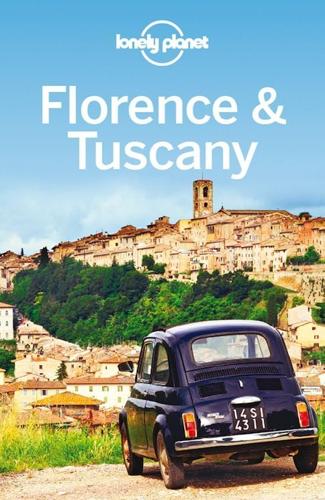
Lonely Planet Florence & Tuscany
by
Lonely Planet
,
Virginia Maxwell
and
Nicola Williams
Published 1 Dec 2013
Art & Architecture Glossary Annunciation the appearance of the Angel Gabriel to Mary to tell her that she will bear the Son of God apse a vaulted semicircular or polygonal recess, especially at the end of a choir in a church architrave 1. the part of the entablature that holds columns in place; 2. a band of mouldings or other ornamentation atop or around openings or panels atrium forecourt badia abbey baldacchino canopy, usually over a high altar in a basilica basilica an early or medieval Christian church with a ground plan similar to or derived from the Roman basilica bas-relief sculpture in low relief battistero a church building in which baptism was/is administered Byzantine art and architecture of the Byzantine Empire; predated the Romanesque, Gothic and Renaissance movements campanile bell tower cappella chapel cartoon a full-size preparatory drawing for a painting or fresco cella sanctuary of a temple cenacolo scene of the Last Supper (often in the refectory of a convent or monastery) chiaroscuro literally ‘light-dark’; artistic distribution of light and dark areas in a painting chiostro cloister; a rectangular open space surrounded by a covered walkway clerestory upper part of the nave wall of a church featuring windows coffer ornamental sunken panel in a ceiling colonnade a series of columns set at regular intervals, and usually supporting an entablature, a roof or a series of arches cornice 1. a horizontal moulded projection that crowns or finishes a wall or building; 2. the uppermost division of an entablature, resting on the frieze; 3. the moulding(s) between the walls and ceiling of a room cortile courtyard cruciform cross-shaped crypt underground chamber or vault used as a burial place cupola a rounded vault or dome diptych painting or carving with two panels; usually small and portable and often used as an altarpiece duomo cathedral entablature sits on top of a row of columns on a classical facade; includes an architrave, the decorative frieze atop that and the triangular pediment to cap it off exedra semicircular recess ex-voto tablet or small painting expressing gratitude to a saint font receptacle, usually made of stone, that holds the water used in baptisms fresco painting executed on wet plaster frieze the part of an entablature between the architrave and the cornice, commonly ornamented with sculpture Gothic style of art and architecture in the late medieval period; popular from the 12th century grisaille technique of monochrome painting in shades of grey loggia 1. covered area on the side of a building; 2. porch; 3. lodge lunette semicircular space in a vault or ceiling or above a door or window; often decorated with a fresco or painting Madonna della Misericordia literally ‘Madonna of Mercy’; in art, an iconic formula showing a group of people seeking protection under the outspread cloak of the Madonna Maestà literally ‘Majesty’; in art, an iconic formula of the enthroned Madonna with Christ Child, often surrounded by angels and saints mausoleo mausoleum; stately and magnificent tomb narthex vestibule along the facade of an early Christian church nave the main body, or middle part (lengthwise), of a church, flanked by aisles and extending typically from the entrance to the apse necropolis ancient cemetery or burial site oculus round window pediment a low triangular gable crowned with a projecting cornice, especially over a portico or porch at the end of a gable-roofed building piano nobile main floor of a palace Pietà literally ‘pity’ or ‘compassion’; sculpture, drawing or painting of the dead Christ being held by the Madonna pietra forte fine sandstone used as a building material pietra serena greenish-grey ‘serene stone’ pieve parish church, usually in a rural setting pinacoteca art gallery podium a low continuous structure serving as a base or terrace wall polyptych painting or carving consisting of more than three panels; usually used as an altarpiece porphyry dark blue-, purple- or red-coloured rock portico a structure consisting of a roof supported by columns or piers forming the entrance to a church or other building predella small painting or panel attached below a large altarpiece presbytery eastern part of a church chancel, beyond the choir pulpit a platform or raised structure in a church from which a priest delivers a sermon quadriporto four-sided porch quatrefoil four-lobed design relief an apparent projection of parts in a sculpture or frieze giving the appearance of the third dimension Renaissance cultural movement that started in Florence; period c 14th to 17th centuries Romanesque architecture of the early Western Christian empire c 6th to 12th centuries rose window circular window divided into sections by stone mullions and tracery; usually found in Gothic churches rustification stone with a chiselled, rough-hewn look sacristy room in a church where the sacred vessels, vestments etc are kept sanctuaio sanctuary; the part of a church above the altar sfumato hazy blending of colours and blurring of outlines; used in painting sgraffito a surface covered with plaster, then scratched away to create a 3D trompe l’œil effect of carved stone or brick sinopia working sketch for a fresco spolia creative reuse of ancient monuments in new structures stele upright stone with carved inscription or image stemma coat of arms stigmata marks appearing on a saint’s body in the same places as the wounds of Christ stucco plasterwork tabernacle in Christianity, a locked box in which the communion wafers and wine are stored tempera powdered pigment bound together with a mixture of egg and water; used in painting tesoro treasury tesserae small cubes of marble, stone or glass used in mosaic work tondo circular painting or relief transept the transverse portion(s) of a cruciform church travertine limestone used in paving and building triptych painting or carving over three panels, hinged so that the outer panels fold over the middle one; often used as an altarpiece tufa soft volcanic rock vault arched structure forming a ceiling or roof vestibule passage, hall or antechamber between the outer door and interior parts of a building SURVIVE Directory A–Z Accommodation Climate Customs Regulations Discount Cards Electricity Embassies & Consulates Food Gay & Lesbian Travellers Health Insurance Internet Access Legal Matters Maps Money Opening Hours Post Public Holidays Telephone Time Tourist Information Travellers with Disabilities Visas Transport Entering the Country Air Land Sea To/From the Airport Bicycle Boat Bus Car & Motorcycle Local Transport Train Directory A–Z BOOK YOUR STAY ONLINE For more accommodation reviews by Lonely Planet authors, check out http://hotels.lonelyplanet.com.

Connectography: Mapping the Future of Global Civilization
by
Parag Khanna
Published 18 Apr 2016
Secession is unconstitutional in both Spain and Italy, even if pursued through fully enfranchised provincial plebiscites. But devolution and connectivity enable such networked cities to reclaim their independent heritage. During the Middle Ages, Venice ran its own trading empire along the Adriatic coast, developed strong economic ties with the Byzantine Empire, and sent two hundred ships to capture the Syrian coast. Along with many other great European city-states of the premodern world, Venice was eventually subsumed into the nation-state order. But today, with Italy’s national economy in shambles, little is stopping Venice from going it alone. In 2014, the province of Veneto in Italy actually declared independence, calculating that it receives only 5 euros in government services for every 7 it pays to Rome in taxes.

Multitude: War and Democracy in the Age of Empire
by
Michael Hardt
and
Antonio Negri
Published 1 Jan 2004
The later, Byzantine version, in contrast, consolidated power under one rule, raising up the Basileus, the Holy Roman Emperor, above aristocratic and popular control. The Byzantine emperor was a new Moses who handed down tablets of laws directly from God; he was a new Elijah who rose up to the heavens and thus was the sole mediator between the human and the divine, Christlike in his redemptive mission of government. In the Byzantine Empire power was thus sanctified and its legitimation directly divine. The emperor and the high priest, imperium and sacerdotium, tended to merge into a single figure. One of the weapons used in Byzantium to defend this centralized power against both the distributed Latin model of government and any democratic spirit or popular resistance was the ban on holy images, or iconoclasm.

Corporate Warriors: The Rise of the Privatized Military Industry
by
Peter Warren Singer
Published 1 Jan 2003
For example, Rome recruited Numidians, Balearics, Gauls, Iberians, and Cretans during the Punic Wars. As the empire grew, the scope of these hired units gradually expanded, as it became relatively harder to recruit native Romans into the force. At the end of the third century c.E. the imperial army was more Germanic than Roman.12 Likewise, the rulers of the follow-on Byzantine empire also came to depend on the military expertise of foreigners to fight their battles. These foreigners included the noted Varangian Guard, Byzantium's most elite force, which was made up of hired Norse- THE RISE men.13 Its Muslim opponents often included hired units as well, including the famous Mamalukes, who would eventually take over the rule of Egypt and other places.14 THE MIDDLE AGES: A RETURN TO OPEN MILITARY MARKETS After the fall of the Roman empire.

Florence & Tuscany
by
Lonely Planet
Art & Architecture Glossary Annunciation the appearance of the Angel Gabriel to Mary to tell her that she will bear the Son of God apse a vaulted semicircular or polygonal recess, especially at the end of a choir in a church architrave 1. the part of the entablature that holds columns in place; 2. a band of mouldings or other ornamentation atop or around openings or panels atrium forecourt badia abbey baldacchino canopy, usually over a high altar in a basilica basilica an early or medieval Christian church with a ground plan similar to or derived from the Roman basilica bas-relief sculpture in low relief battistero a church building in which baptism was/is administered Byzantine art and architecture of the Byzantine Empire; predated the Romanesque, Gothic and Renaissance movements campanile bell tower cappella chapel cartoon a full-size preparatory drawing for a painting or fresco cella sanctuary of a temple cenacolo scene of the Last Supper (often in the refectory of a convent or monastery) chiaroscuro literally ‘light-dark’; artistic distribution of light and dark areas in a painting chiostro cloister; a rectangular open space surrounded by a covered walkway clerestory upper part of the nave wall of a church featuring windows coffer ornamental sunken panel in a ceiling colonnade a series of columns set at regular intervals, and usually supporting an entablature, a roof or a series of arches cornice 1. a horizontal moulded projection that crowns or finishes a wall or building; 2. the uppermost division of an entablature, resting on the frieze; 3. the moulding(s) between the walls and ceiling of a room cortile courtyard cruciform cross-shaped crypt underground chamber or vault used as a burial place cupola a rounded vault or dome diptych painting or carving with two panels; usually small and portable and often used as an altarpiece duomo cathedral entablature sits on top of a row of columns on a classical facade; includes an architrave, the decorative frieze atop that and the triangular pediment to cap it off exedra semicircular recess ex-voto tablet or small painting expressing gratitude to a saint font receptacle, usually made of stone, that holds the water used in baptisms fontana fountain fresco painting executed on wet plaster frieze the part of an entablature between the architrave and the cornice, commonly ornamented with sculpture Gothic style of art and architecture in the late medieval period; popular from the 12th century grisaille technique of monochrome painting in shades of grey loggia covered area on the side of a building; porch; lodge lunette semicircular space in a vault or ceiling or above a door or window; often decorated with a fresco or painting Madonna della Misericordia literally ‘Madonna of Mercy’; in art, an iconic formula showing a group of people seeking protection under the outspread cloak of the Madonna Maestà literally ‘Majesty’; in art, an iconic formula of the enthroned Madonna with Christ Child, often surrounded by angels and saints mausoleo mausoleum; stately and magnificent tomb narthex vestibule along the facade of an early Christian church nave the main body, or middle part (lengthwise), of a church, flanked by aisles and extending typically from the entrance to the apse necropolis ancient cemetery or burial site oculus round window palazzo palace pediment a low triangular gable crowned with a projecting cornice, especially over a portico or porch at the end of a gable-roofed building piano nobile main floor of a palace Pietà literally ‘pity’ or ‘compassion’; sculpture, drawing or painting of the dead Christ being held by the Madonna pietra forte fine sandstone used as a building material pietra serena greenish-grey ‘serene stone’ pieve parish church, usually in a rural setting pinacoteca art gallery podium a low continuous structure serving as a base or terrace wall polyptych painting or carving consisting of more than three panels; usually used as an altarpiece porphyry dark blue-, purple- or red-coloured rock portico a structure consisting of a roof supported by columns or piers forming the entrance to a church or other building predella small painting or panel attached below a large altarpiece presbytery eastern part of a church chancel, beyond the choir pulpit a platform or raised structure in a church from which a priest delivers a sermon quadriporto four-sided porch quatrefoil four-lobed design relief an apparent projection of parts in a sculpture or frieze giving the appearance of the third dimension Renaissance cultural movement that started in Florence; c 14th to 17th centuries Romanesque architecture of the early Western Christian empire c 6th to 12th centuries rose window circular window divided into sections by stone mullions and tracery; usually found in Gothic churches rustification stone with a chiselled, rough-hewn look sacristy room in a church where the sacred vessels, vestments etc are kept sanctuaio sanctuary; the part of a church above the altar sfumato hazy blending of colours and blurring of outlines; used in painting sgraffito a surface covered with plaster, then scratched away to create a 3D trompe l’oeil effect of carved stone or brick sinopia working sketch for a fresco spolia creative reuse of ancient monuments in new structures stele upright stone with carved inscription or image stemma coat of arms stigmata marks appearing on a saint’s body in the same places as the wounds of Christ stucco plasterwork tabernacle in Christianity, a locked box in which the communion wafers and wine are stored tempera powdered pigment bound together with a mixture of egg and water; used in painting tesoro treasury tesserae small cubes of marble, stone or glass used in mosaic work tondo circular painting or relief torre tower transept the transverse portion(s) of a cruciform church travertine limestone used in paving and building triptych painting or carving over three panels, hinged so that the outer panels fold over the middle one; often used as an altarpiece tufa soft volcanic rock vault arched structure forming a ceiling or roof vestibule passage, hall or antechamber between the outer door and interior parts of a building Survival Guide DIRECTORY A–Z Accommodation Business Hours Customs Regulations Climate Discount Cards Electricity Embassies & Consulates Food & Drink Gay & Lesbian Travellers Health Insurance Internet Access Legal Matters Maps Money Post Public Holidays Telephone Time Tourist Information Travellers with Disabilities Visas Women Travellers TRANSPORT GETTING THERE & AWAY Entering the Country Air Land Sea GETTING AROUND To/From the Airport Bicycle Boat Bus Car & Motorcycle Local Transport Train LANGUAGE Directory A–Z Top of section Accommodation Tuscany is blessed with accommodation styles and options to suit every taste and budget.
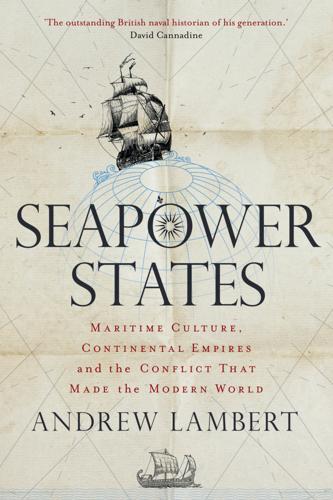
Seapower States: Maritime Culture, Continental Empires and the Conflict That Made the Modern World
by
Andrew Lambert
Published 1 Oct 2018
In 1204 Doge Enrico Dandolo masterminded the diversion of the military forces of the Fourth Crusade, intent on recovering the Holy Land from Islam, to conquer two Christian cities. The Crusaders paid their fare to the East by restoring Zara (near the former city of Zadar) to Venetian control and overthrowing the Byzantine Empire. The Latin Empire, erected on the wreckage of Byzantium, provided Venice with rich hauls of booty, including famous quadrigia installed on the pediment of the Basilica San Marco, fabulous trade privileges and the chance to purchase a chain of island bases linking the Adriatic and the Aegean from Frankish warlords lacking any sense of the sea.
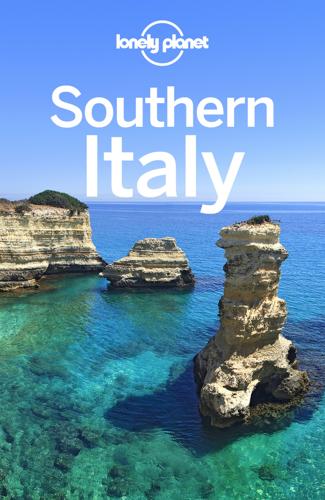
Lonely Planet Southern Italy
by
Lonely Planet
As it was, the Romans admired and emulated Greek culture, the locals in cities like Neapolis (modern-day Naples) continued to speak Greek, and the Via Appia made Puglia the gateway to the East. In AD 245 when Diocletian came to power, he determined that the empire was simply too vast for good governance and split it in two. When Constantine came to power in AD 306, the groundwork was already established for an Eastern (Byzantine) Empire and a Western Empire – in AD 324 he officially declared Constantinople the capital of Nova Roma. With southern Italy’s proximity to the Balkans and the Near East, Puglia and Basilicata were exposed to a new wave of Eastern influence, bringing with it a brand-new set of Christian beliefs. This new wave of influence would officially reach Sicily in AD 535, when the Byzantine general Belisarius landed an army on the island’s shores.

Italy
by
Damien Simonis
Published 31 Jul 2010
* * * In return for formal recognition of the popes’ control of Rome and surrounding Byzantine-held territories henceforth to be known as the Papal States, the popes granted the Carolingian Franks a leading if ill-defined role in Italy and their king, Charlemagne, the title of Holy Roman Emperor. He was crowned by Leo III on Christmas Day 800. The bond between the papacy and the Byzantine Empire was thus broken and political power in what had been the Western Roman Empire shifted north of the Alps, where it would remain for more than 1000 years. The stage was set for a future of seemingly endless struggles. Similarly, Rome’s aristocratic families engaged in battle for the papacy. For centuries, the imperial crown would be fought over ruthlessly and Italy would frequently be the prime battleground.
…
Its art was influenced by the decoration of the Roman catacombs and the early Christian churches, as well as by the Oriental Greek style, with its love of rich decoration and luminous colour. Byzantine artworks de-emphasised the naturalistic aspects of the classical tradition and exalted the spirit over the body, so glorifying God rather than man or the state. In Italy, the Byzantine virtuosity with mosaics was showcased in Ravenna, the capital of the Byzantine Empire’s western regions in the 6th century. Three churches were built or endowed by the Emperor Justinian and his wife Theodora. These churches, with the Chora Church (aka Kariye Müzesi) in Istanbul, are considered to house the very best of Byzantine mosaic art. The hand-cut glazed tiles (tesserae) in Ravenna’s Basilica di Sant’Apollinare in Classe, Basilica di San Vitale and Basilica di Sant’Apollinare Nuovo catch the light, and glint and gleam in the dark church surrounds.
…
Though they depict biblical and other imagery with extraordinary naturalness, they also impart an enormous sense of grandeur and mystery, perhaps hinting that they depict stories and scenes that have an ecclesiastical power much greater than the simple worshipper could ever hope to fully appreciate. Return to beginning of chapter ART IN THE MIDDLE AGES The Italian Middle Ages have often been regarded as simply a ‘dark’ age between the Roman and Byzantine Empires and the Renaissance. However, to ignore this period would make it very difficult to understand all subsequent Italian history. This is because Italy as we know it was born in the Middle Ages. The barbarian invasions of the 5th and 6th centuries began a process that turned a unified empire into a land of small independent city-states, and it was these states — or rather the merchants, princes, clergy, corporations and guilds who lived within them — that started the craze in artistic patronage that was to underpin the great innovations in art and architecture that were to characterise the Renaissance.
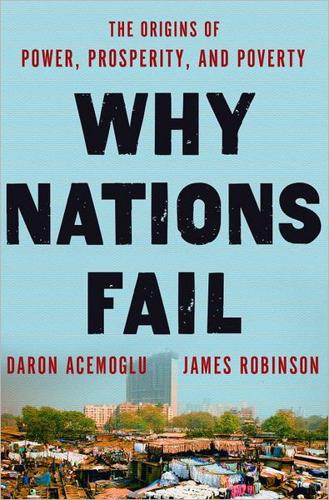
Why Nations Fail: The Origins of Power, Prosperity, and Poverty
by
Daron Acemoglu
and
James Robinson
Published 20 Mar 2012
The power of these states was far weaker, and they were buffeted by a long series of incursions from their peripheries. From the north came the Vikings and Danes in their longboats. From the east came the Hunnic horsemen. Finally, the emergence of Islam as a religion and political force in the century after the death of Mohammed in AD 632 led to the creation of new Islamic states in most of the Byzantine Empire, North Africa, and Spain. These common processes rocked Europe, and in their wake a particular type of society, commonly referred to as feudal, emerged. Feudal society was decentralized because strong central states had atrophied, even if some rulers such as Charlemagne attempted to reconstruct them.

Turing's Cathedral
by
George Dyson
Published 6 Mar 2012
What was important, emphasizes Nicholas, is that “Father believed in the life of the mind.”4 Max installed a private library where John read voraciously while growing up, consuming Wilhelm Oncken’s forty-four-volume Allgemeine Geschichte in Einzeldarstellungen (General History) in its entirety, and citing it in detail, from memory, when asked. He studied the thousand-year span of the Byzantine Empire, a subject that remained with him even as his mathematical abilities evaporated at the end of his life. “Its power and organization fascinated him,” Stan Ulam recalls. According to Herman Goldstine, he “was able on once reading a book or article to quote it back verbatim,” even after a period of years.
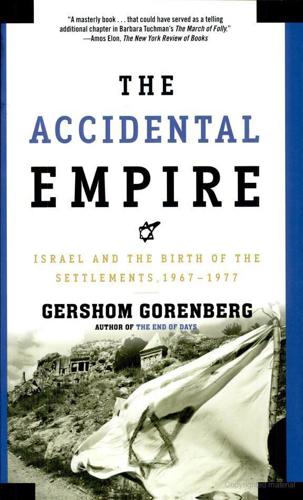
The Accidental Empire: Israel and the Birth of the Settlements, 1967-1977
by
Gershom Gorenberg
Published 1 Jan 2006
See also Ofrah Bab al-Mandeb straits Ball, George Banias Bank of Israel Bar, Carmel Barak, Ehud Barbour, Walworth Bardawil Lagoon Bar-Ilan University Bashan Baumgarten, Albert BBC Bedouin expulsions Beersheba Begin, Menachem background of Likud and Nablus and as prime minister Six-Day War and Beitar Beit Furik Beit Ha’aravah Beit Hashitah belligerent occupation Ben-Ami, Shlomo Ben-David, Ofer Ben-Gurion, David Ben-Meir, Yehuda Ben-Tzvi, Rachel Yana’it Ben-Yehudah, Rafael Benziman, Uzi Berman, Paul Bethlehem Bialik, Haim Naham binational state Bin-Nun, Yoel Bir Zeit College Blue Mountain, The (Shalev) Bnei Akiva youth movement Brezhnev, Leonid British Palestine (British Mandate) Brown, George Bundy, McGeorge Doctrine Bundy, William Byzantine Empire cabinet, Israeli Camp David summit of 2000 Camp Kaddum. See also Elon Moreh settlers; Sebastia settlement bids Carter, Jimmy Chasani, Michael cheap labor issue Clausewitz, Carl von Clinton, Bill Cohen, David Cohen, Geula Cold War colonialism communists, Israeli community settlement Council of Women Workers creating facts Czechoslovakia Dafnah Dahab Davar David, King Davies, Roger Dayan, Moshe advocates holding land for full peace Allon vs.

The Rough Guide to Jerusalem
by
Daniel Jacobs
Published 10 Jan 2000
In 969 05 Jerusalem contexts 265-290.indd 270 18/06/09 2:56 PM Jerusalem was taken over by the Fatimids, a dynasty of Isma’ili Shi’ites who ruled from Egypt before being ousted from Jerusalem by the Seljuk Turks in 1073. The Seljuks, who had swept across Asia and subjugated even the Abbasid caliphs in Baghdad, now threatened the Byzantine Empire, whose ruler Alexius Comnenus appealed to the West for help. Pope Urban II responded by calling the First Crusade to aid Eastern Christendom. In 1099, the Crusaders – or “Franks”, as they were known, since most of them were French – put an end to the first period of Muslim rule, and heralded a Christian Kingdom of Jerusalem, under which the Jewish population were burned alive and its Muslims slaughtered or expelled.

The Aristocracy of Talent: How Meritocracy Made the Modern World
by
Adrian Wooldridge
Published 2 Jun 2021
Shrewsbury, Rugby and Harrow were all founded in the second half of the sixteenth century specifically to provide free educations for local youths.7 THE REVIVAL OF THE POLIS City-states introduced a new principle into a Europe dominated by dynasties and their politics: self-government – or at least government by city oligarchies. The greatest of the city-states was Venice, which was both a maritime trading empire and a northern Italian city-state rolled into one. For a long time, the city was part of the Byzantine empire. The emperor sent his war fleets to protect the city whenever the Franks threatened to encroach, and the local representative of Byzantine power was known by the imperial title of dux (duke). But in the twelfth and thirteenth centuries Venice gradually detached itself from Byzantium; the dux became the doge; and a protectorate became a trading superpower and the richest city in Italy.
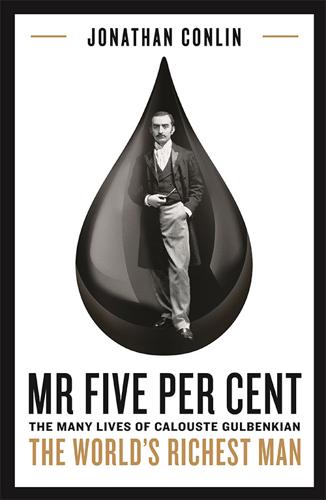
Mr Five Per Cent: The Many Lives of Calouste Gulbenkian, the World's Richest Man
by
Jonathan Conlin
Published 3 Jan 2019
Vart Badrik was the warlord from whom all Gulbenkians claim descent: ‘Gül benk’ is the Turkified version of Vart Badrik, or ‘Rose Lord’. Vart Badrik had ruled the south shore of Lake Van in the eleventh century, when that region formed part of the Armenian principality of Vaspourakan. When Vaspourakan was folded into the Byzantine Empire in 1021, its leading Armenian families and retainers were moved west, to Cappadocia. Though Vart Badrik’s reputation was fearsome, this probably did not give the rather shy and retiring Calouste much by way of schoolyard credibility. ‘Benk’ is close to the Persian word benek, meaning birthmark – uncomfortably close for Calouste, who was duly called ‘spotty-face’ at school.
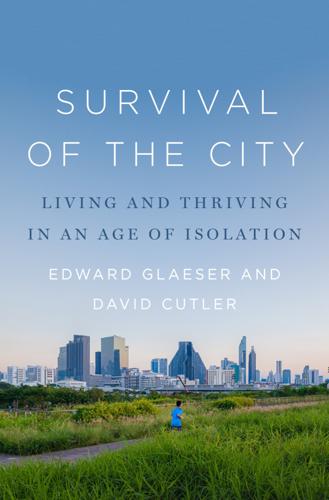
The Survival of the City: Human Flourishing in an Age of Isolation
by
Edward Glaeser
and
David Cutler
Published 14 Sep 2021
Dubrovnik’s picturesque red rooftops and sturdy city walls became famous to millions of Game of Thrones viewers as a stand-in for the city of King’s Landing. But Dubrovnik has greater historical import than as a fictional victim of dragon fire. It successfully linked the East and West for over half a millennium. Dubrovnik’s origins lie in the invasions that overran much of the Byzantine Empire in the wake of Justinian’s plague. Refugees from an older Roman city fled before early Slavic invaders and established a refuge protected by mountains and waterways. As Europe recovered in the centuries after 750, Dubrovnik—or Ragusa, as it was known then—grew as a port. The city remained under the loose control of Byzantium until 1205, and it served as a conduit between the ancient empire and the growing cities of Italy.

Nexus: A Brief History of Information Networks From the Stone Age to AI
by
Yuval Noah Harari
Published 9 Sep 2024
.: Cambridge University Press, 2009), 143–70; Uta-Renate Blumenthal, “Canossa and Royal Ideology in 1077: Two Unknown Manuscripts of De penitentia regis Salomonis,” Manuscripta 22, no. 2 (1978): 91–96. 105. Thomas F. X. Noble, “Iconoclasm, Images, and the West,” in A Companion to Byzantine Iconoclasm, ed. Mike Humphreys (Leiden: Brill, 2021), 538–70; Marie-France Auzépy, “State of Emergency (700–850),” in The Cambridge History of the Byzantine Empire, c. 500–1492, ed. Jonathan Shepard (Cambridge, U.K.: Cambridge University Press, 2010), 249–91; Mike Humphreys, introduction to A Companion to Byzantine Iconoclasm, ed. Mike Humphreys (Leiden: Brill, 2021), 1–106. 106. Theophanes, Chronographia, AM 6211, cited in Roman Cholij, Theodore the Stoudite: The Ordering of Holiness (New York: Oxford University Press, 2002), 12. 107.
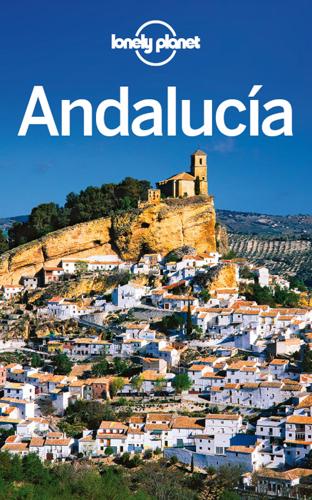
Lonely Planet Andalucia: Chapter From Spain Travel Guide
by
Lonely Planet
Published 31 May 2012
One group, the Visigoths, took over the Iberian Peninsula in the 6th century, with Toledo, in central Spain, as their capital. The long-haired Visigoths, numbering about 200,000, had little culture of their own and their precarious rule over the relatively sophisticated Hispano-Romans was undermined by strife among their own nobility. Andalucía was an outpost of the Byzantine empire from 552 to 622 but then came under Visigothic sway. Heartland of Moorish Spain Following the death of the prophet Mohammed in 632, Arabs carried Islam through the Middle East and North Africa. Legend has it they were ushered onto the Iberian Peninsula by the sexual exploits of the last Visigothic king, Roderic.
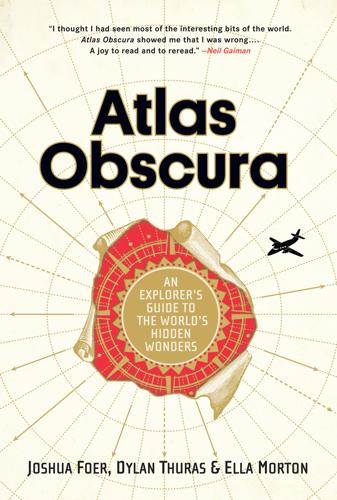
Atlas Obscura: An Explorer's Guide to the World's Hidden Wonders
by
Joshua Foer
,
Dylan Thuras
and
Ella Morton
Published 19 Sep 2016
The dance is performed each year on June 3, the feast day of saints Constantine and Helena. 42.087878 24.729355 The Madara Rider MADARA, SHUMEN The Madara Rider is a stone carving depicting a warrior on horseback plunging a spear into a lion as a dog nips at the horse’s rear hooves. It is modest in detail, but remarkable considering that the 8-foot-6-inch-tall (2.6 m) relief is located seven stories above the ground on a nearly vertical cliff and was carved nearly 1,300 years ago. Bulgaria was a newly established state enjoying a rare period of peace with the Byzantine Empire after a series of territorial clashes. Byzantium had just deposed its emperor, Justinian II, exiling him and cutting off his nose. Enraged, Justinian II struck a deal with Tervel, the Bulgarian emperor. Tervel would provide 15,000 Bulgarian horsemen to help Justinian II storm Constantinople and retake the throne in exchange for gifts, land, and Justinian’s daughter’s hand in marriage.

Fodor's Essential Israel
by
Fodor's Travel Guides
Published 2 Aug 2023
s Sights Bible Lands Museum HISTORY MUSEUM | FAMILY | Most archaeological museums group artifacts according to their place of origin, but the curators here favor a chronological display, seeking cross-cultural influences within any given era. The exhibits cover more than 6,000 years—from the prehistoric Neolithic period (Late Stone Age) to that of the Byzantine Empire—and sweep geographically from Afghanistan to Sudan. Rare clay vessels, fertility idols, cylinder seals, ivories, and sarcophagi fill the soaring, naturally lighted galleries. Look for the ancient Egyptian wooden coffin, in a stunning state of preservation. Plan on an hour to see the permanent exhibition—a guided tour will enhance the experience—and check out the temporary exhibitions downstairs.

Sweden Travel Guide
by
Lonely Planet
Initial hit-and-run raids along the European coast were followed by major military expeditions, settlement and trade. The well-travelled Vikings settled part of the Slavic heartland, giving it the name ‘Rus,’ and ventured as far as Newfoundland, Constantinople (modern-day Istanbul) and Baghdad, setting up trade with the Byzantine Empire. Christianity only took hold when Sweden’s first Christian king, Olof Skötkonung (c 968–1020), was baptised. By 1160, King Erik Jedvarsson (Sweden’s patron saint, St Erik) had virtually destroyed the last remnants of paganism. Top Five World Heritage Sites in Sweden Hanseatic town of Visby Naval port of Karlskrona Gammelstad church village, Luleå Höga Kusten Laponia Rise of the Swedish State By the 13th century, royal power disintegrated over succession squabbles between the Erik and Sverker families, with medieval statesman Birger Jarl (1210–66) rising to fill the gap.
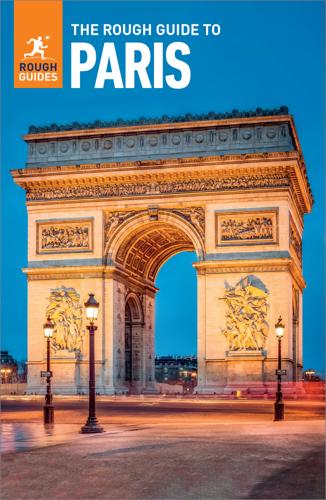
The Rough Guide to Paris
by
Rough Guides
Published 1 May 2023
Though damaged in the Revolution, during which it was used as a flour warehouse, it was sensitively restored in the mid–nineteenth century, and remains one of the finest achievements of French High Gothic, renowned for its exquisite stained-glass windows. It was built by Louis IX between 1242 and 1248 to house a collection of holy relics bought at an extortionate price – far more than it cost to build the Sainte-Chapelle – from the bankrupt Byzantine Empire. The Relics of Sainte-Chapelle – the Holy Crown of Thorns, fragments of the True Cross and a nail of the Crucifixion – were moved to Notre-Dame in the early 19th-century. Fortunately, they were rescued from the devastating fire (see page 63). At the time of writing the relics are not on public display.
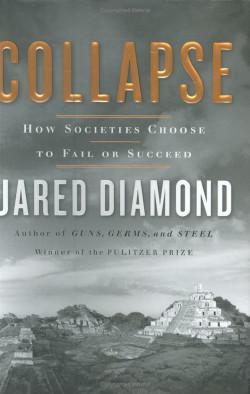
Collapse
by
Jared Diamond
Published 25 Apr 2011
Vikings from different parts of Scandinavia went raiding in different directions. Those from the area of modern Sweden, termed Varangians, sailed east into the Baltic Sea, navigated up rivers flowing from Russia into the Baltic, continued south to reach the heads of the Volga and other rivers flowing into the Black Sea and Caspian Sea, traded with the rich Byzantine Empire, and founded the principality of Kiev that became the forerunner of the modern Russian state. Vikings from modern Denmark sailed west to the coast of northwest Europe and the east coast of England, found their way up the Rhine and Loire rivers, settled at their mouths and in Normandy and Brittany, established the Danelaw state in eastern England and the Duchy of Normandy in France, and rounded the Atlantic coast of Spain to enter the Mediterranean at the Straits of Gibraltar and raid Italy.
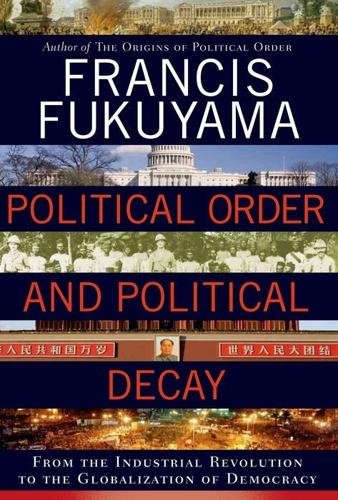
Political Order and Political Decay: From the Industrial Revolution to the Globalization of Democracy
by
Francis Fukuyama
Published 29 Sep 2014
The result was huge movements of populations as various minority groups were forced out of the new would-be nation-states or traded for minorities in neighboring countries. Thus the mixed Greek and Turkish populations in Asia Minor and the eastern Aegean who had lived side by side since the time of the Byzantine Empire sorted themselves out during the Greek-Turkish War of 1919–1922. World War II was triggered, in some sense, by stranded populations such as the Sudeten Germans in Czechoslovakia and the Baltic Germans in Poland. The end of the war in 1945 saw massive transfers of populations (as well as substantial redrawing of borders) among Germany, Poland, Ukraine, Czechoslovakia, and other countries.
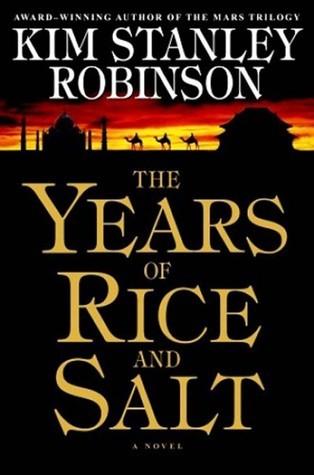
The Years of Rice and Salt
by
Kim Stanley Robinson
Published 2 Jun 2003
He felt the shape of his travels in his mind, and found he could not remember enough of the last few weeks to be sure of his location, relative to the Moravian Gate, or the khanate of the Golden Horde. From the Black Sea they had ridden west about ten days' ride, hadn't they? It was like trying to remember things from a previous life. It seemed possible, however, that he was nearing the Byzantine empire, coming towards Constantinople from the north and west. Sitting slumped before his nightly bonfire, he wondered if Constantinople would be dead too. He wondered if Mongolia was dead, if perhaps everyone in the world was dead. The wind soughed through the shrubs like ghosts' voices, and he fell into an uneasy sleep, waking through the watches of the night to check the stars and throw more branches on his fire.
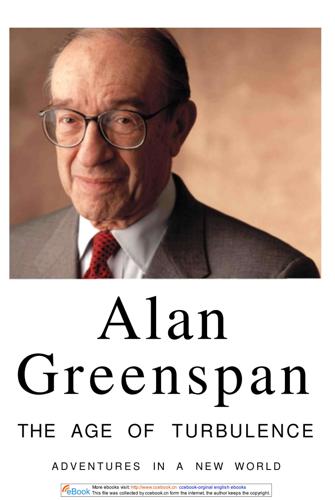
The Age of Turbulence: Adventures in a New World (Hardback) - Common
by
Alan Greenspan
Published 14 Jun 2007
Our notion had been to wander and do things completely spontaneously. And while that doesn't really happen when you are traveling with a security detail, we came close. We ate at open-air cafes, went shopping, and toured churches and the old Jewish ghetto. For centuries, the Venetian city-state was the center of world trade, linking Western Europe with the Byzantine Empire and the rest of the known world. After the Renaissance, trade routes shifted to the Atlantic, and Venice declined as a sea power. Yet throughout the 1700s, it remained Europe's most graceful city, a center of literature, architecture, and art. "What news on the Rialto?" the famous line from The Merchant of Venice referring to the commercial heart of the city, still strikes a vibrant cosmopolitan note.

Designing Data-Intensive Applications: The Big Ideas Behind Reliable, Scalable, and Maintainable Systems
by
Martin Kleppmann
Published 17 Apr 2017
Gray: “Notes on Data Base Operating Systems,” in Operating Systems: An Advanced Course, Lecture Notes in Computer Science, volume 60, edited by R. Bayer, R. M. Graham, and G. Seegmüller, pages 393–481, Springer-Verlag, 1978. ISBN: 978-3-540-08755-7 [79] Brian Palmer: “How Complicated Was the Byzantine Empire?,” slate.com, Octo‐ ber 20, 2011. [80] Leslie Lamport: “My Writings,” research.microsoft.com, December 16, 2014. This page can be found by searching the web for the 23-character string obtained by removing the hyphens from the string allla-mport-spubso-ntheweb. [81] John Rushby: “Bus Architectures for Safety-Critical Embedded Systems,” at 1st International Workshop on Embedded Software (EMSOFT), October 2001. [82] Jake Edge: “ELC: SpaceX Lessons Learned,” lwn.net, March 6, 2013. [83] Andrew Miller and Joseph J.
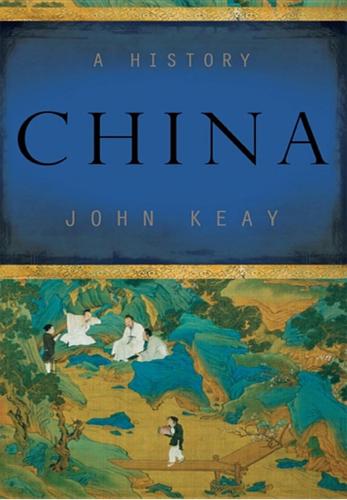
China: A History
by
John Keay
Published 5 Oct 2009
Contact with maritime Asia through the seaports of the south, which were now restored to the empire, was about to be complemented by throwing wide the western ‘Jade Gate’ into central Asia. Turkestan, Tibet and Persia, no less than Vietnam, Korea and Japan, would fall within the Tang perspective and loom large in imperial policy-making. Still farther afield in India and the Byzantine empire, the political, cultural and productive preeminence of Tang China gained widespread acceptance. Its tolerance of alien belief systems and its enthusiasm for foreign craftsmanship and performances brought a cosmopolitan dimension to urban life. Society savoured the exotic; artists showed a willingness to experiment.
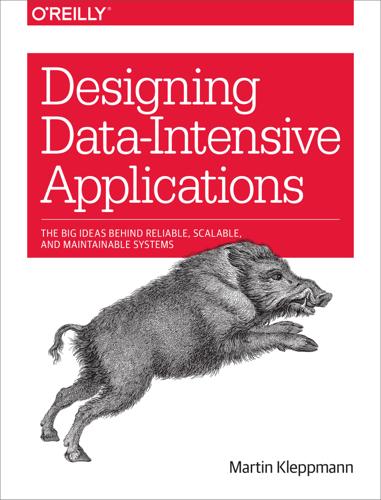
Designing Data-Intensive Applications: The Big Ideas Behind Reliable, Scalable, and Maintainable Systems
by
Martin Kleppmann
Published 16 Mar 2017
Gray: “Notes on Data Base Operating Systems,” in Operating Systems: An Advanced Course, Lecture Notes in Computer Science, volume 60, edited by R. Bayer, R. M. Graham, and G. Seegmüller, pages 393–481, Springer-Verlag, 1978. ISBN: 978-3-540-08755-7 [79] Brian Palmer: “How Complicated Was the Byzantine Empire?,” slate.com, October 20, 2011. [80] Leslie Lamport: “My Writings,” research.microsoft.com, December 16, 2014. This page can be found by searching the web for the 23-character string obtained by removing the hyphens from the string allla-mport-spubso-ntheweb. [81] John Rushby: “Bus Architectures for Safety-Critical Embedded Systems,” at 1st International Workshop on Embedded Software (EMSOFT), October 2001
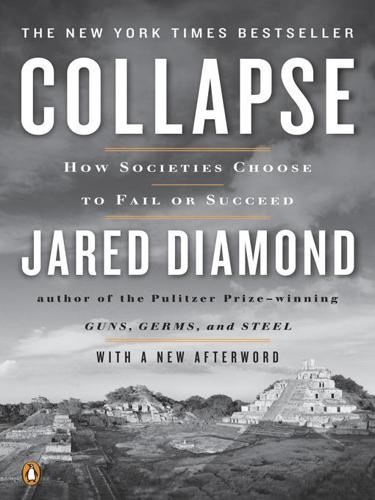
Collapse: How Societies Choose to Fail or Succeed
by
Jared Diamond
Published 2 Jan 2008
Vikings from different parts of Scandinavia went raiding in different directions. Those from the area of modern Sweden, termed Varangians, sailed east into the Baltic Sea, navigated up rivers flowing from Russia into the Baltic, continued south to reach the heads of the Volga and other rivers flowing into the Black Sea and Caspian Sea, traded with the rich Byzantine Empire, and founded the principality of Kiev that became the forerunner of the modern Russian state. Vikings from modern Denmark sailed west to the coast of northwest Europe and the east coast of England, found their way up the Rhine and Loire rivers, settled at their mouths and in Normandy and Brittany, established the Danelaw state in eastern England and the Duchy of Normandy in France, and rounded the Atlantic coast of Spain to enter the Mediterranean at the Straits of Gibraltar and raid Italy.
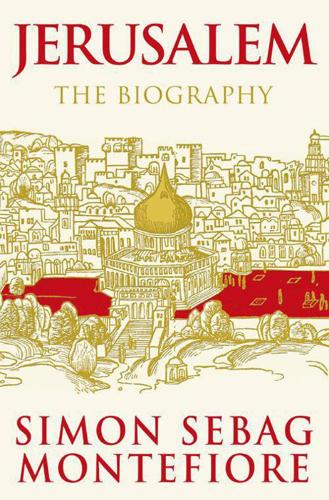
Jerusalem: The Biography
by
Simon Sebag-Montefiore
Published 27 Jan 2011
Early armies at Yarmuk and al-Qadisiyah, only 30,000 men, power of religious propaganda and motivation: Ibn Khaldun 126. Development of title khalifa: Ibn Khaldun 180. Omar takes title Commander of the Faithful: Kennedy, Conquests 54-6 and 72-5. Barnaby Rogerson, The Heirs of the Prophet Muhammad and the Roots of the Sunni-Shia Schism (henceforth Rogerson) 83, 128-9, 169. Omar takes Palestine, Byzantine empire, weaknesses, plague, poverty: Kennedy, Conquests, 142-98; settlement of Palestine and Iraq 95-7; Amr al-As 46-51 and 70-3; Khalid bin Walid 70-3. Yaqubi, History 2.160-70, and al-Baladhuri, Conquest of the Countries, quoted in Peters, Jerusalem 176-7. Defeat of Byzantines: Runciman 1.15 Khalid in command at Damascus and Yarmuk: Kennedy, Conquests 75-89.

Lonely Planet Morocco (Travel Guide)
by
Lonely Planet
,
Paul Clammer
and
Paula Hardy
Published 1 Jul 2014
Located on a peninsula jutting out into the Mediterranean, it offers a compact dose of fantastic architecture, interesting museums, excellent food, a relaxing maritime park and bracing nature walks, with A-plus traveller support at every turn. The city is particularly beautiful at night, a skyline of artfully lit buildings and bursting palms. Ceuta served as one of the Roman Empire’s coastal bases (its Arabic name, Sebta, stems from the Latin Septem ). After a brief stint under the control of the Byzantine Empire, the city was taken in AD 931 by the Arab rulers of Muslim Spain – the basis for Spain’s claim of historical rights to the land. For the next 500 years, however, this city at the tip of Africa was a prized possession, fought over and ruled successively by Spanish princes, Moroccan sultans and Portuguese kings.

The 9/11 Wars
by
Jason Burke
Published 1 Sep 2011
Equally, as Professor Efraim Karsh, head of Middle East and Mediterranean Studies at King’s College, London, pointed out in an editorial in the New York Times in February 2010: ‘Even during the Crusades, the supposed height of the “clash of civilizations”, Christian and Muslim rulers freely collaborated across the religious divide, often finding themselves aligned with members of the rival religion against their co-religionists. While the legendary Saladin himself was busy eradicating the Latin Kingdom of Jerusalem, for example, he was closely aligned with the Byzantine Empire, the foremost representative of Christendom’s claim to universalism.’ ‘Muslims won’t play together’, New York Times, February 28, 2010. 5. The terms above are clearly both ethnic and religious, and the emphasis on which quality is seen as definitive has also evolved. 6. Shakespeare’s depiction of the ‘Moor’, like his depiction of the Jew, tends to be complex, sensitive and often, for the period, sympathetic. 7.
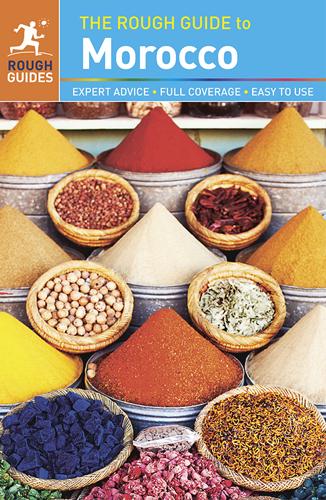
The Rough Guide to Morocco
by
Rough Guides
Meanwhile, as the Roman Empire crumbled, Germanic tribes from the east moved in to take over its territories. One of these tribes, the Vandals under King Gaiseric, invaded Roman Mauretania in 429 AD, and remained its rulers until 533, when the Byzantine general Belisarius defeated them and laid claim to the Maghreb for Byzantium’s Emperor Justinian. Since the Byzantine Empire was a continuation of the Roman Empire in the east, this marked a kind of return to Roman rule. The arrival of Islam Within thirty years of its foundation (in 622 AD, when the Prophet Mohammed moved with his followers from Mecca to Medina), Islam had established itself in the Maghreb at Kairouan in present-day Tunisia, but westward expansion was slowed by Algeria’s Berbers – mainly pagans but including communities of Christians and Jews – who put up a strong and unusually unified resistance to Arab control.
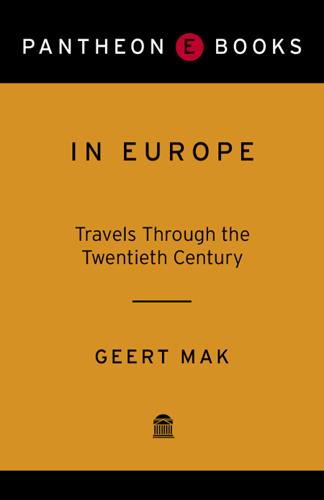
In Europe
by
Geert Mak
Published 15 Sep 2004
On the western side of that line people drink espresso or filtered coffee, they observe Christmas on 25 December, they are influenced – usually without knowing it – by scholasticism and humanism, they have been through the Reformation, the Renaissance and the Enlightenment and they have experienced democracy and a rule of constitutional law – although in some countries this is still quite fresh and new. On the eastern side of it people drink coffee with grounds in the bottom of the cup, they celebrate Christmas by the Orthodox calendar or don't celebrate it at all, and most of them have lived for centuries under the yoke of the Byzantine Empire and other more or less absolutist regimes. Huntington's view is shared – sometimes openly, more often tacitly – by most Western Europeans and their leaders. Yet there are also other voices to be heard. One can wonder, after all, whether there is any sense at all to the discussion concerning ‘European identity’, whether it is not in fact diametrically opposed to the entire history of the ‘European concept’.
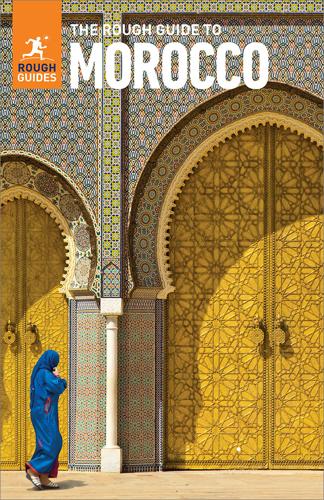
The Rough Guide to Morocco (Travel Guide eBook)
by
Rough Guides
Published 23 Mar 2019
Meanwhile, as the Roman Empire crumbled, Germanic tribes from the east moved in to take over its territories. One of these tribes, the Vandals under King Gaiseric, invaded Roman Mauretania in 429 AD, and remained its rulers until 533, when the Byzantine general Belisarius defeated them and laid claim to the Maghreb for Byzantium’s Emperor Justinian. Since the Byzantine Empire was a continuation of the Roman Empire in the east, this marked a kind of return to Roman rule. The arrival of Islam Within thirty years of its foundation (in 622 AD, when the Prophet Mohammed moved with his followers from Mecca to Medina), Islam had established itself in the Maghreb at Kairouan in present-day Tunisia, but westward expansion was slowed by Algeria’s Berbers – mainly pagans but including communities of Christians and Jews – who put up a strong and unusually unified resistance to Arab control.
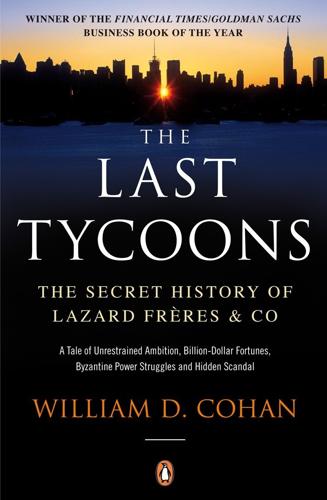
The Last Tycoons: The Secret History of Lazard Frères & Co.
by
William D. Cohan
Published 25 Dec 2015
There'd be a leather couch with its seams split open and a threadbare tan carpet and a dead palm tree that stayed there for at least five or six years. Charming." Soon enough she received the requisite advice from one of the old-time partners--in her case, Fred Wilson--about how to survive at Lazard: "Fred comes in and he lectures me, 'You know you have to understand life here, Mina, you're in the Byzantine empire and they were all in training. They're all baby barracudas. Felix is the biggest barracuda, but everybody's a baby barracuda. You gotta learn to swim. Then just remember, in the hallways you can survive anything but a direct hit. Learn to dodge.'" And her reaction to this advice? "Oh, shit," she thought, "what have I gotten myself into?
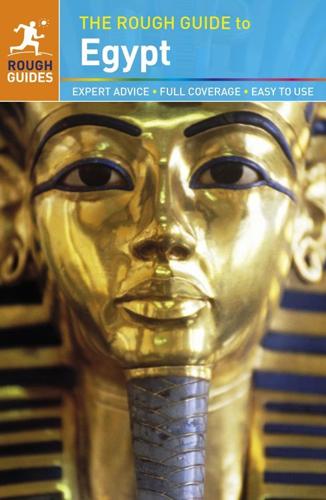
The Rough Guide to Egypt (Rough Guide to...)
by
Dan Richardson
and
Daniel Jacobs
Published 1 Feb 2013
The upper floor Upstairs, mother-of-pearl-inlaid doors and mashrabiyas precede Coptic stelae and friezes carved with lions, sheep or grapevines, followed by icons, priestly garments and accoutrements. The Islamic artefacts include sashes and capes of Persian or Turkish origin, gold coins minted under the Fatimid and Byzantine empires and Mamluke and Ottoman weaponry. A final room entitled “Alexandria in the Twenty-First Century” juxtaposes photos of colonial street scenes and a satellite view of the city with tableware, jewellery and medals from King Farouk’s collection. Look out for the life-size silver fish with a flexible body.